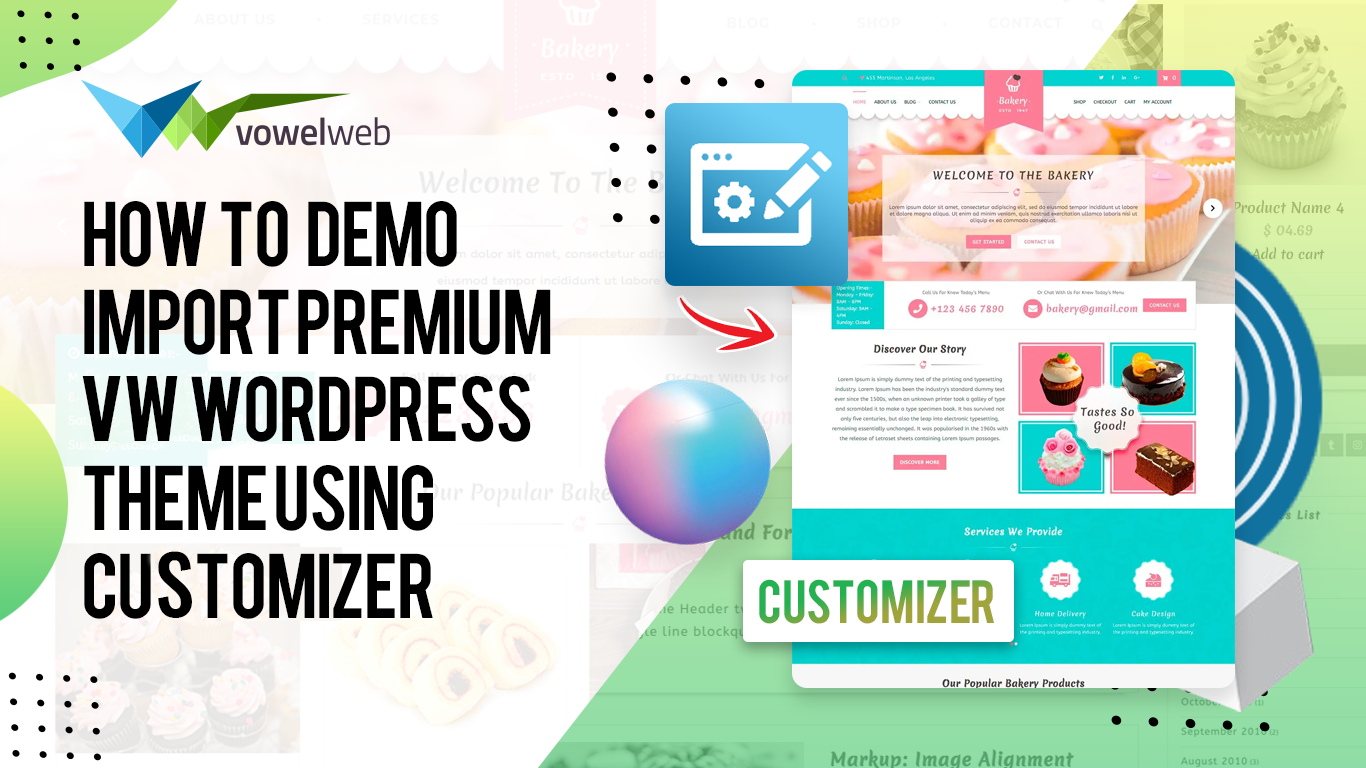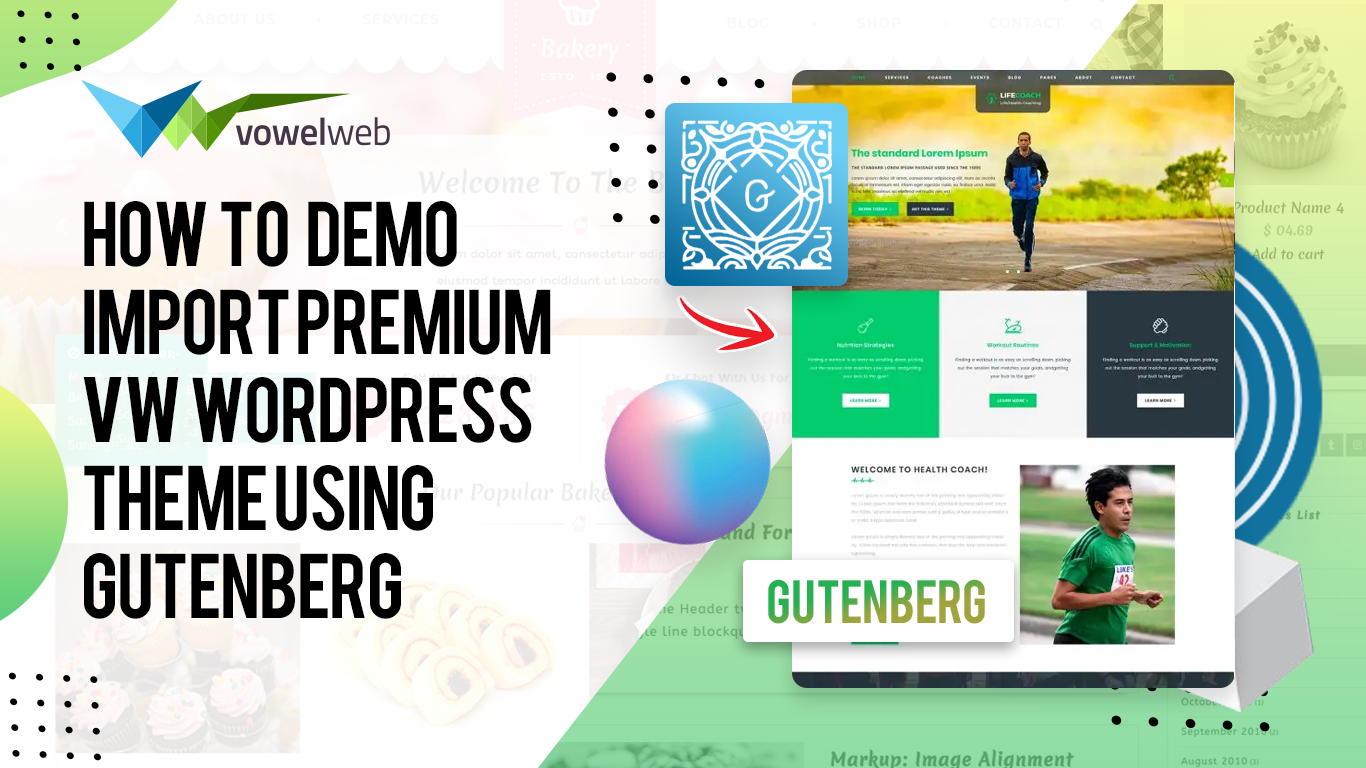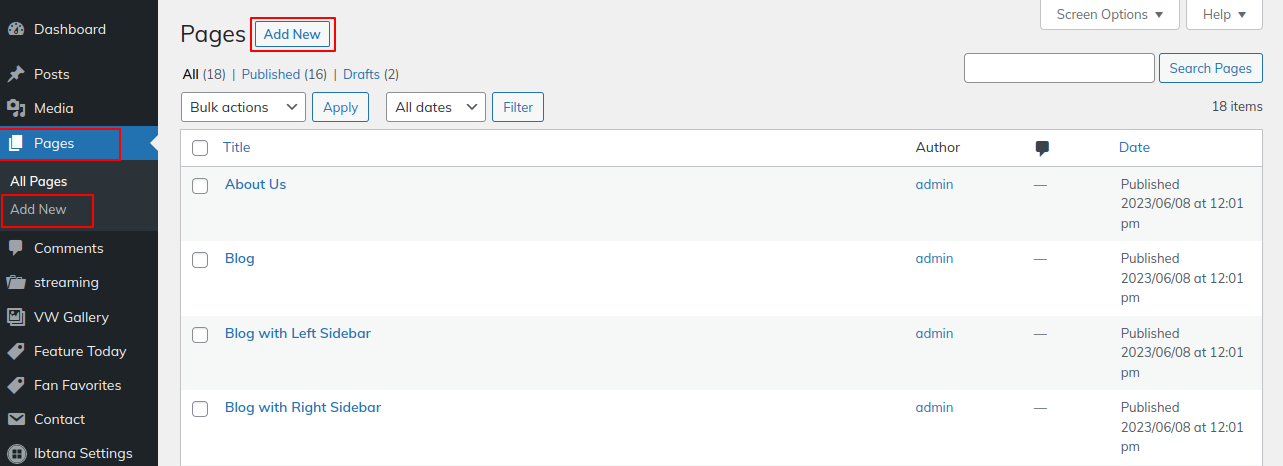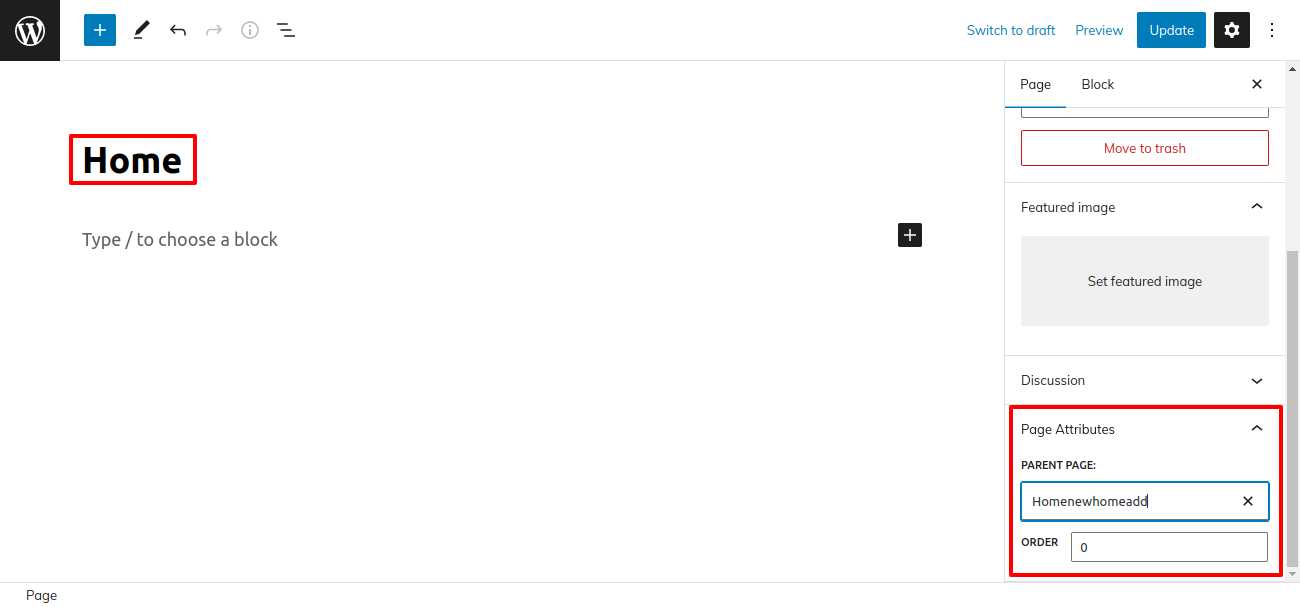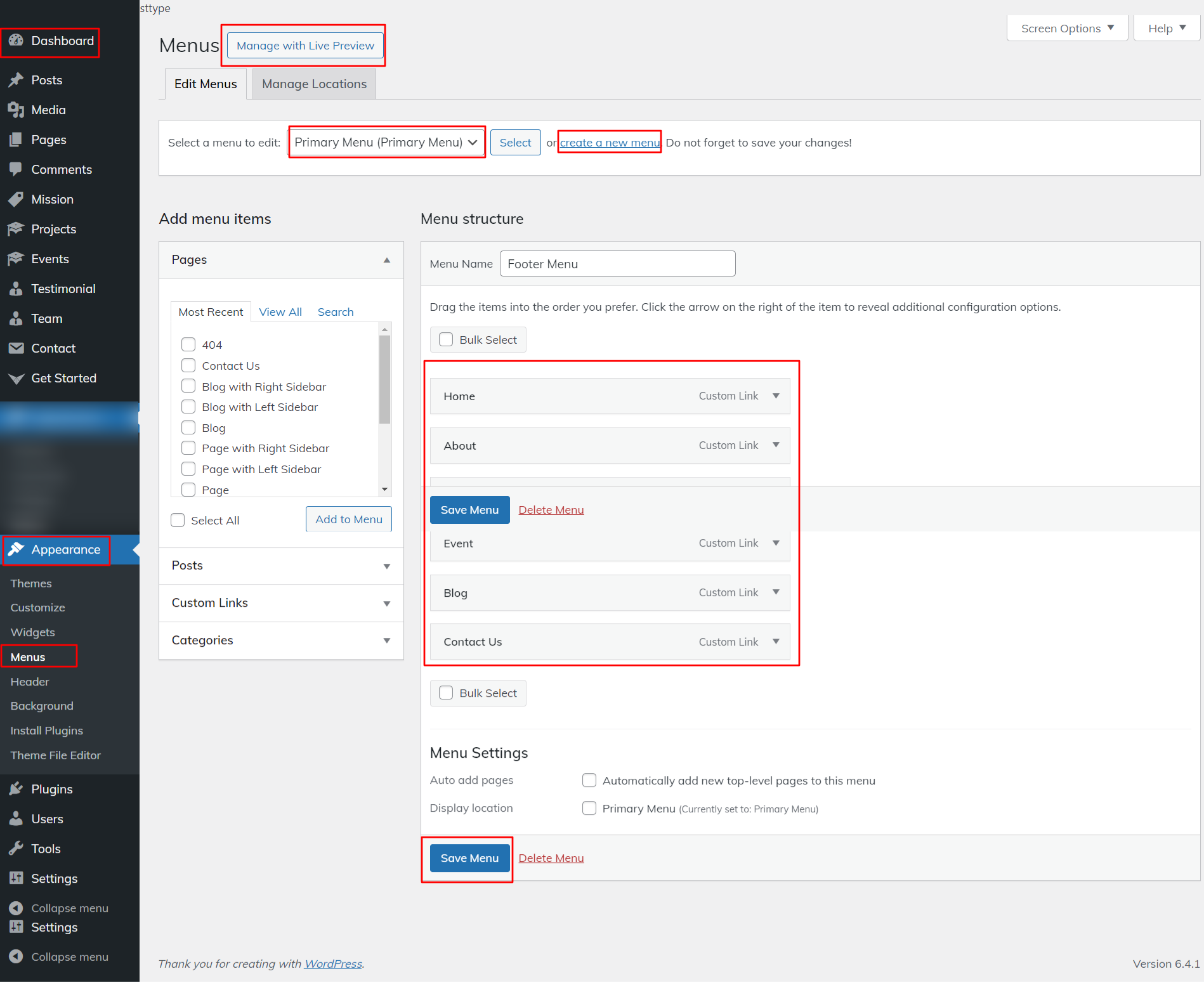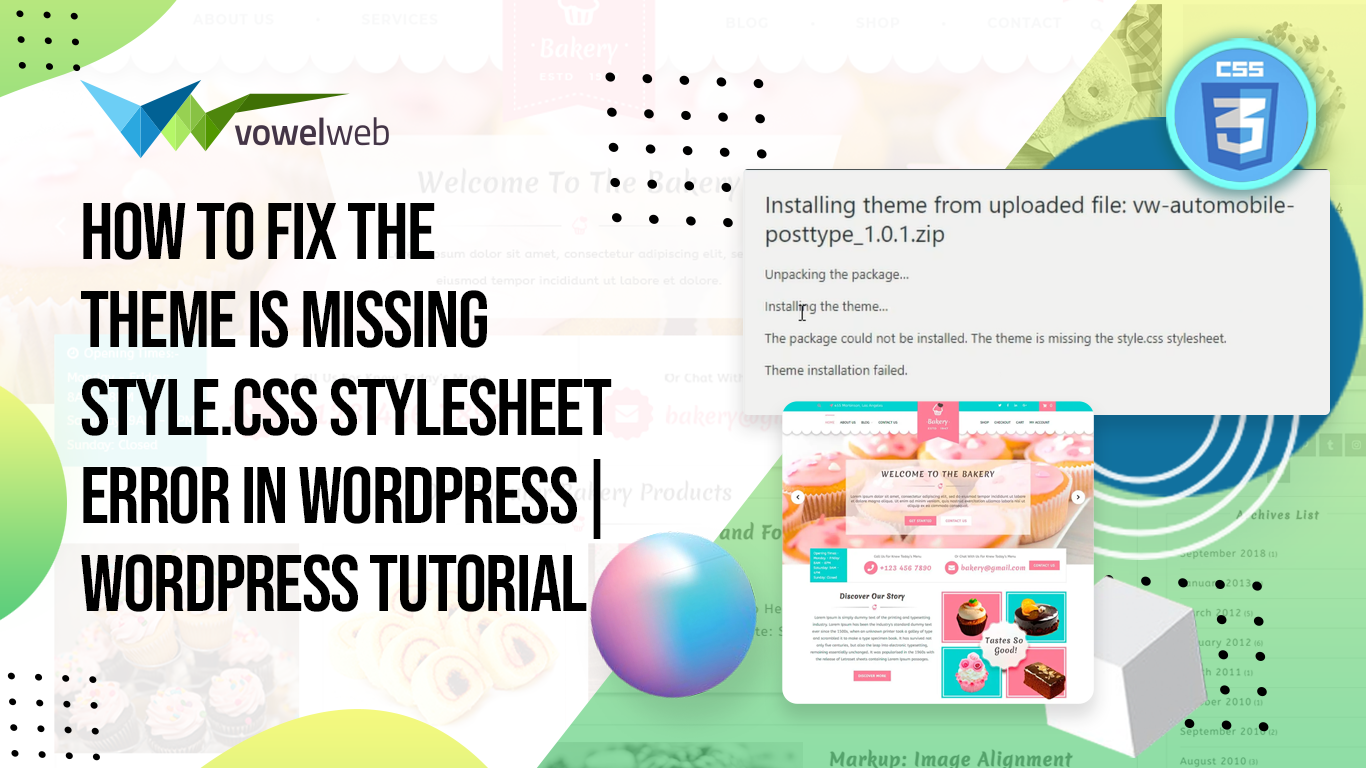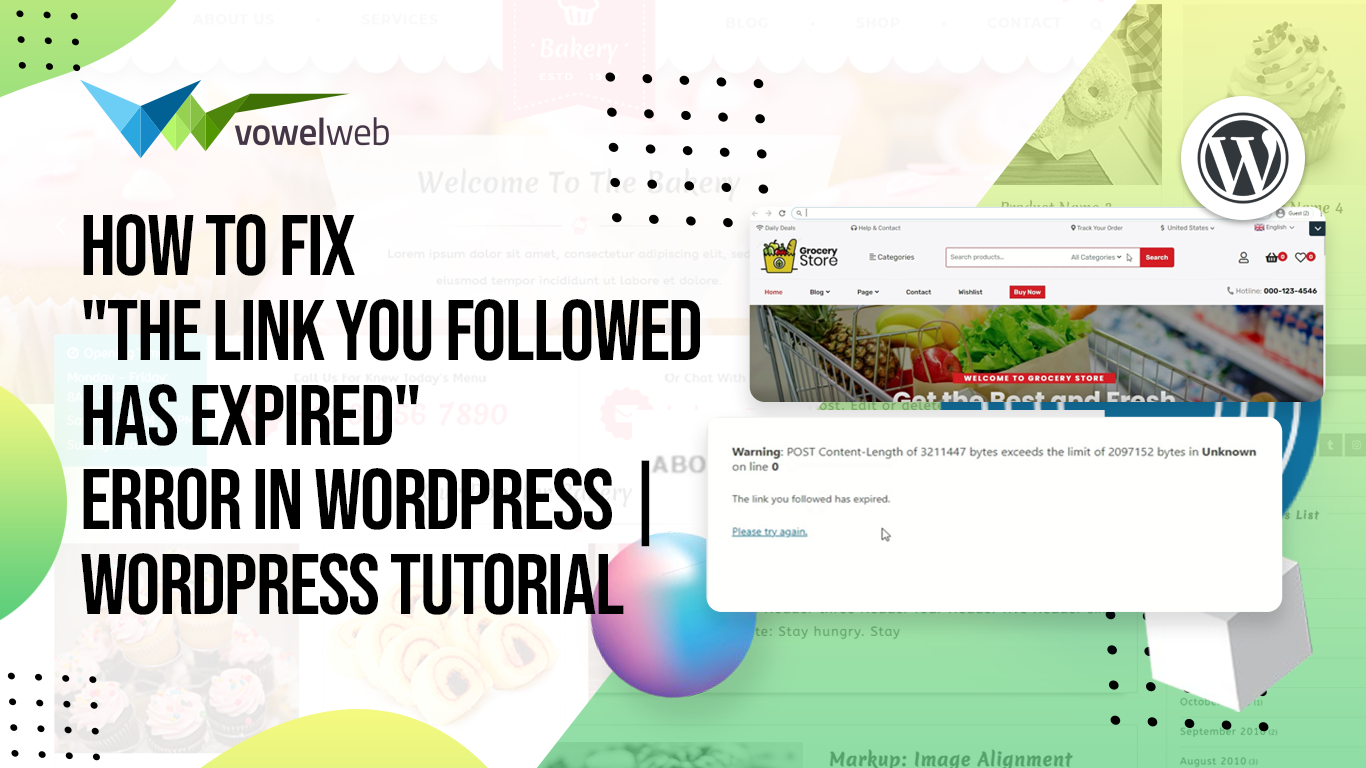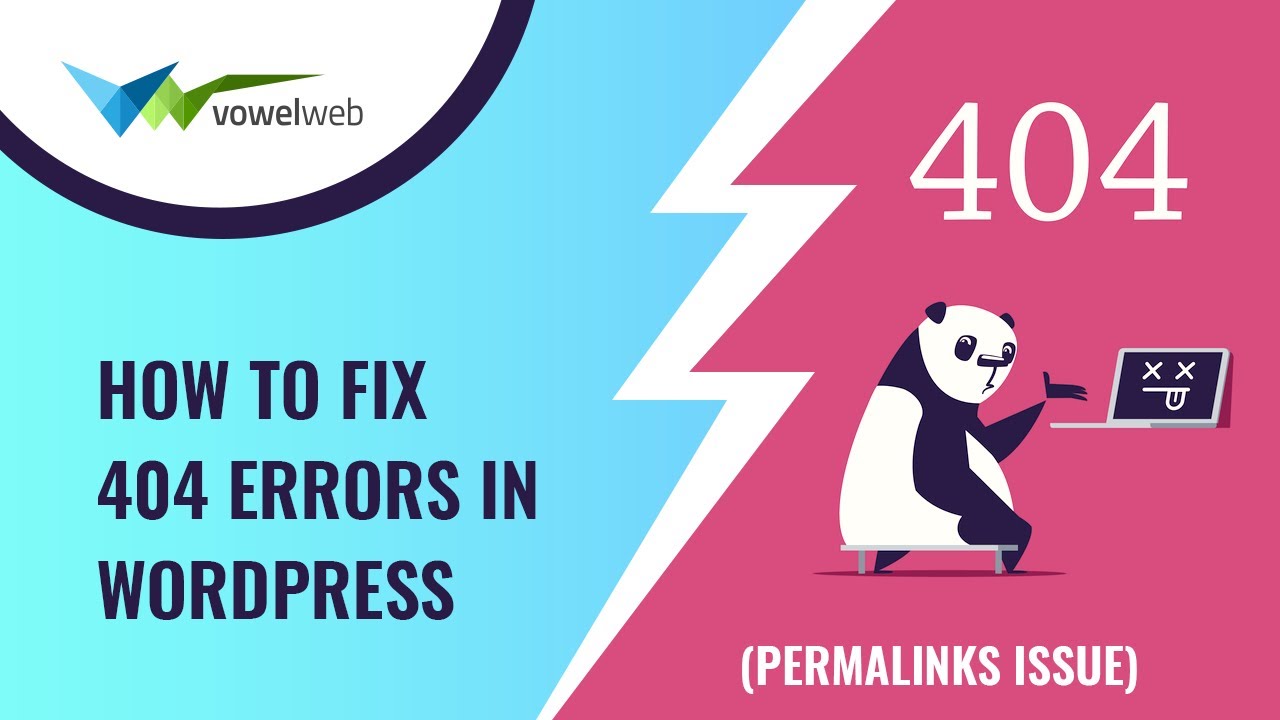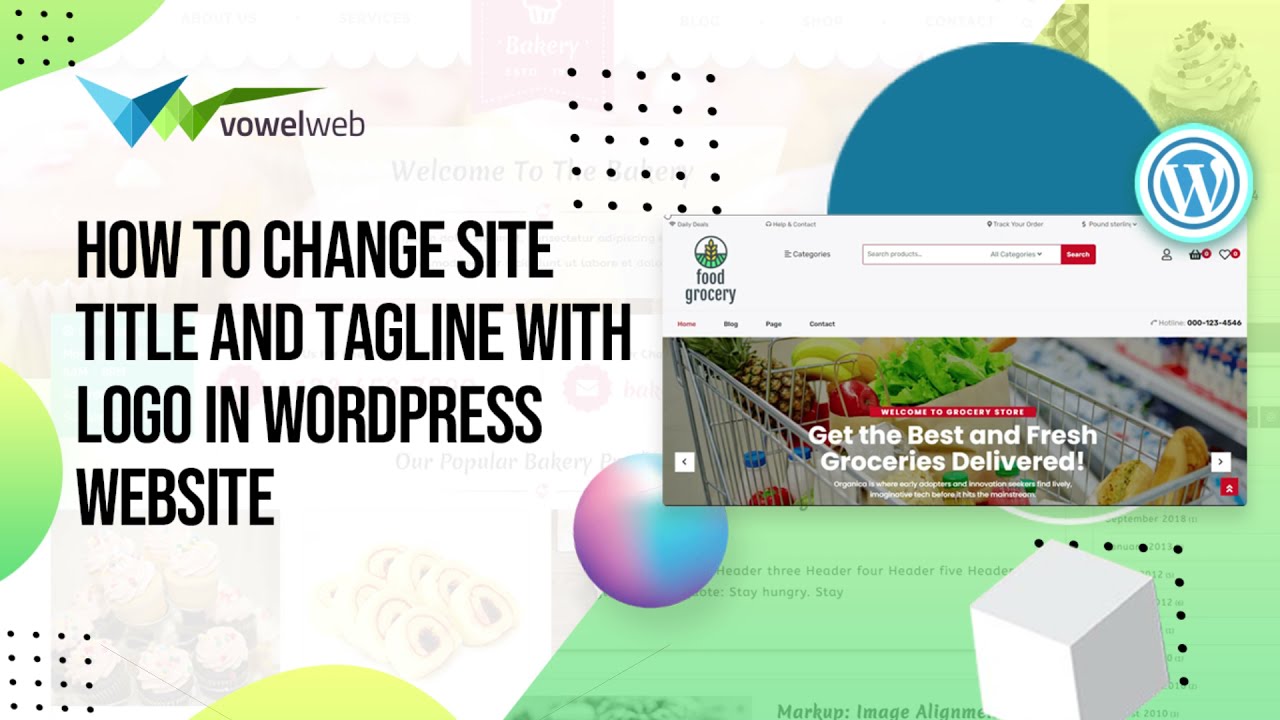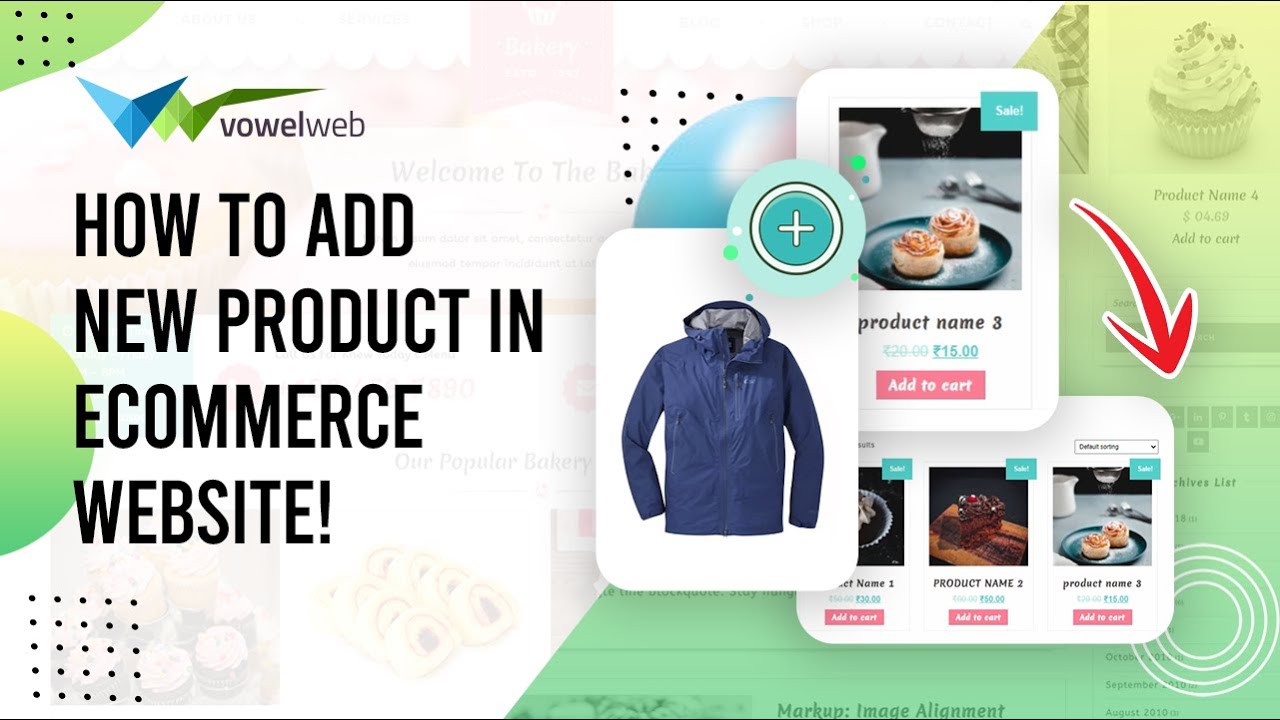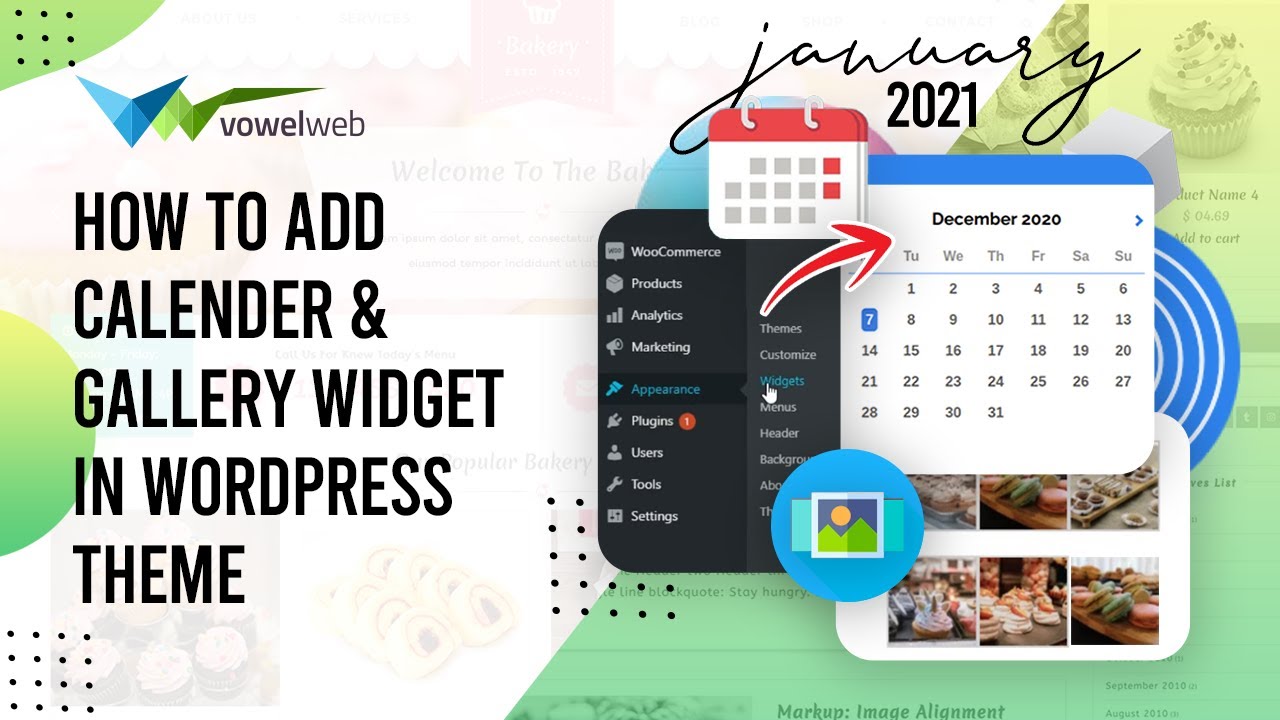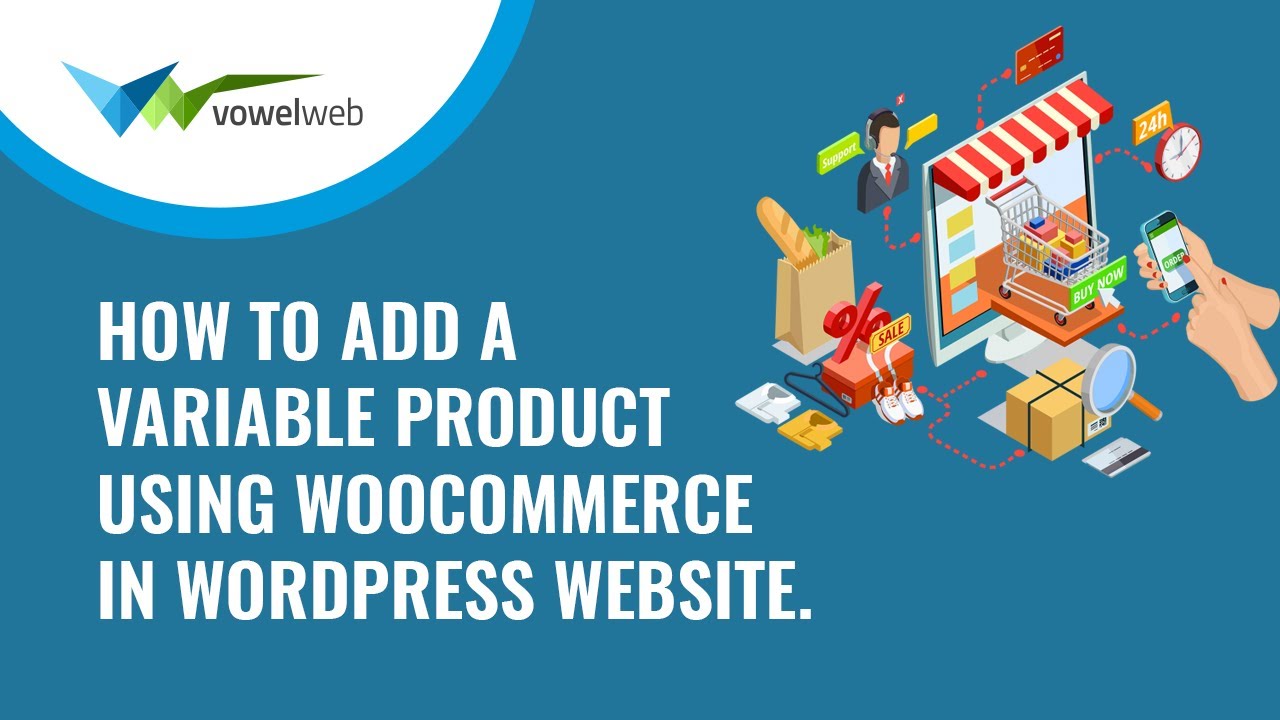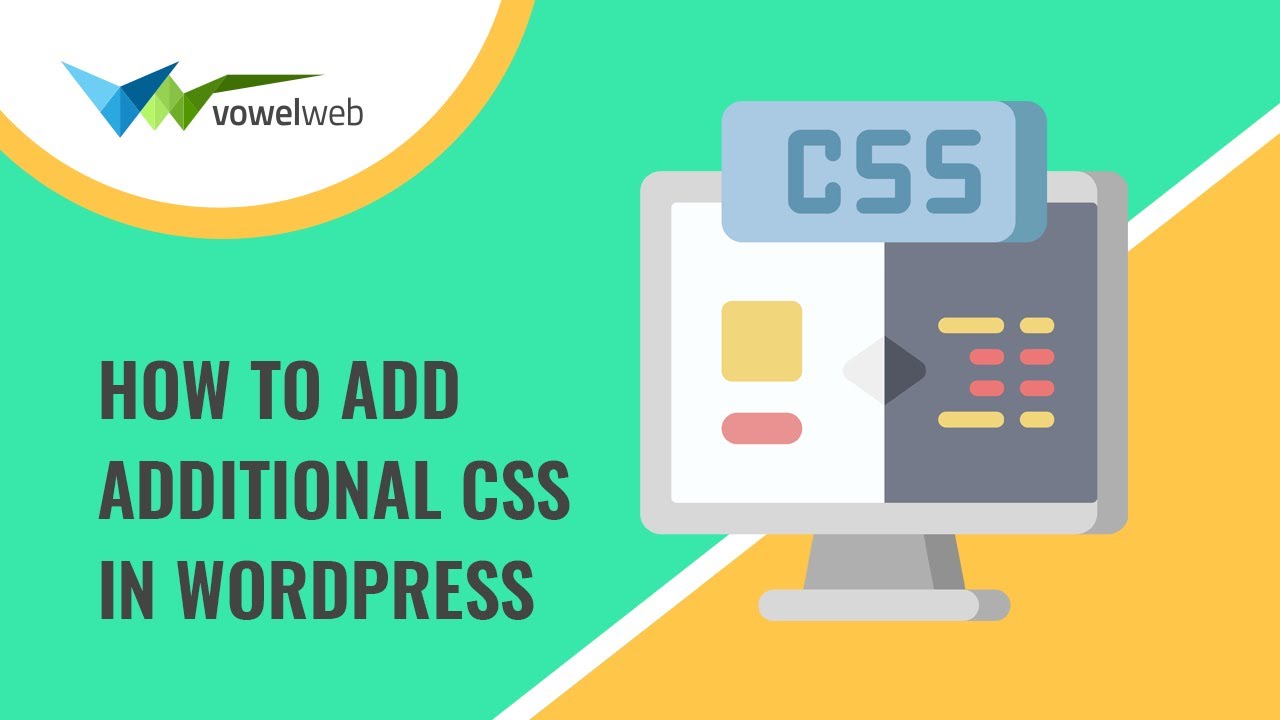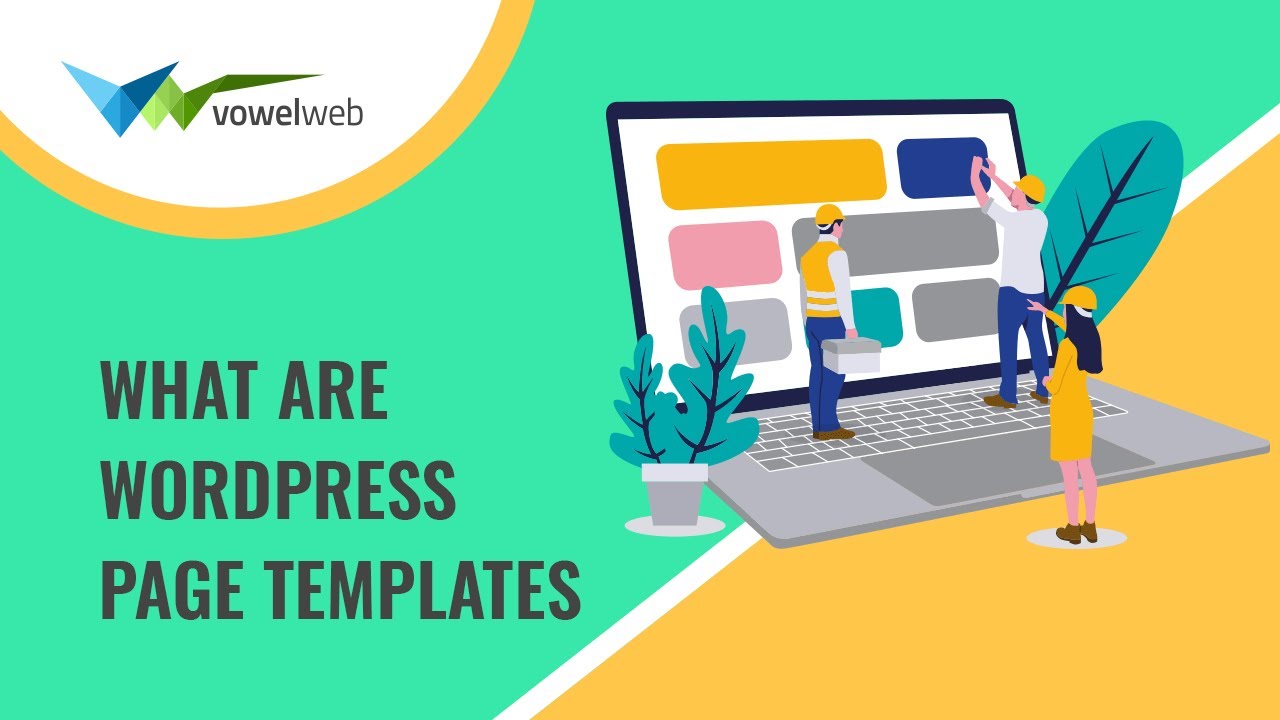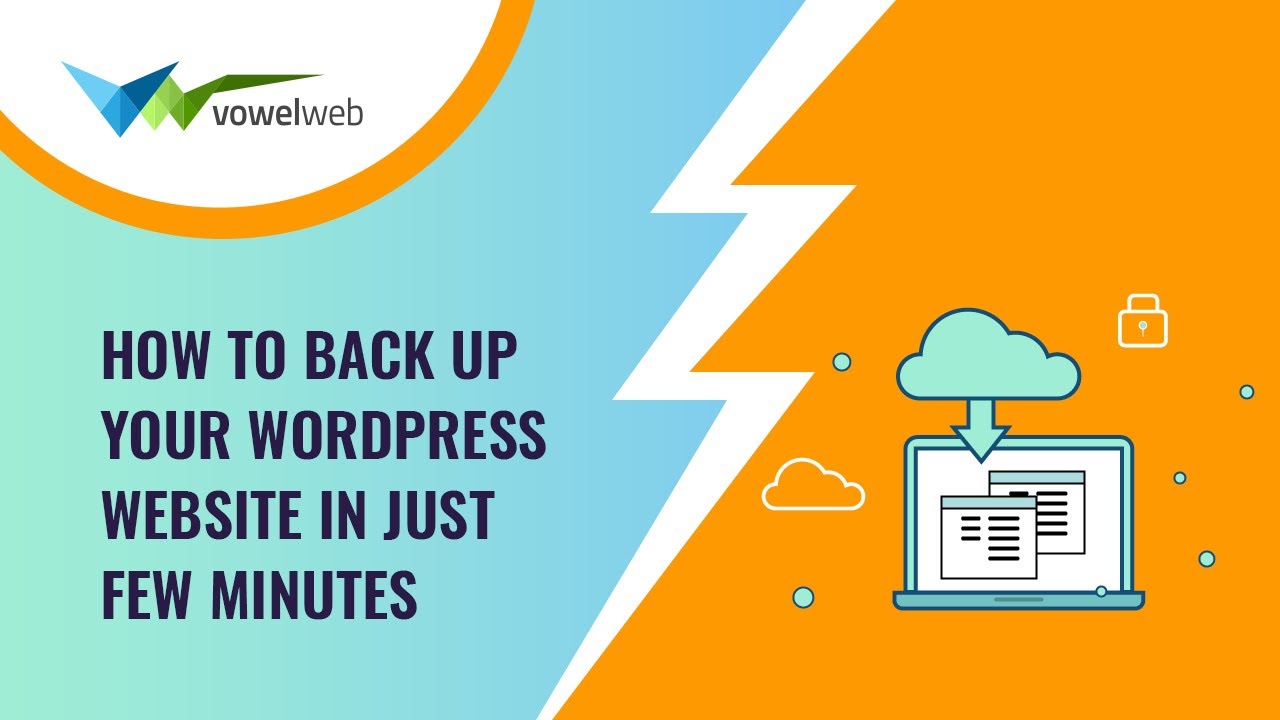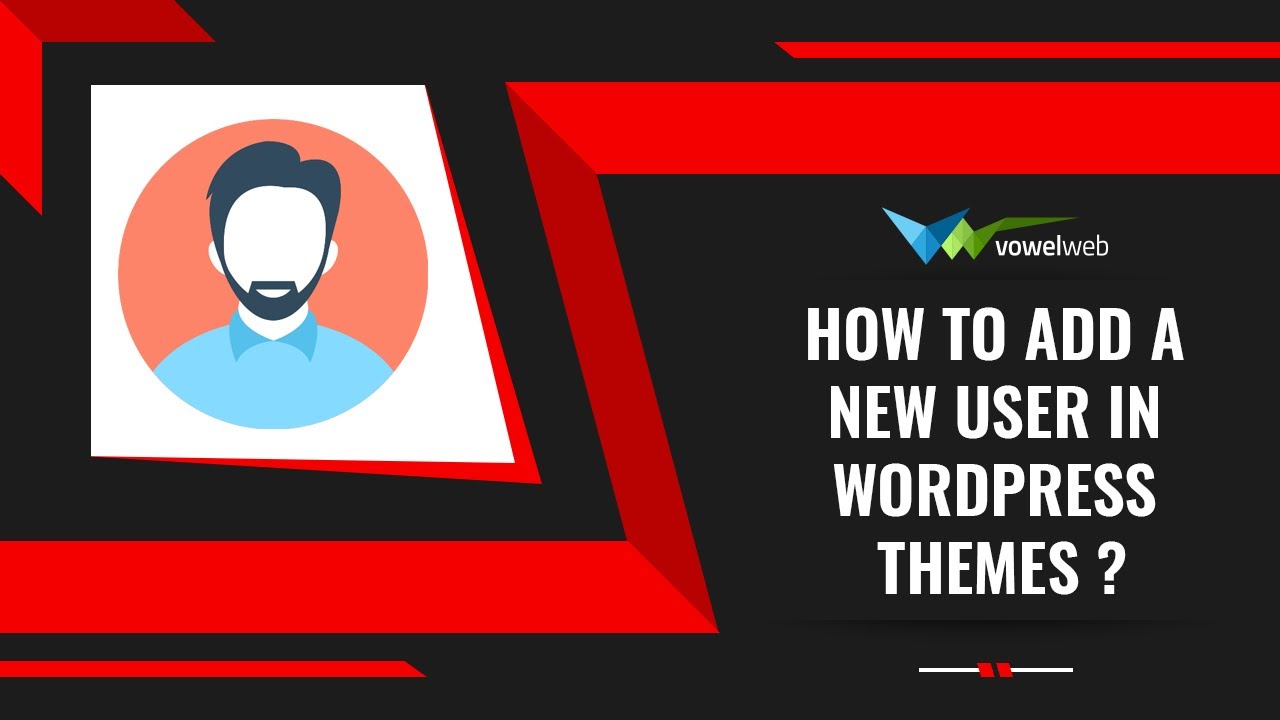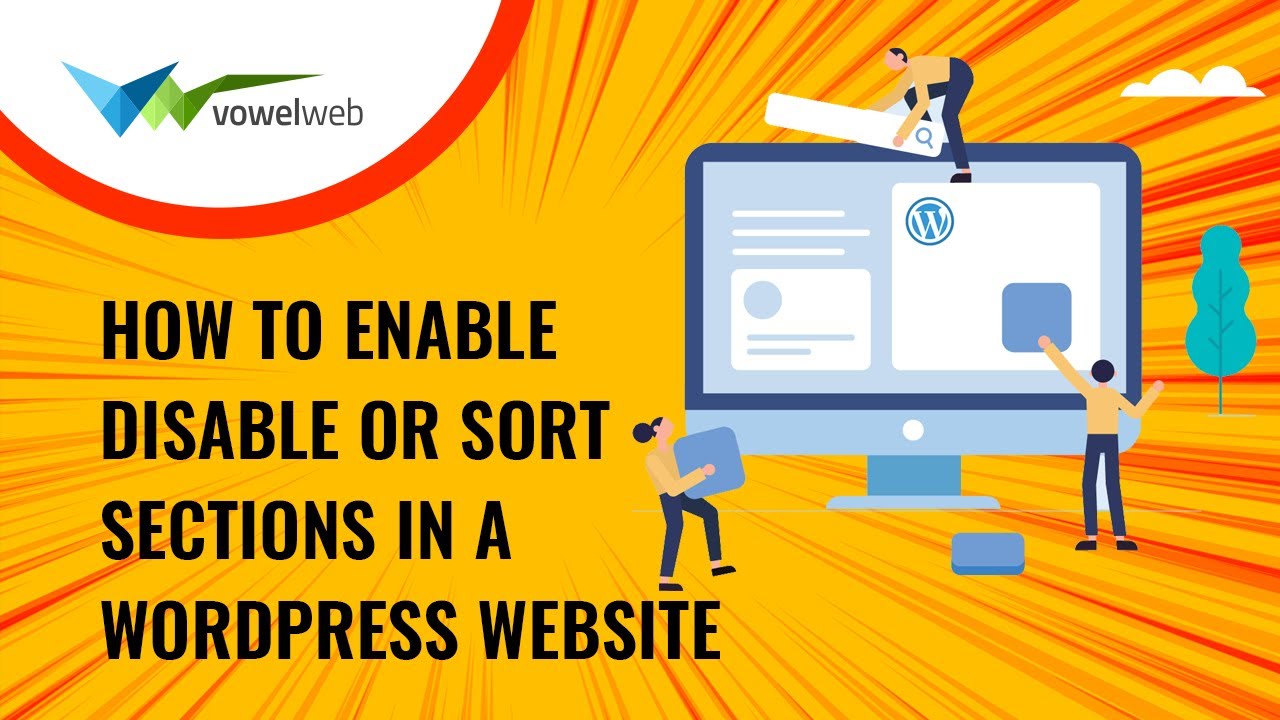Introduction
We appreciate you purchasing our WordPress theme. This article demonstrates several steps of the full configuration and management process for a WordPress website.
What is WordPress CMS?
WordPress is an open source website creation tool that uses PHP and MySQL as its foundation. It is a robust blogging platform and a totally free content management system (CMS). Using this CMS, you may create reliable online applications and websites. To manage it, you scarcely need any technological expertise or understanding. Because of its many benefits, including ease of use and flexibility, WordPress has emerged as the most popular website construction tool on the market. Learn More
A WordPress template: What is it?
A WordPress template serves as the skin for websites built using the WordPress content management system. A WordPress template is incredibly simple to setup. You may quickly modify the appearance of your WordPress website by installing a new template. A WordPress template comes complete with all the necessary source files, and you are free to change and expand it anyway you see fit.
Help and Support
Click here for support:
SupportFile Structure
The template bundle that you downloaded is divided into various directories. Let's examine the contents of each folder:
- Screenshots -contains template screenshot. Not for production.
- theme -contains wordpress theme files
- "vw-saas-services-pro_0.0.1.zip" -this folder contains all the necessary files for the theme.
- "license.txt" -contains license details
- "readme.txt" -contain information about theme images path, font use and usage script
Template Installation
The process of installing a template is very straightforward and easy.
Within the WordPress interface, all installation procedures may be completed. It facilitates a quick and comfortable process.
There are two ways to complete the installation process.
1-To install a theme using WordPress admin, follow these steps:
First, log in to your WordPress admin dashboard.
Next, navigate to the "Appearance" menu and select "Themes."
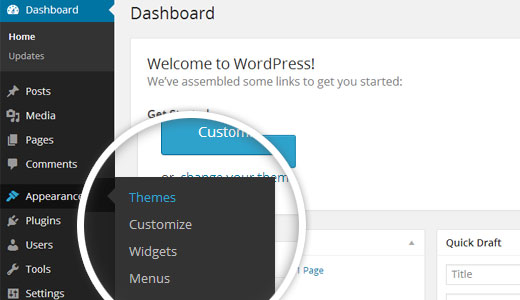

2. Once you are on the themes page, click on the Add New button located at the top of the page.
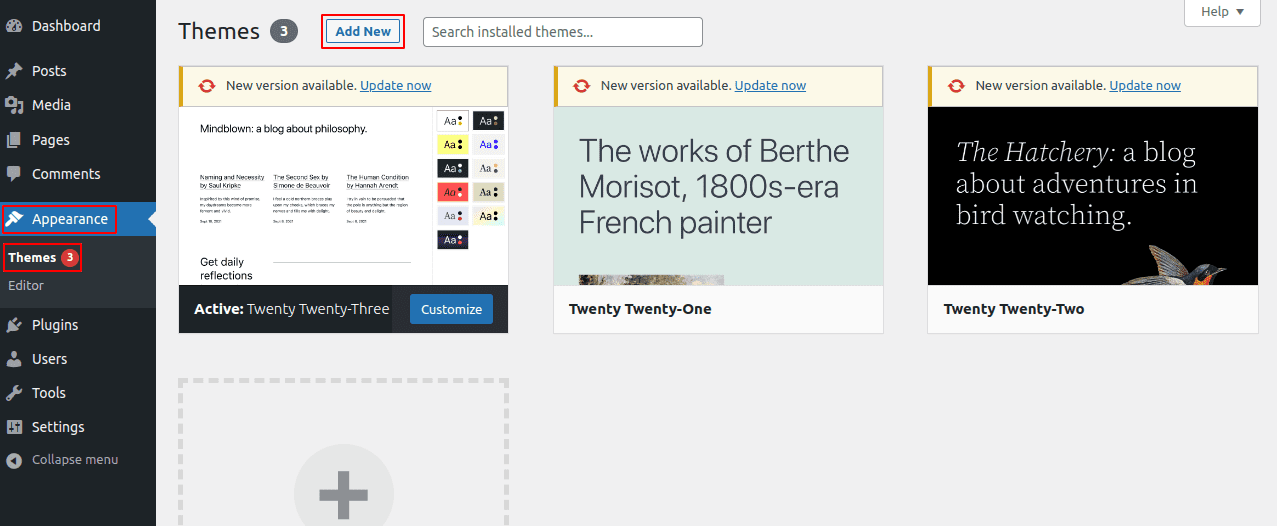
3. When arriving at the themes page, click on the Upload Theme button at the top and upload zip file (vw saas services pro.zip)
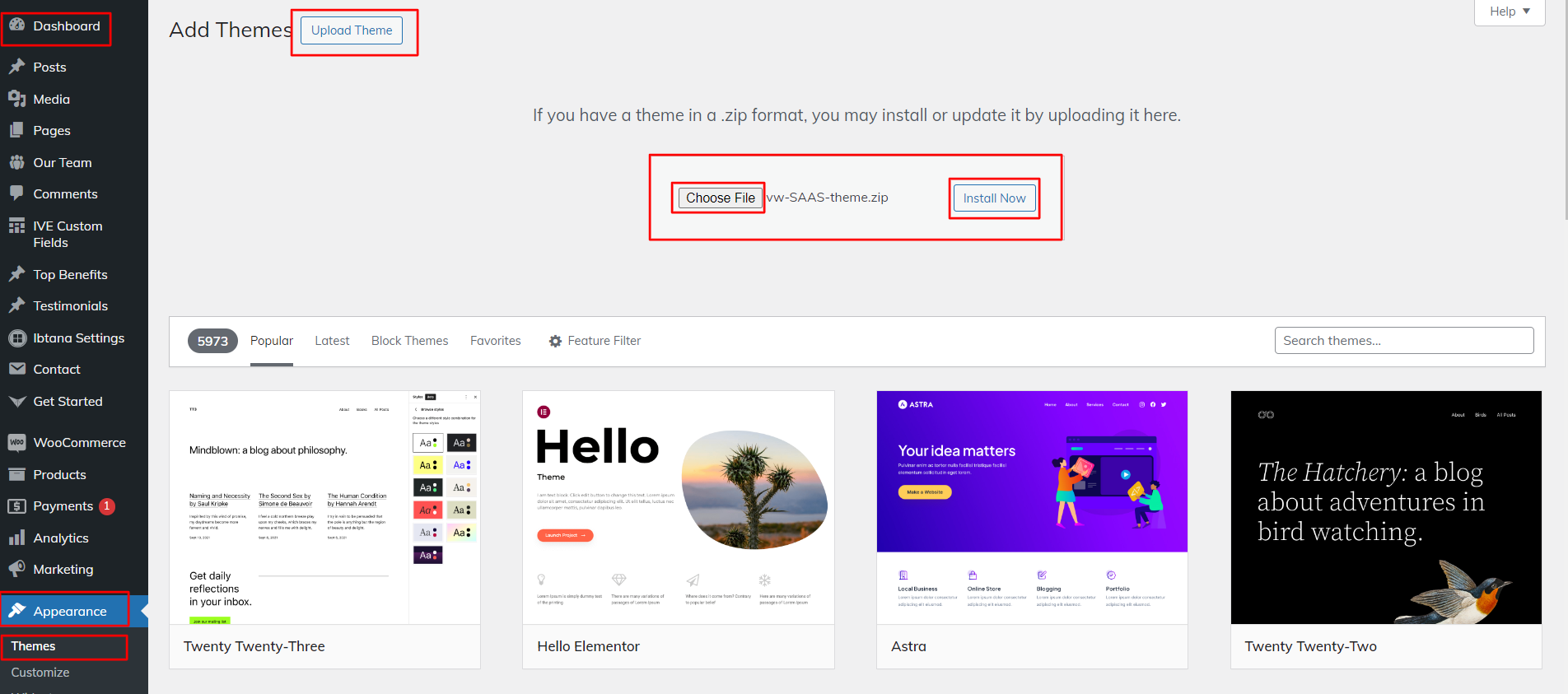
4. WordPress will now proceed with installing your selected theme, and upon completion, you will see a success message that includes options to activate the theme or preview it live.
Congratulations! Your theme has been successfully installed and set up.
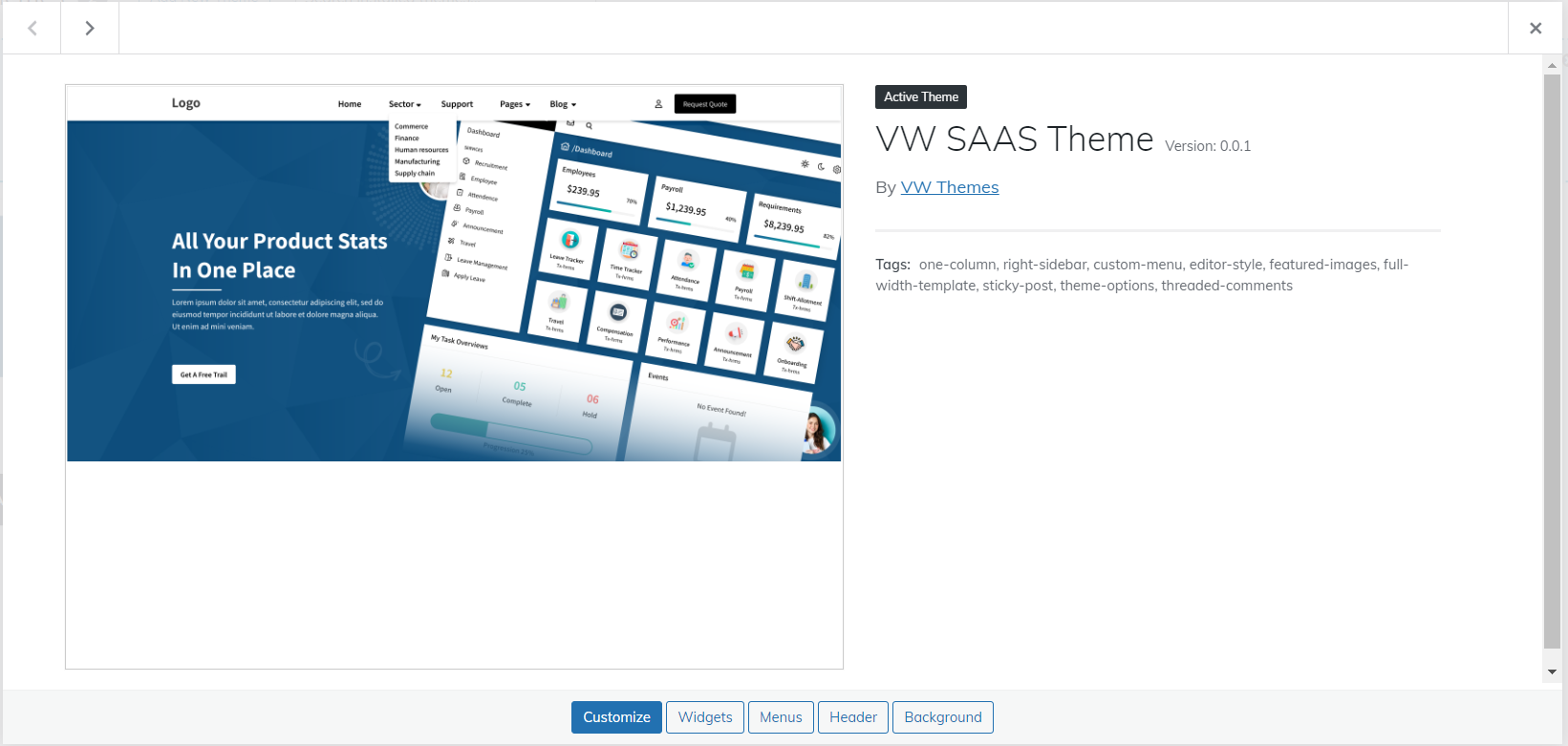
2-Theme installation using FTP
The theme can be uploaded using FTP, which is your second installation option. To use this method, first log into your website using FTP and navigate to the wp-content/themes folder. Just extract the Total folder from the theme file you got and upload it to your server.

Next log into your WordPress site and navigate toAppearance >> Themes to activate Total.
Plugin Installation.
The following instructions for uploading a plugin can be used to manually install a WordPress plugin from a.zip archive.
Install Required Plugins:
Go to Dashboard >> plugin >> Add New >> Upload plugin.
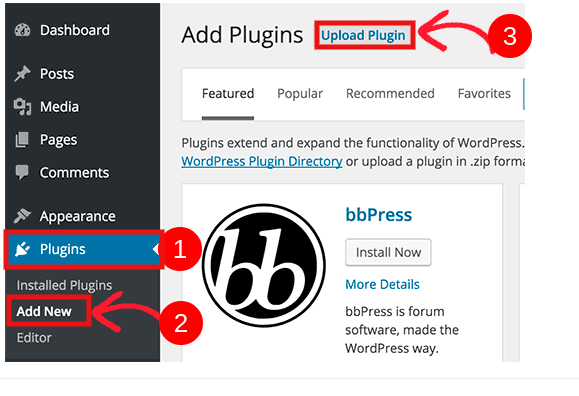
click on the install now button and activate.
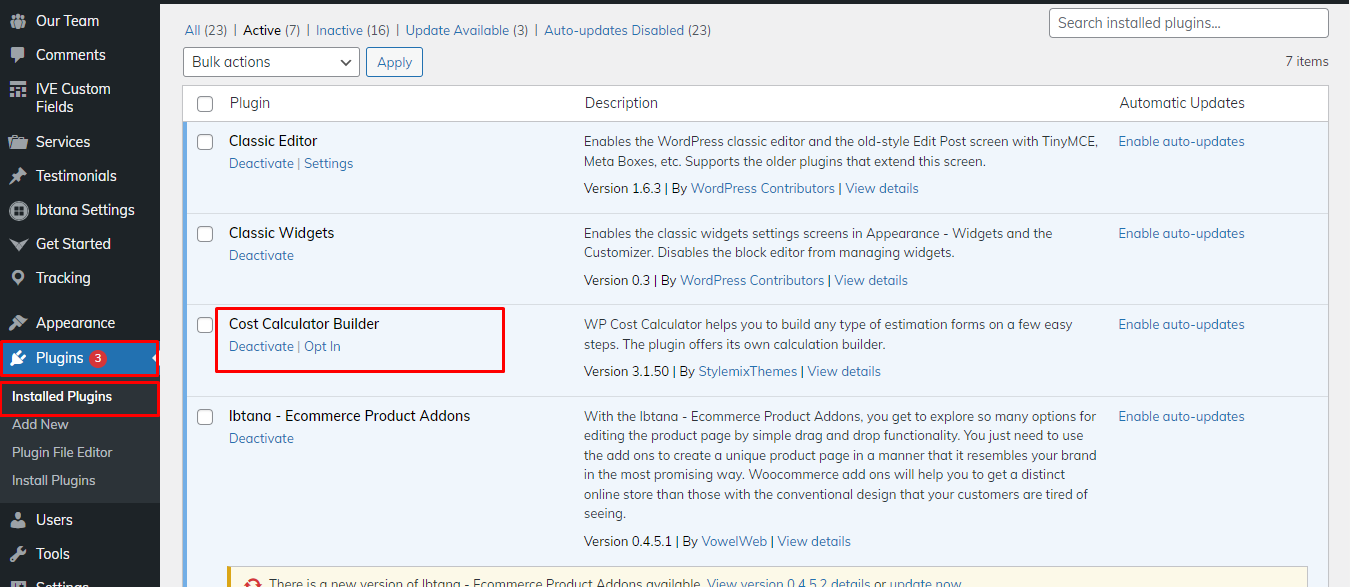
Section Ordering
How to Reorder and Organize Section
To reorder a part simply means to arrange it according to our needs. Drag the segment to the top or bottom as necessary to continue with this section. Your front view will change in accordance with customizer options when you drag any portion to the top or bottom.
You can reorder sections by simply dragging and dropping the options into the desired order.
To proceed with the Section Ordering.
Step 1 Go to Dashboard >> Appearance >> Customizing >> VW Theme Settings >> Section Ordering
Click on "Demo Content Importer" and then "Run Importer".
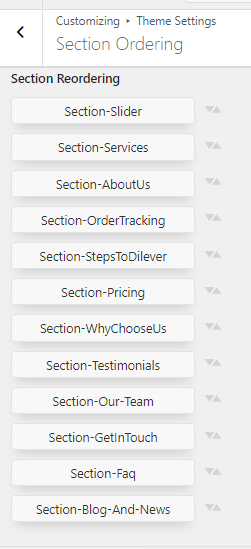
Section Color and Font Scheme
The method of changing the colour or font is quite simple. These choices are available in all customizer areas. It is a comprehensive graphic that demonstrates the typeface and colour palette. You can change the colour and font of the headings, paragraphs, and buttons with a single glance or click.
Depending on how many options are accessible in a given part, each individual section has the ability to choose the colour scheme for the headings, title/text, paragraph, button text, and button background.
Standard Color and Font settings

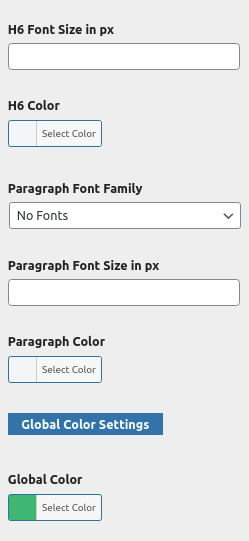
Theme Wizard
* Theme Wizard is a new addition to the version
To import content using Theme Wizard, ad here to these procedures.
1) Go to Dashboard >> Getstarted
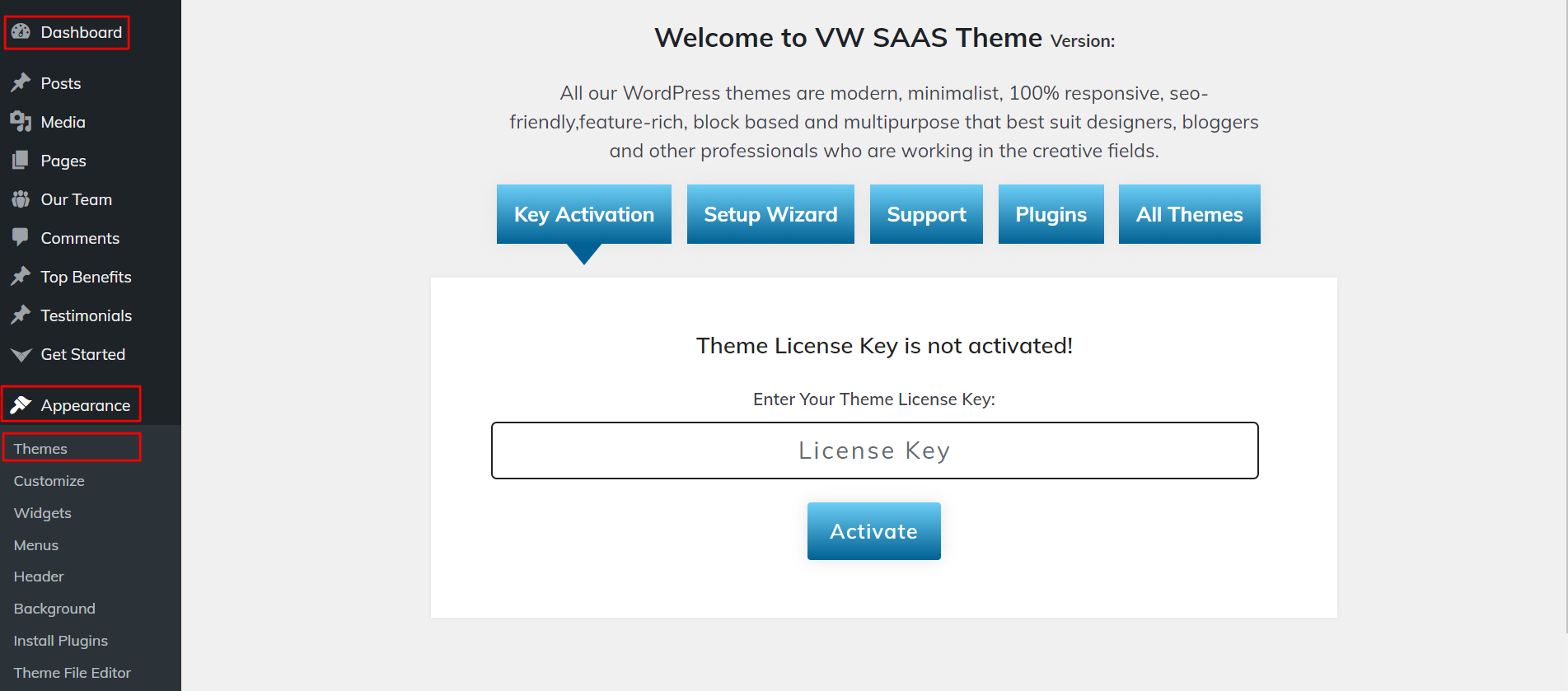
2) Insert your key.
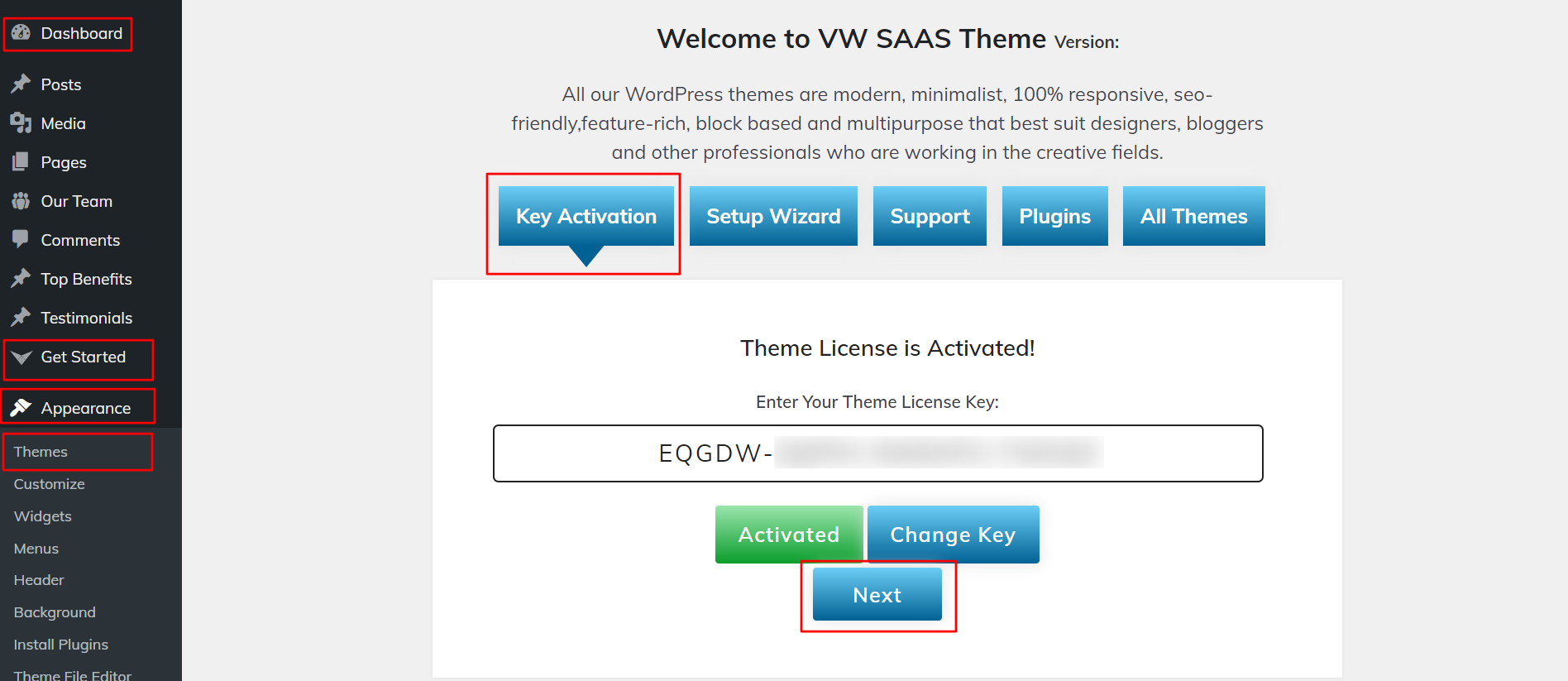
Refer video for Licence key activation:
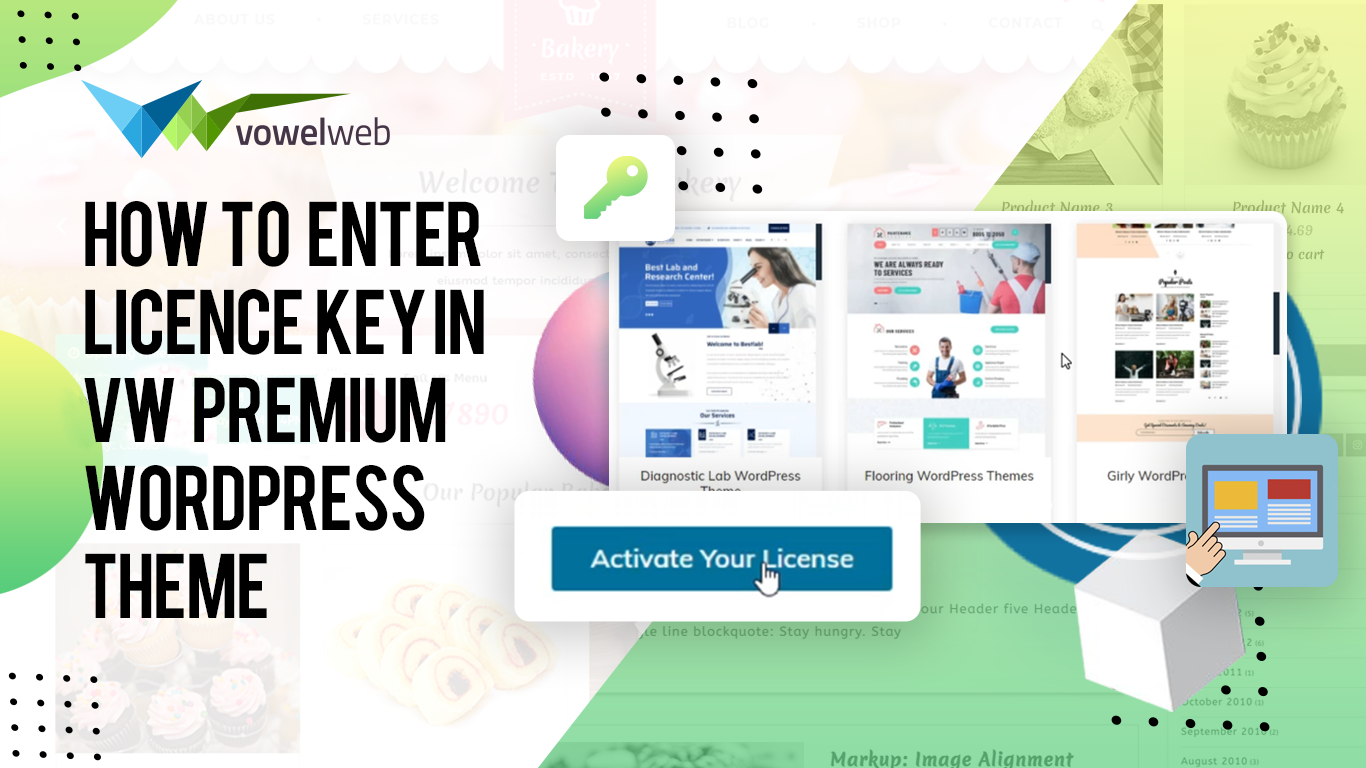
3) After selecting Setup Wizard, click Start Now.
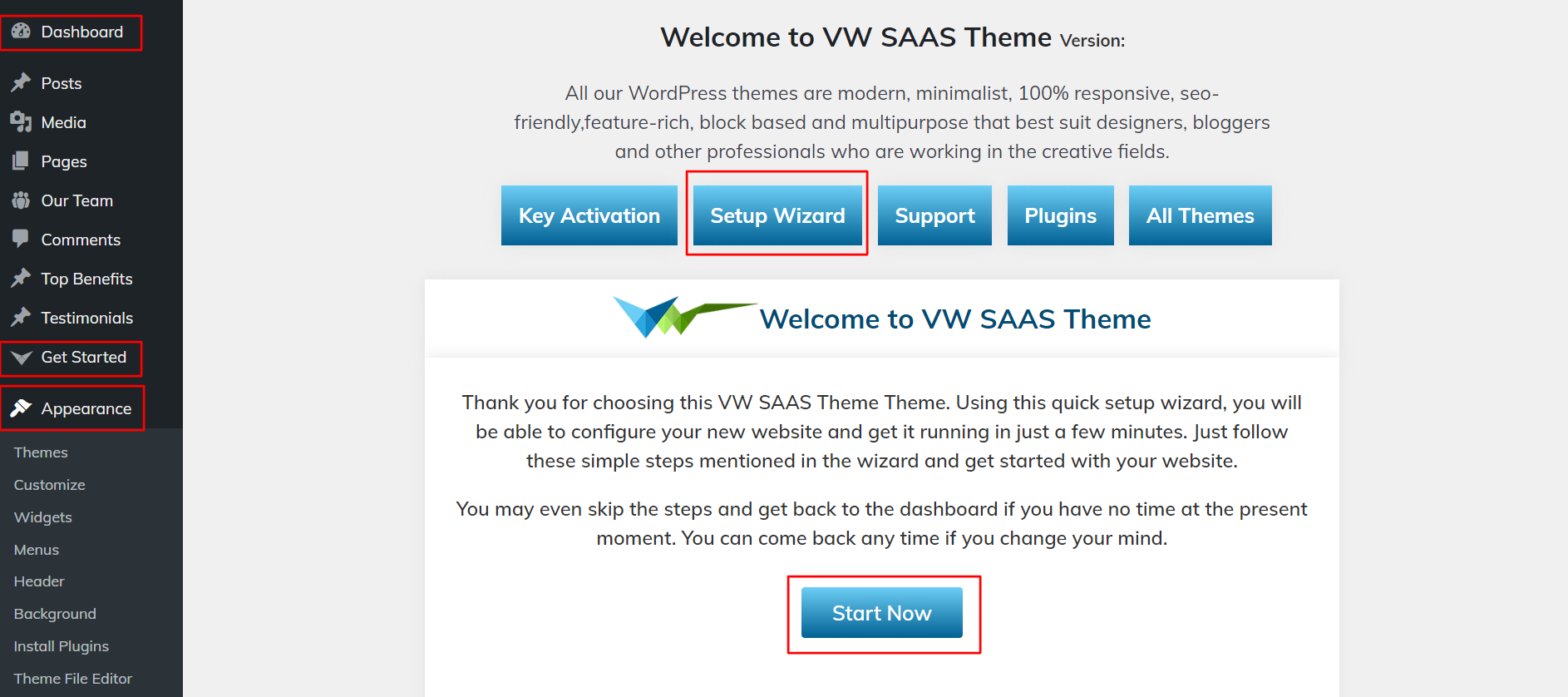
4) install Plugins.
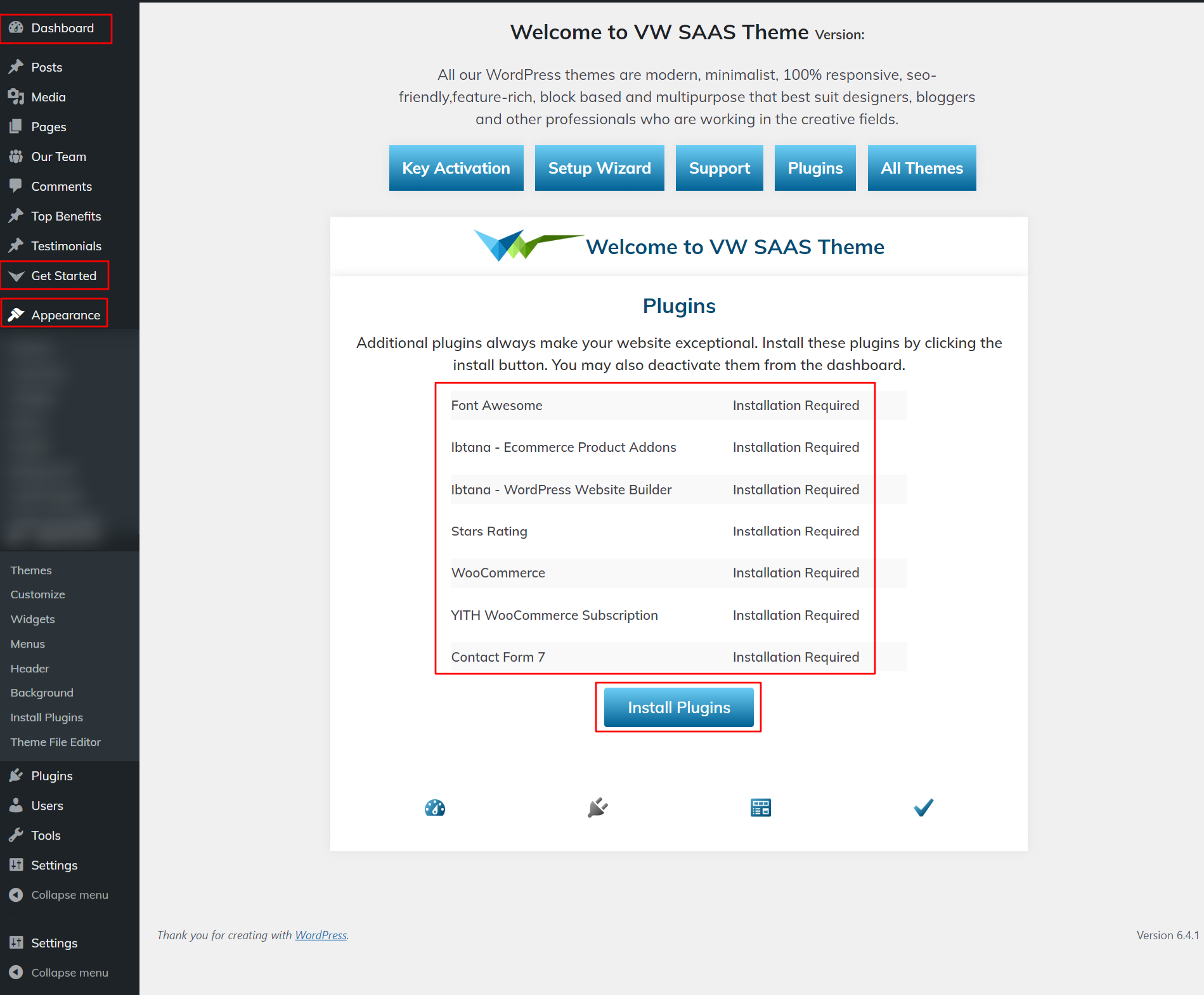
5) Import the material from your Customizer, Gutenberg, and Elementor-based demo.
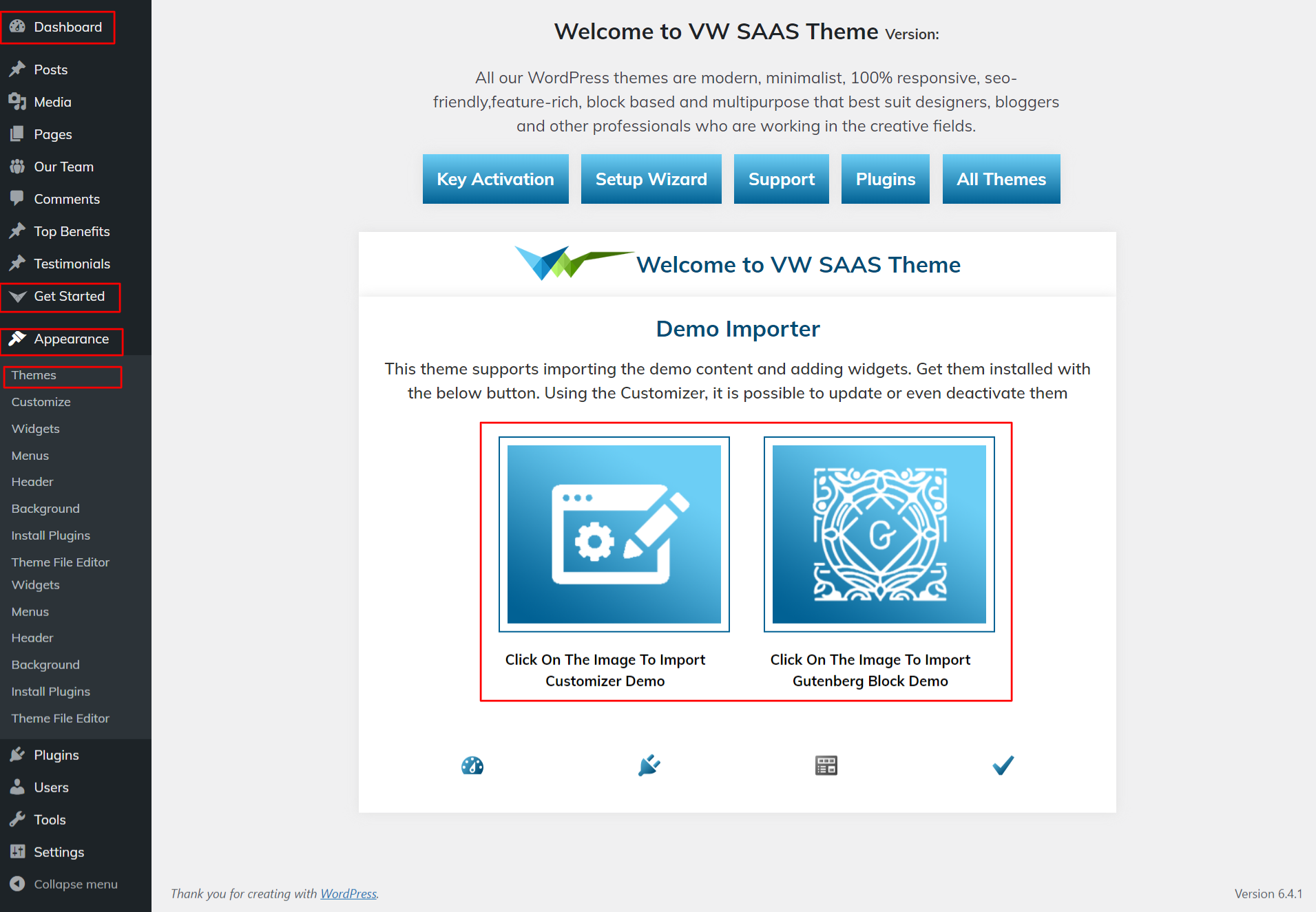
For setting up your demo content based on, you can refer to this video.
Theme Configuration
1. Setup Header Section
To proceed with the Header Section.
1) Go to Appearance >> Customize >> Theme Settings >> Header Section
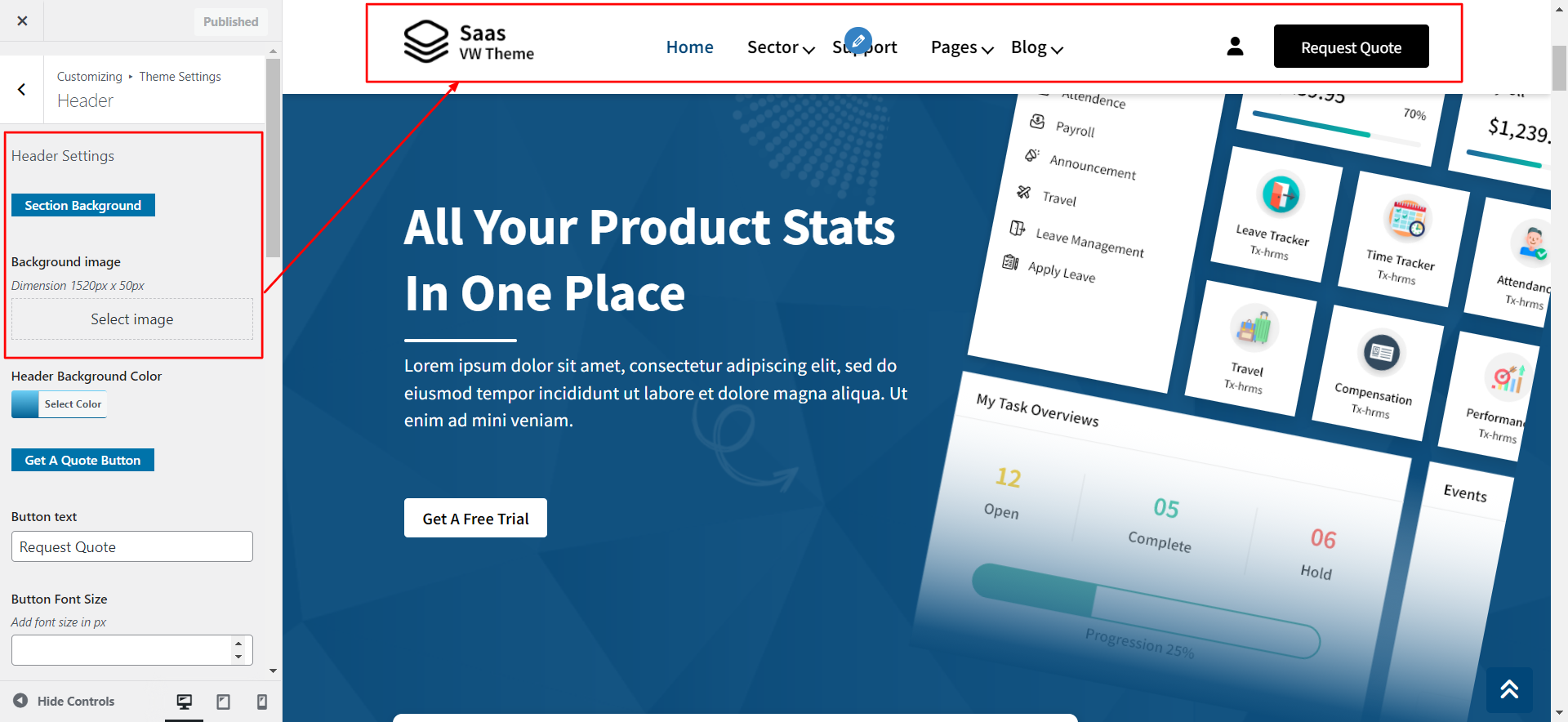
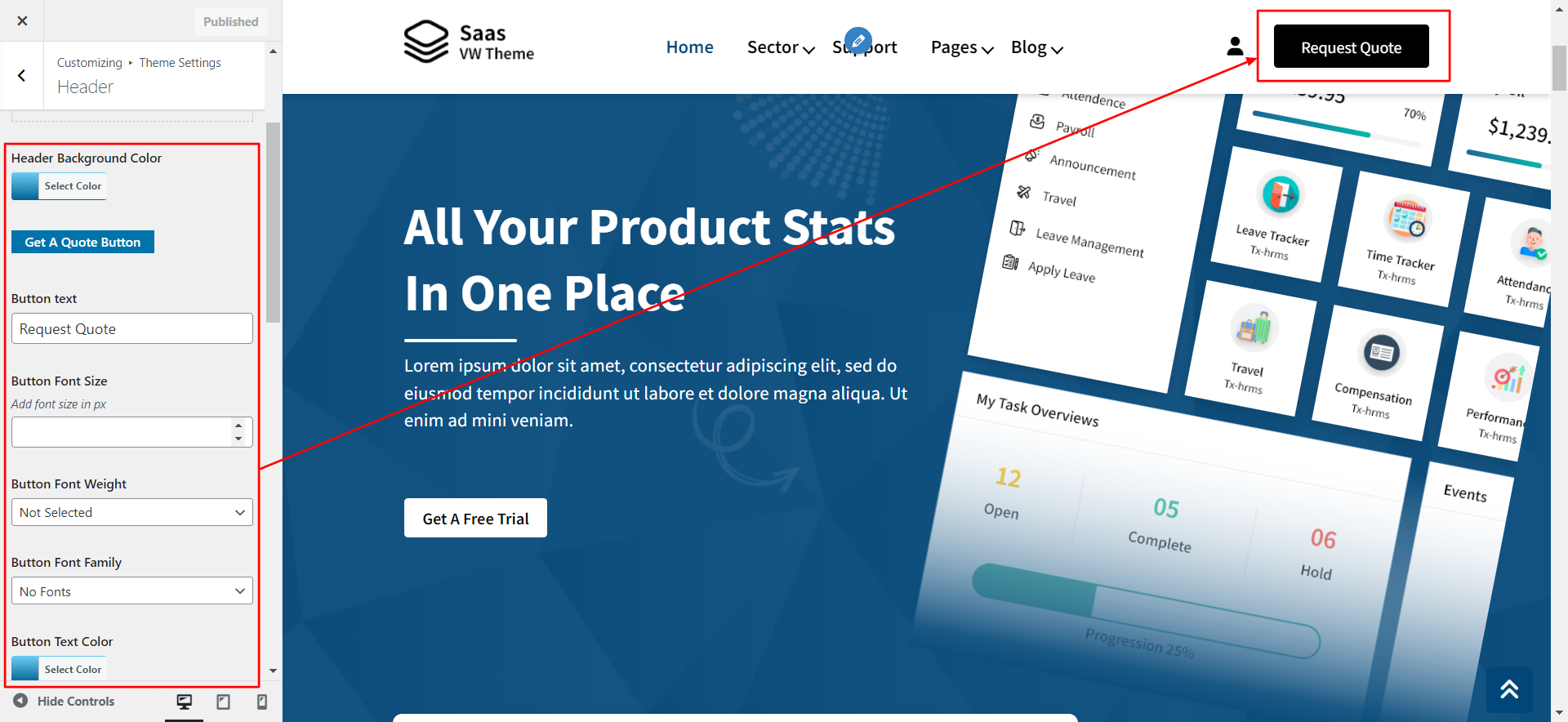
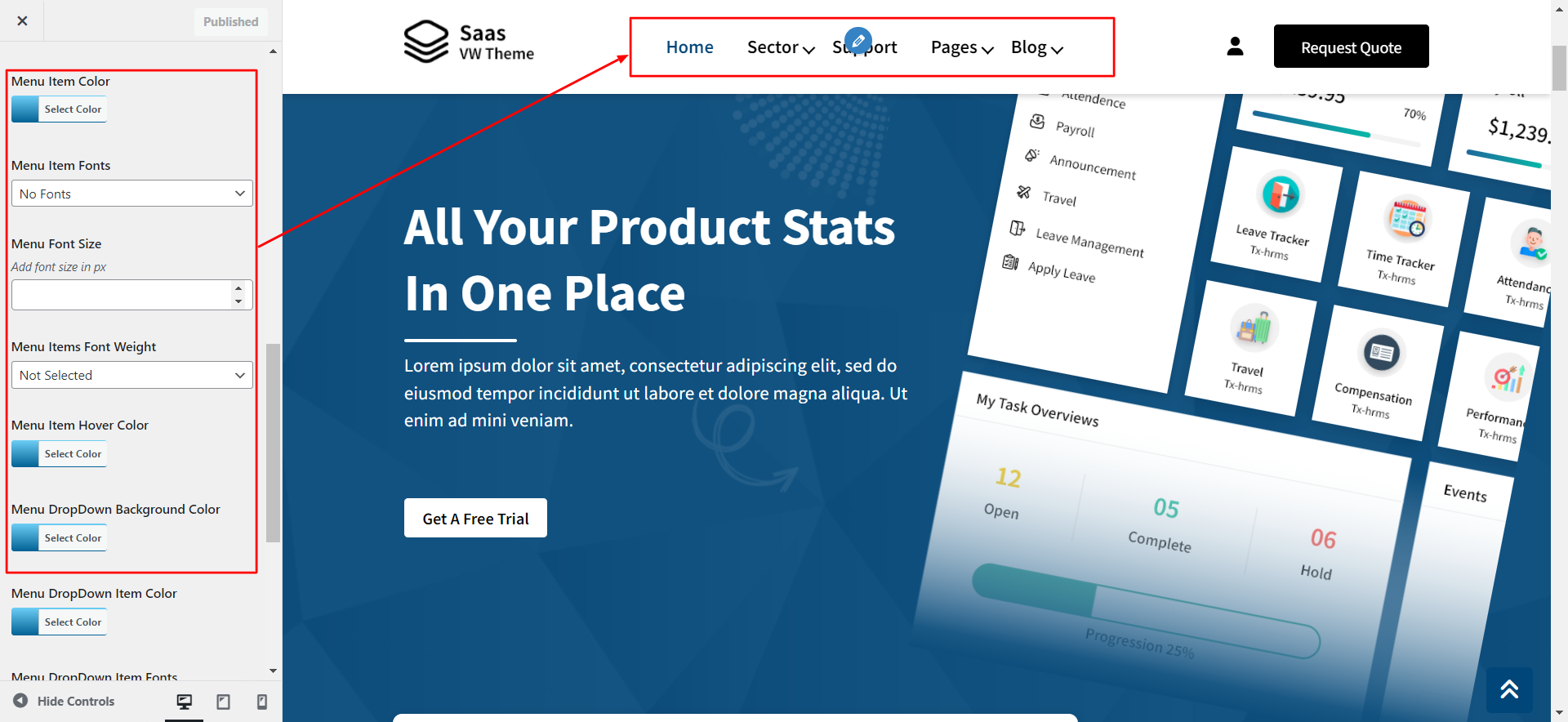
2) Final Image of Header Section.

2. Setup Banner Section
To proceed with the Banner Section
1)Go to Appearance >> Customize >> Theme Settings >> Banner section
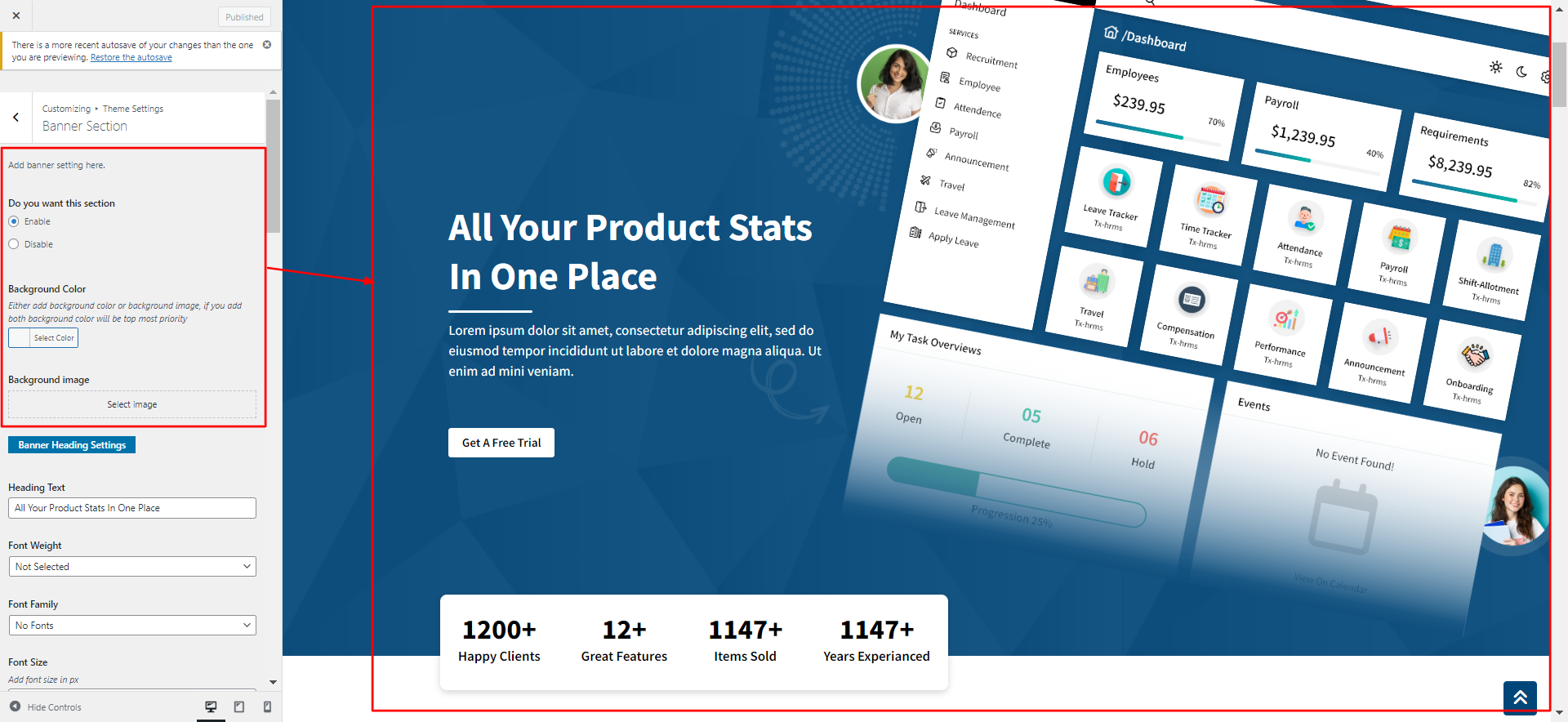
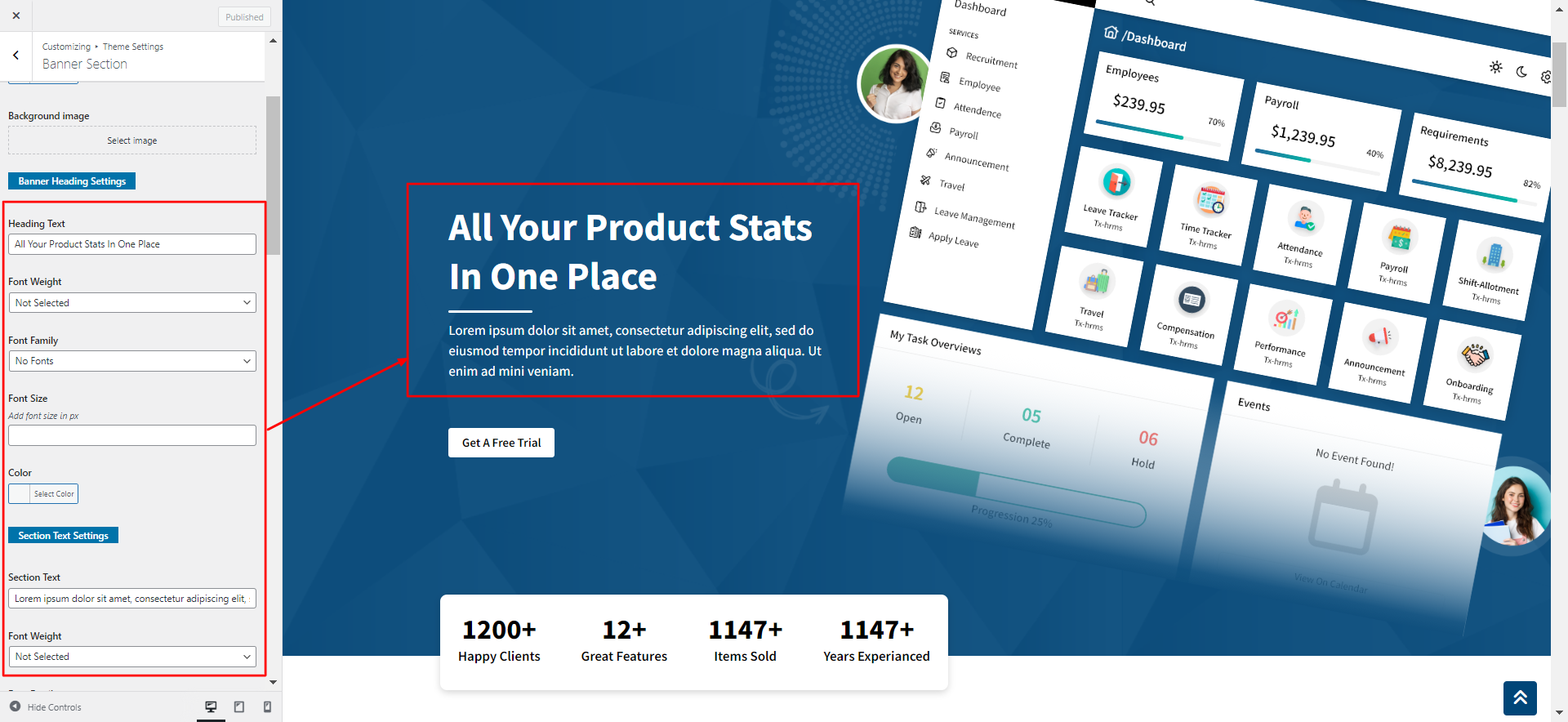
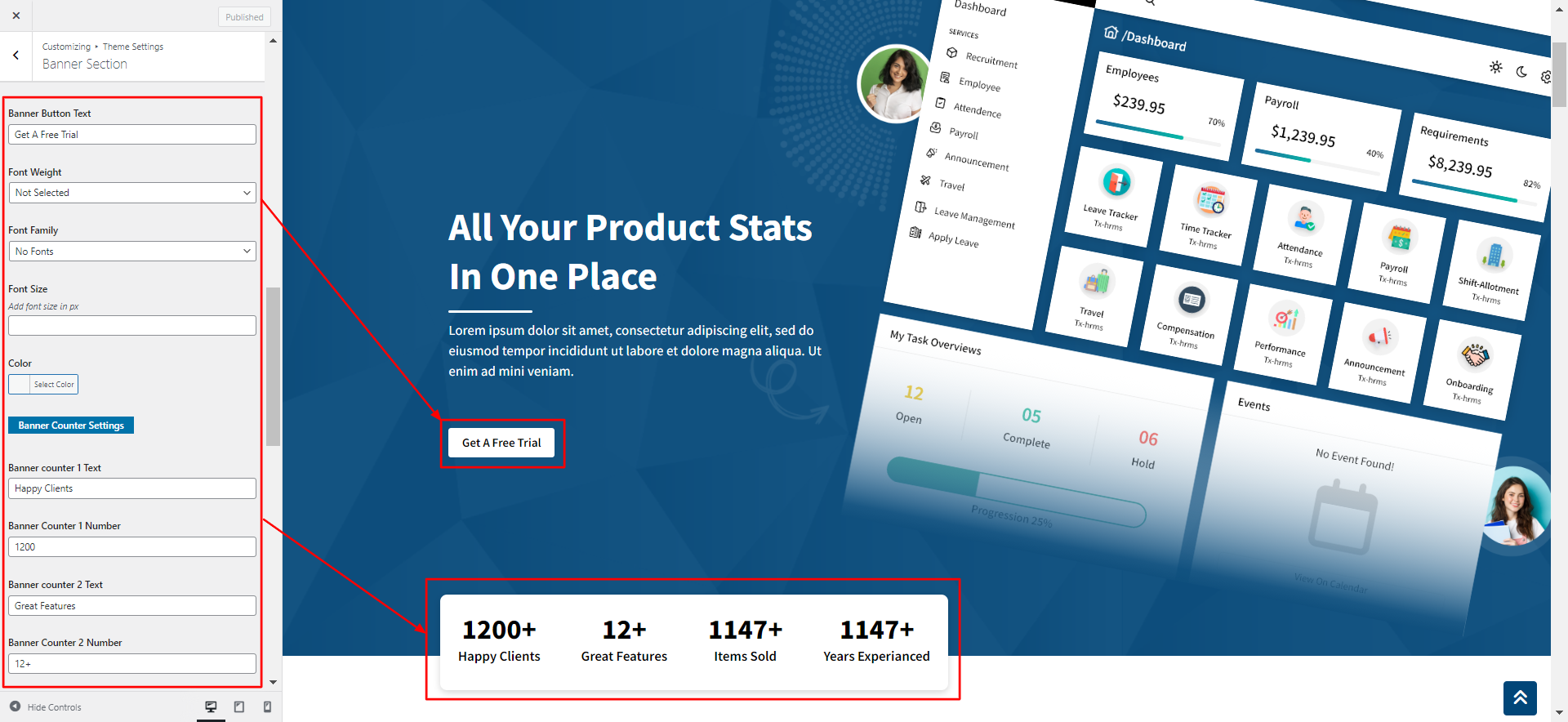
2) Final Image of Banner Section.
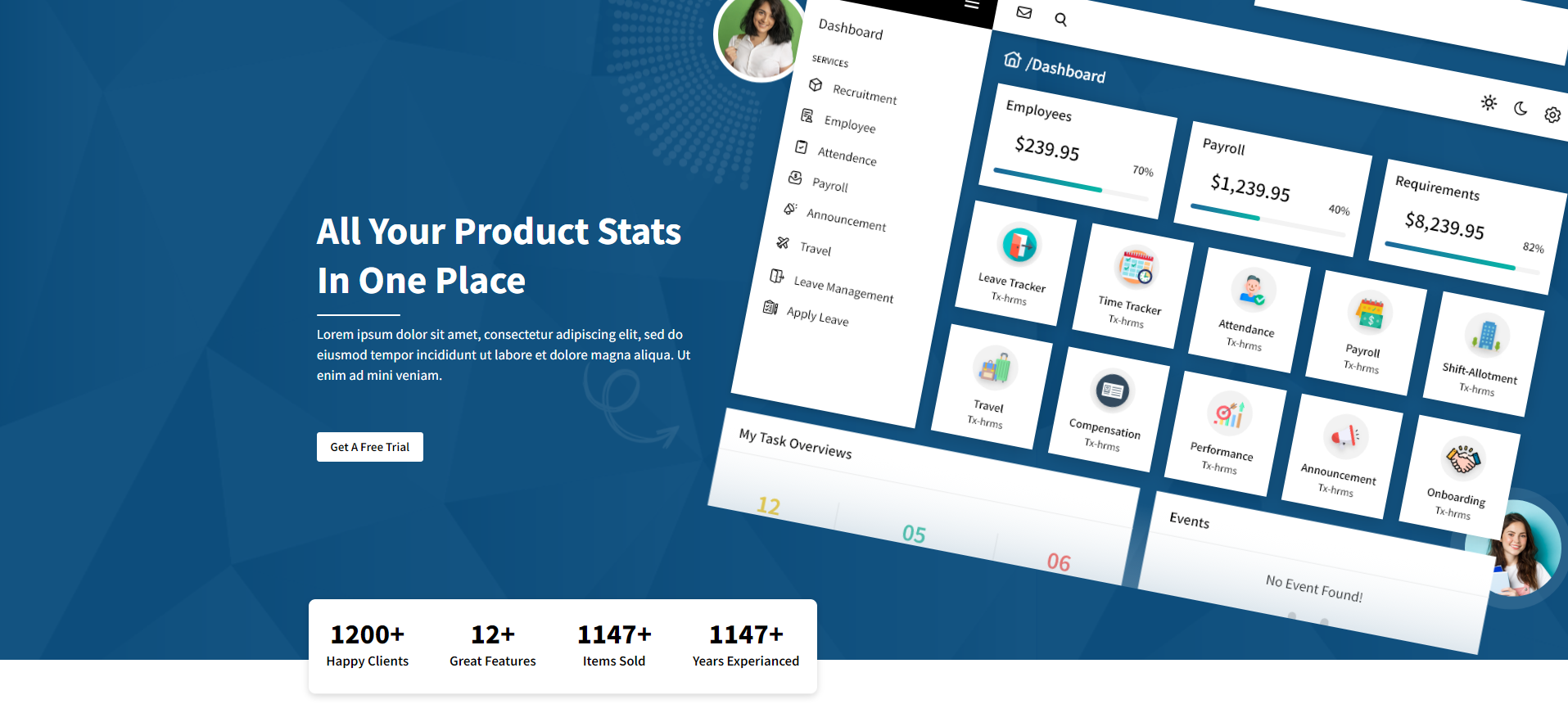
3. Setup Resource Section
To proceed with the Resource Section
1)Go to Appearance >> Customize >> Theme Settings >> Resources Section
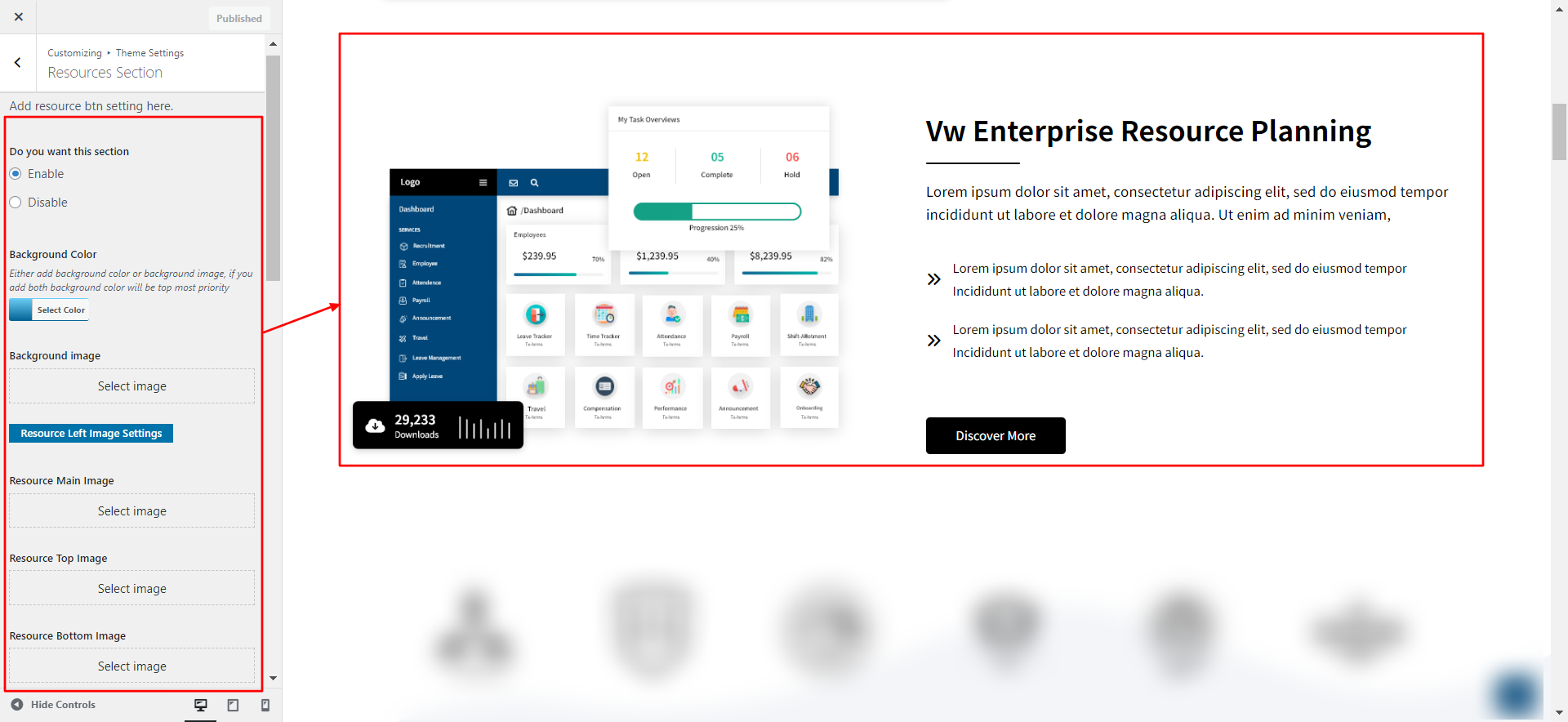
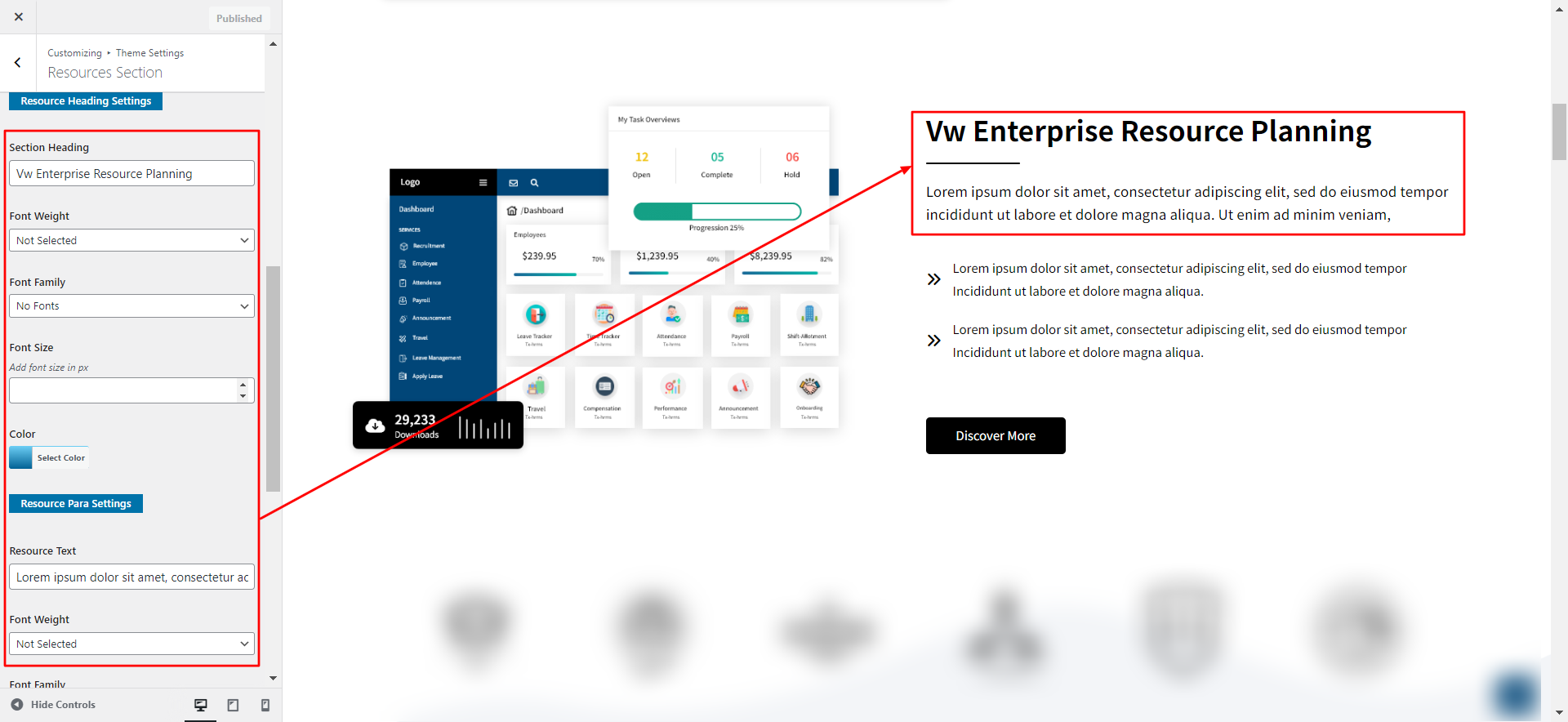
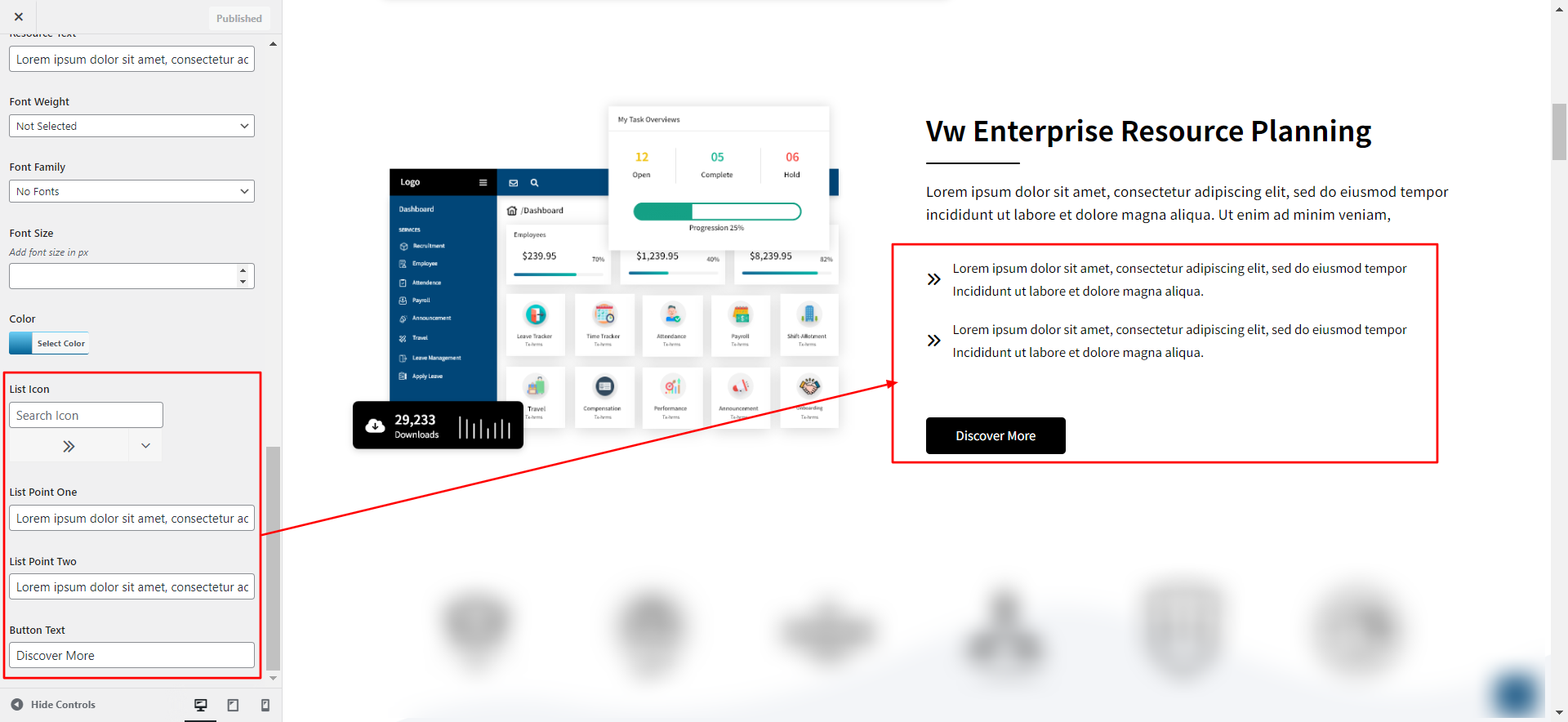
2) Final Image of Resource Section.
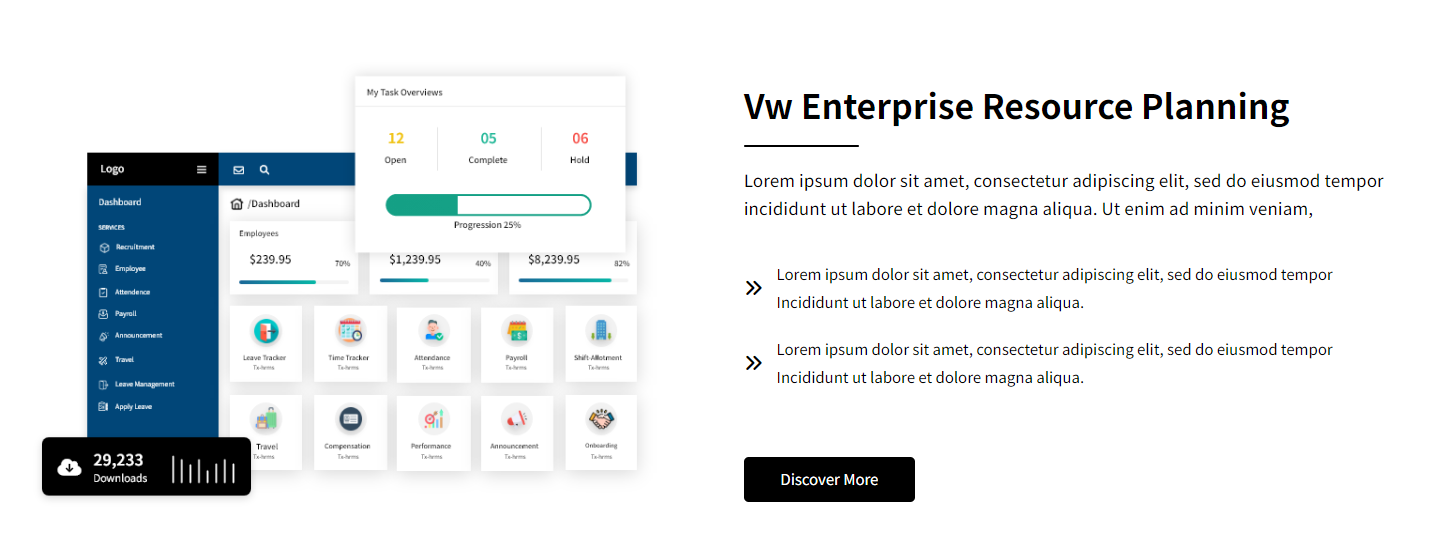
4. Setup Client slider Section
To proceed with the Client slider Section.
1)Go to Appearance >> Customize >> Theme Settings >> Client Slider Section
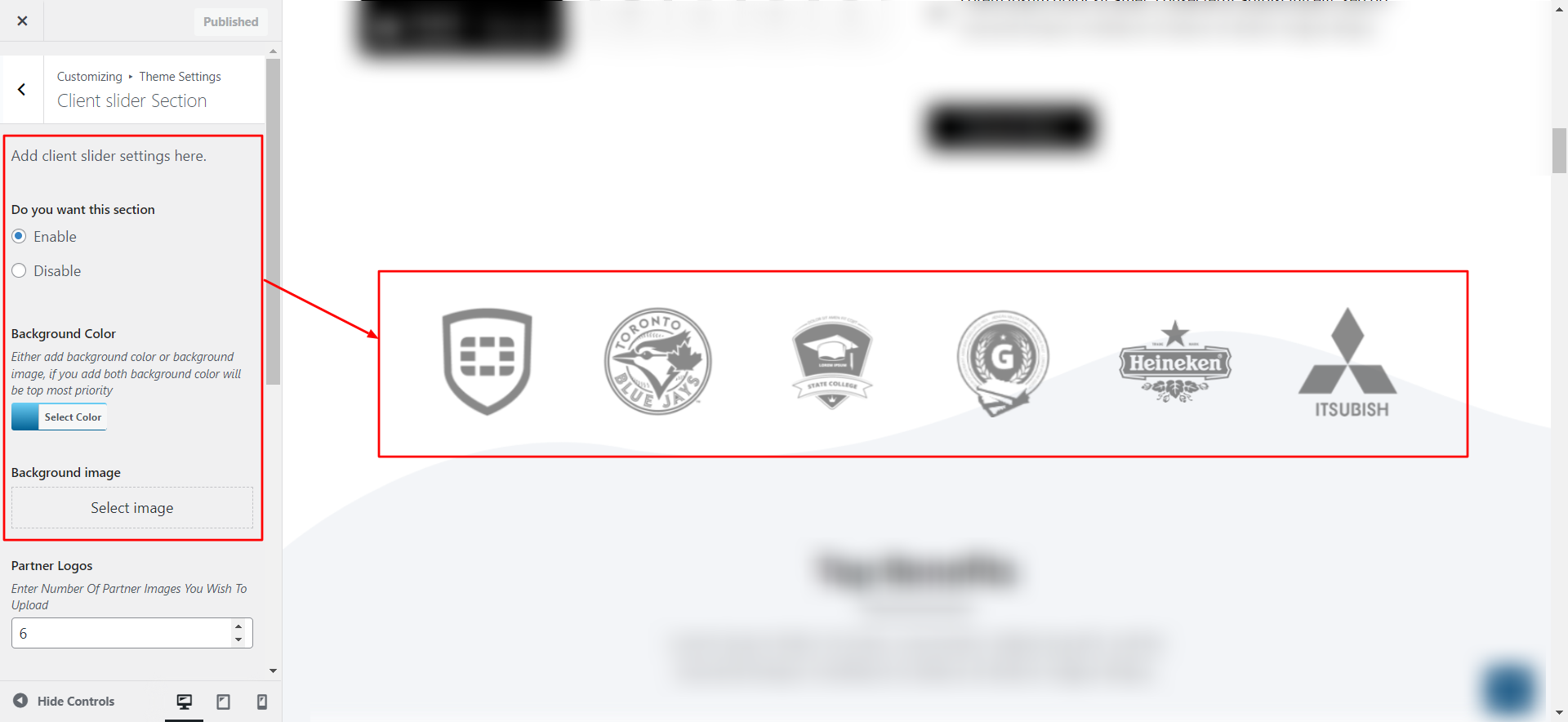
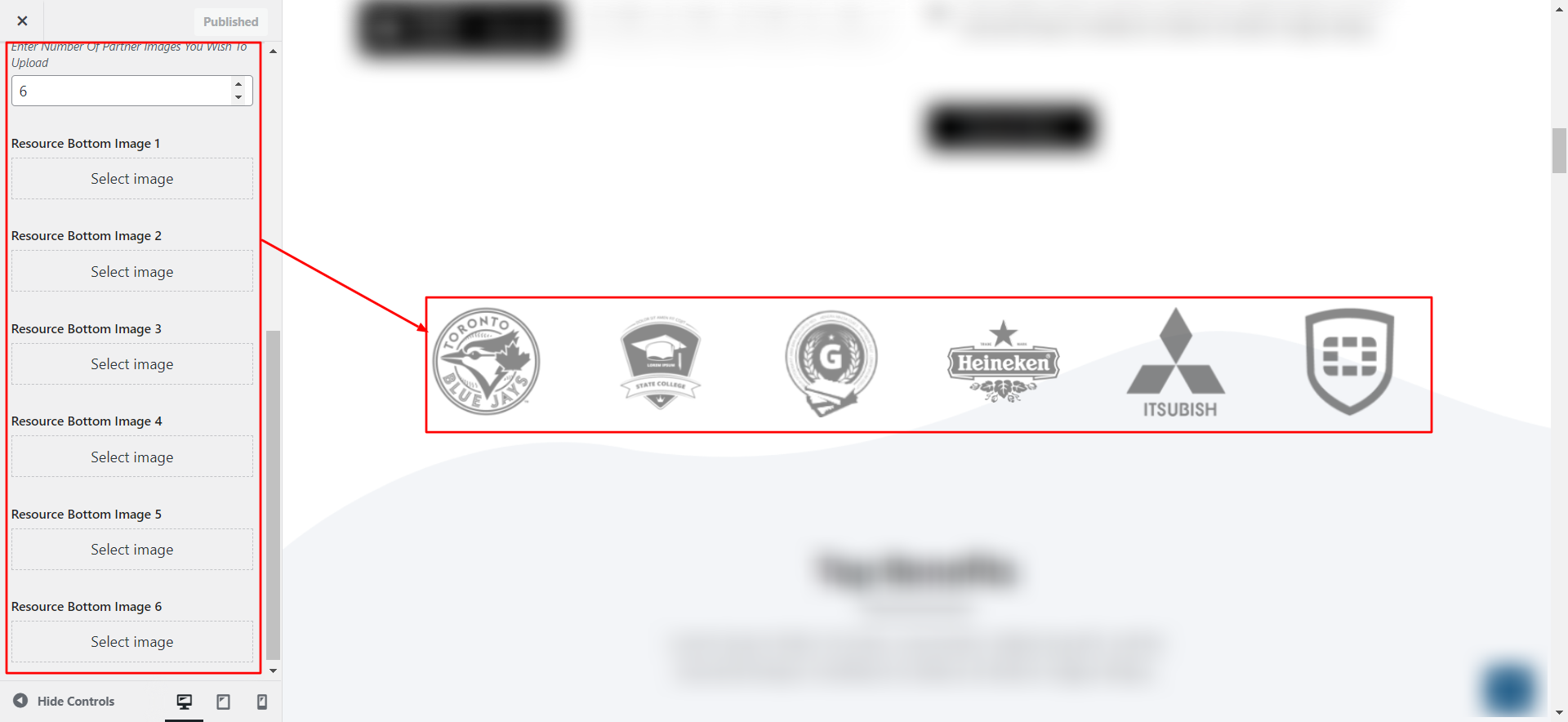
2) Final Image of Your Client Slider Section.

Refer to the setup slider video:
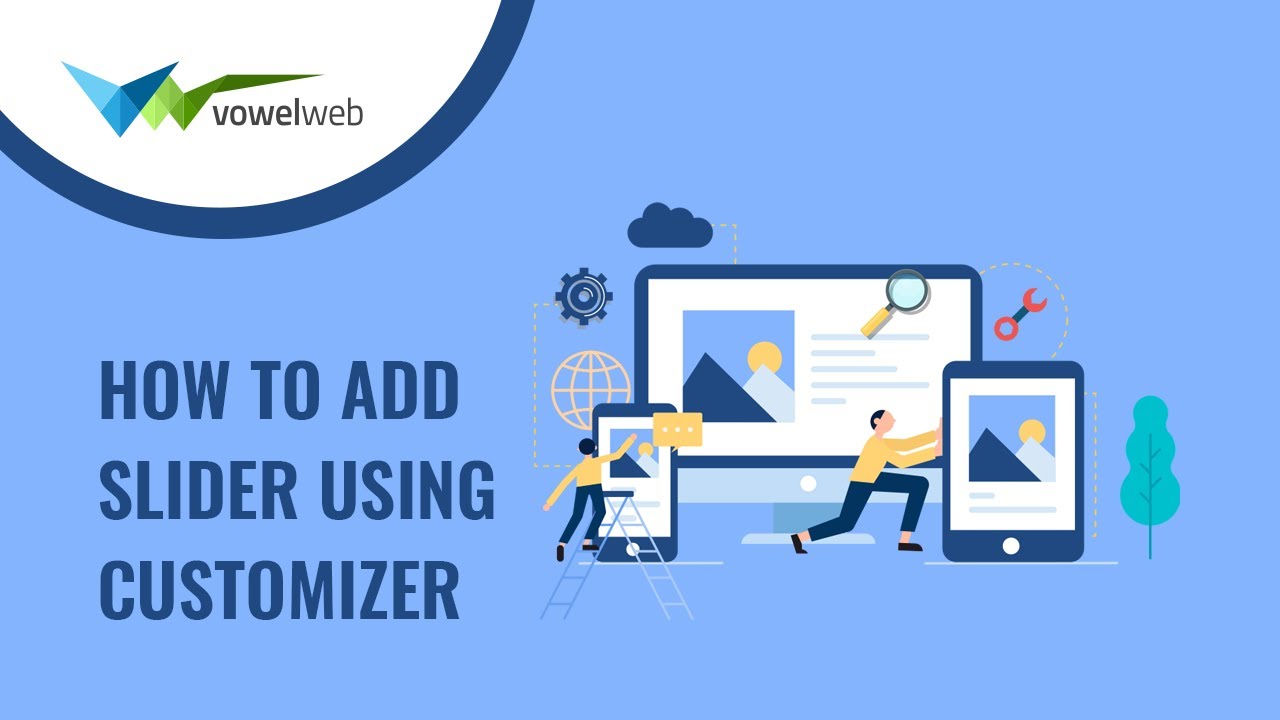
5. Setup Top Benefits Section
To Setup Top Benefits Settings
1) Go to Dashboard >> Top Benefits >> Edit
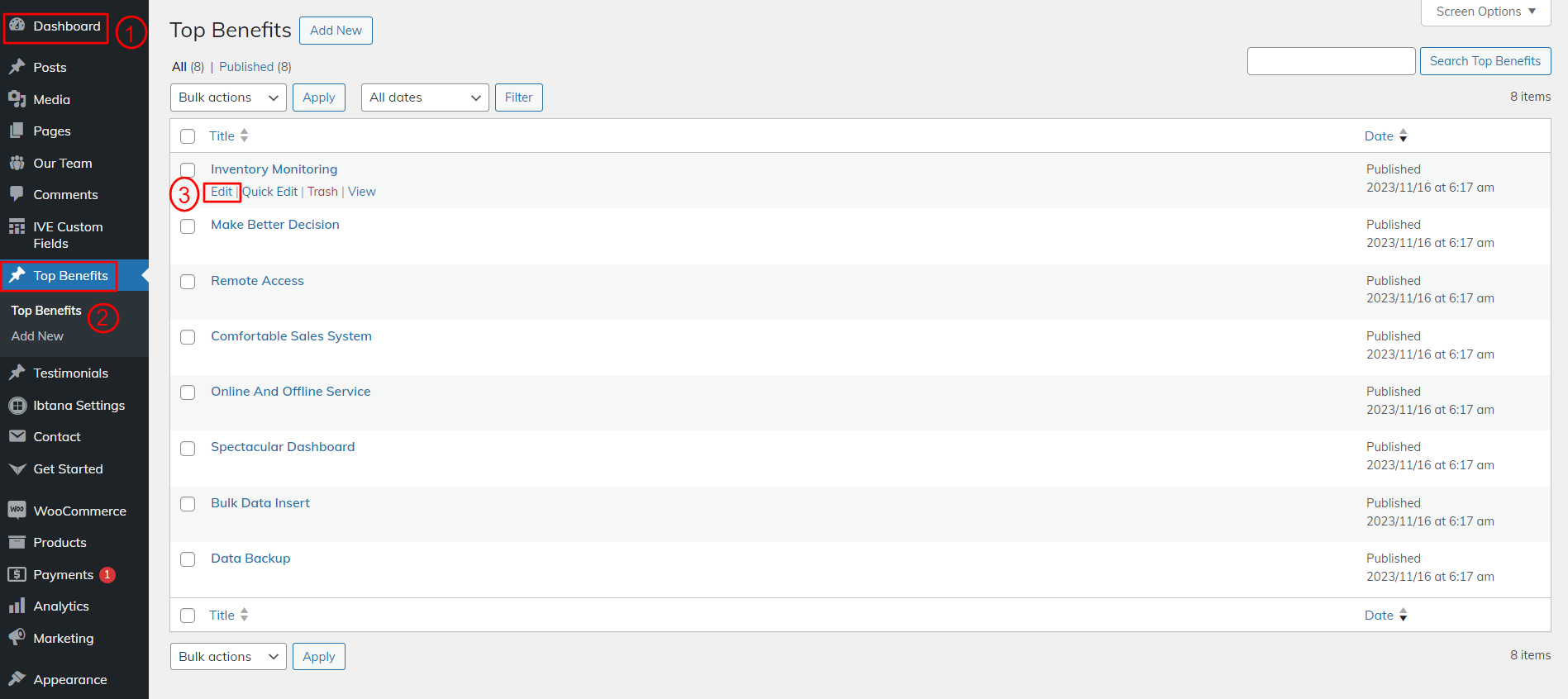
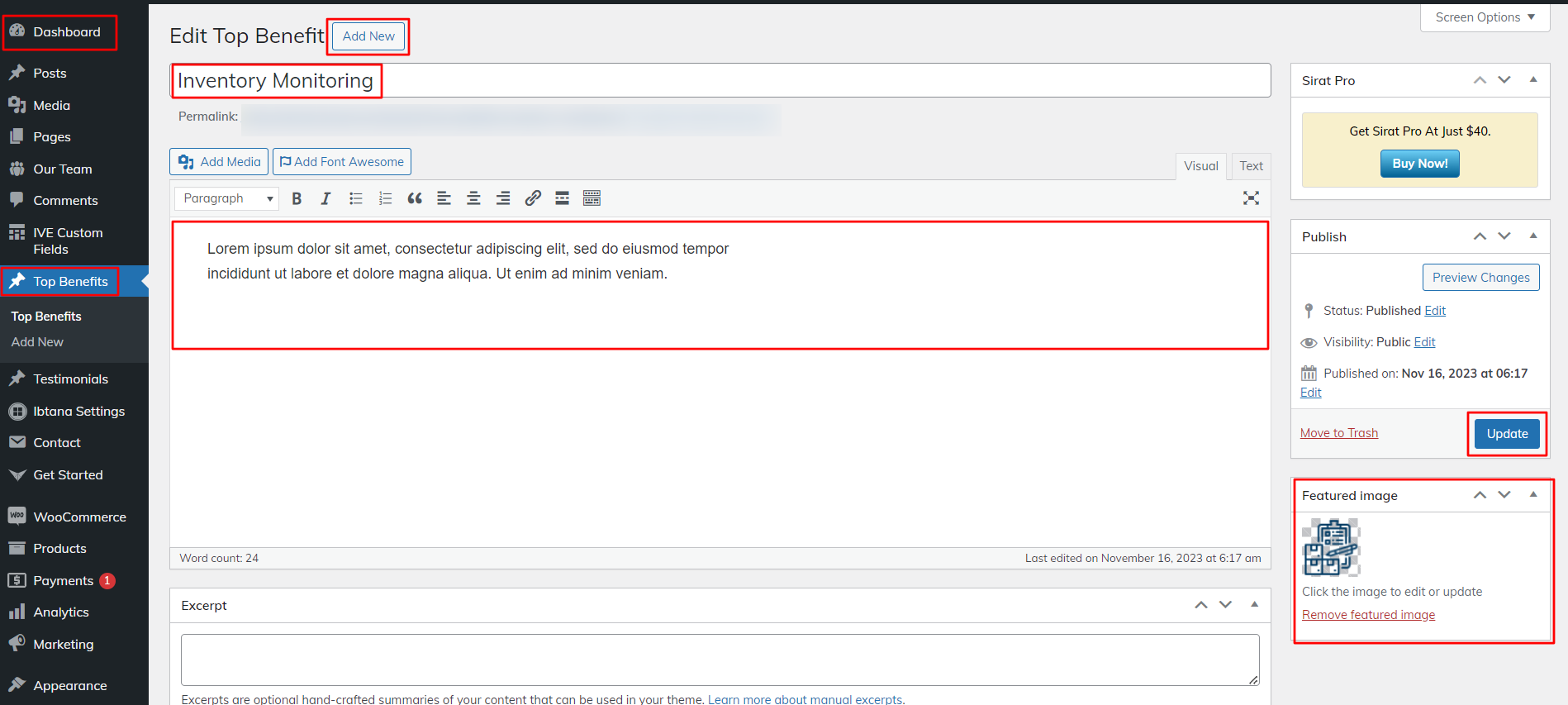
To proceed with the Benefits Section.
2)Go to Appearance >> Customize >> Theme Settings >> Top Benefits Section
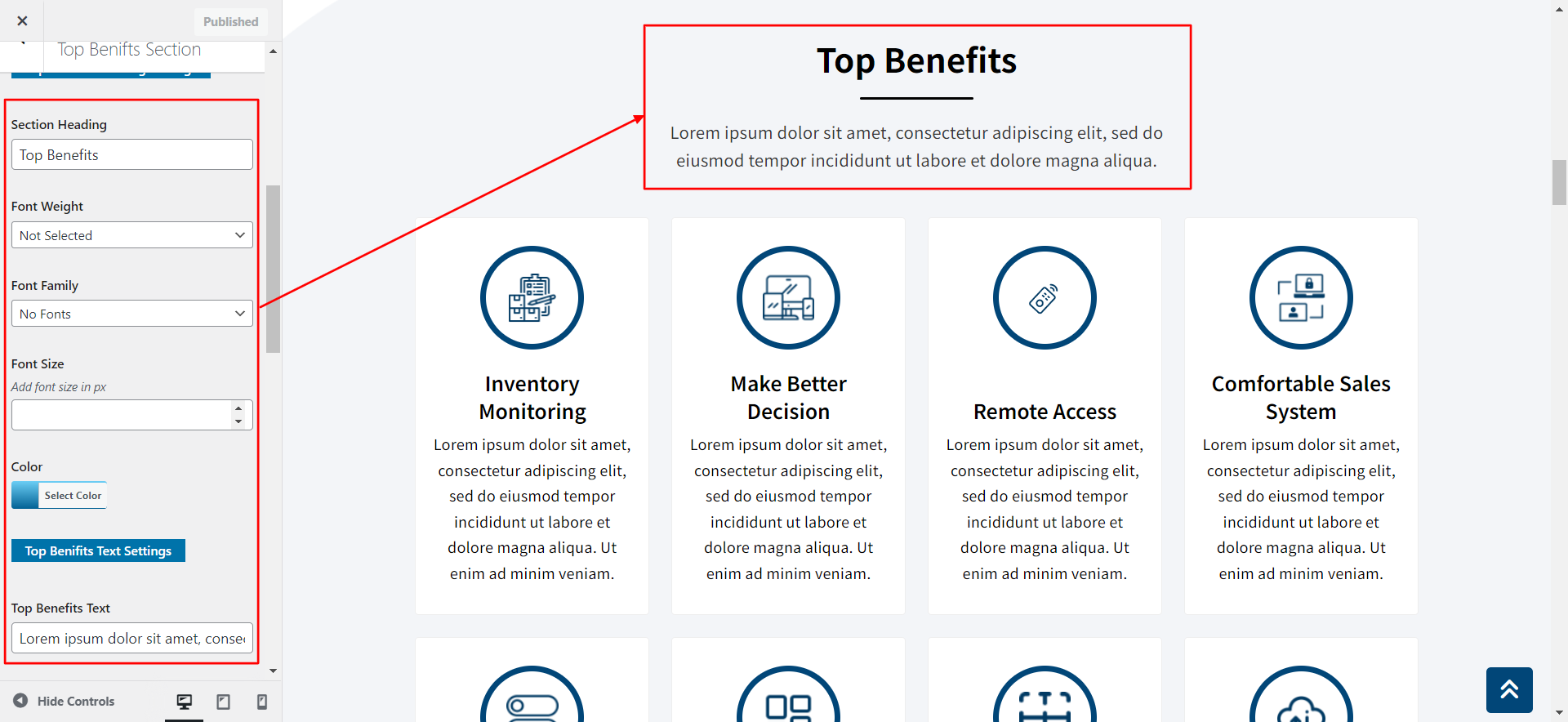
3) Final Image of Your Top Benefits Section.
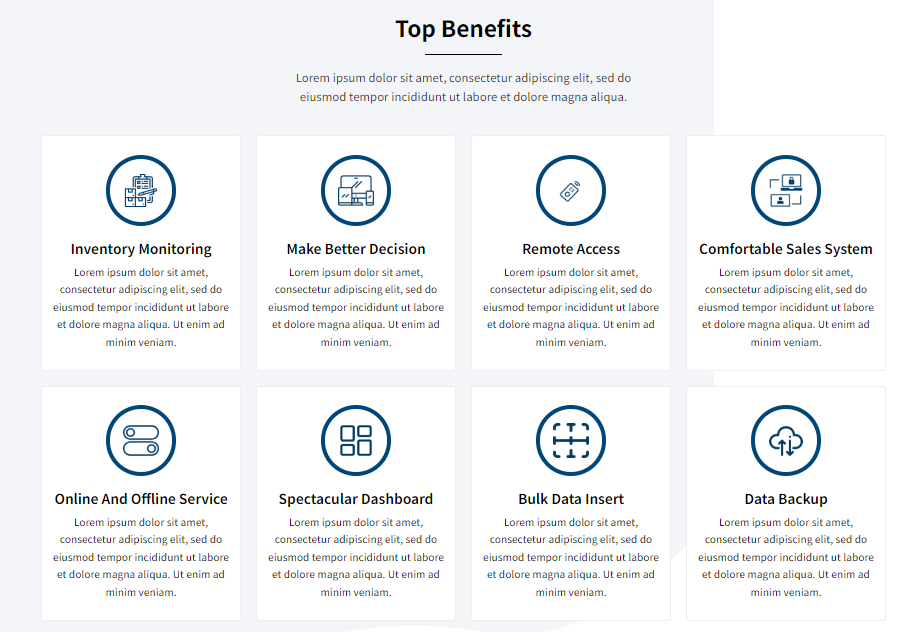
6. Setup Software Module Section
To proceed with the Software Module Section
1)Go to Appearance >> Customize >> Theme Settings >> Software Module
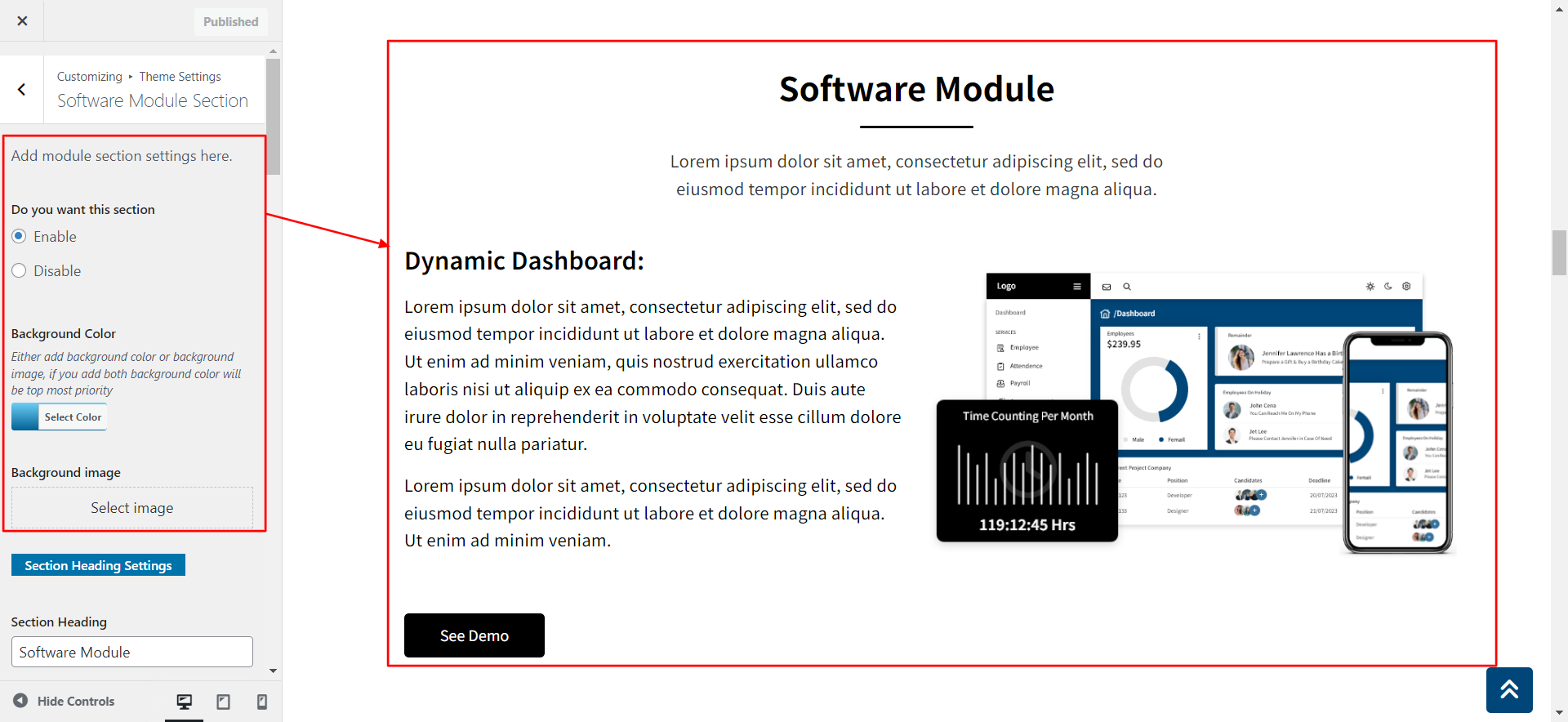
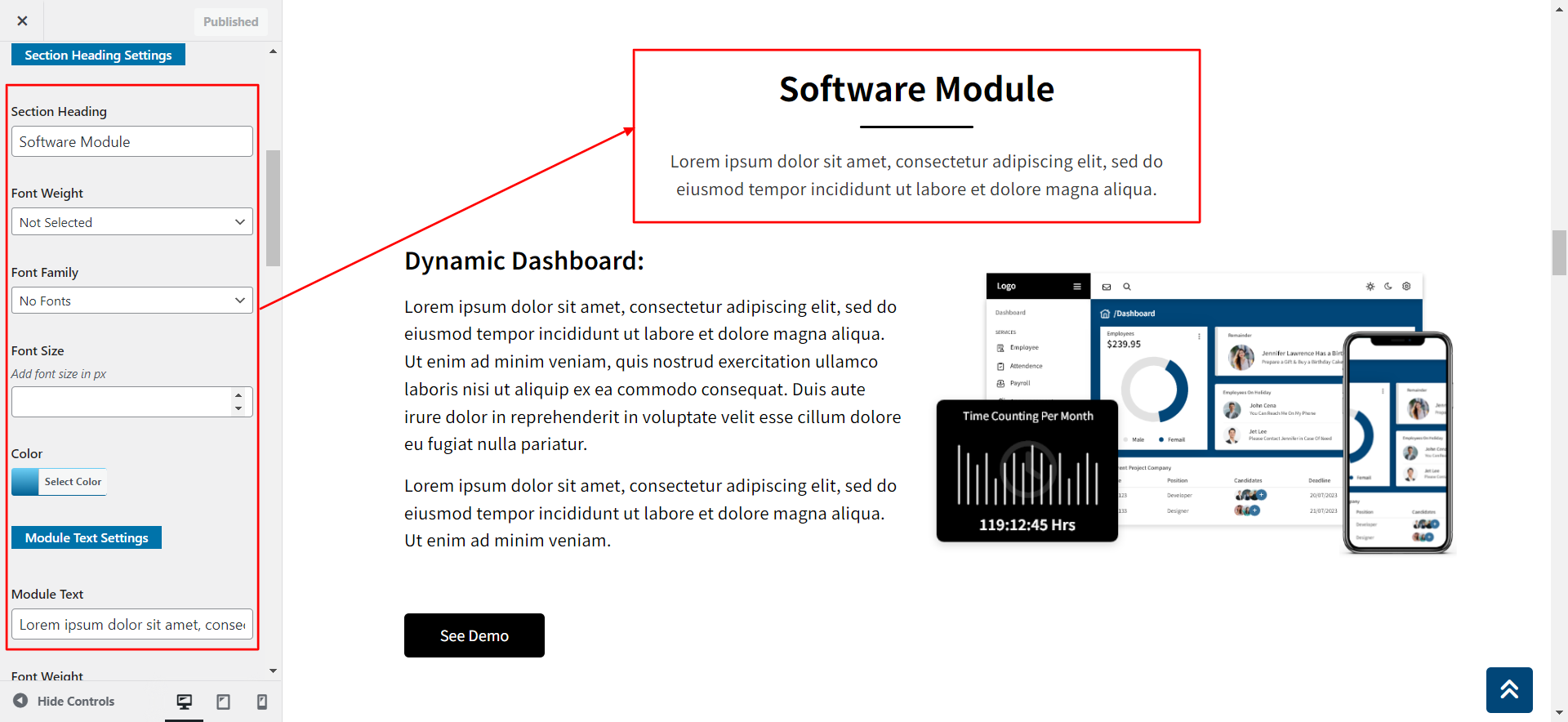
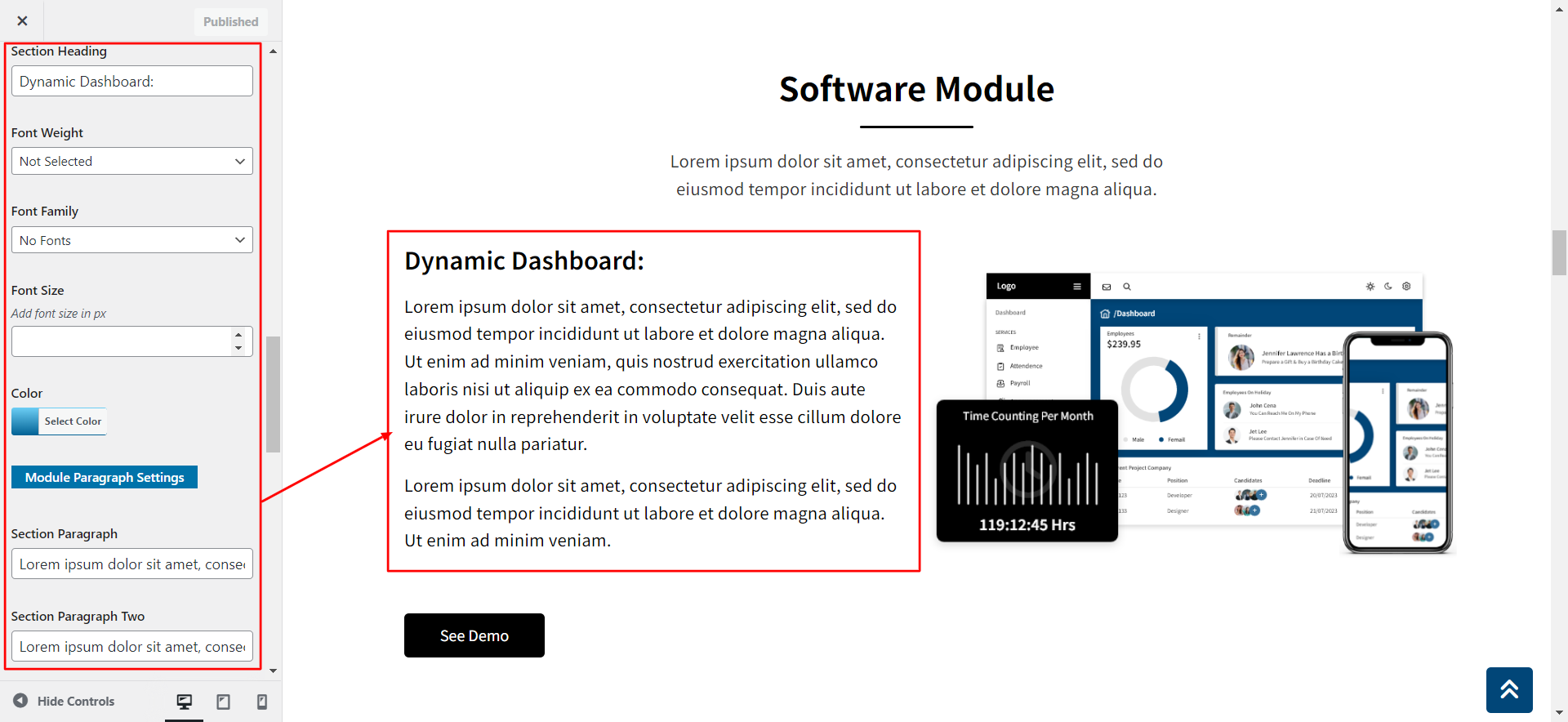
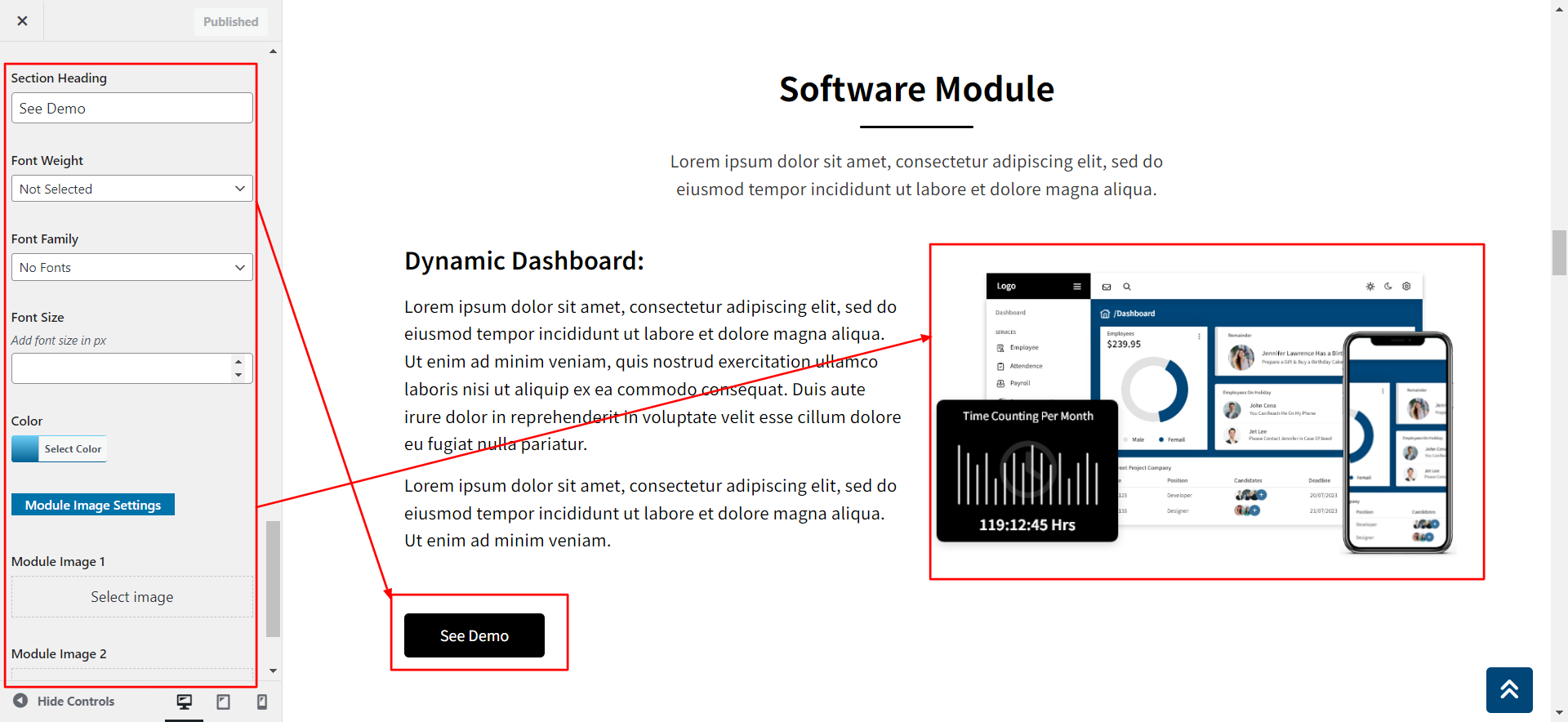
2) Final Image of Software Module Section.
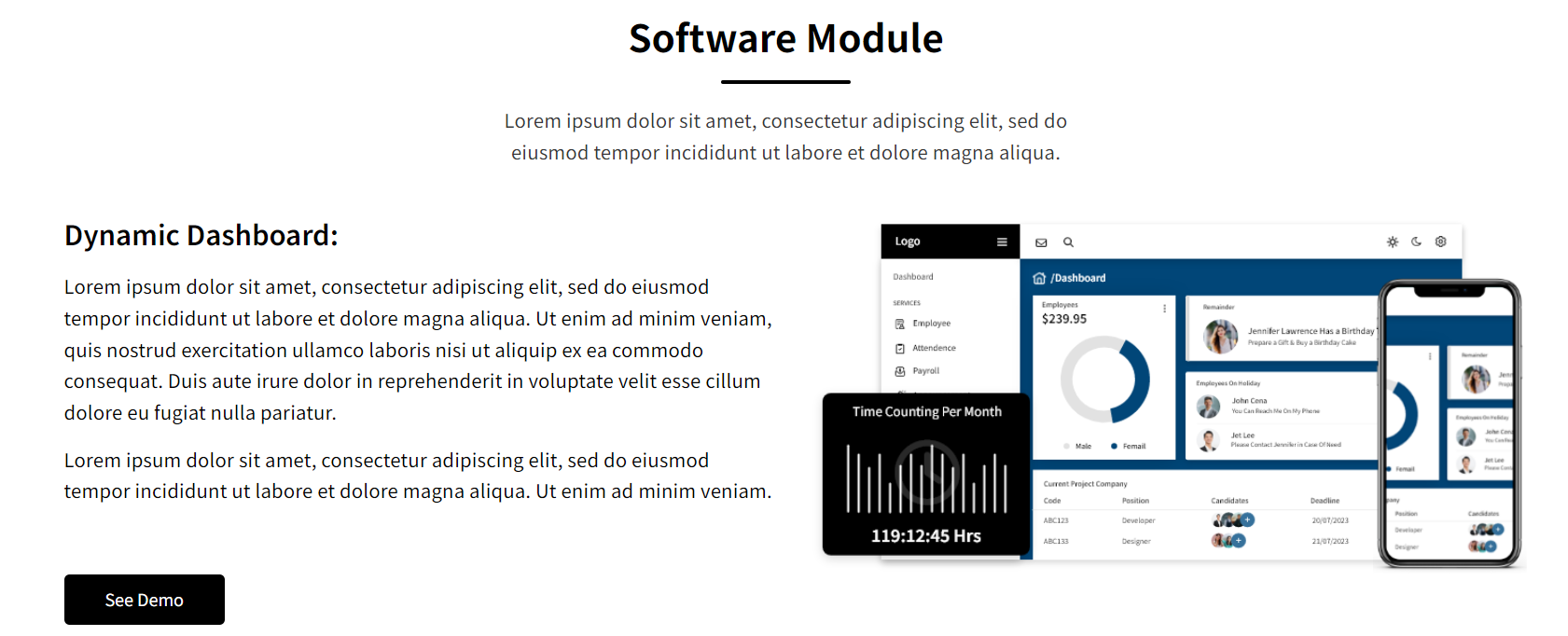
7. Setup Stock Management Section
To proceed with the Stock Management Section
1)Go to Appearance >> Customize >> Theme Settings >> Stock Management
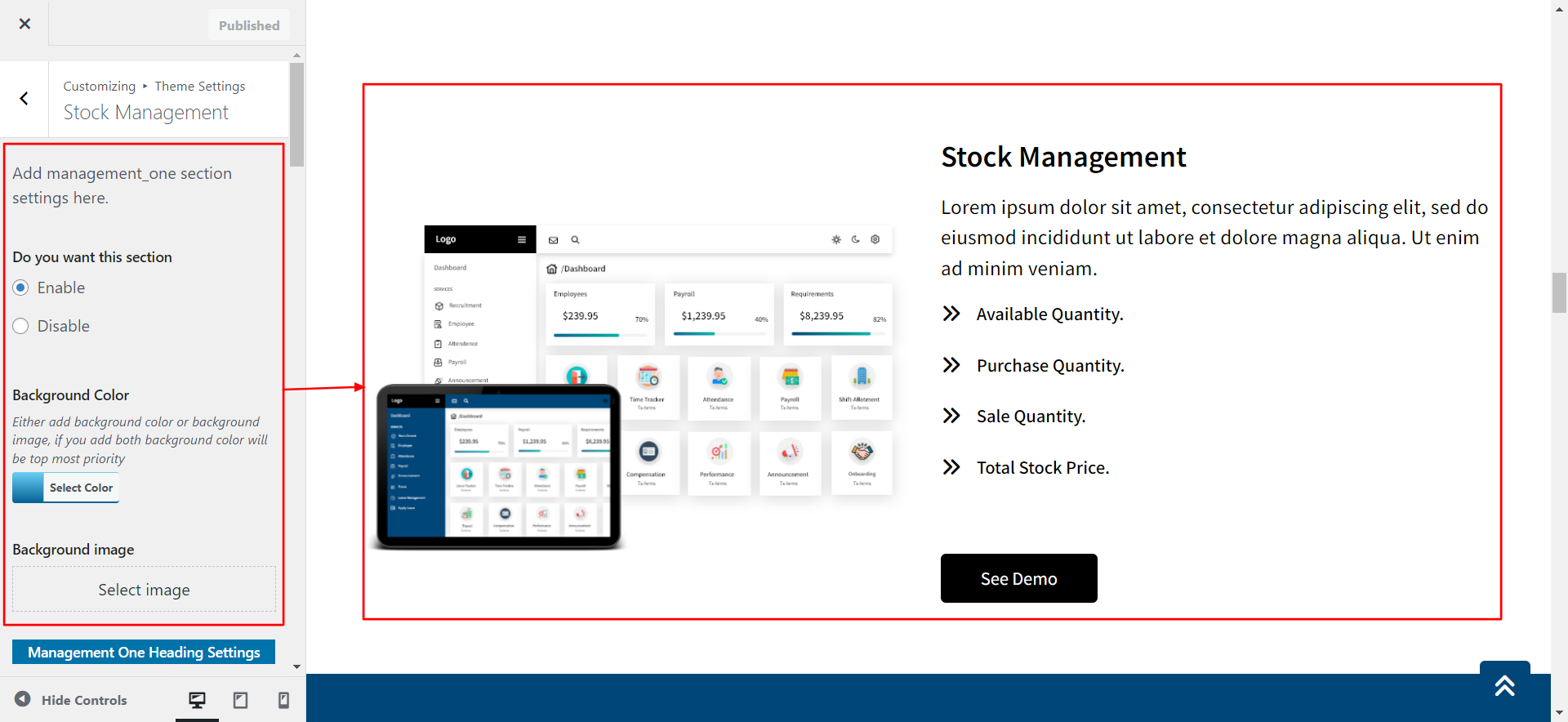
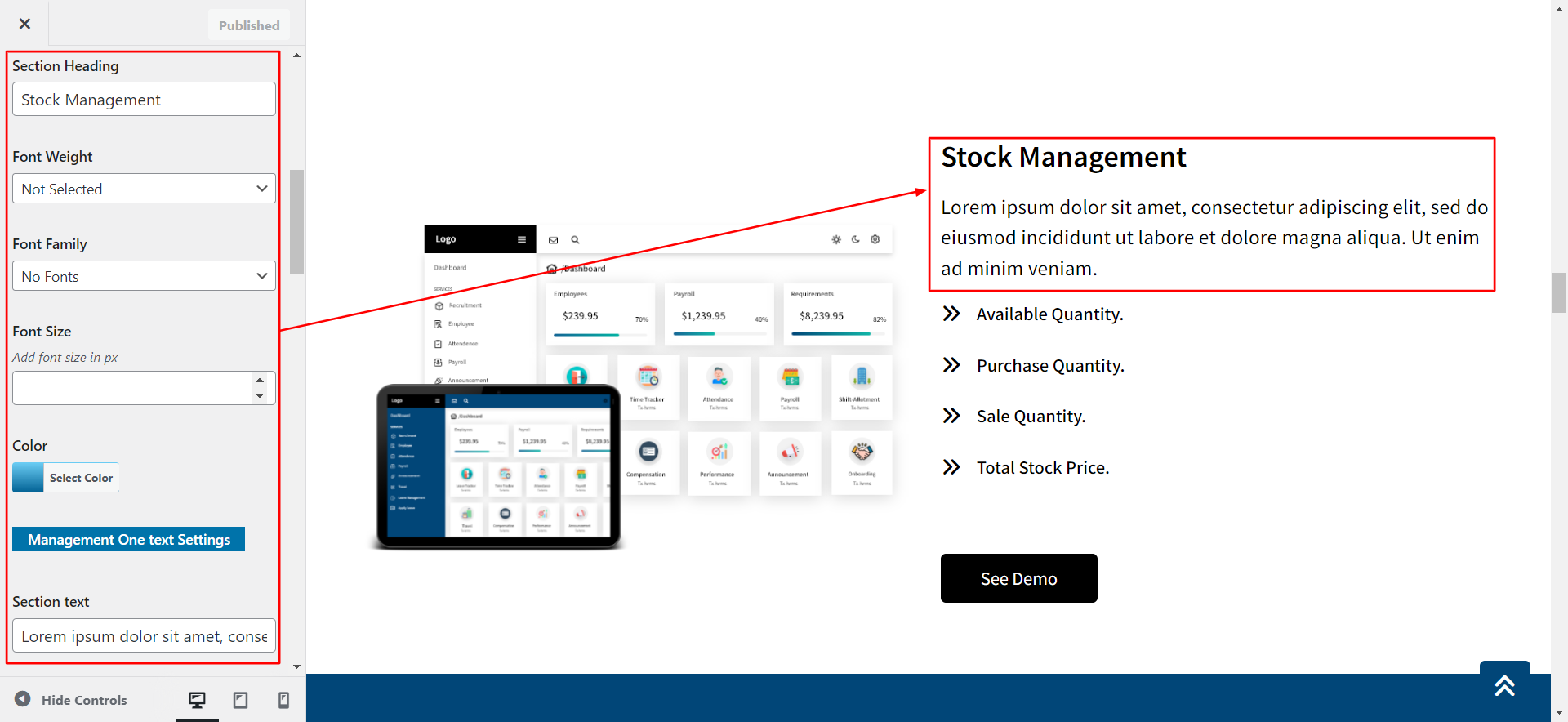
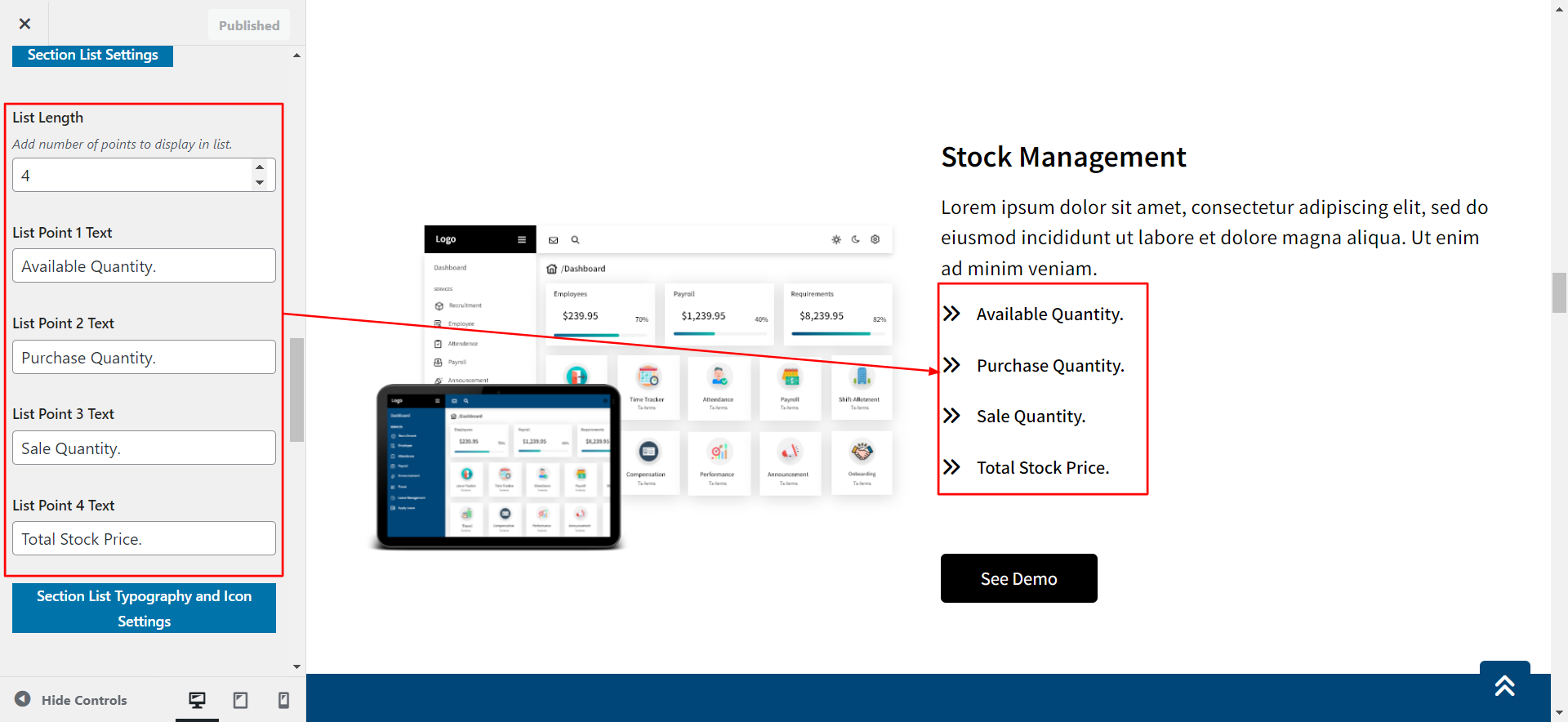
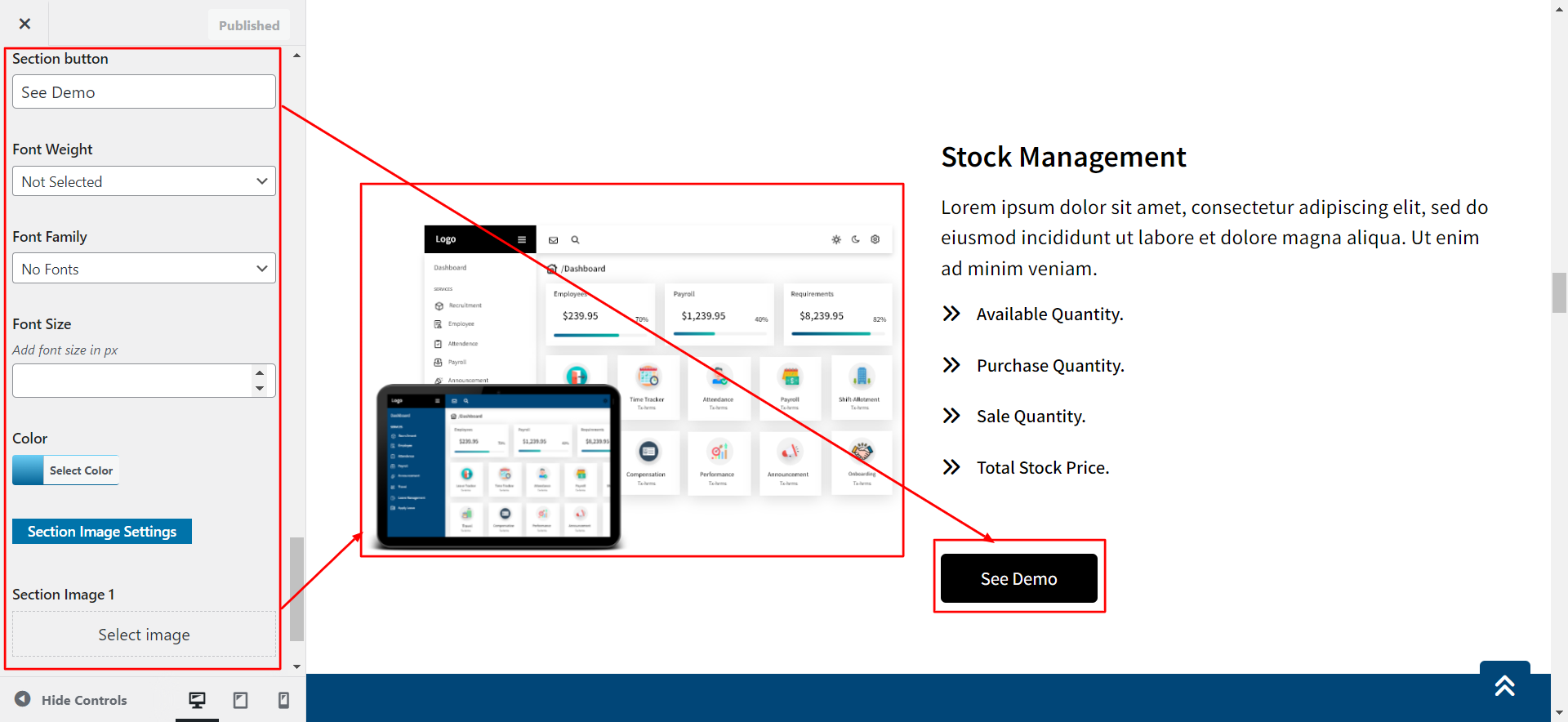
2) Final Image of Stock Management Section.
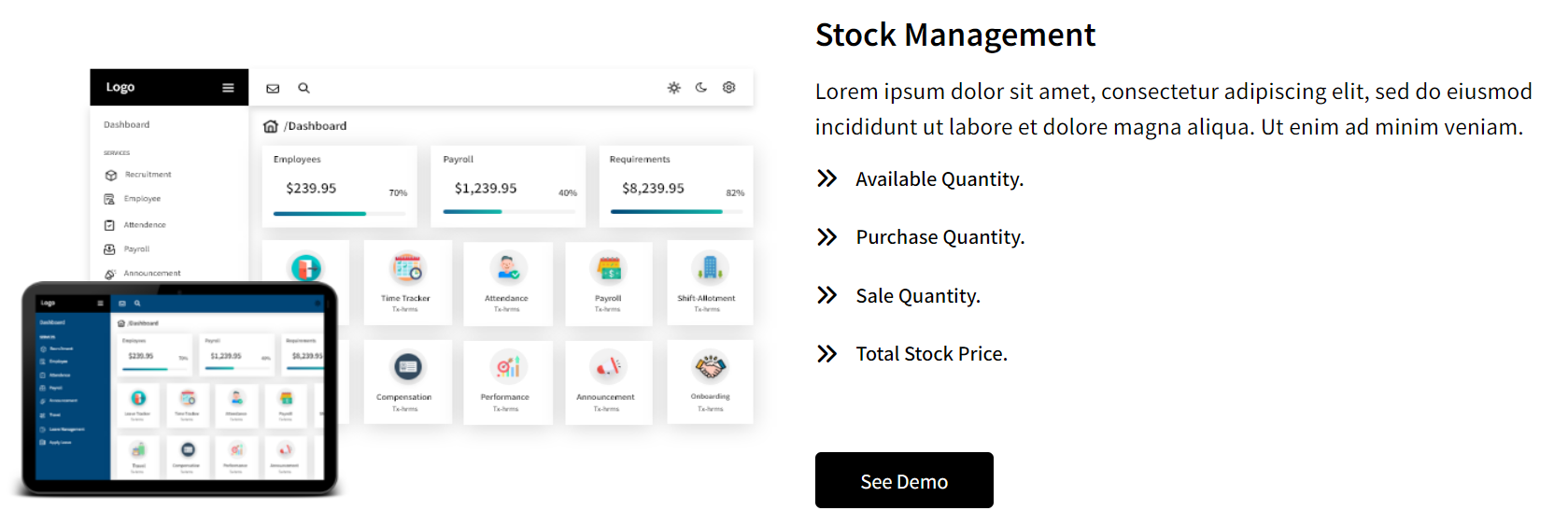
8. Setup Features Section
To proceed with the Features Section
1)Go to Appearance >> Customize >> Theme Settings >> Features Section
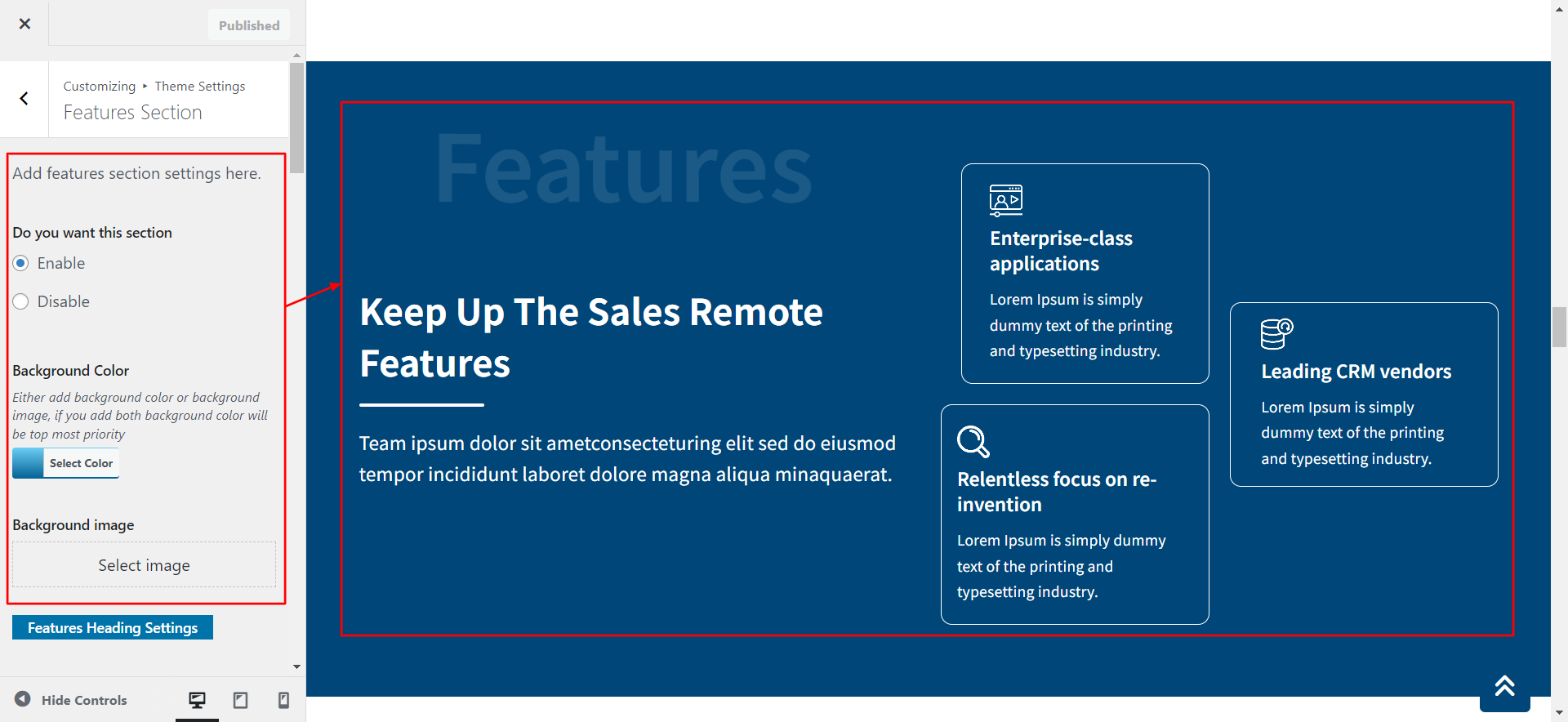
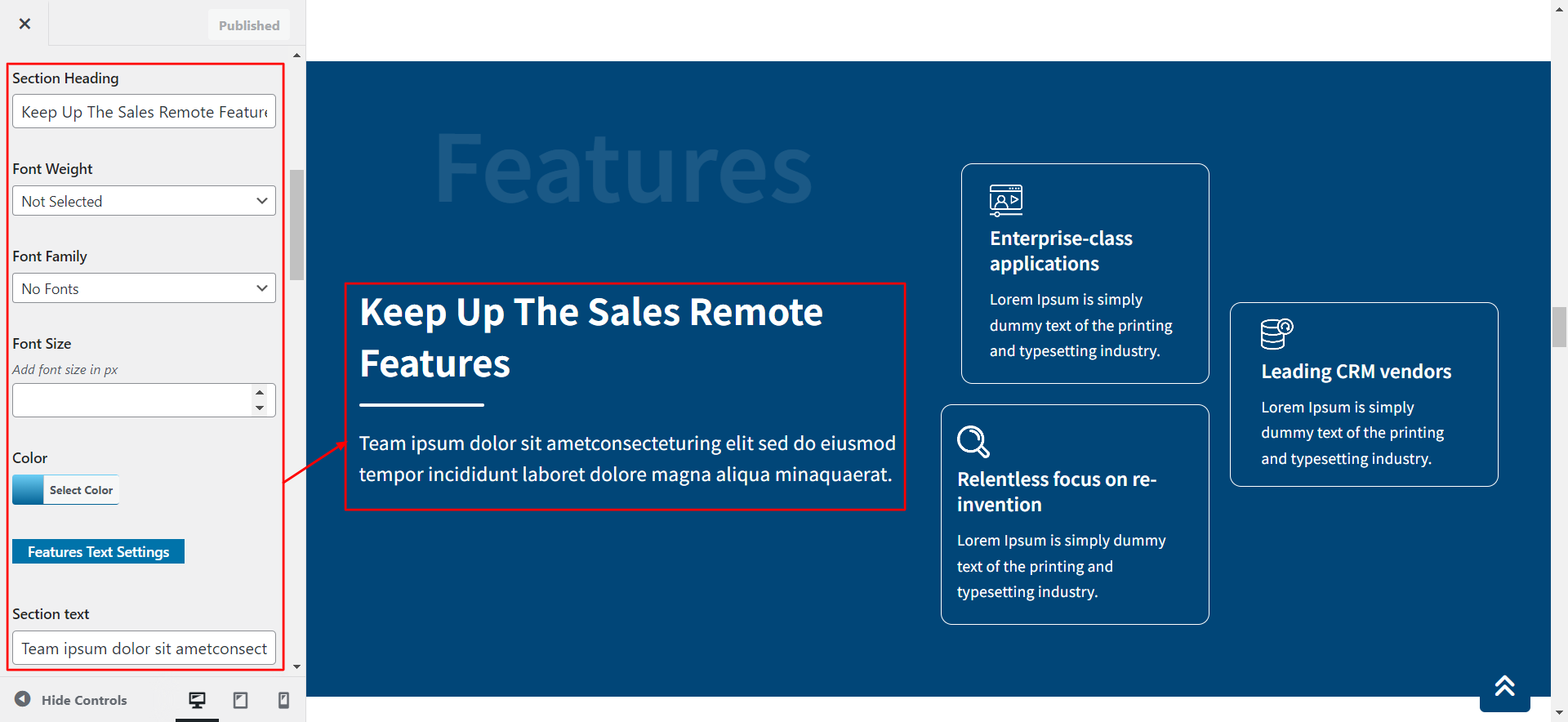
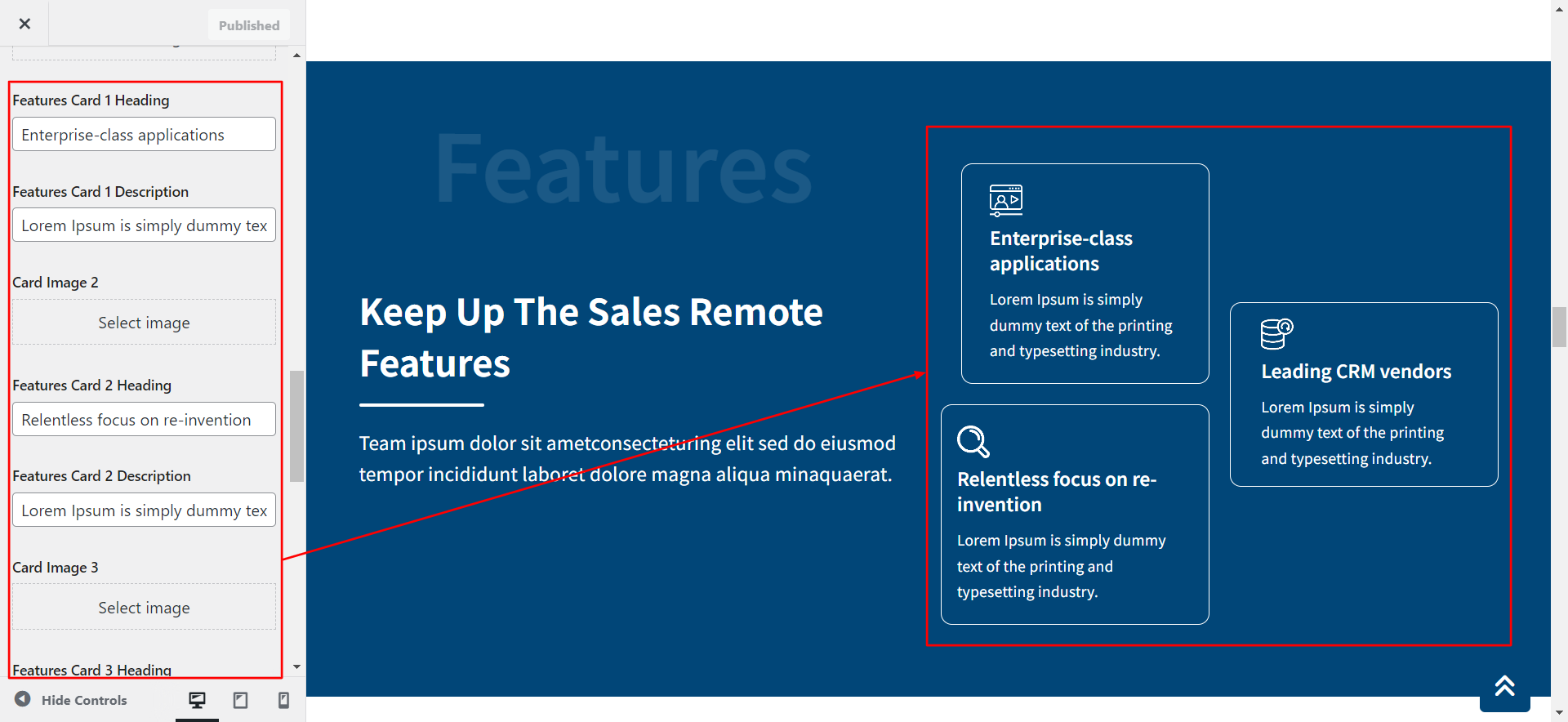
2) Final Image of Features Section.

9. Setup Accounts Management Section
To proceed with the Accounts Management Section
1)Go to Appearance >> Customize >> Theme Settings >> Accounts Management Section
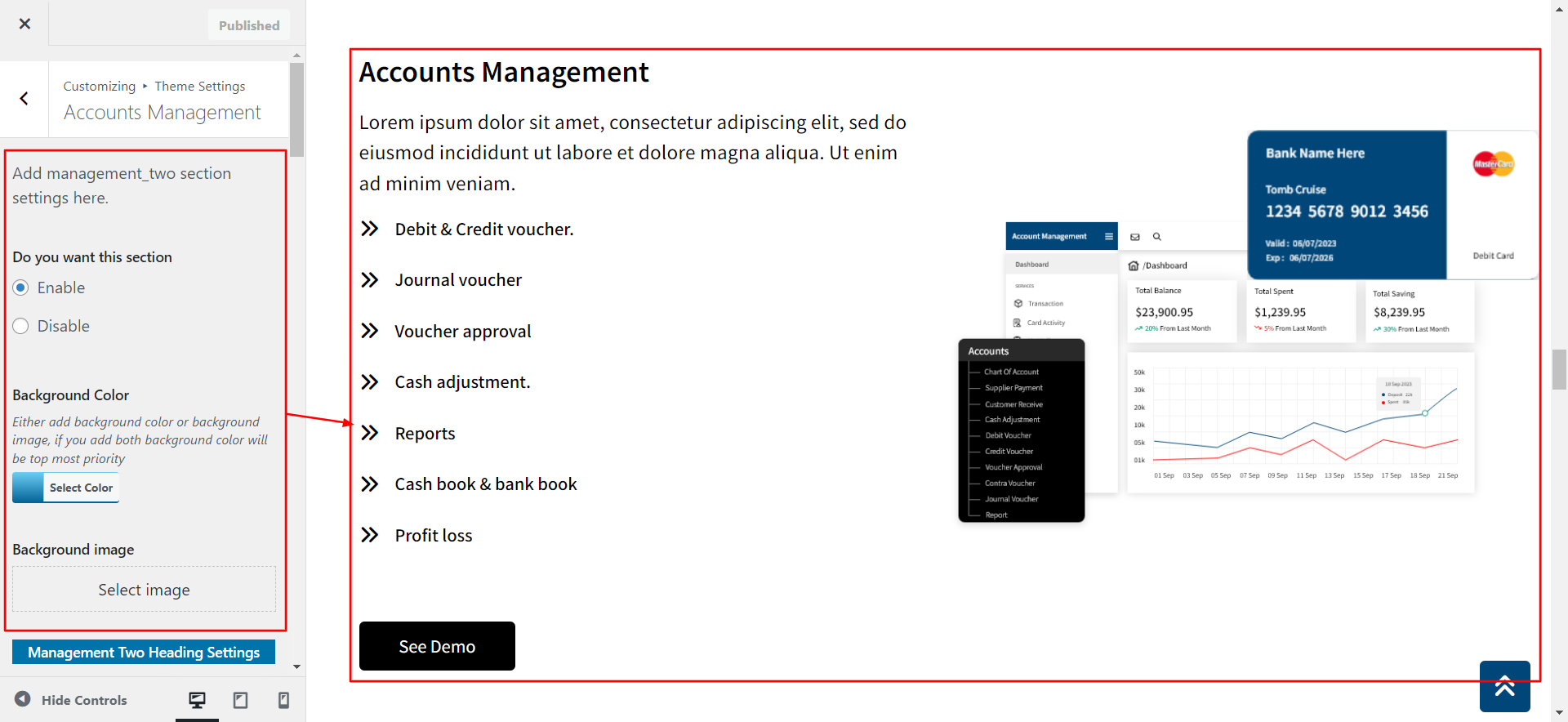
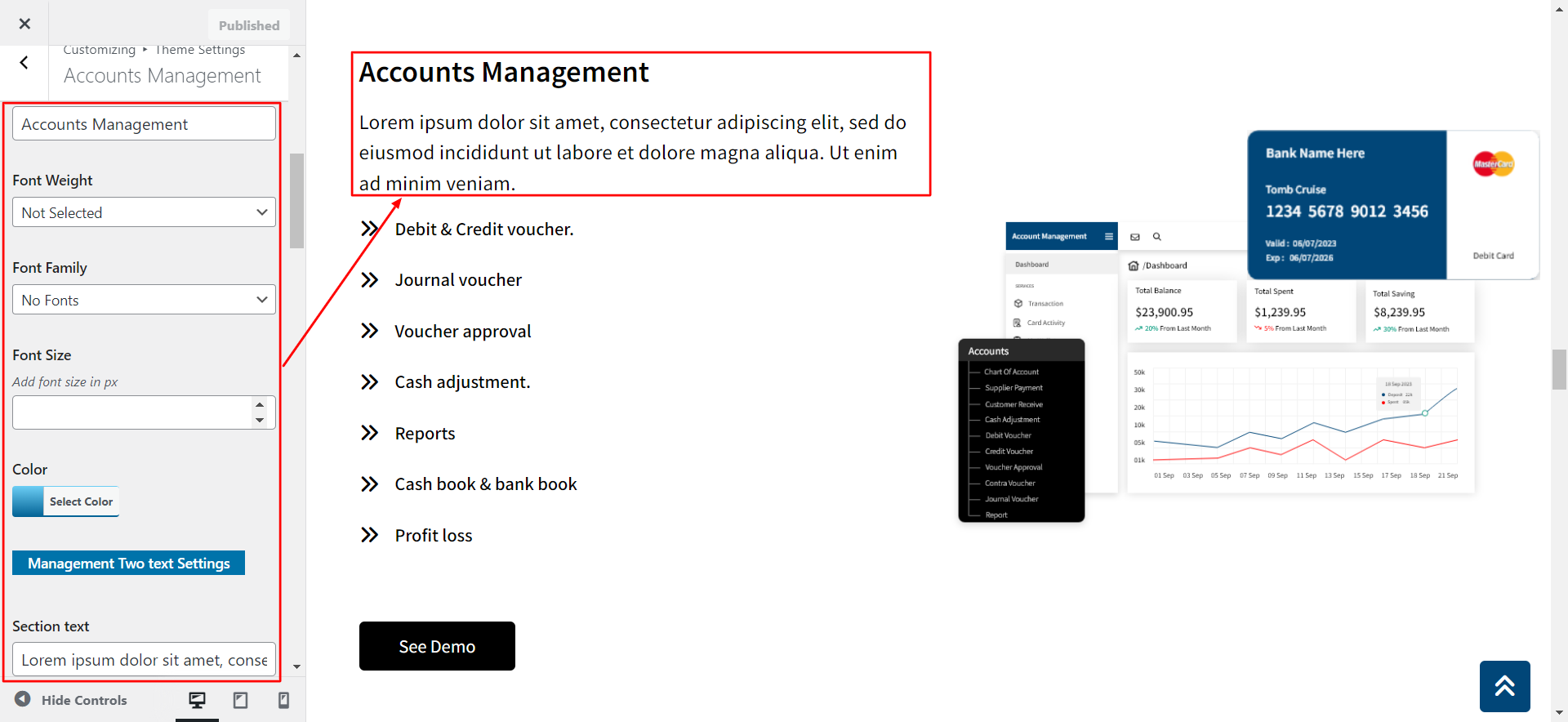
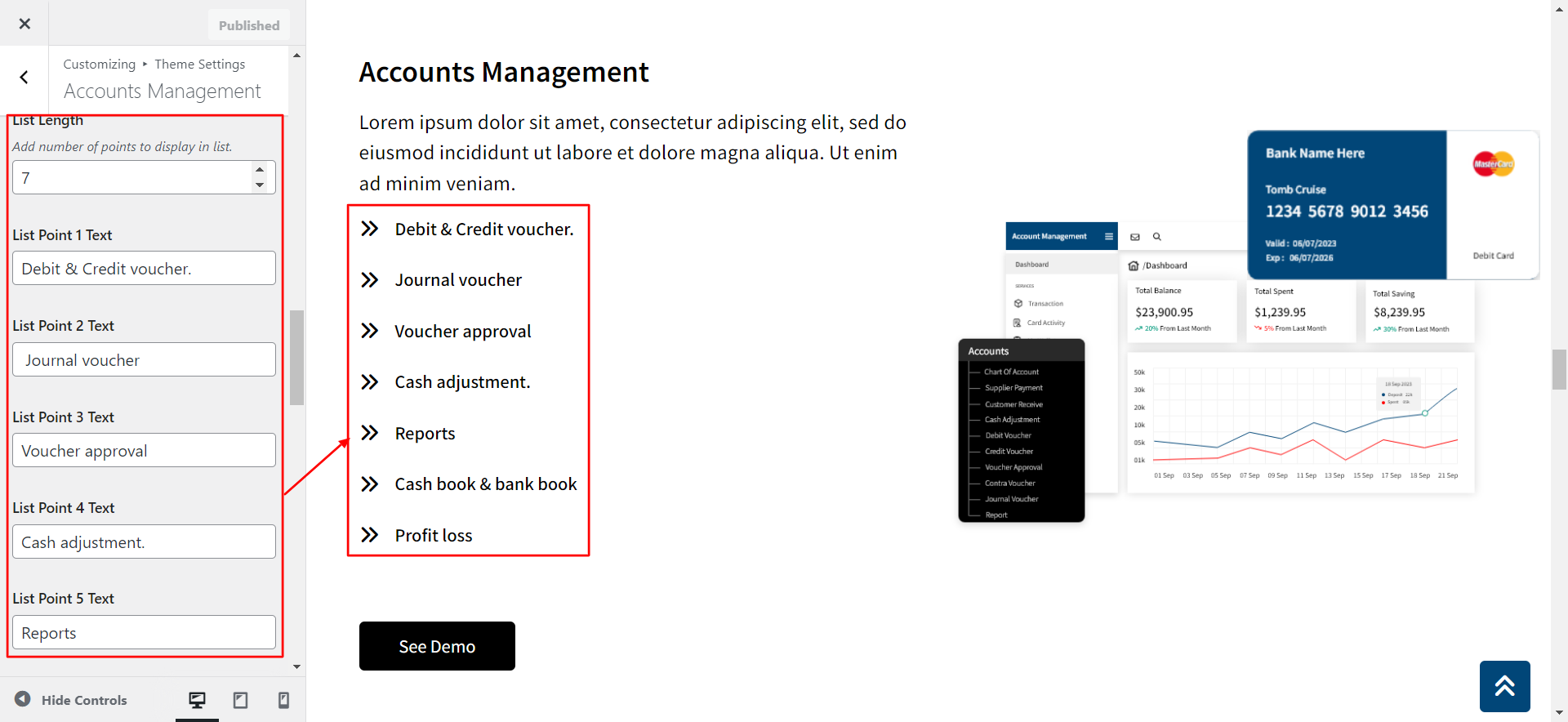
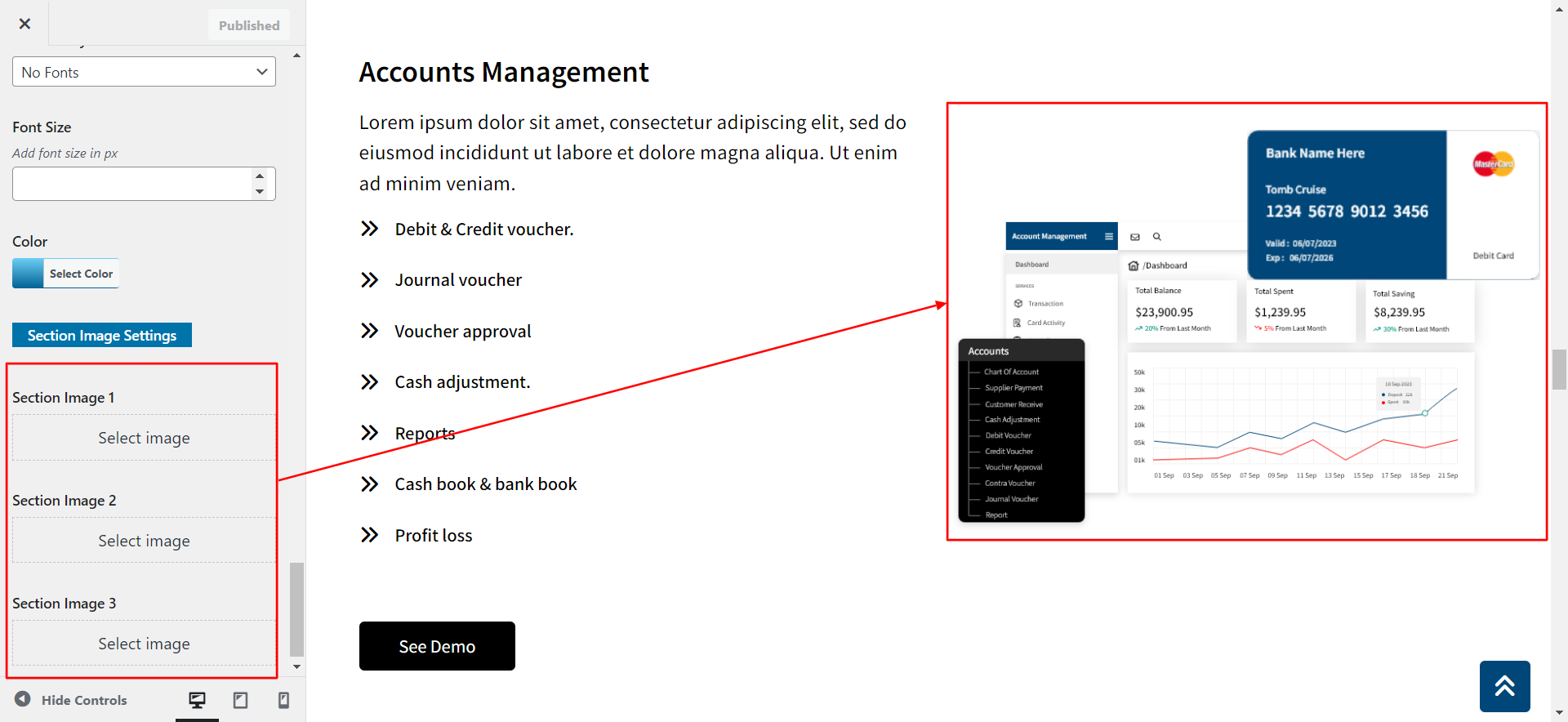
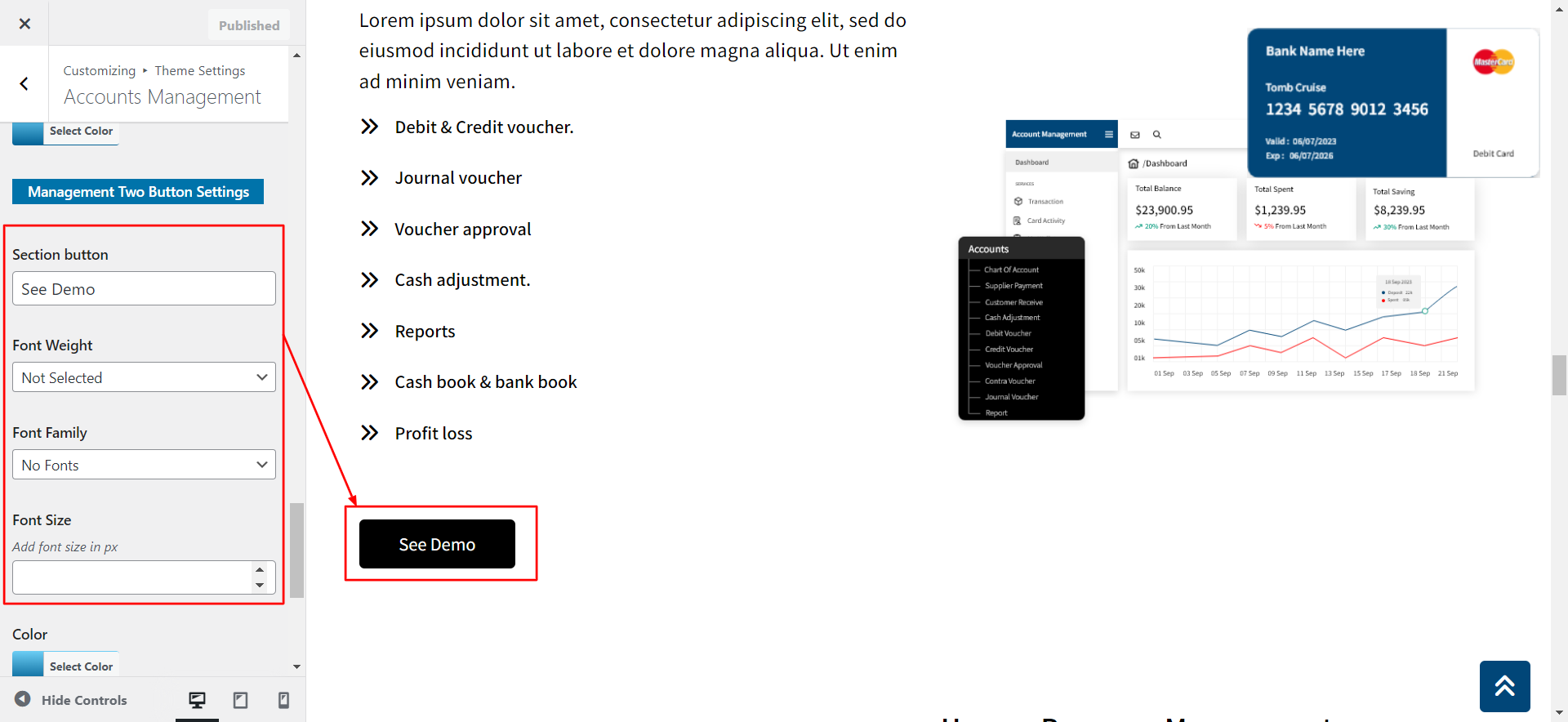
2) Final Image of Accounts Management Section.
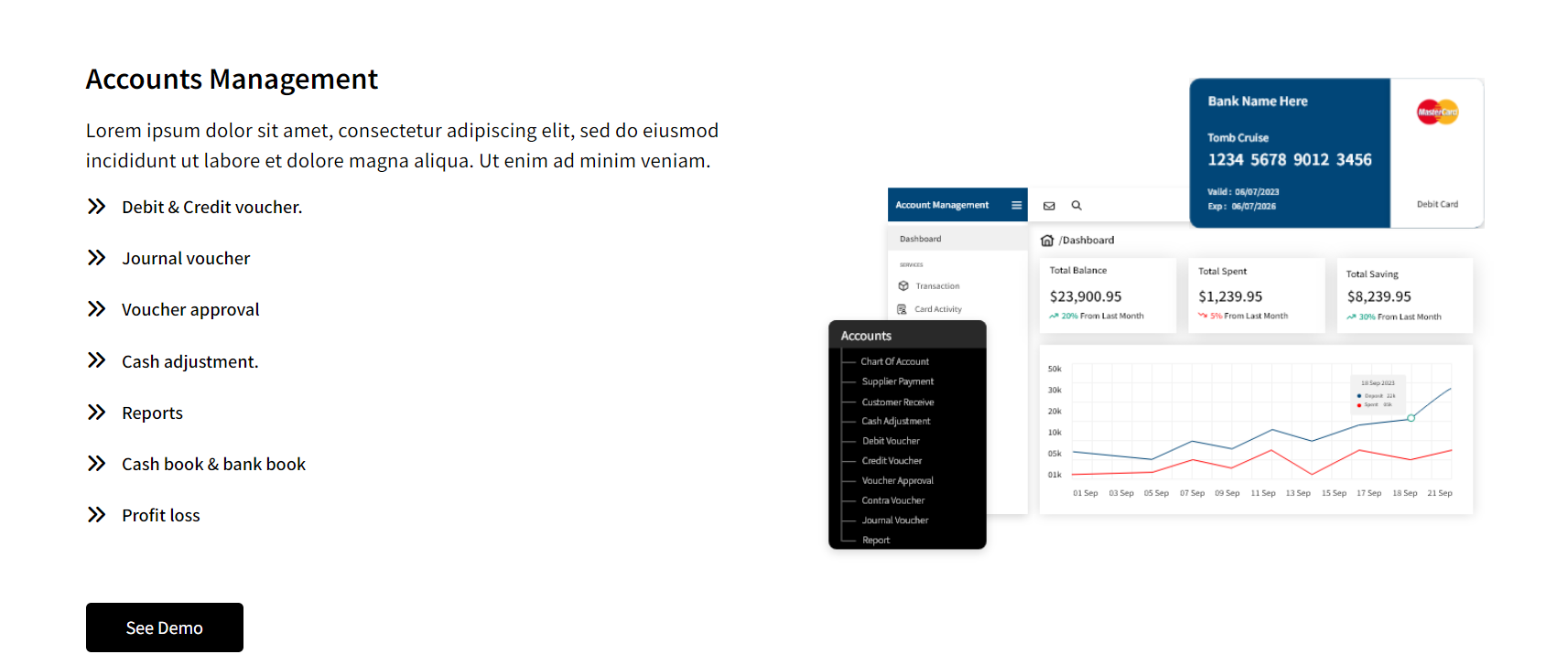
10. Setup Human Resource Management Section
To proceed with the Human Resource Management Section
1)Go to Appearance >> Customize >> Theme Settings >> Human Resource Management Section
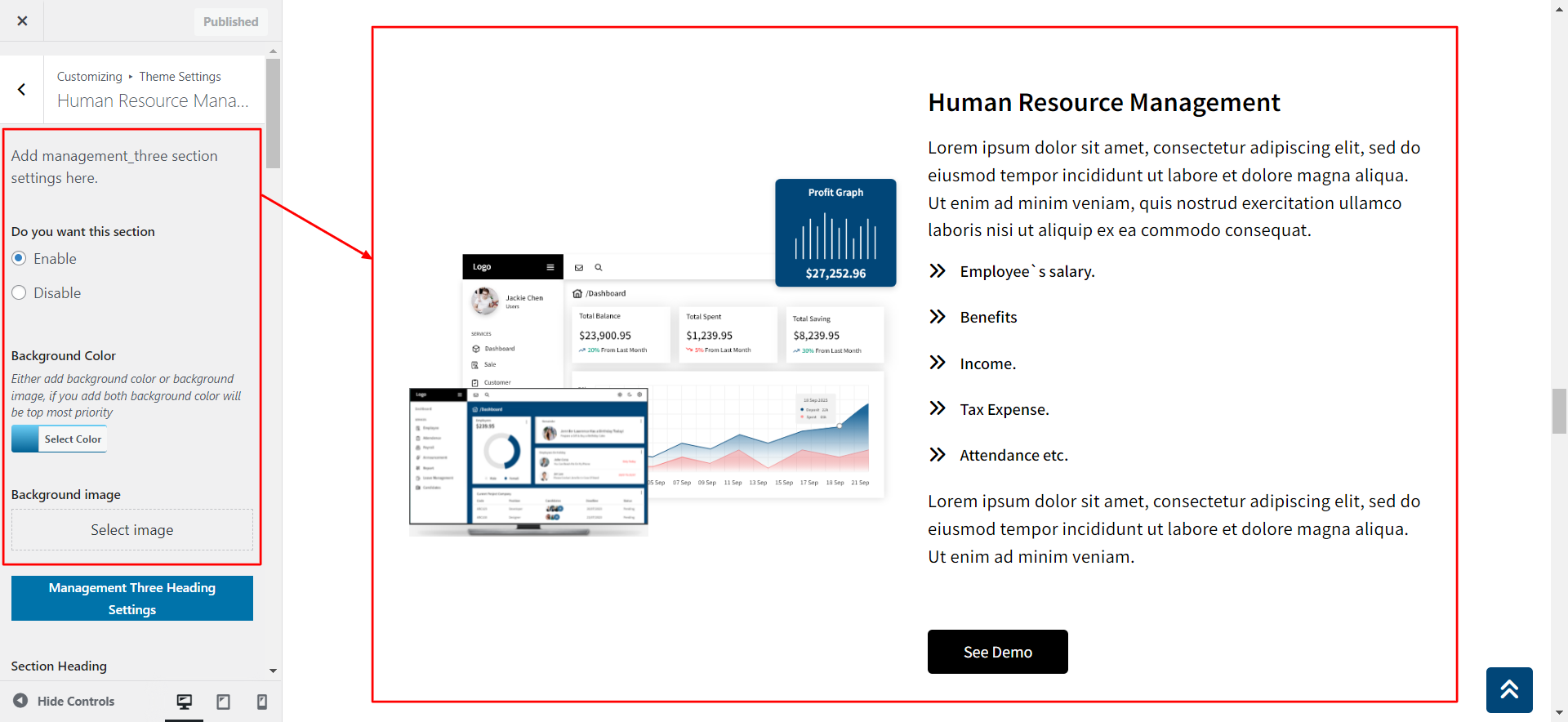
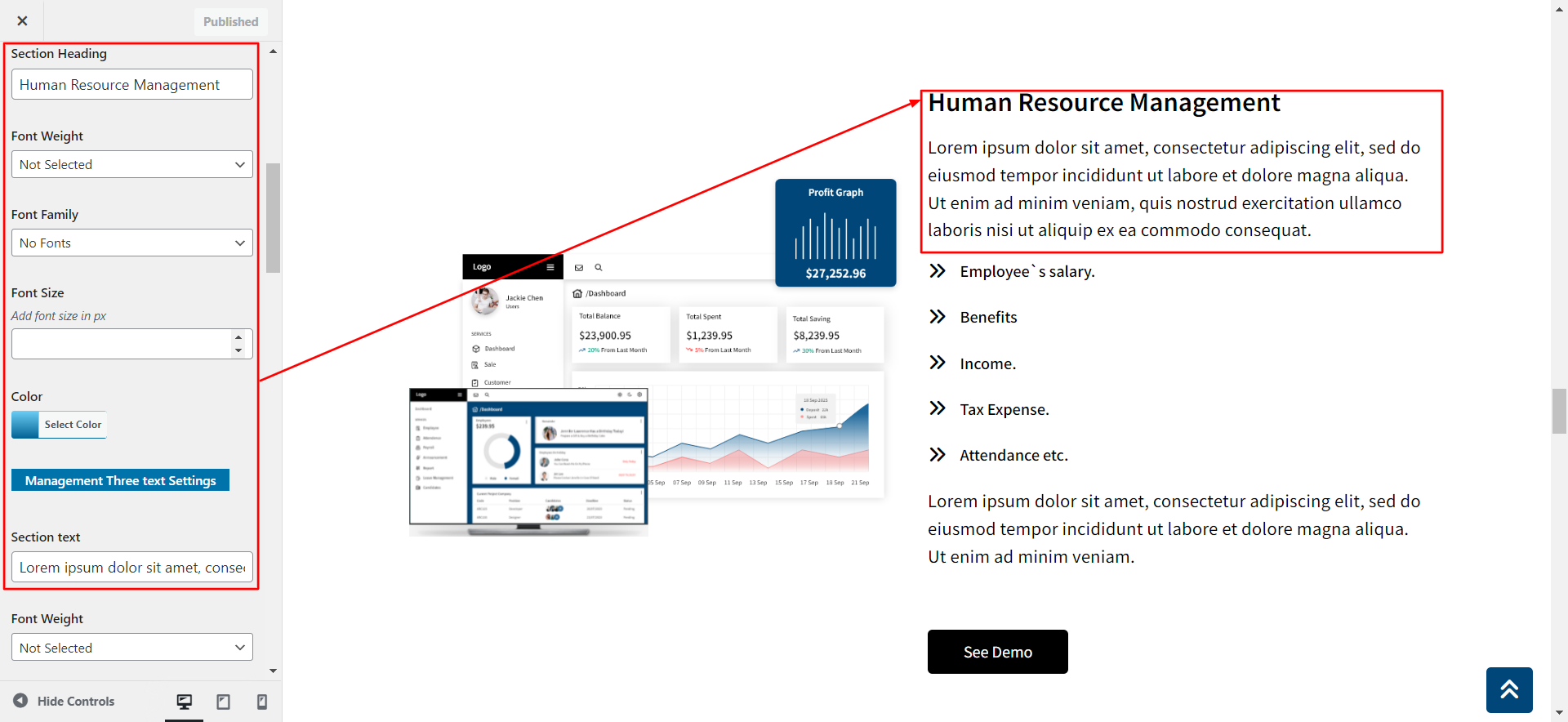
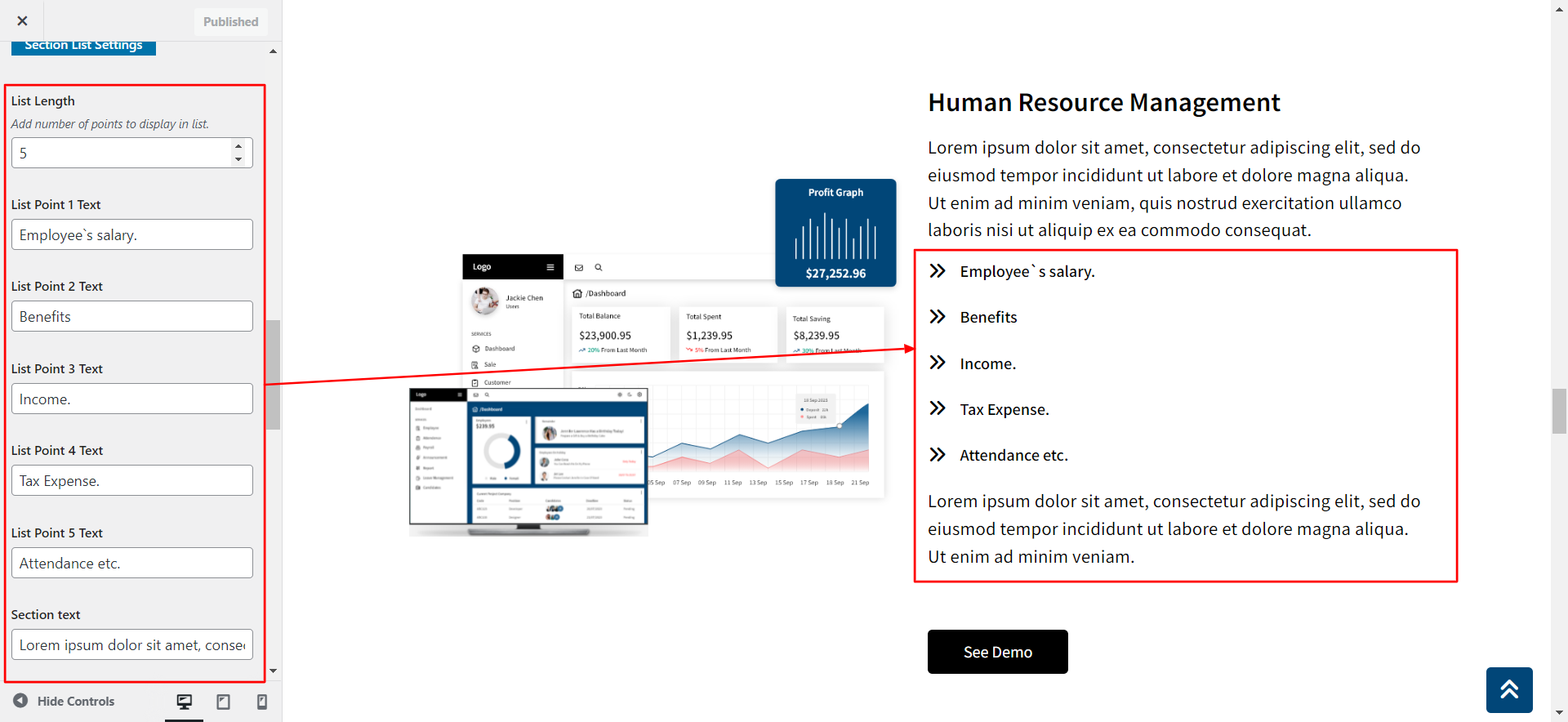
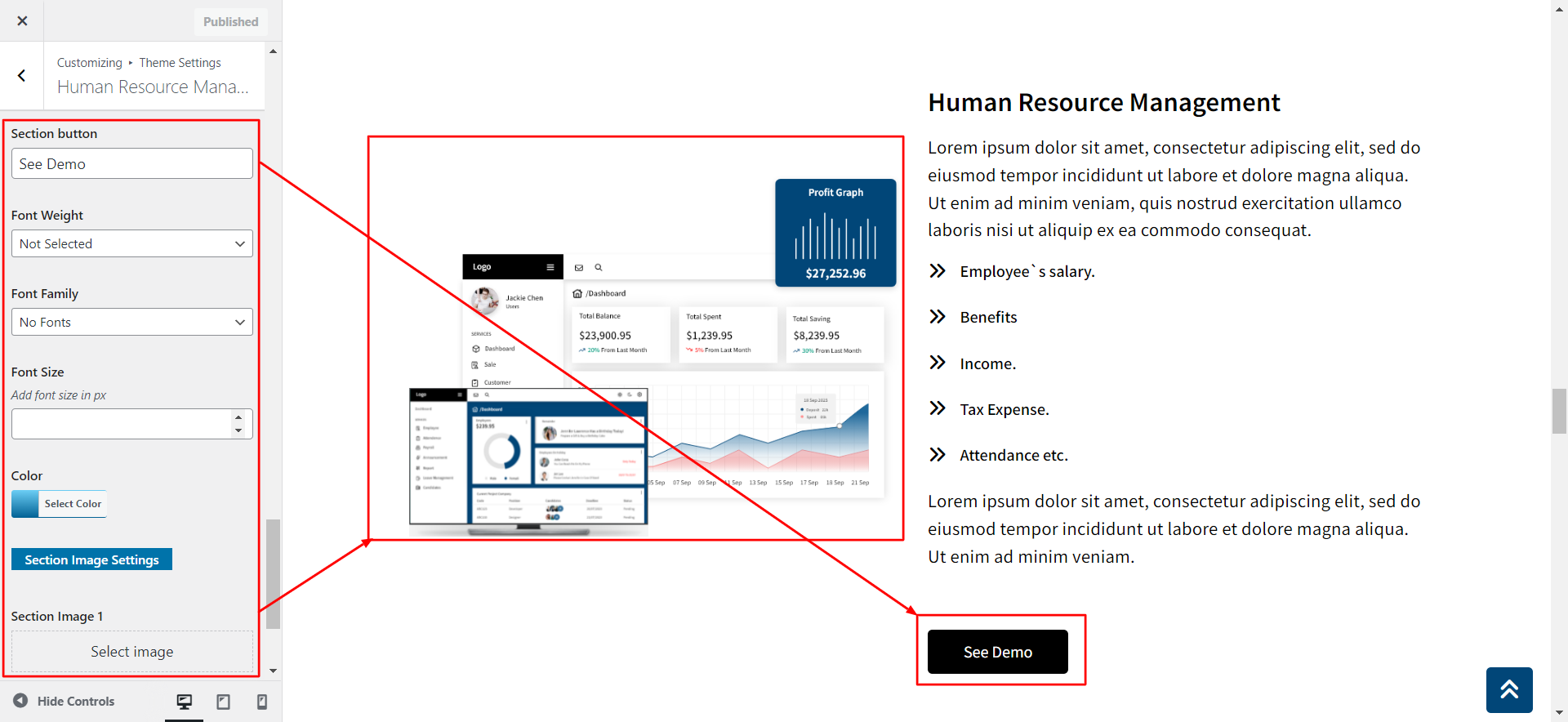
2) Final Image of Human Resource Management Section.
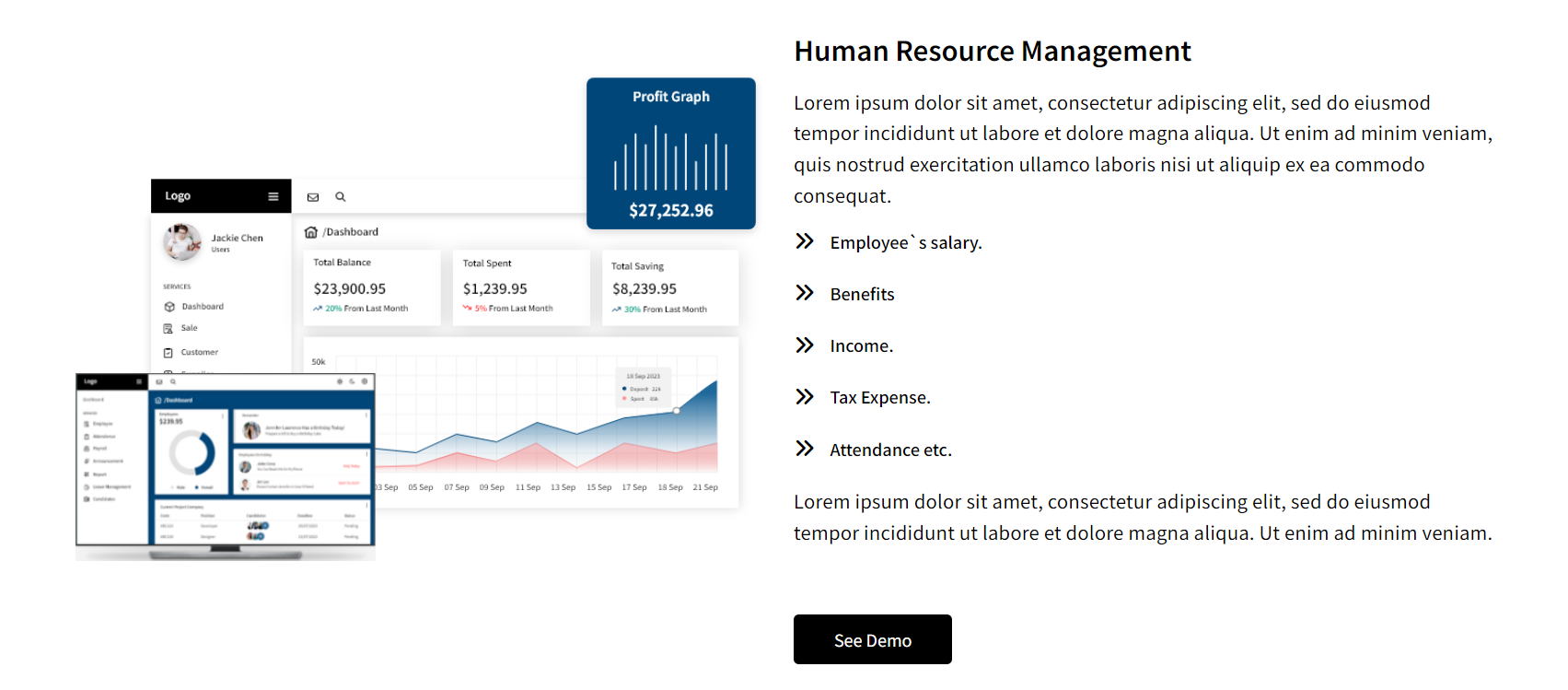
11. Setup Download App Section
To proceed with the Download App Section
1)Go to Appearance >> Customize >> Theme Settings >> Download App Section
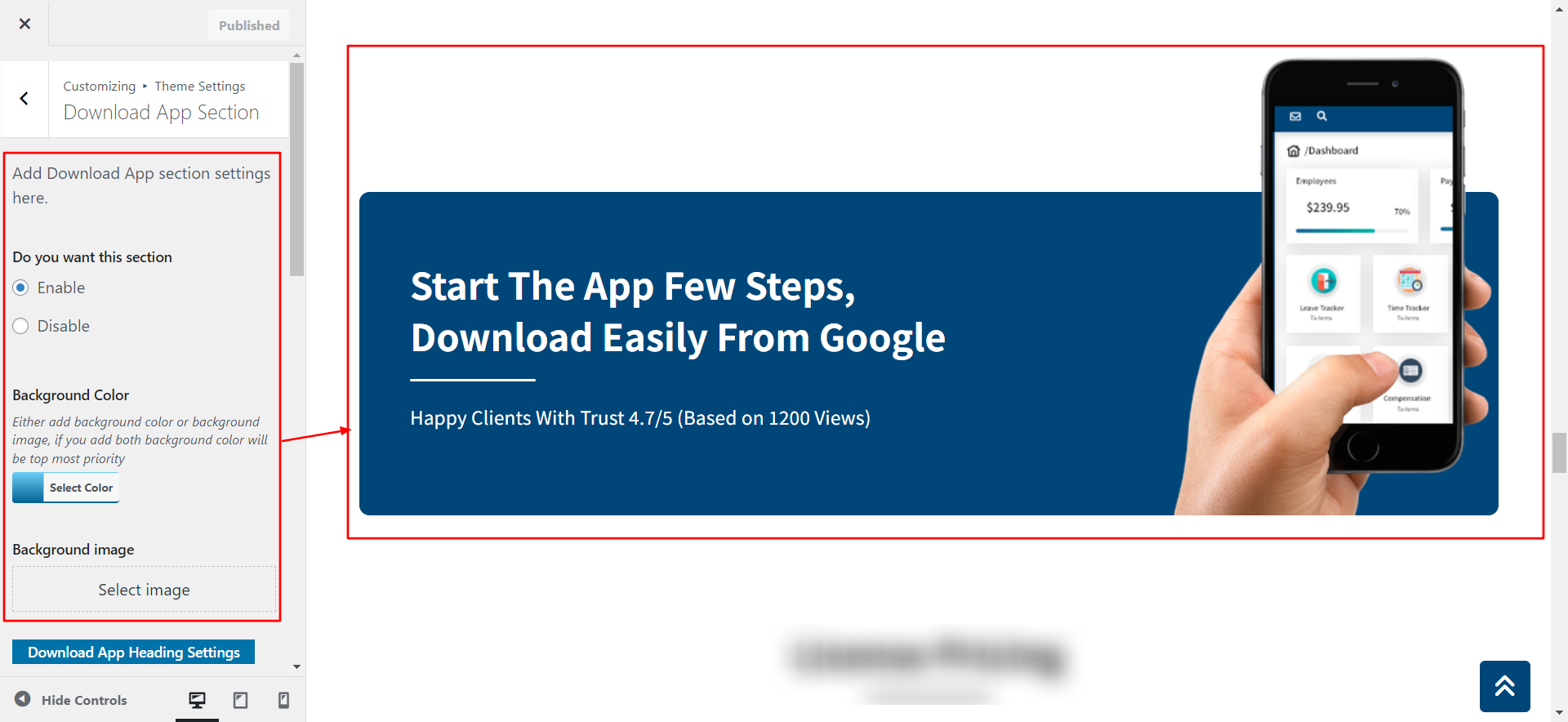
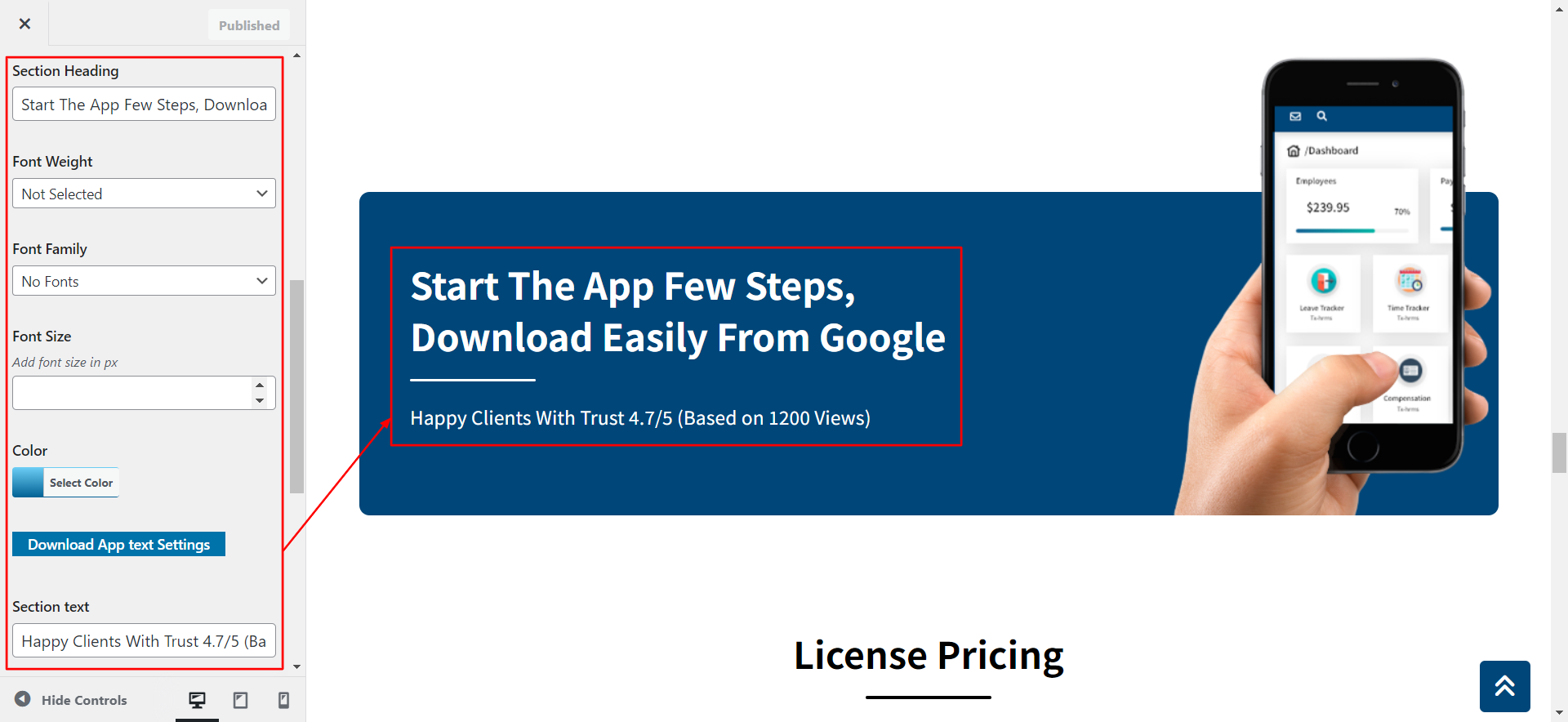
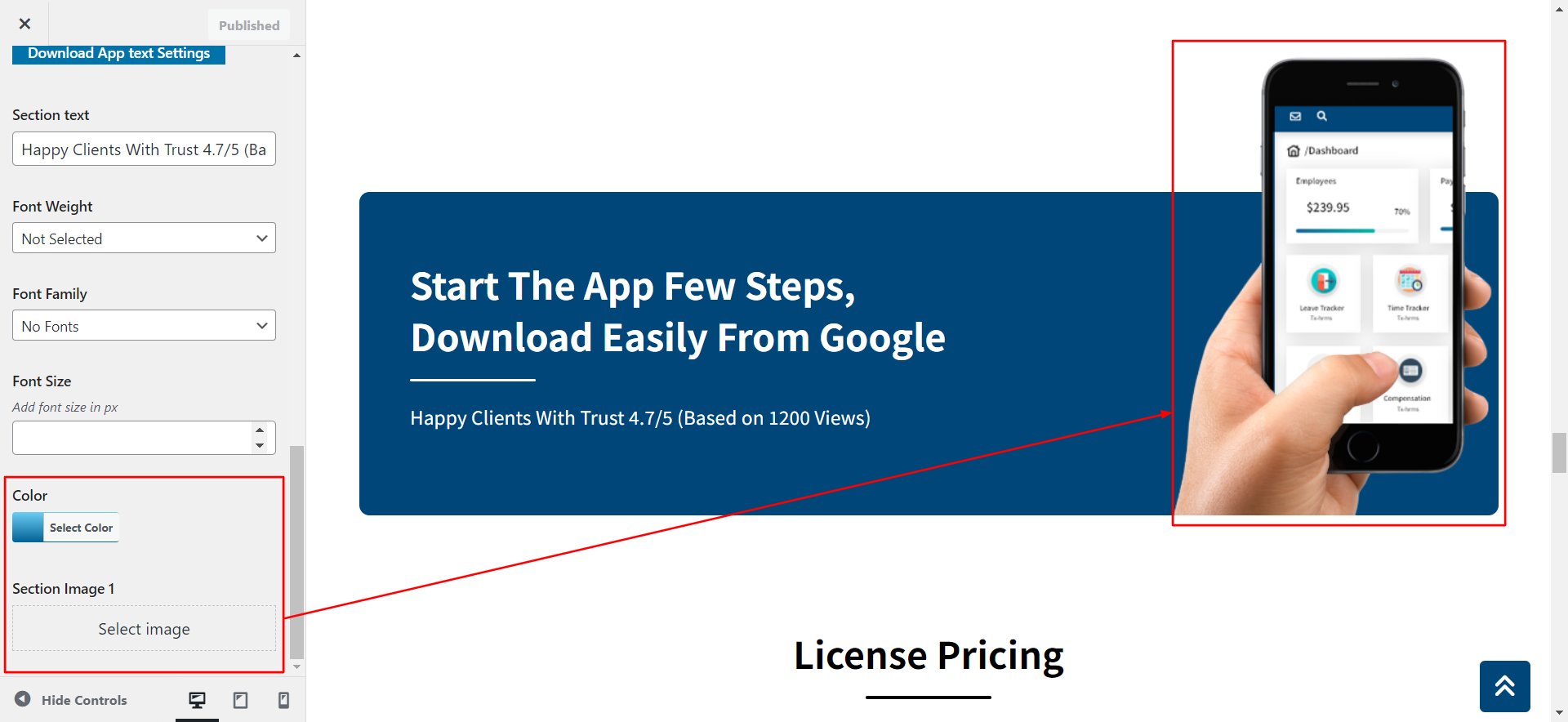
2) Final Image of Download App Section.
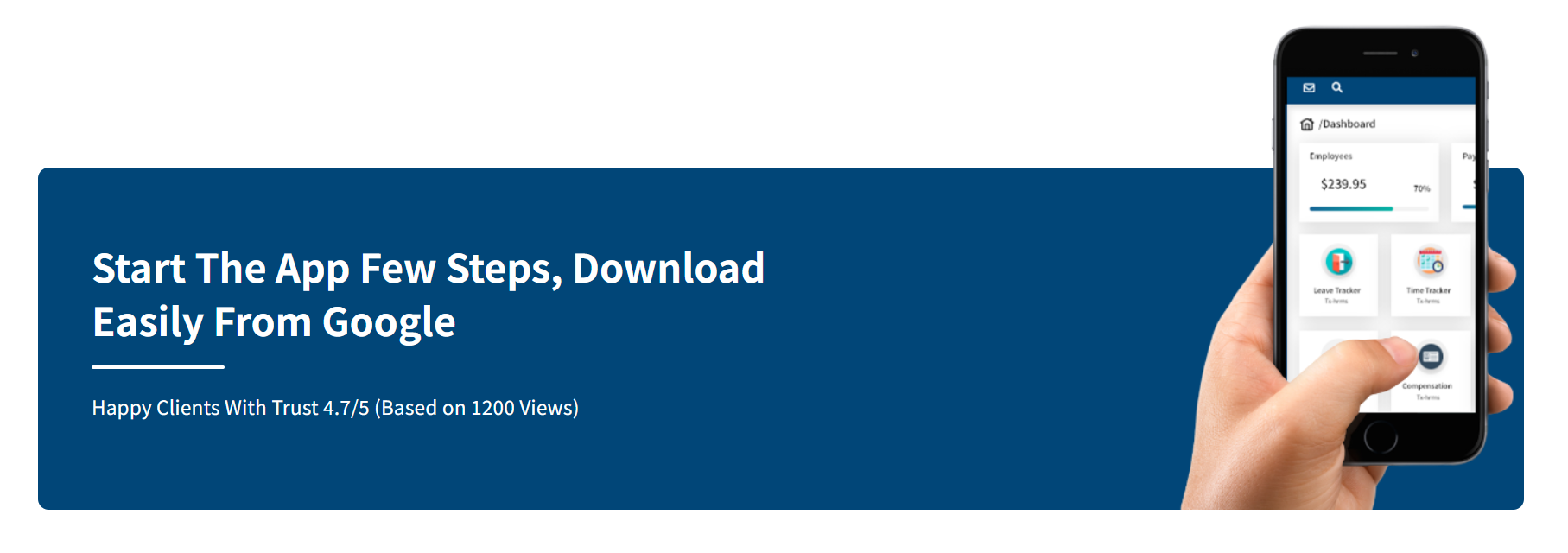
12. Setup License Pricing Section
To Setup License Pricing Settings
1) Go to Dashboard >> Poduct >> Edit
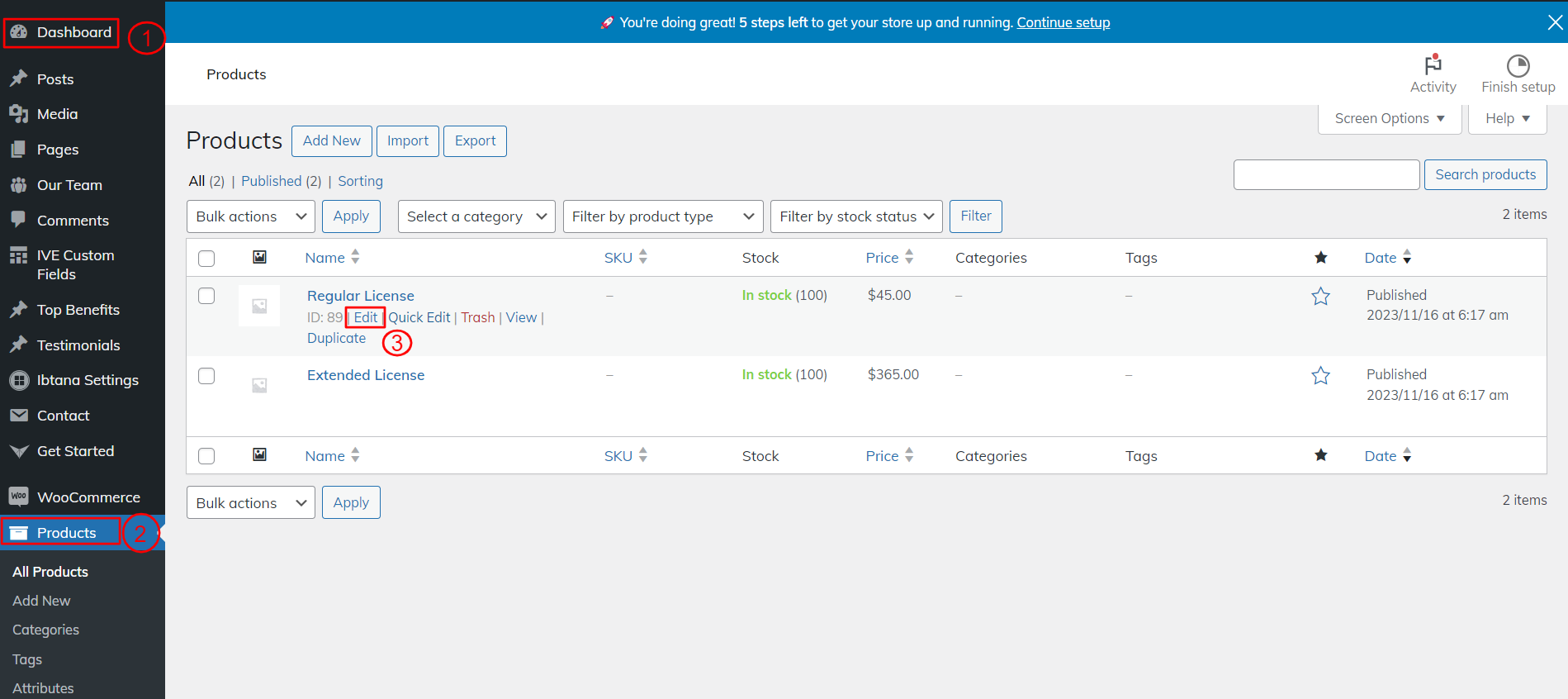
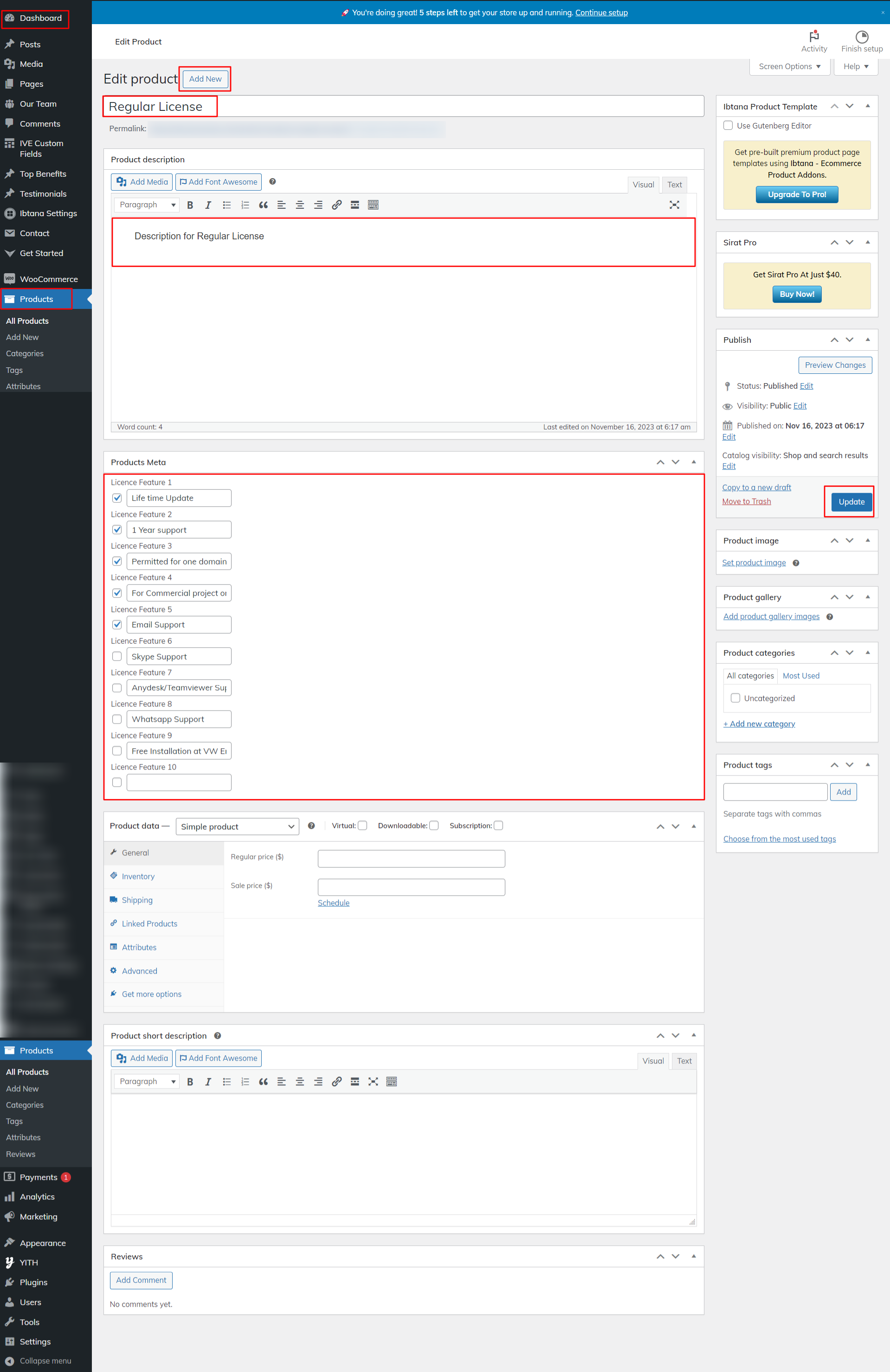
To Setup Contact Form Settings
2) Go to Dashboard >> Contact >> Edit
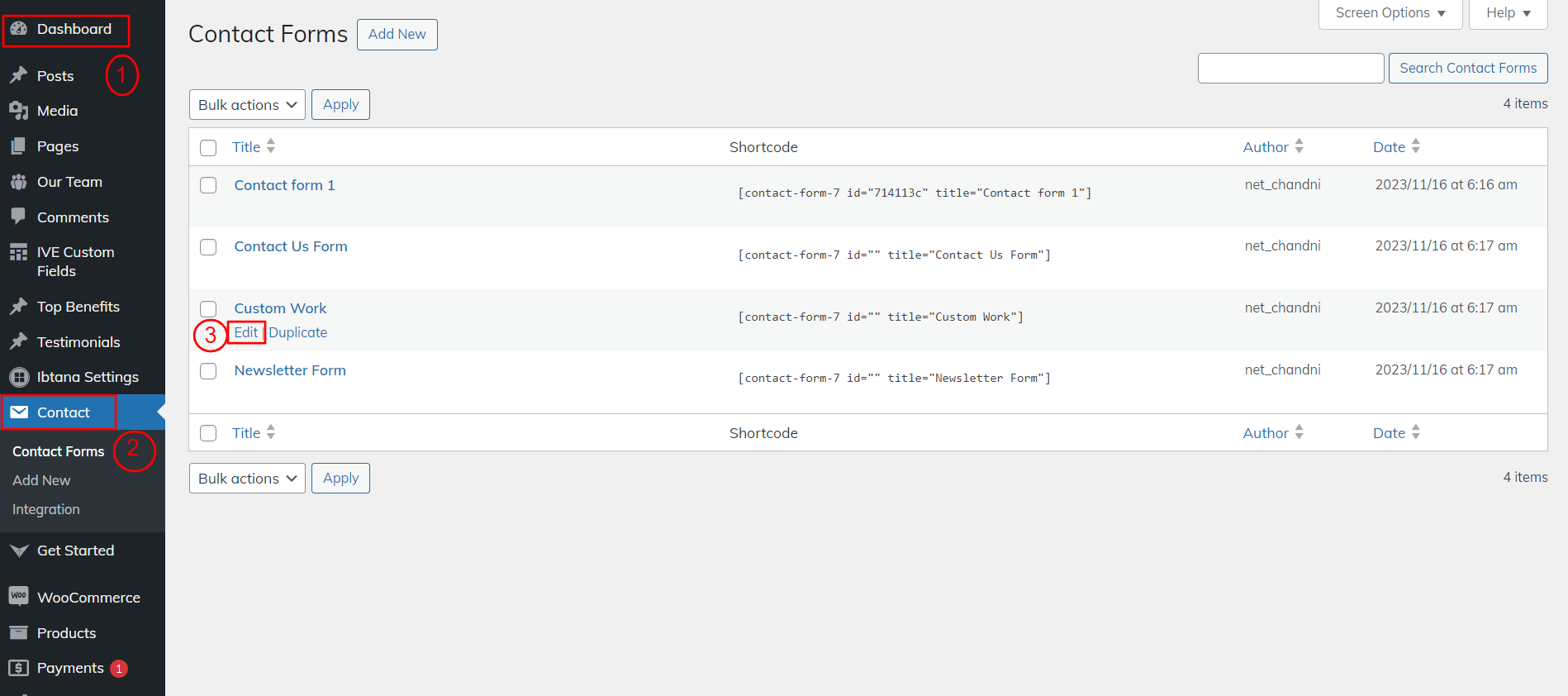
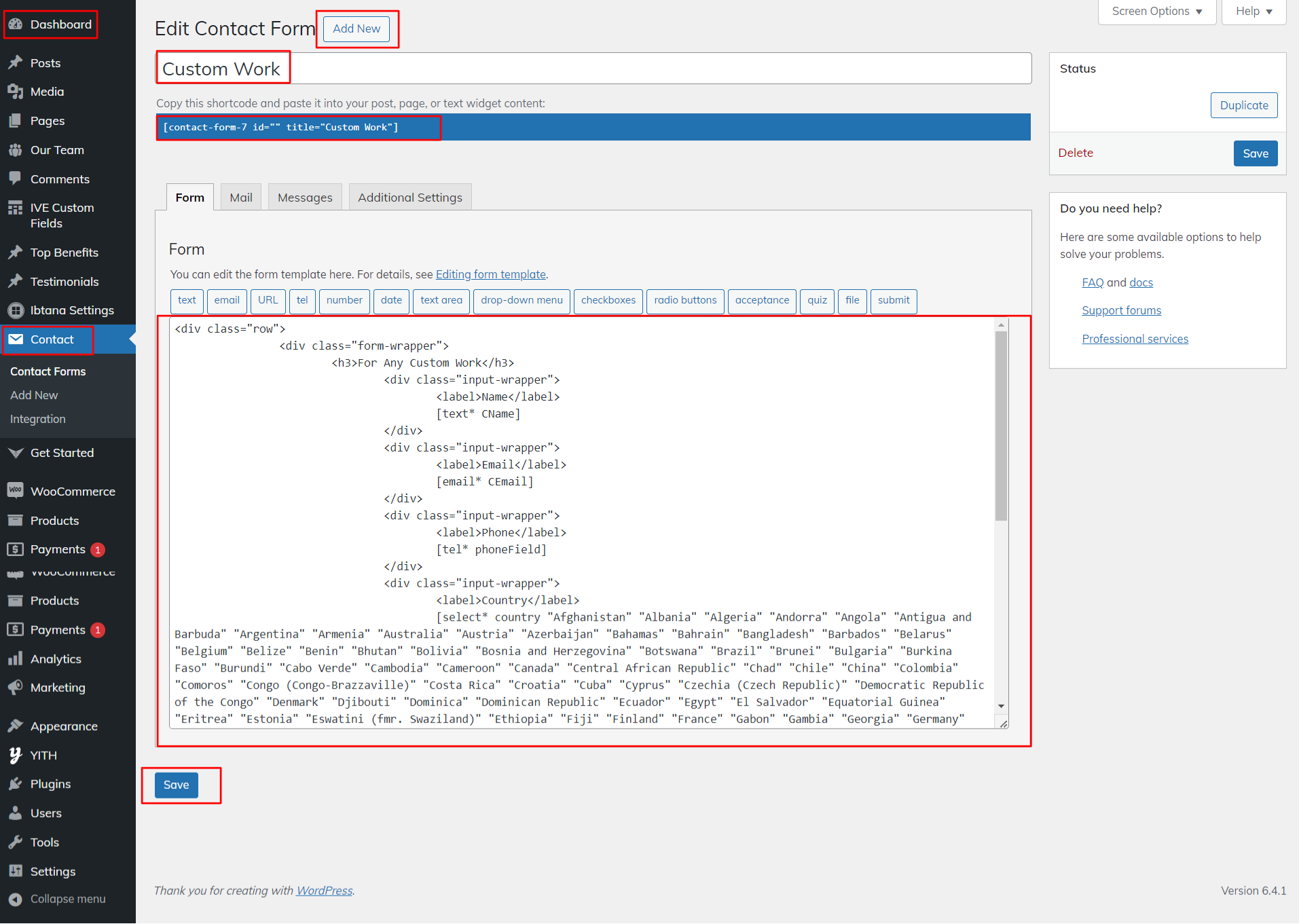
To proceed with the License Pricing Section
3) Go to Appearance >> Customize >> Theme Settings >> License Pricing Section
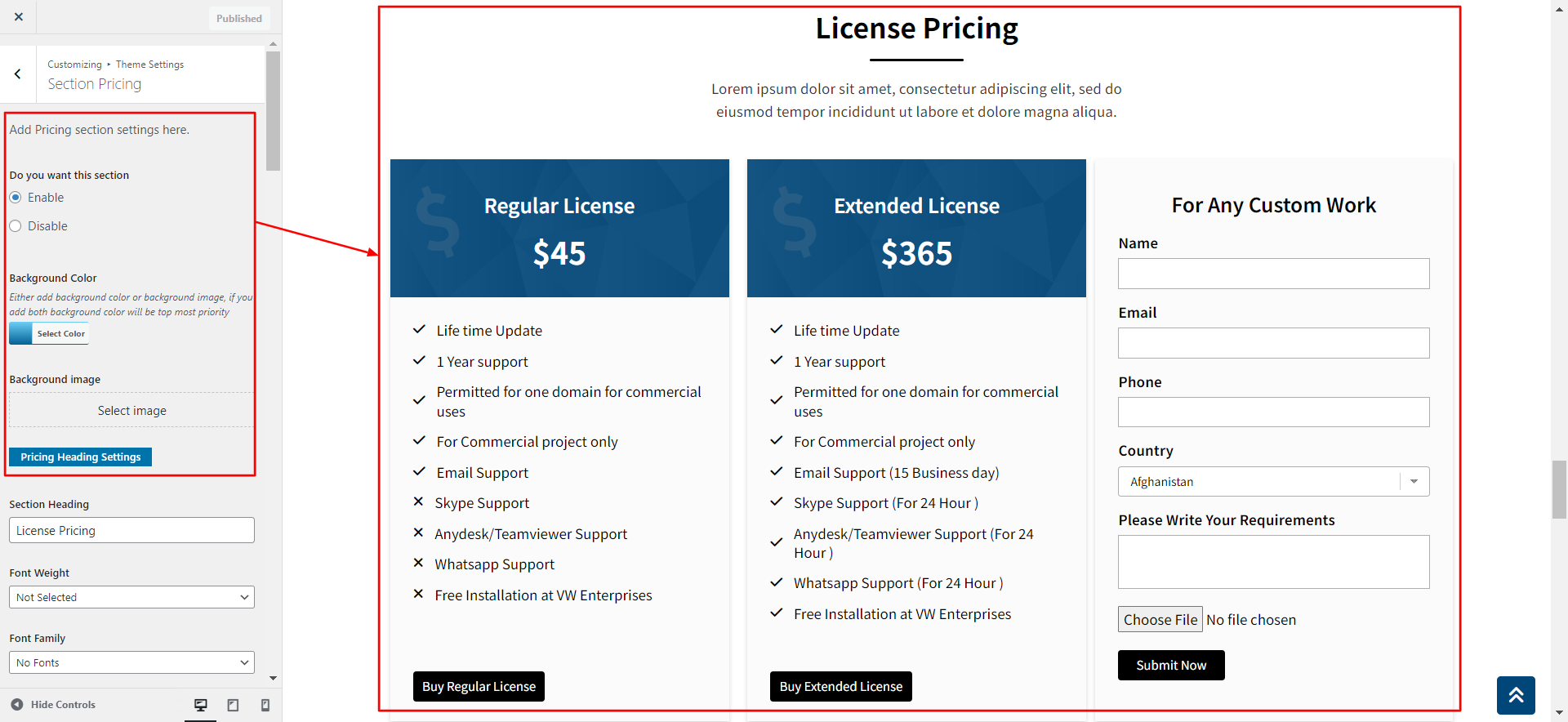
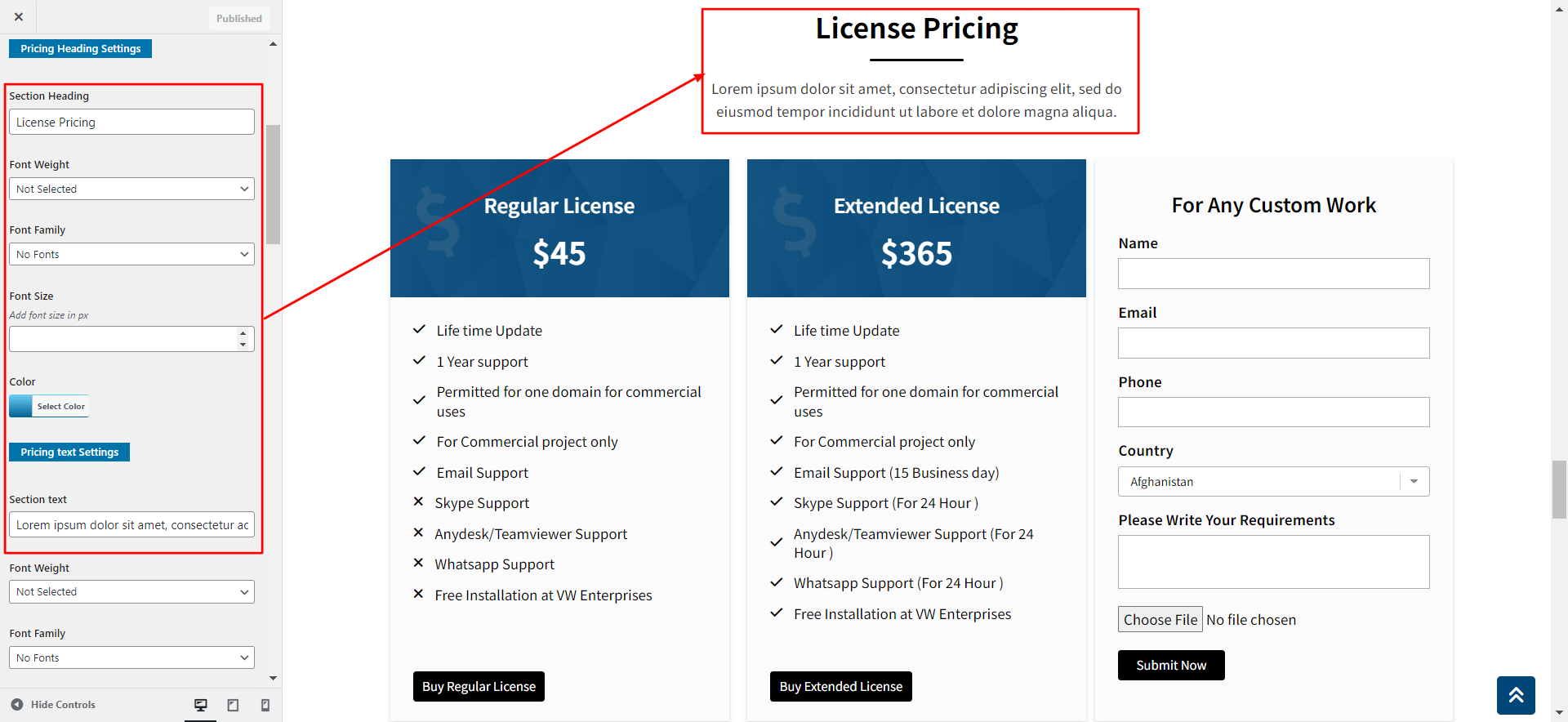
4) Final Image of License Pricing Section.
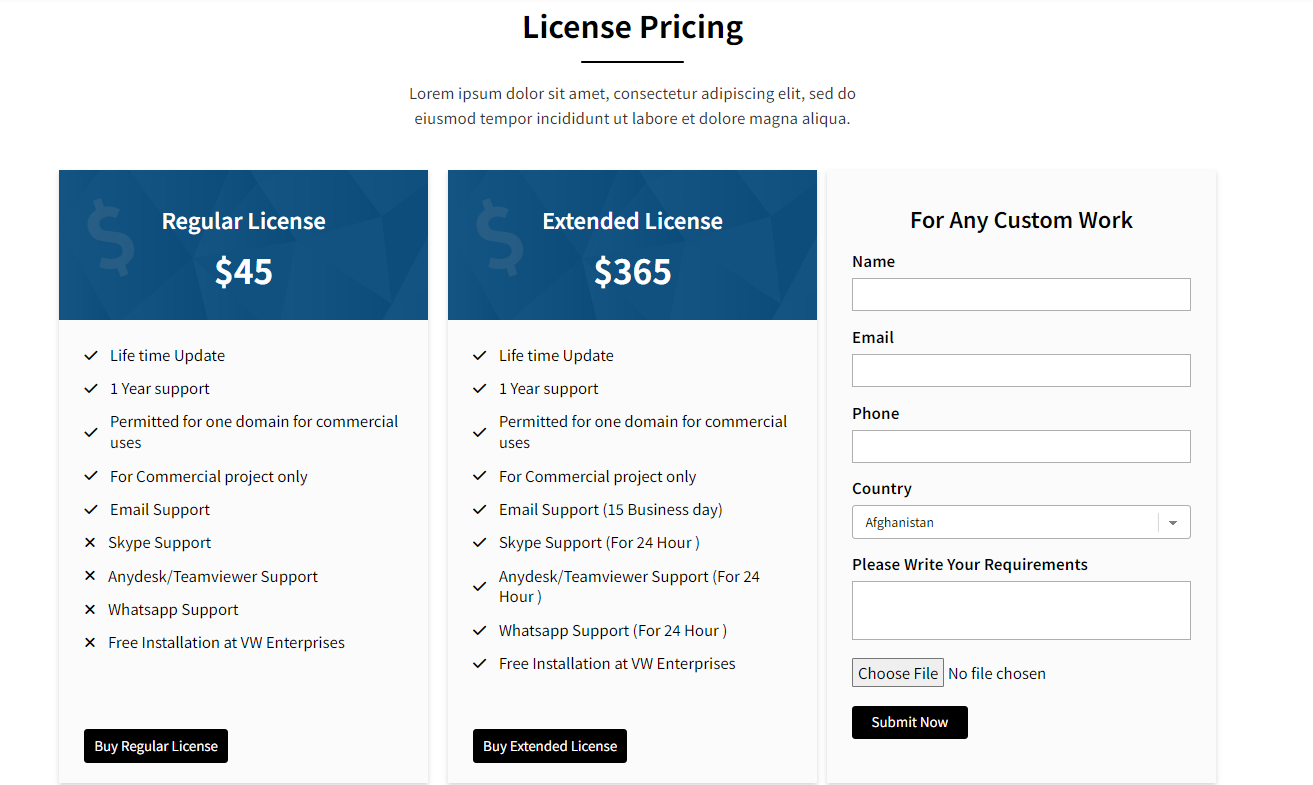
13. Setup Installation Section
To proceed with the Installation Section
1) Go to Appearance >> Customize >> Theme Settings >> Installation Section
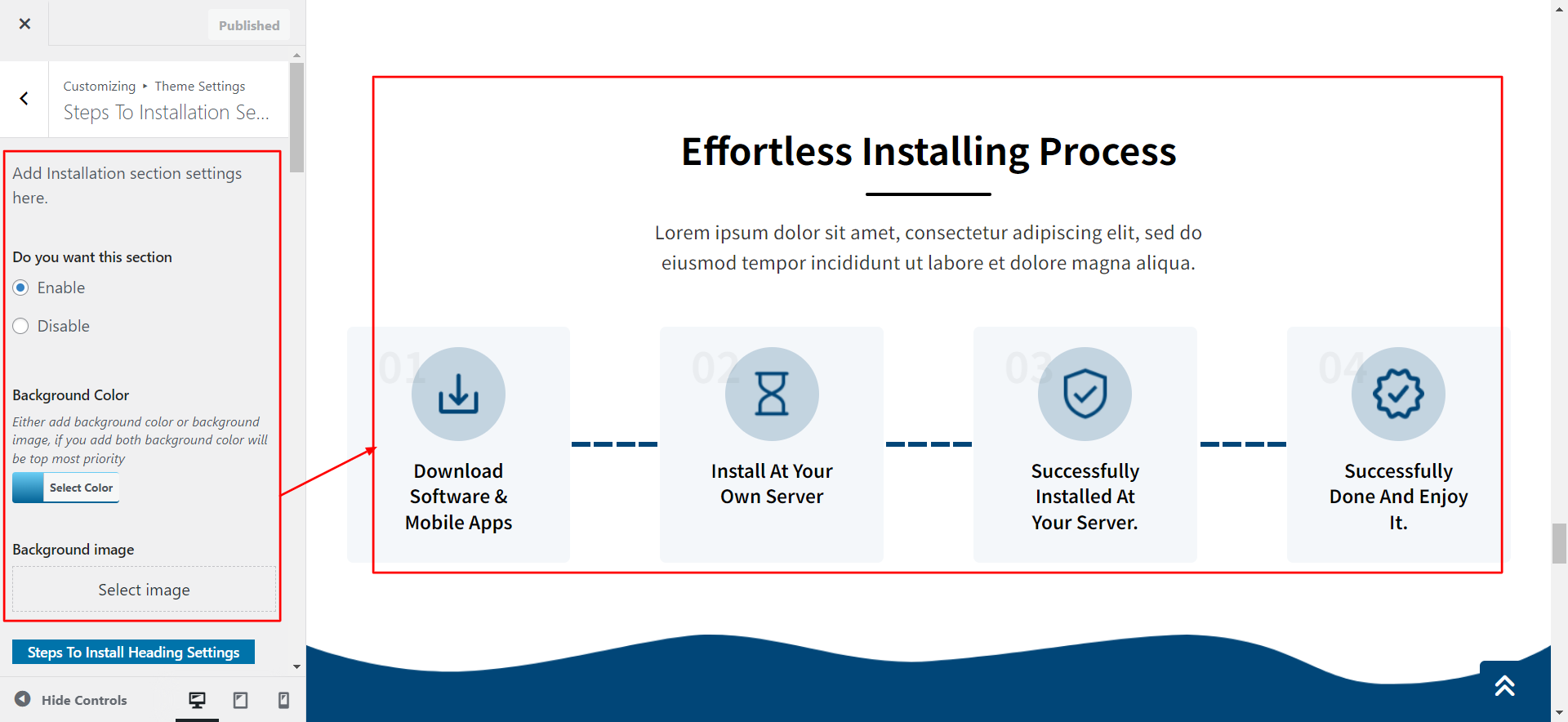
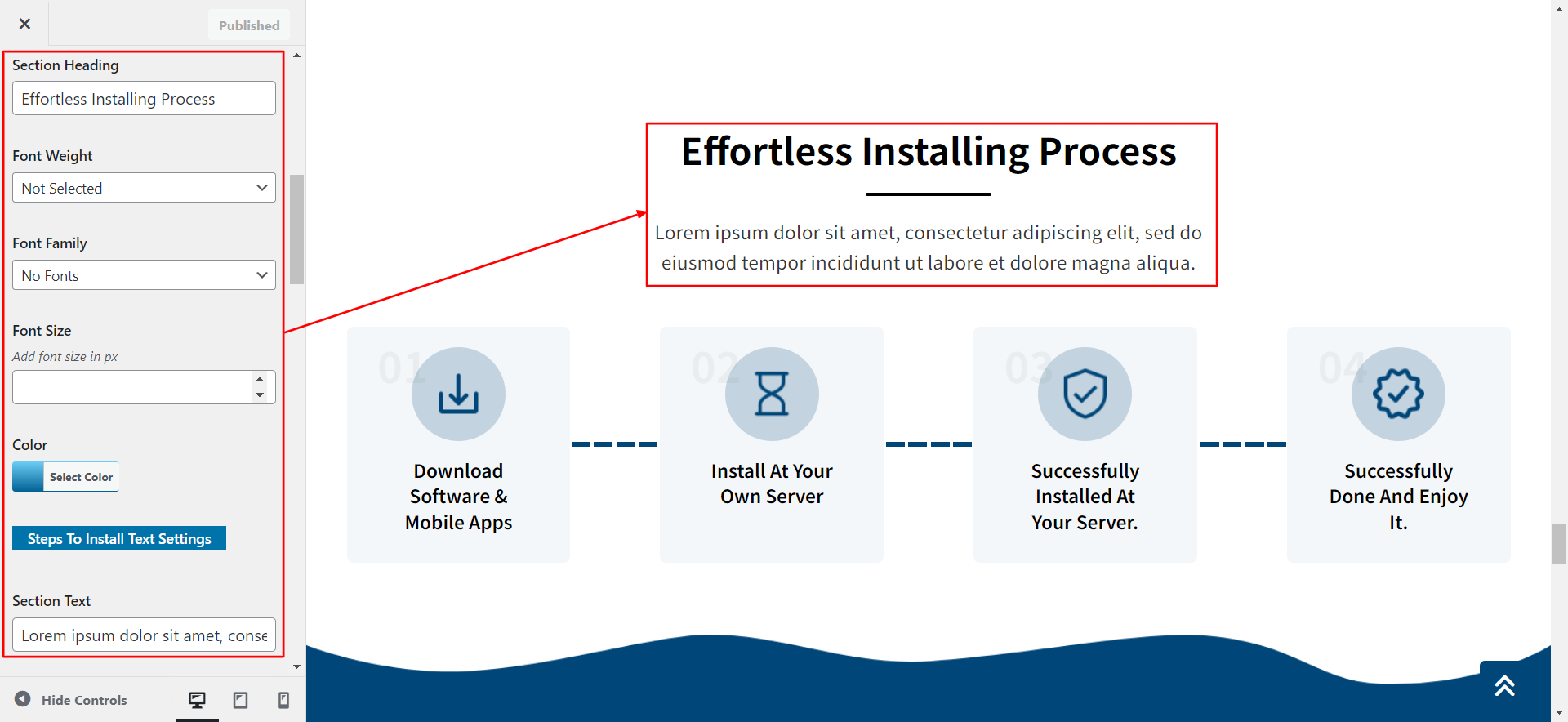
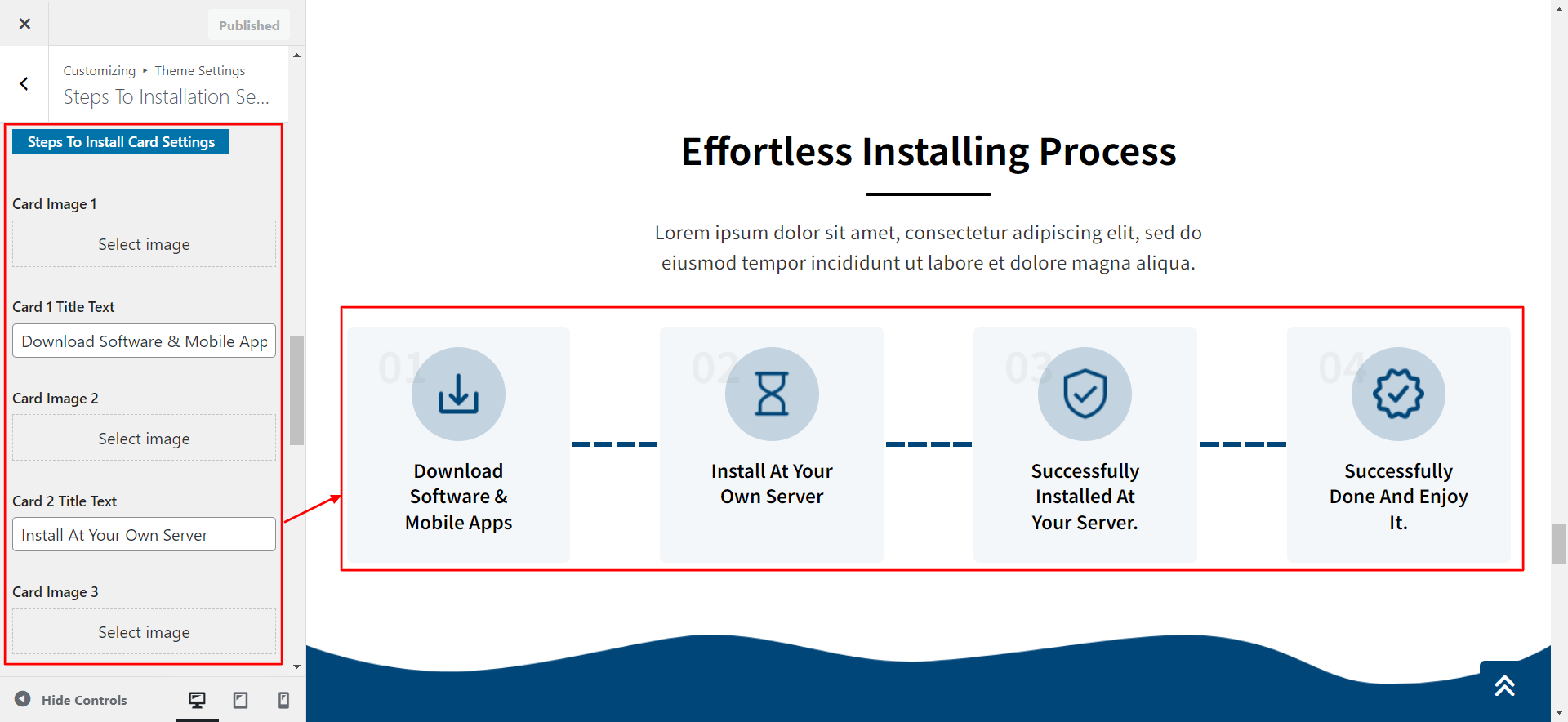
2) Final Image of Installation Section.

14. Setup Testimonial Section
To Setup Testimonial Settings
1) Go to Dashboard >> Testimonials >> Edit
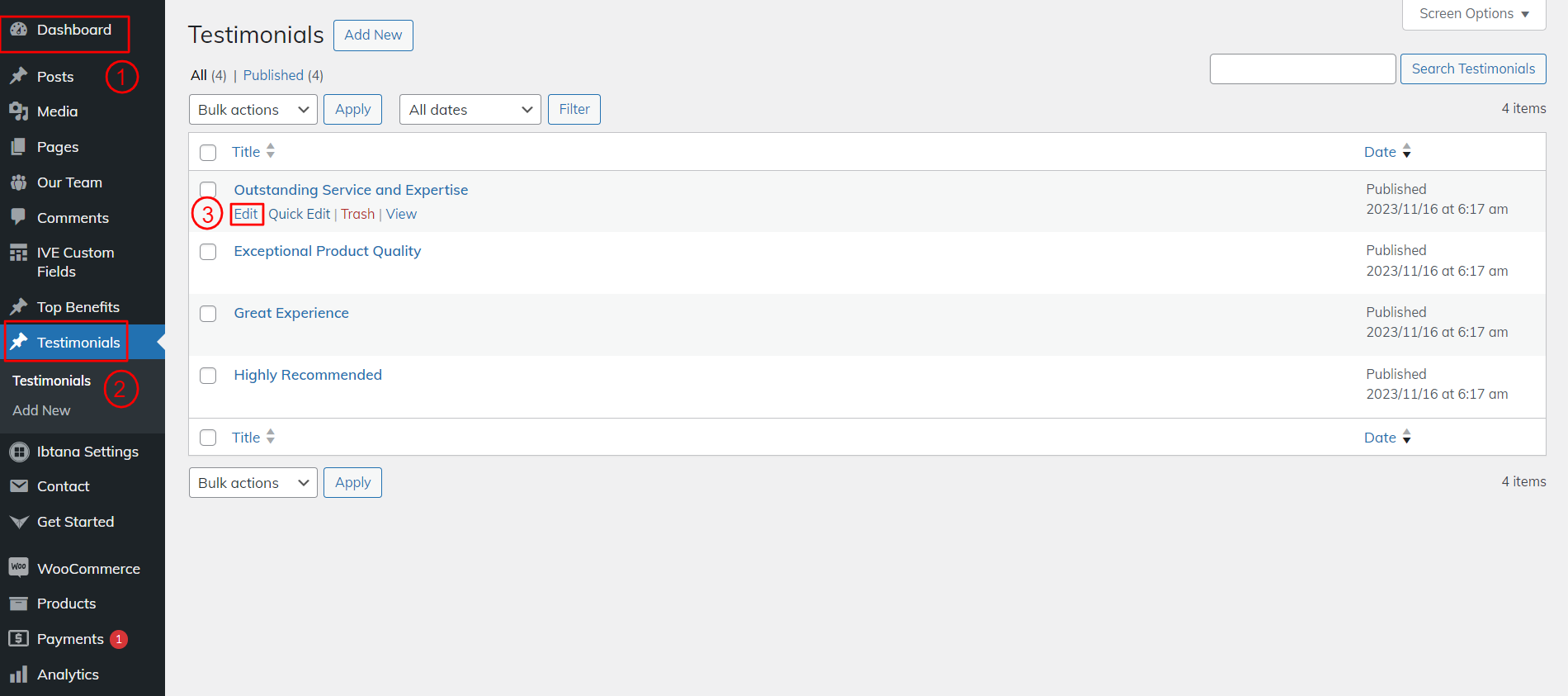
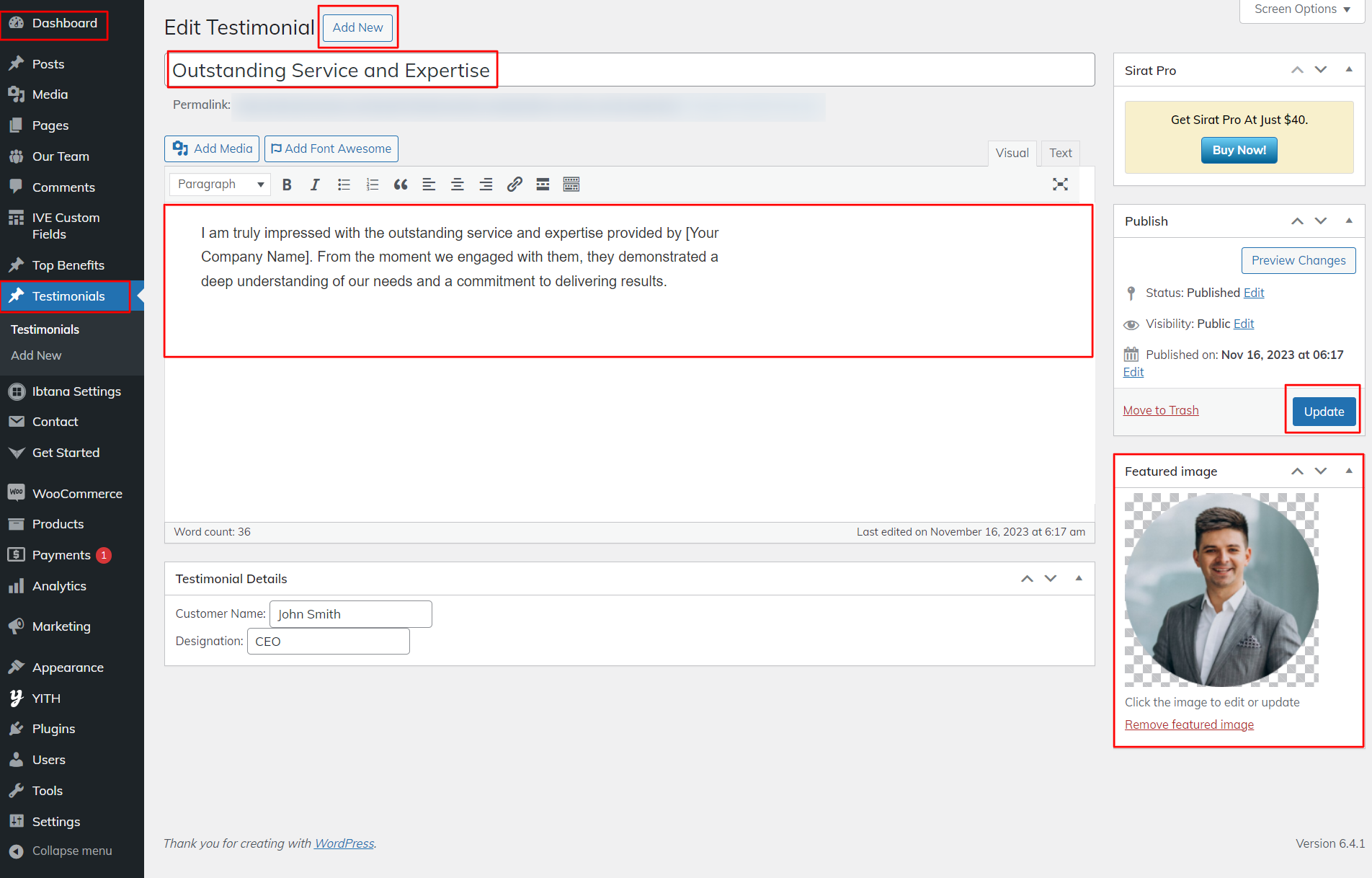
To proceed with the Testimonial Section
2) Go to Appearance >> Customize >> Theme Settings >> Testimonial Section
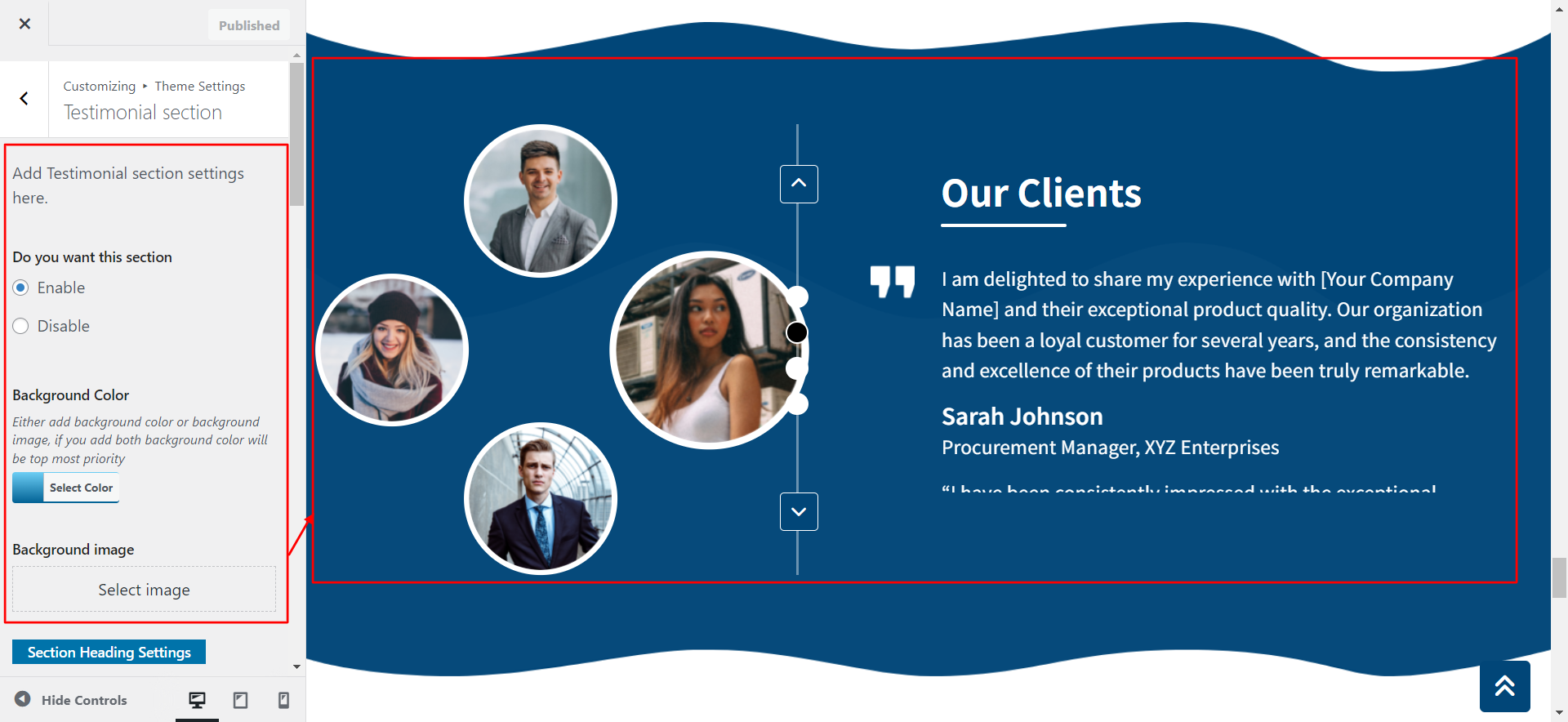
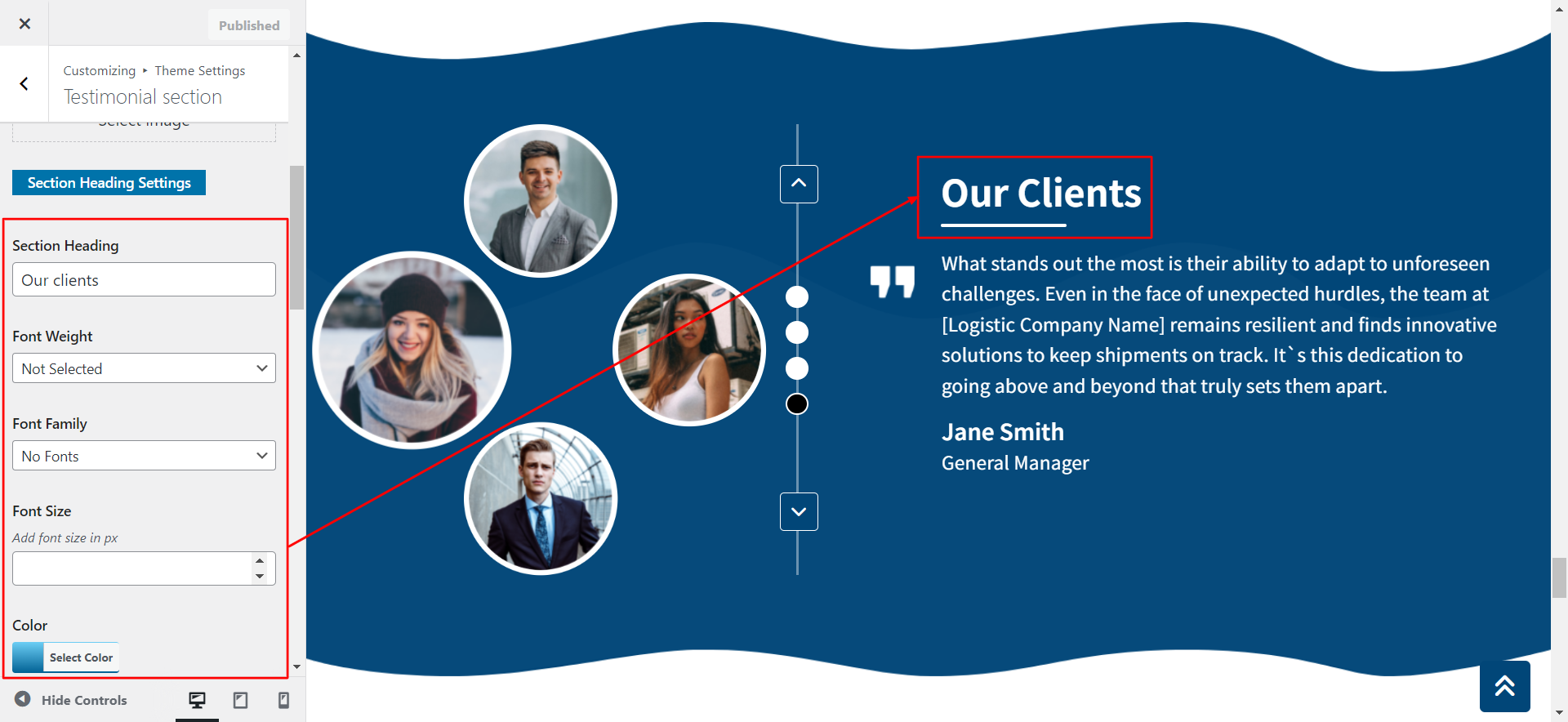
3) Final Image of Testimonial Section.
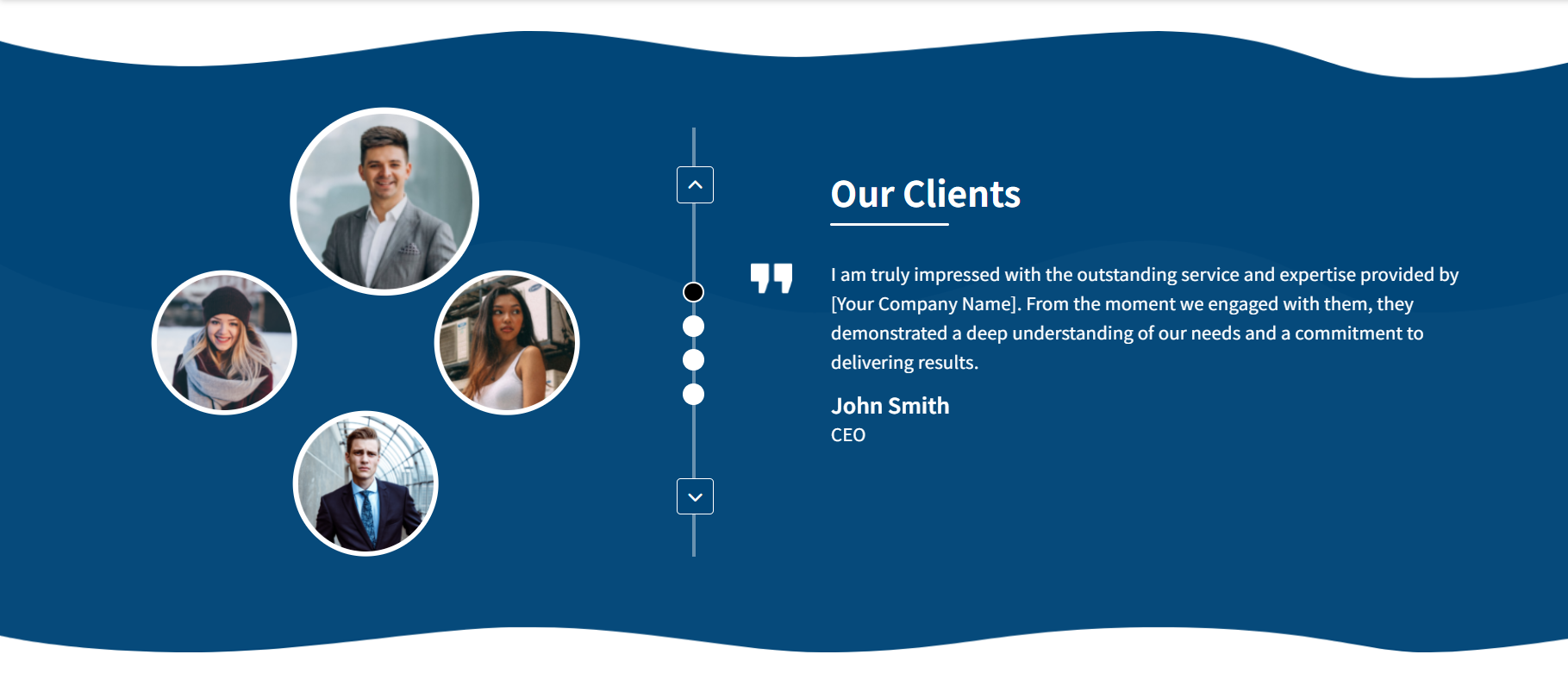
15. Setup FAQ Section
To proceed with the FAQ Section
1) Go to Appearance >> Customize >> Theme Settings >> FAQ Section
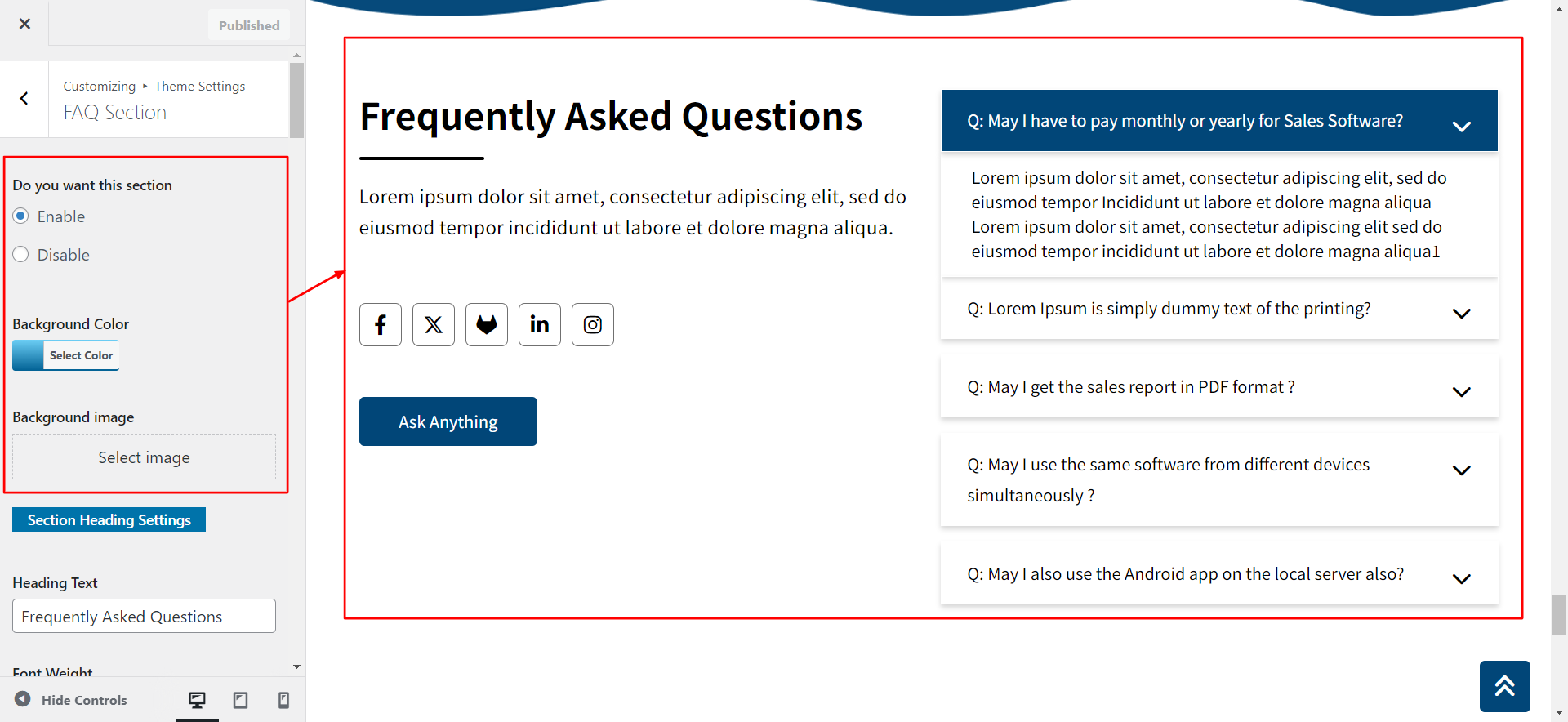
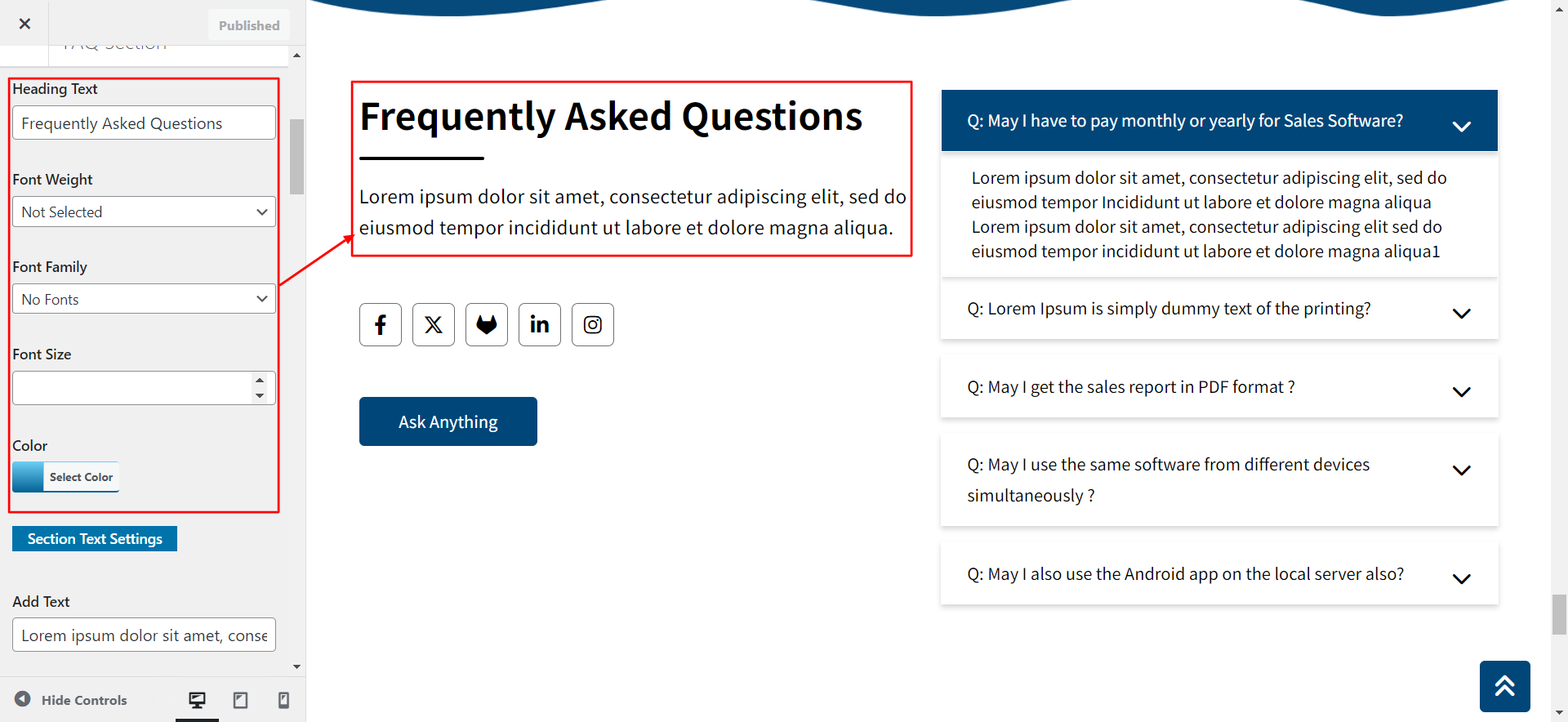
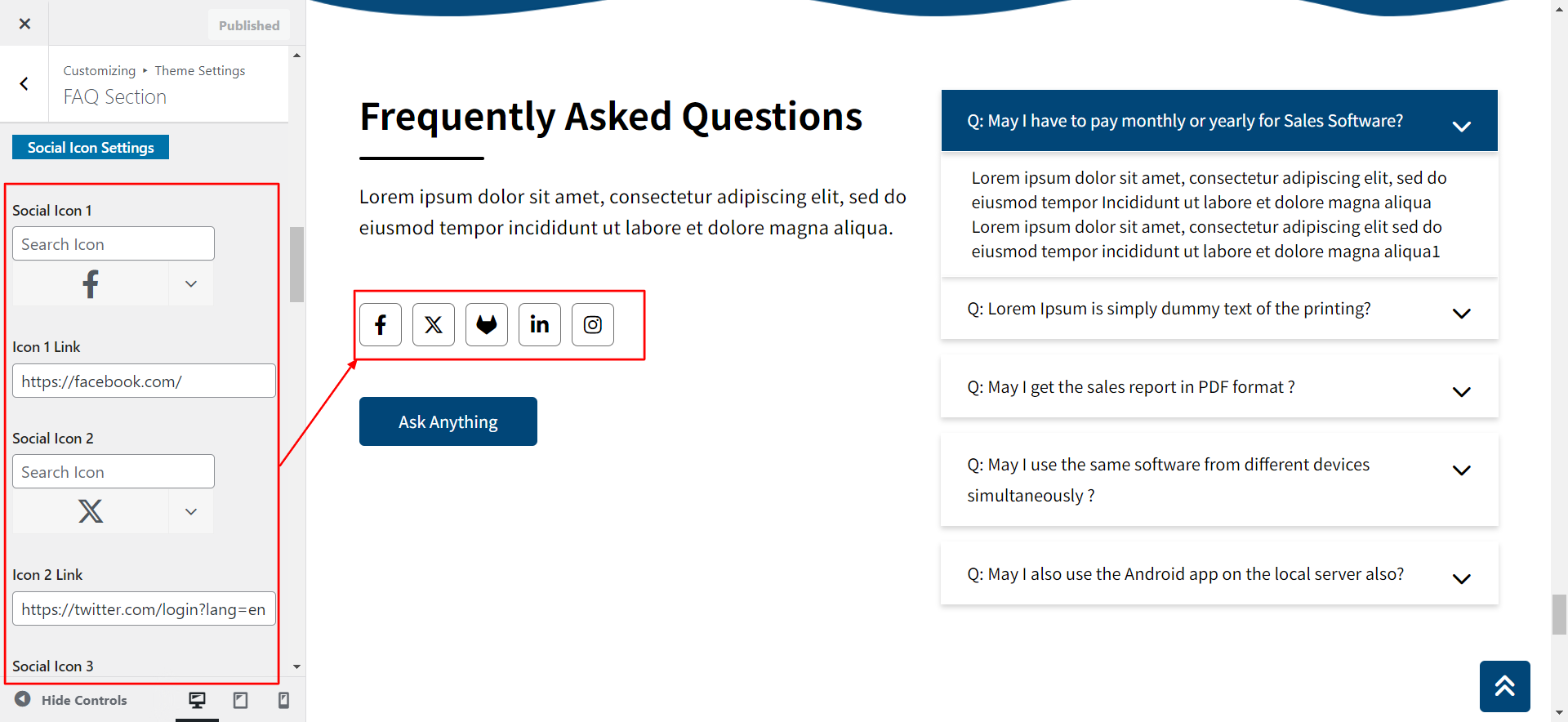
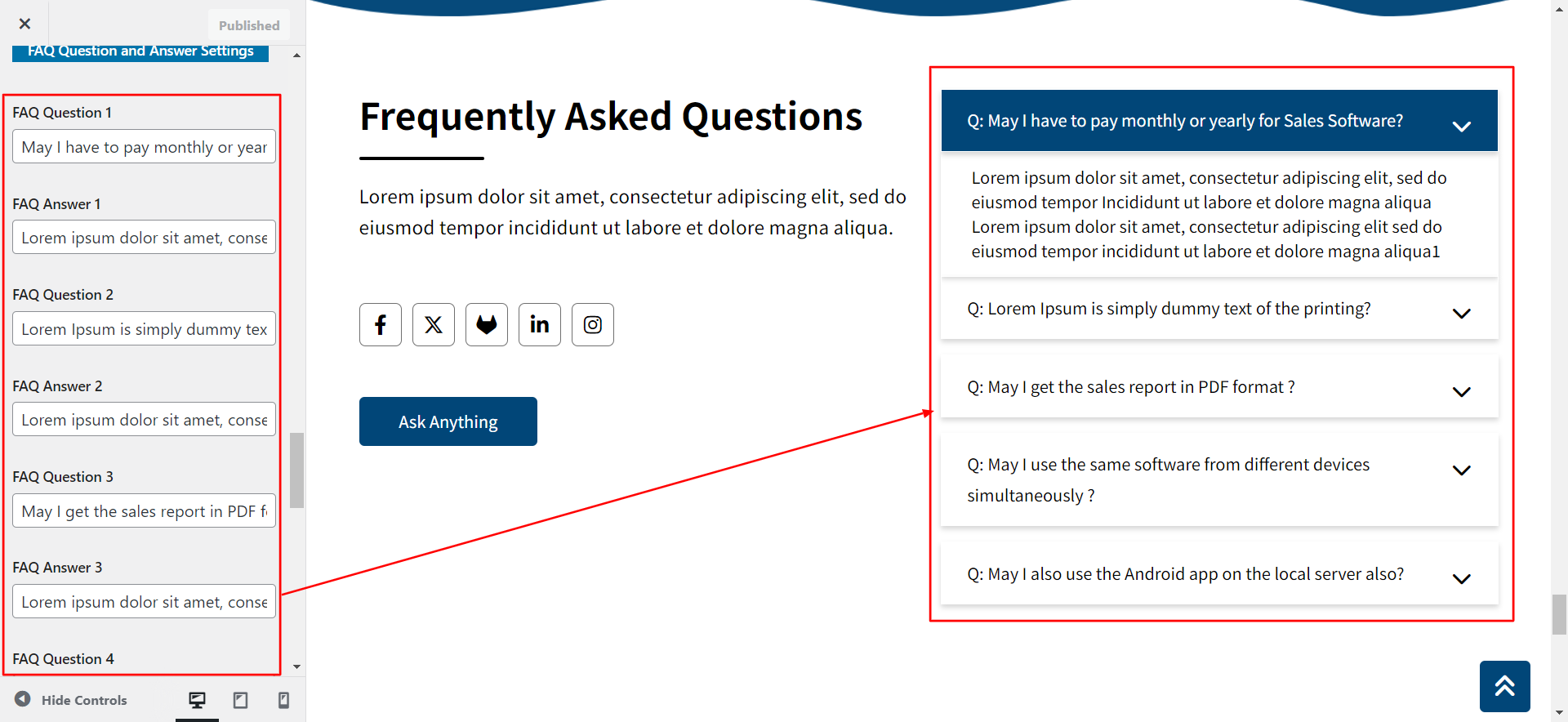
2) Final Image of FAQ Section.
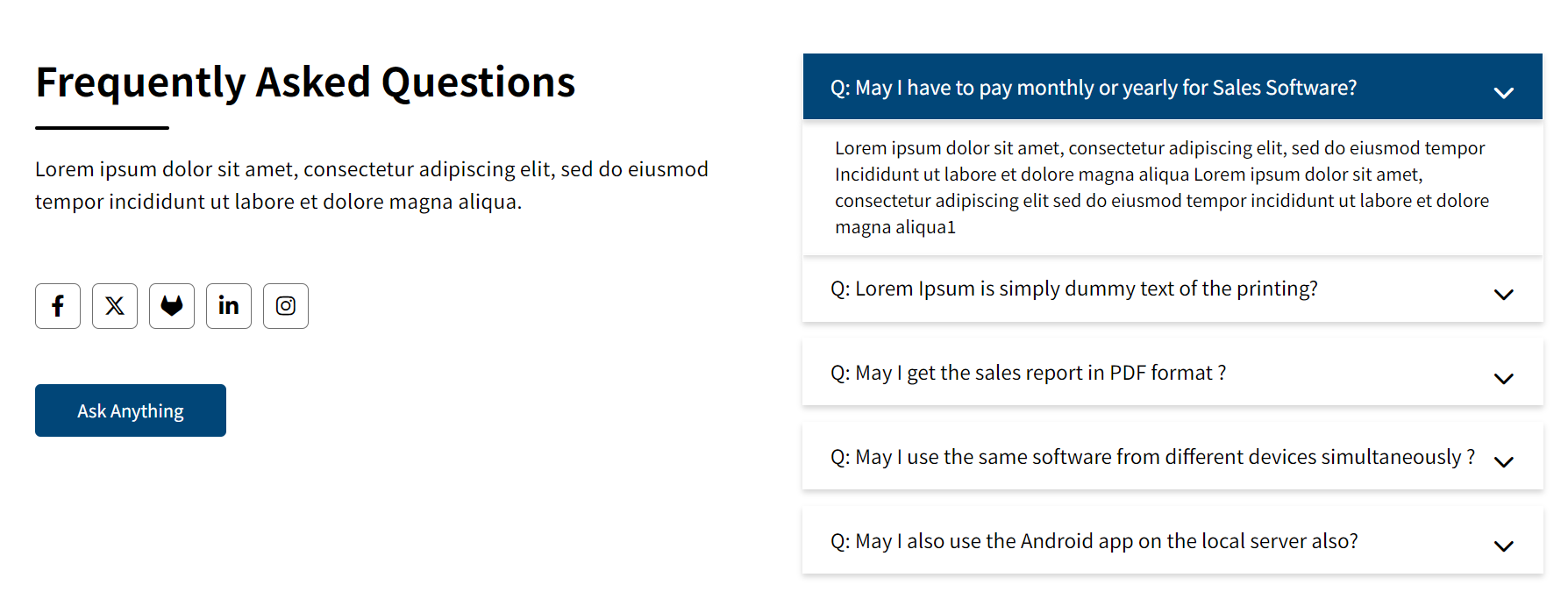
16. Setup Blog Section
To Setup Blog Settings
1) Go to Dashboard >> Post >> Edit
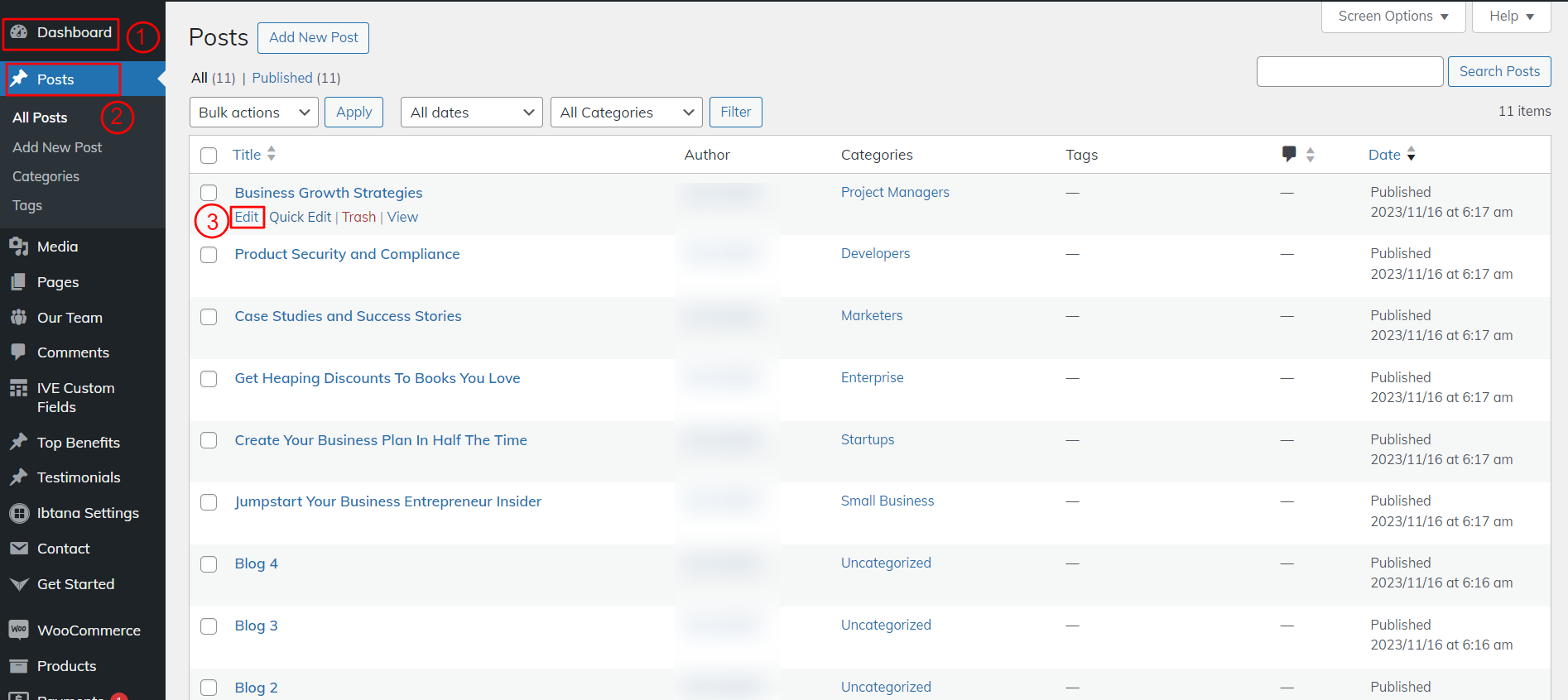
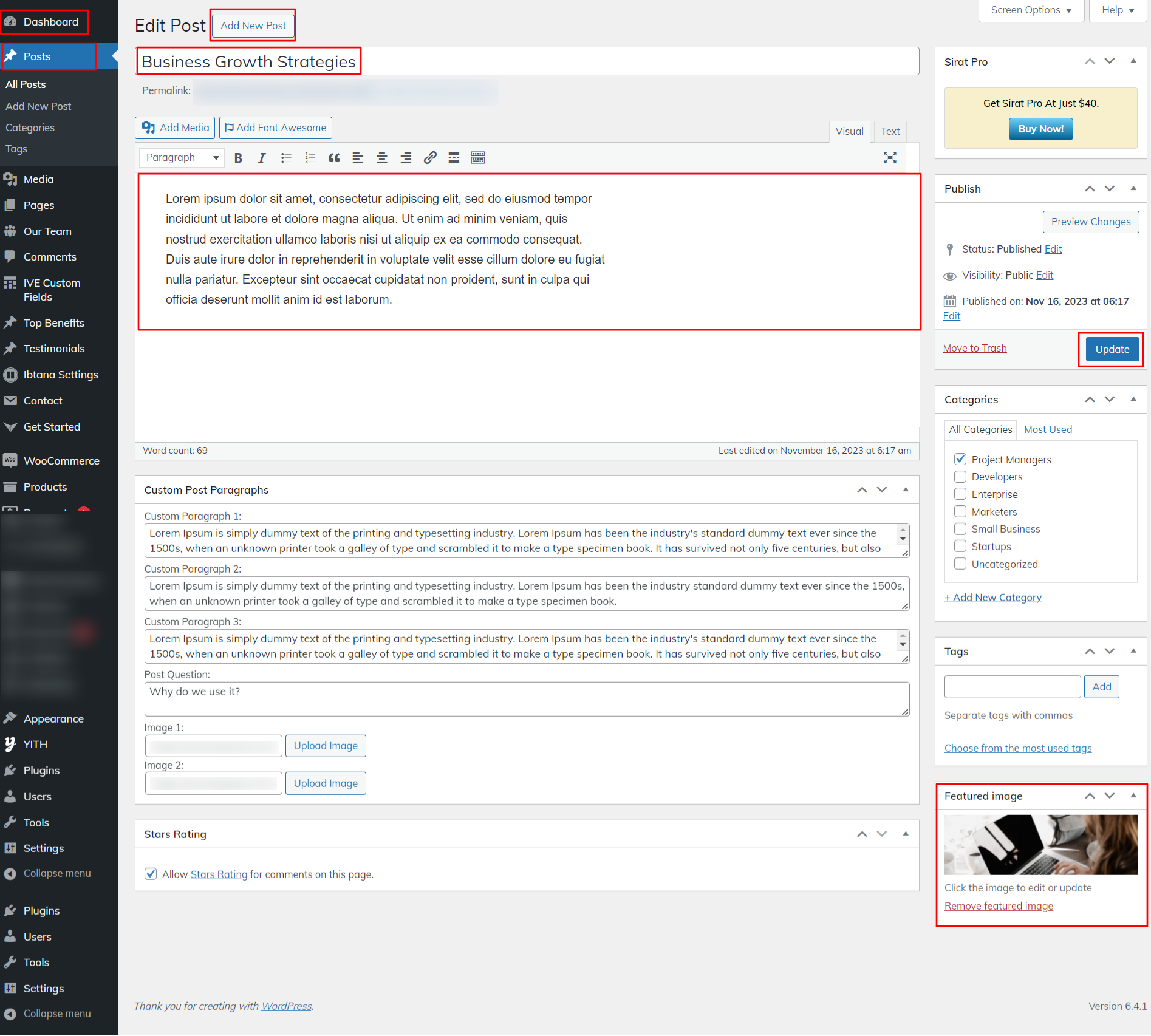
To proceed with the Blog Section
2) Go to Appearance >> Customize >> Theme Settings >> Resource & News Section
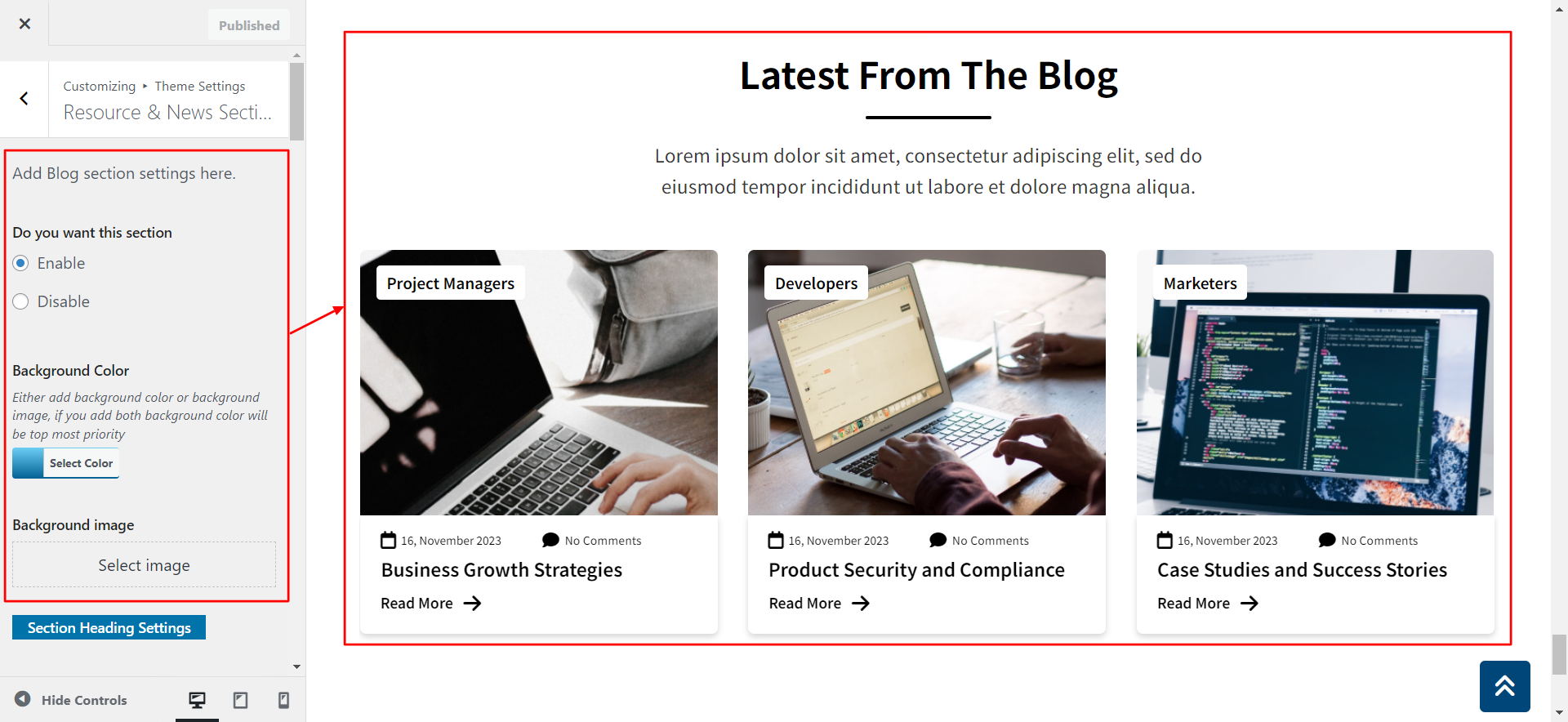
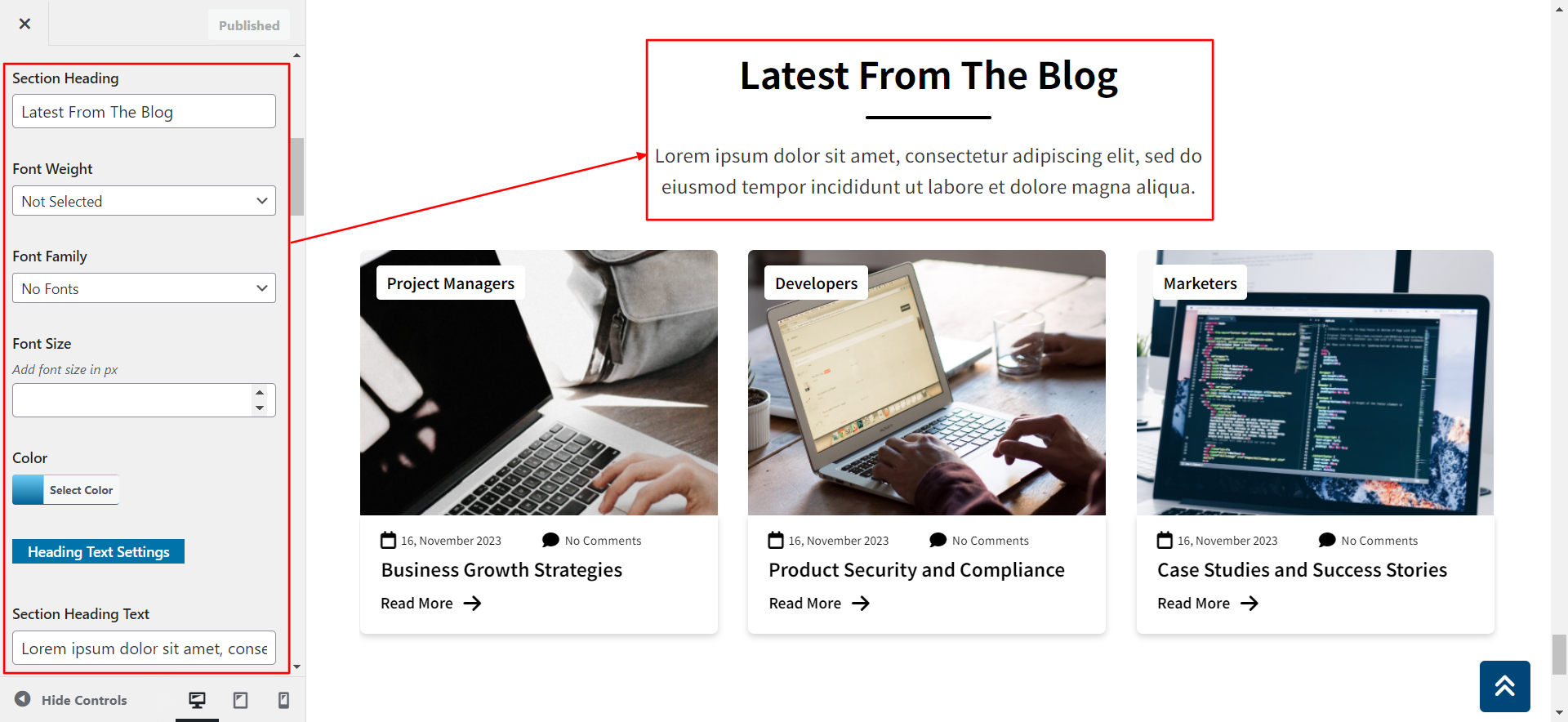
3) Final Image of Blog Section.
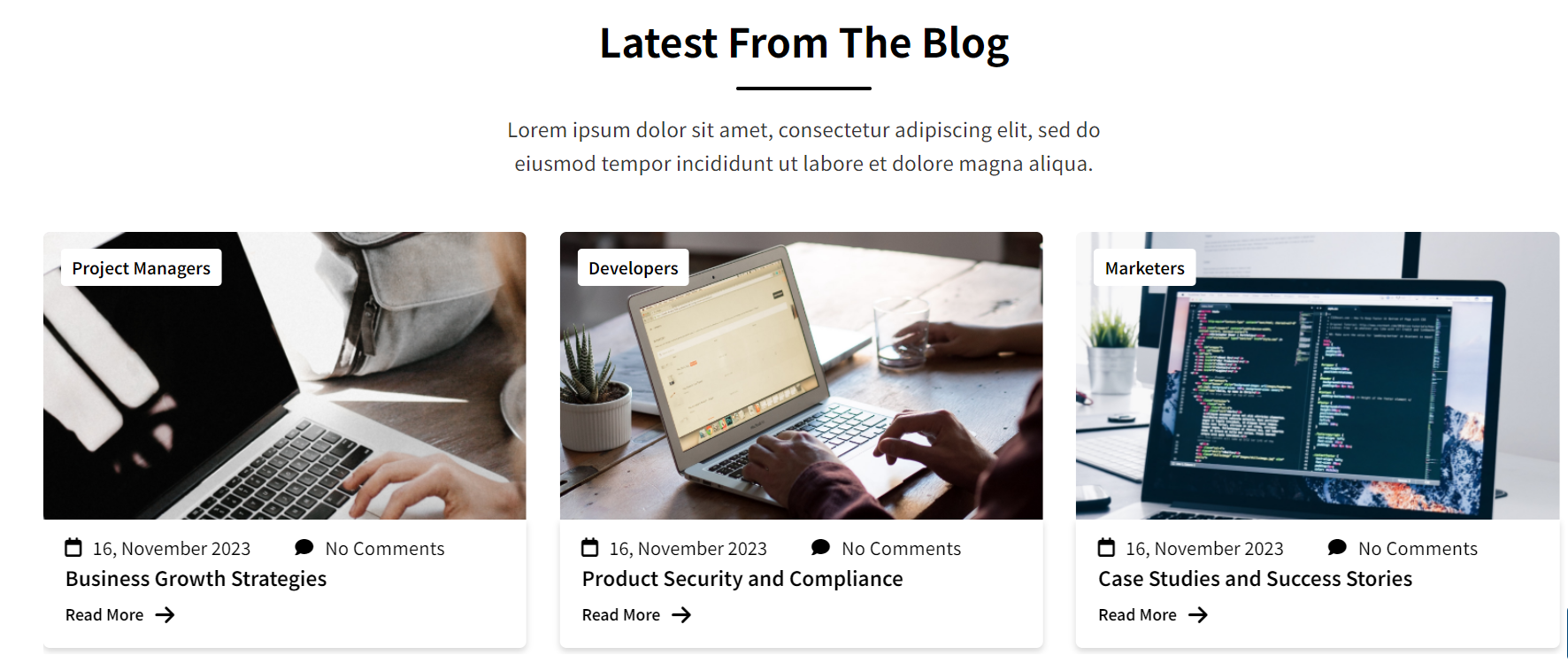
17. Setup Footer Section
To Setup Footer Settings
1) Go to Dashboard >> Contact >> Edit
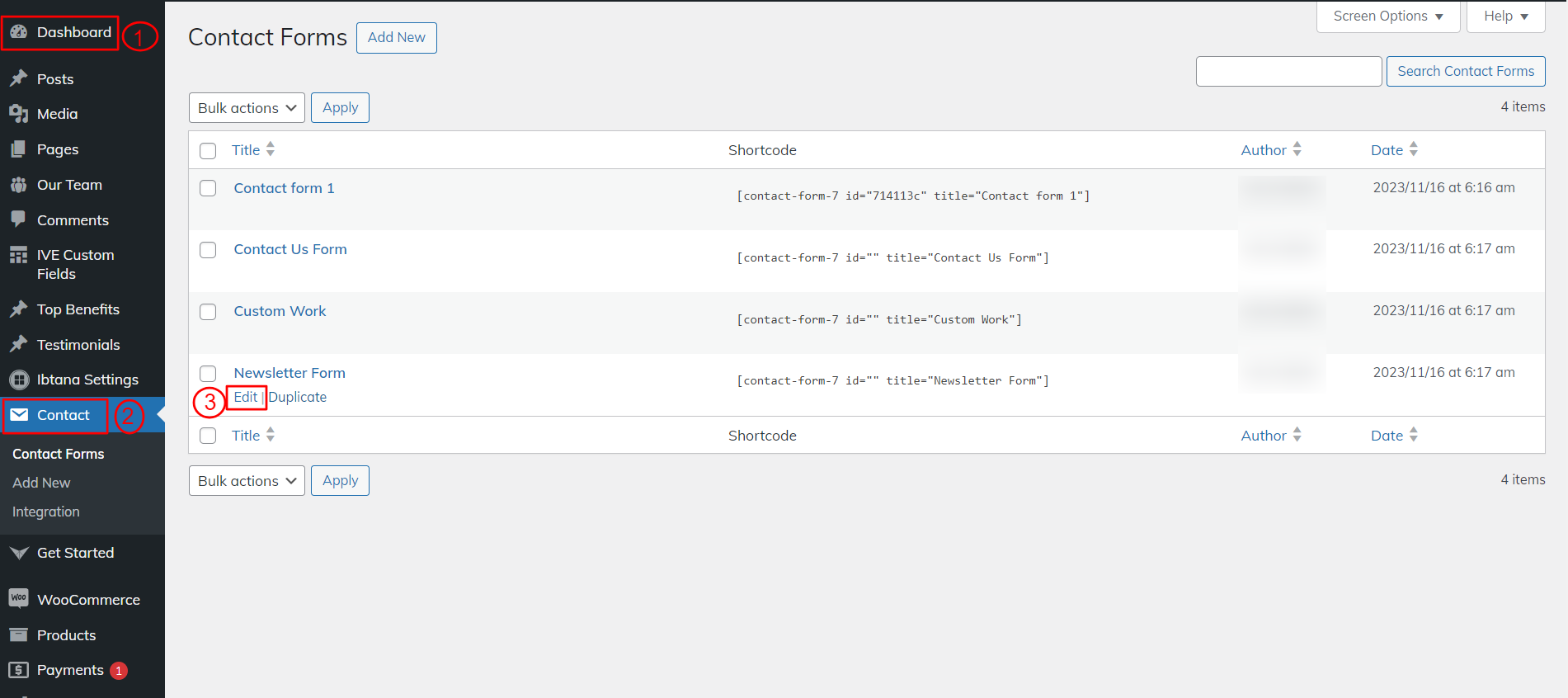
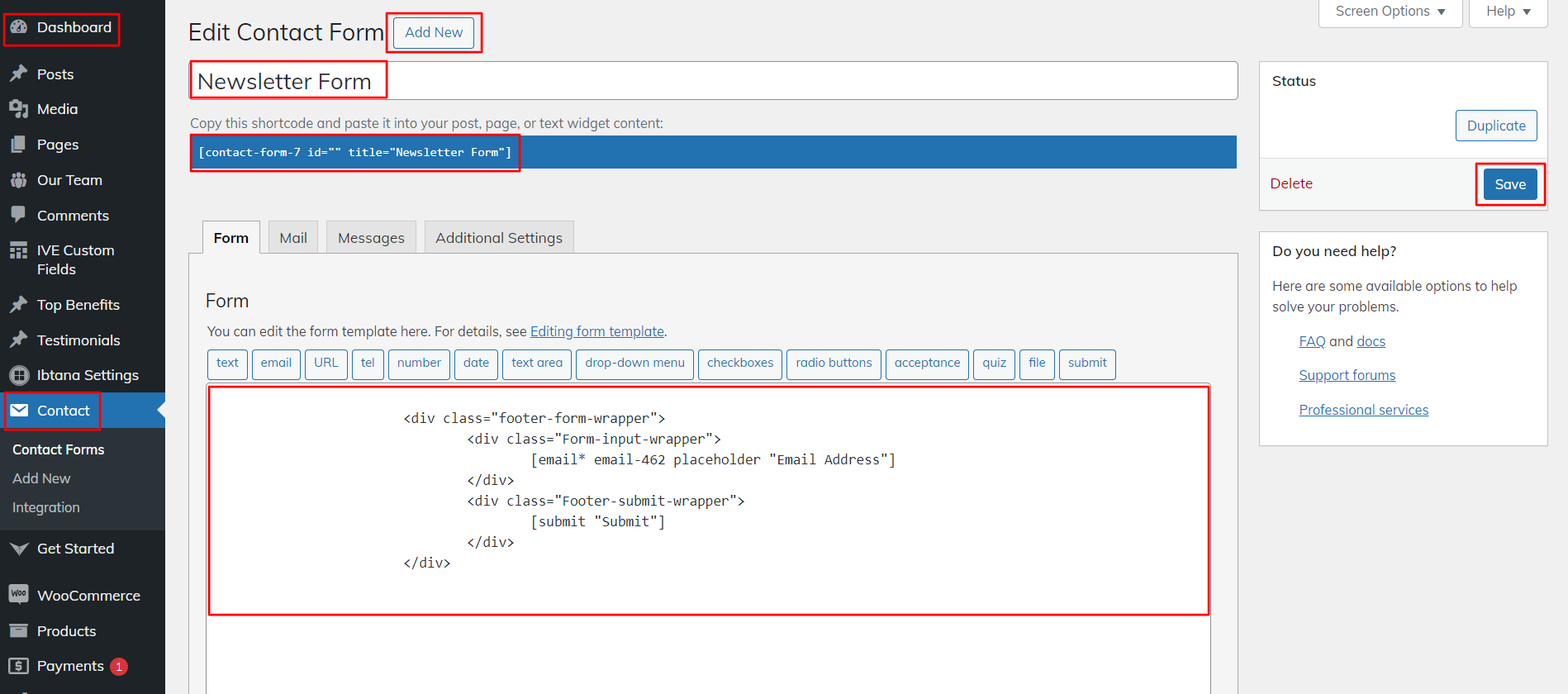
To proceed with the Footer Section
2) Go to Appearance >> Customize >> Theme Settings >> Footer Setting
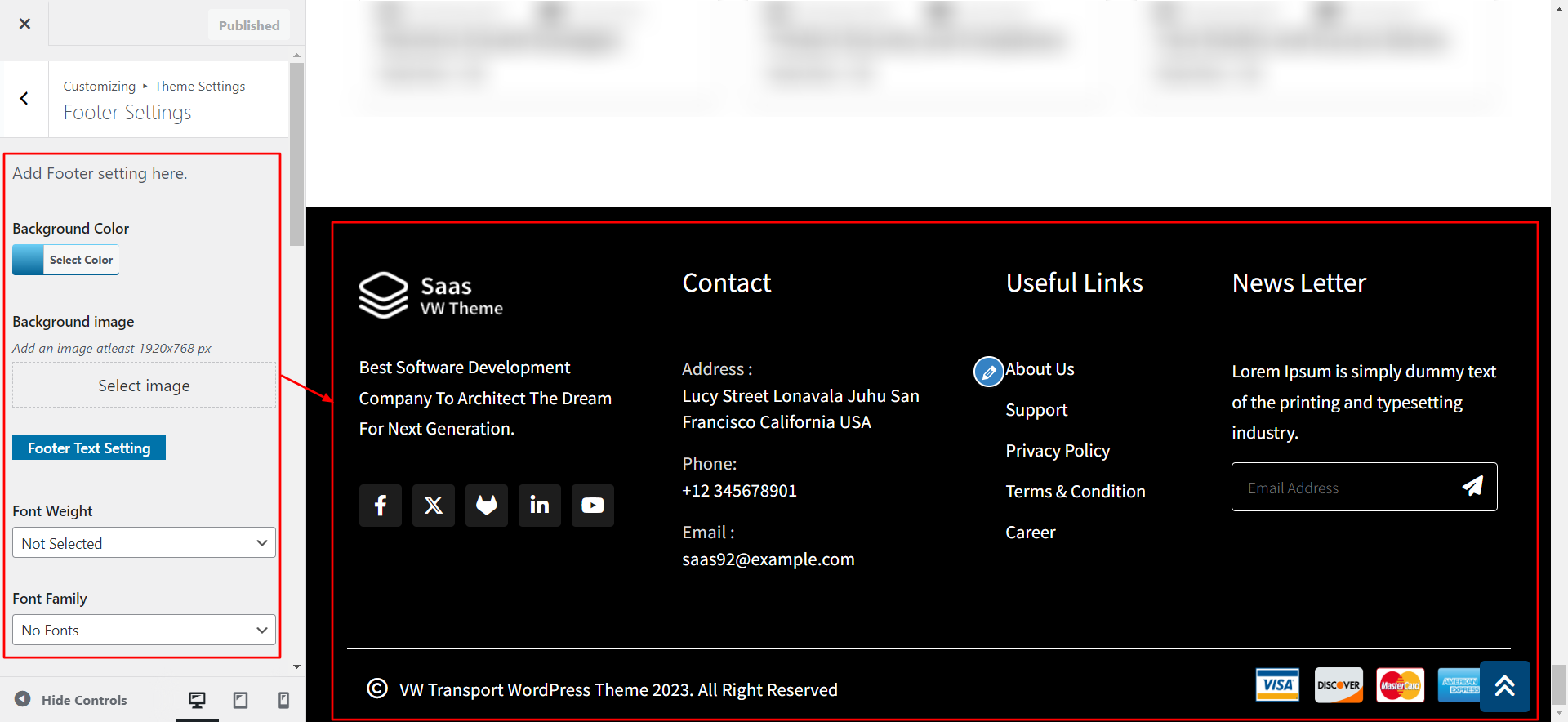
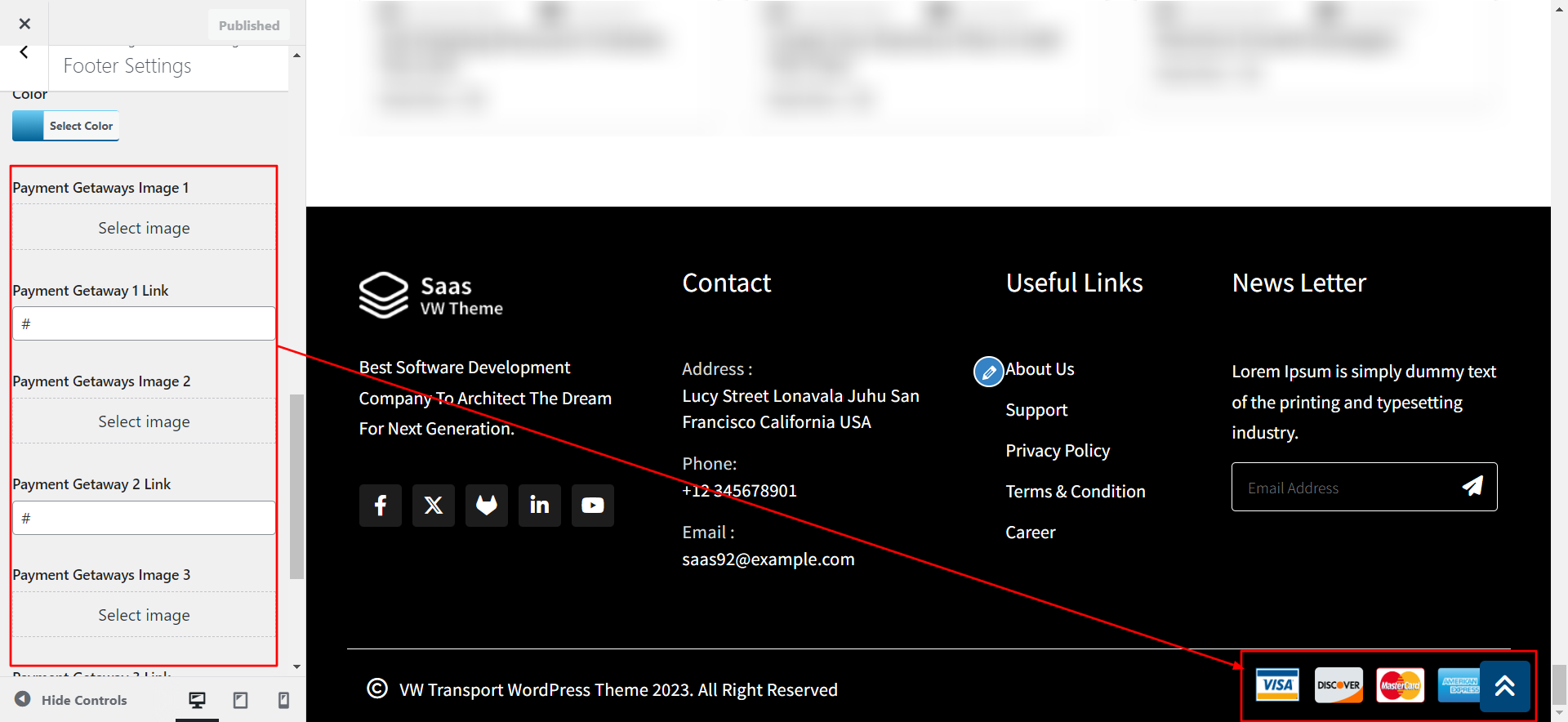
3) Final Image of Footer Section.

Refer video for Setup Footer Widgets:

Inner page
18. Setup ECommerce Sector page Section
To proceed with the ECommerce Sector Section
1) Go to Appearance >> Customize >> Theme Settings >> ECommerce Sector
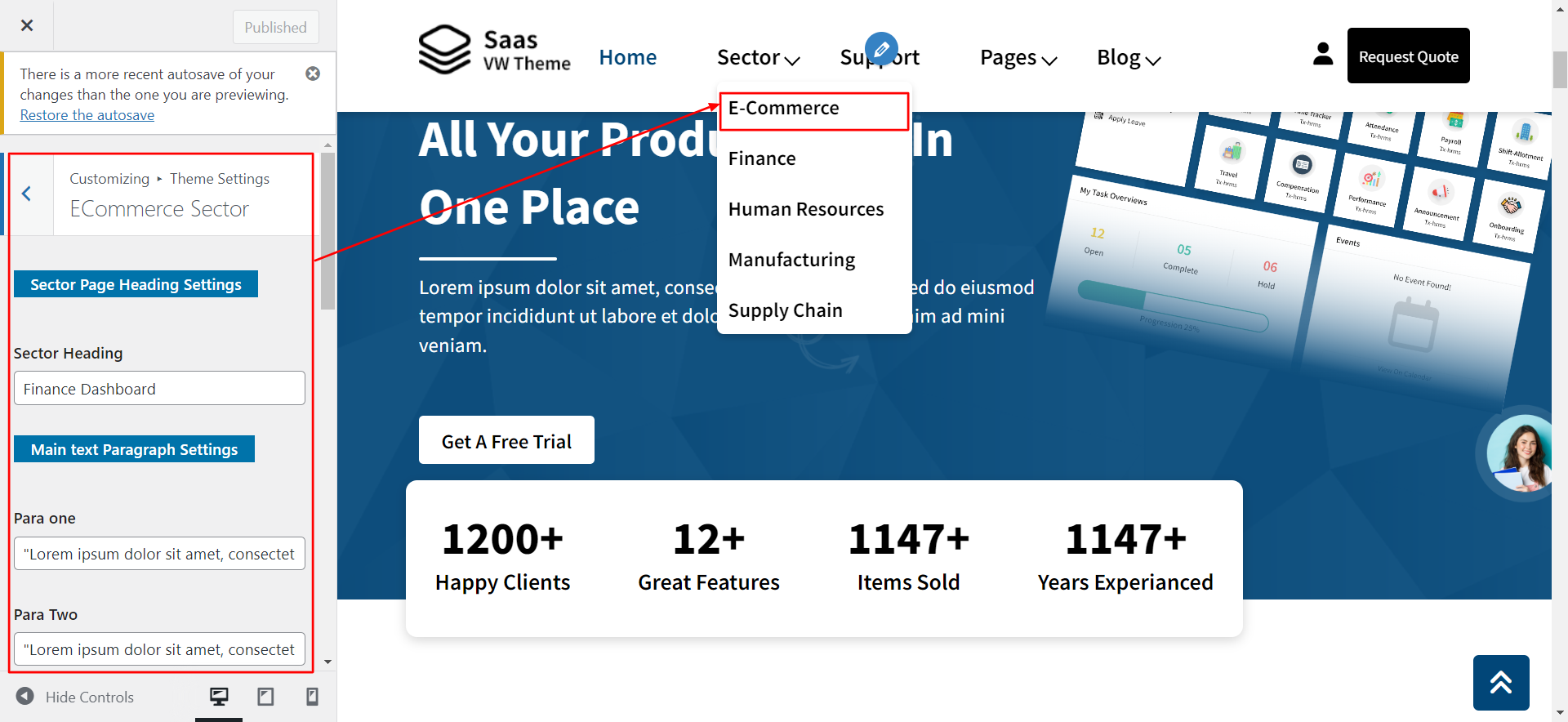
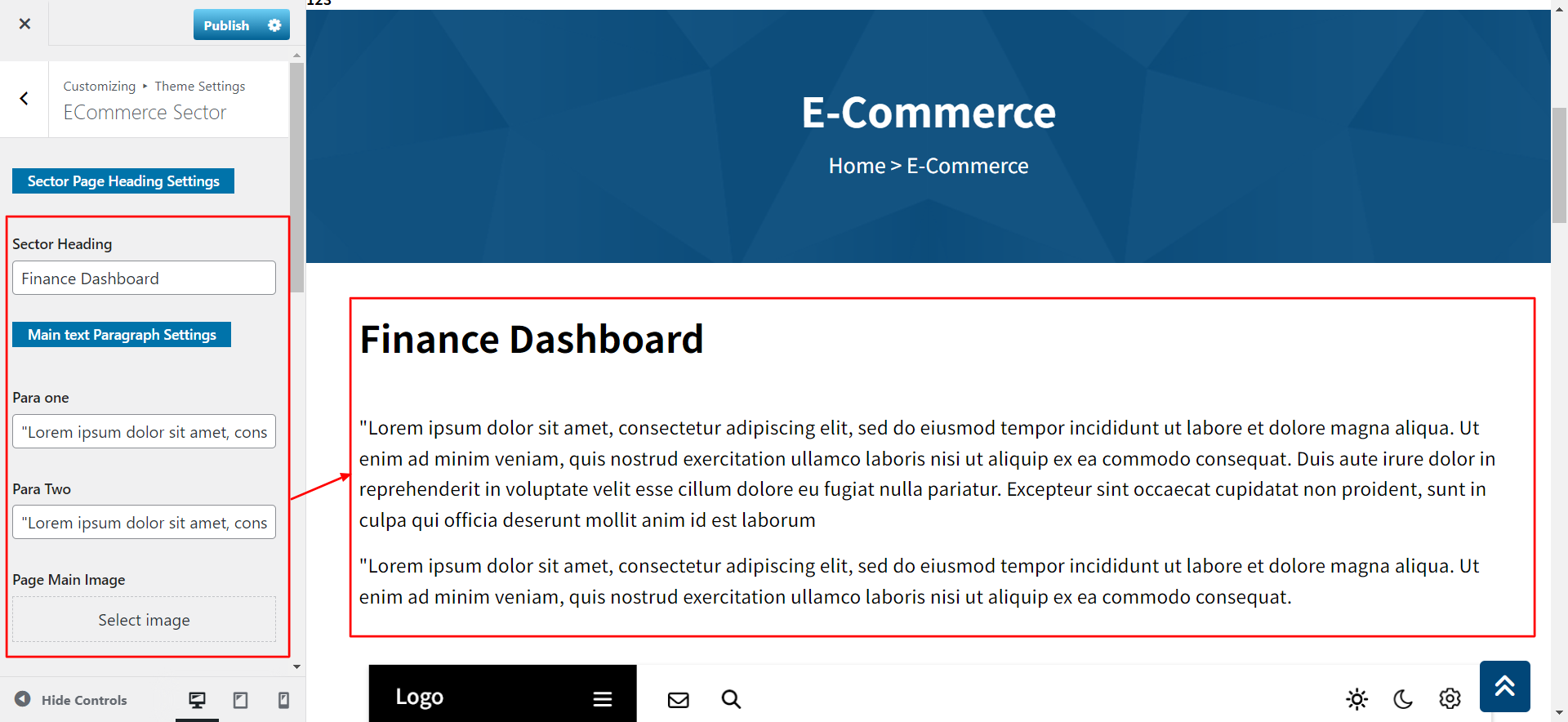
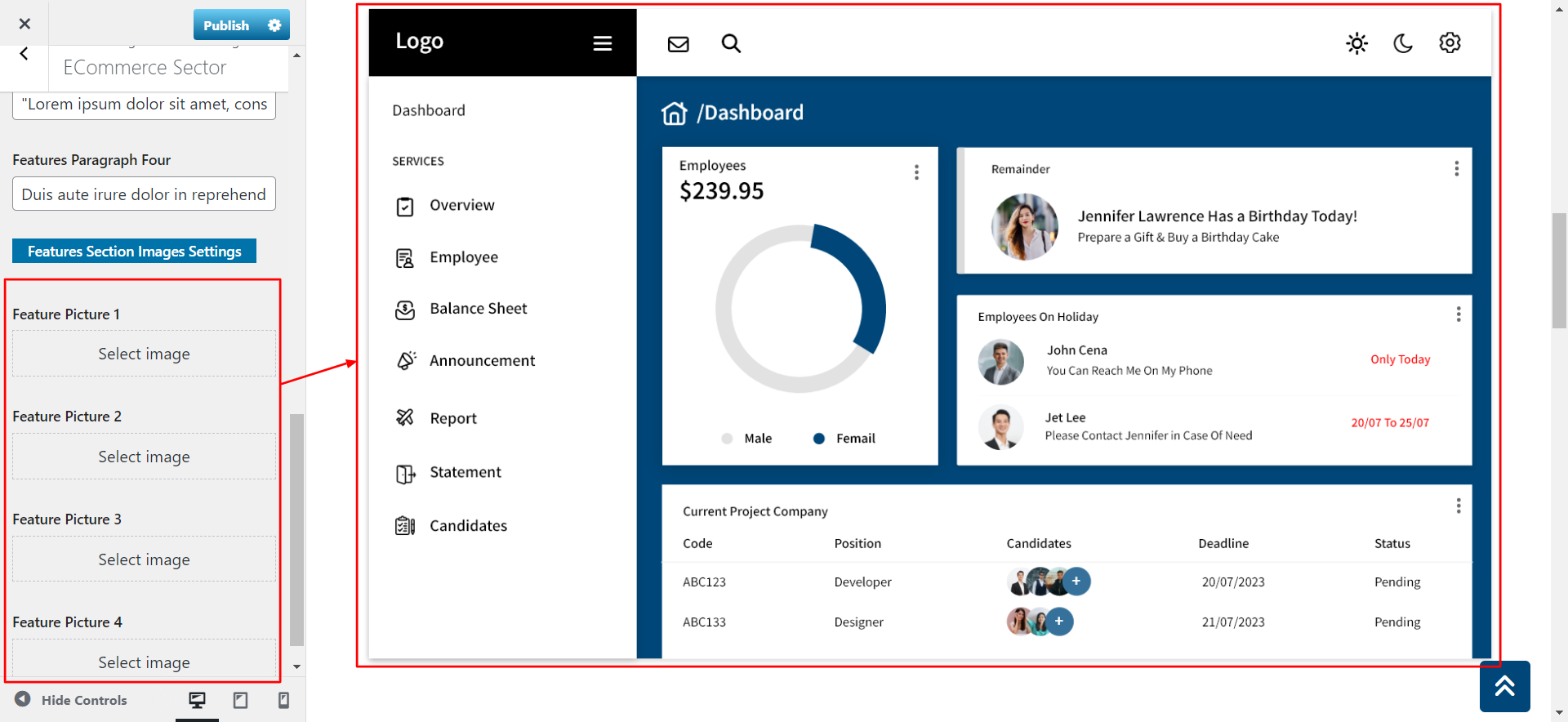
2) Final Image of Ecommerce Section.
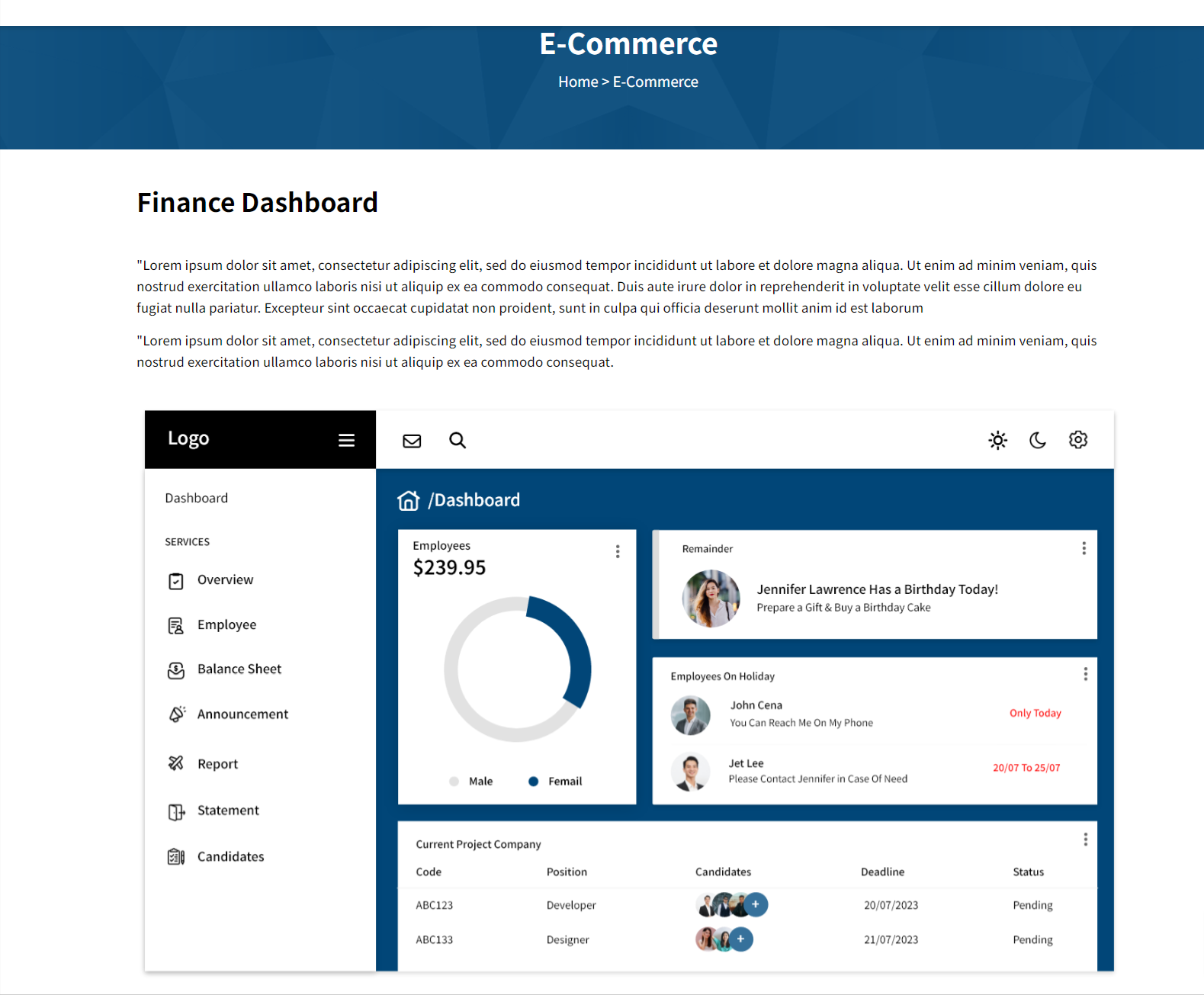
19. Setup 404 Page Settings
To proceed with the 404 Page Settings.
1) Go to Appearance >> Customize >> Theme Settings >> 404 Page Settings
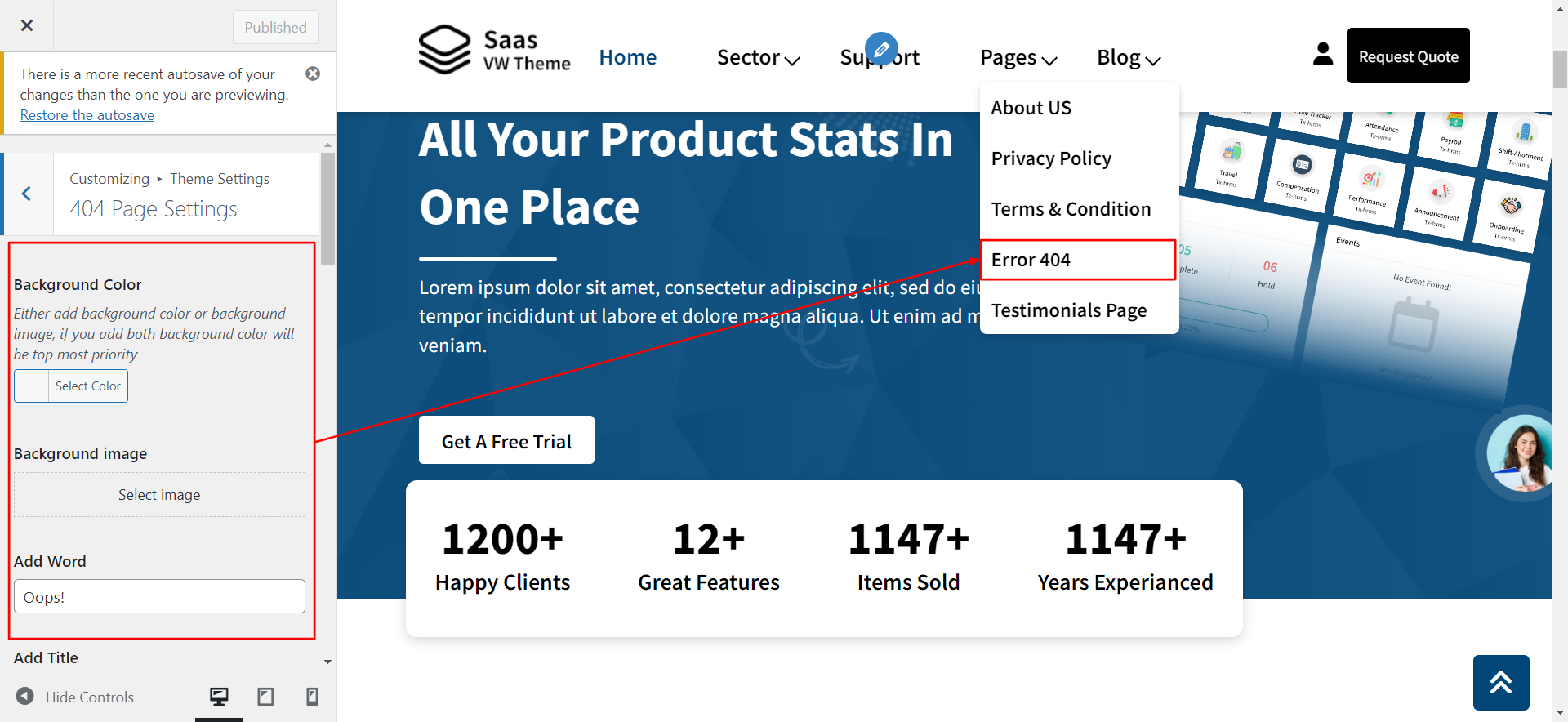
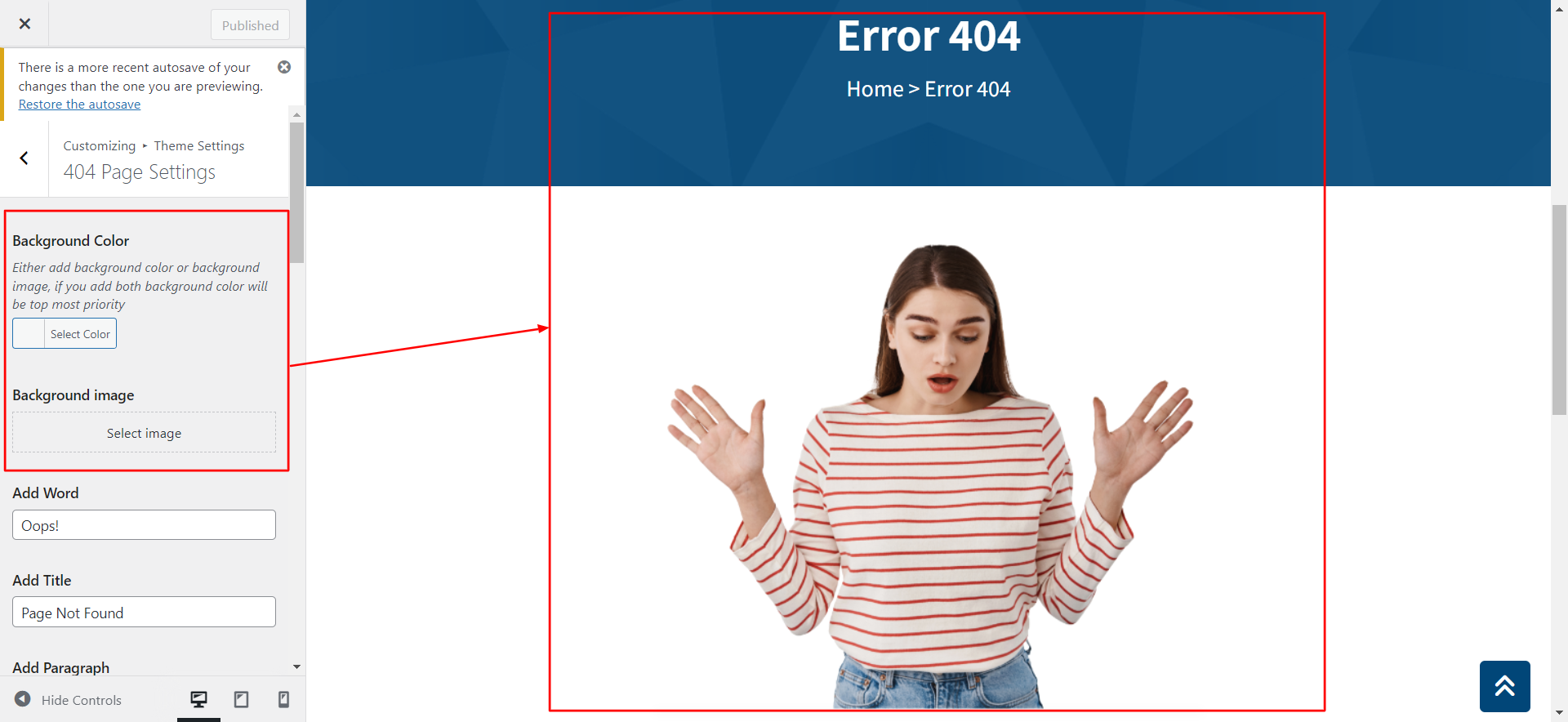
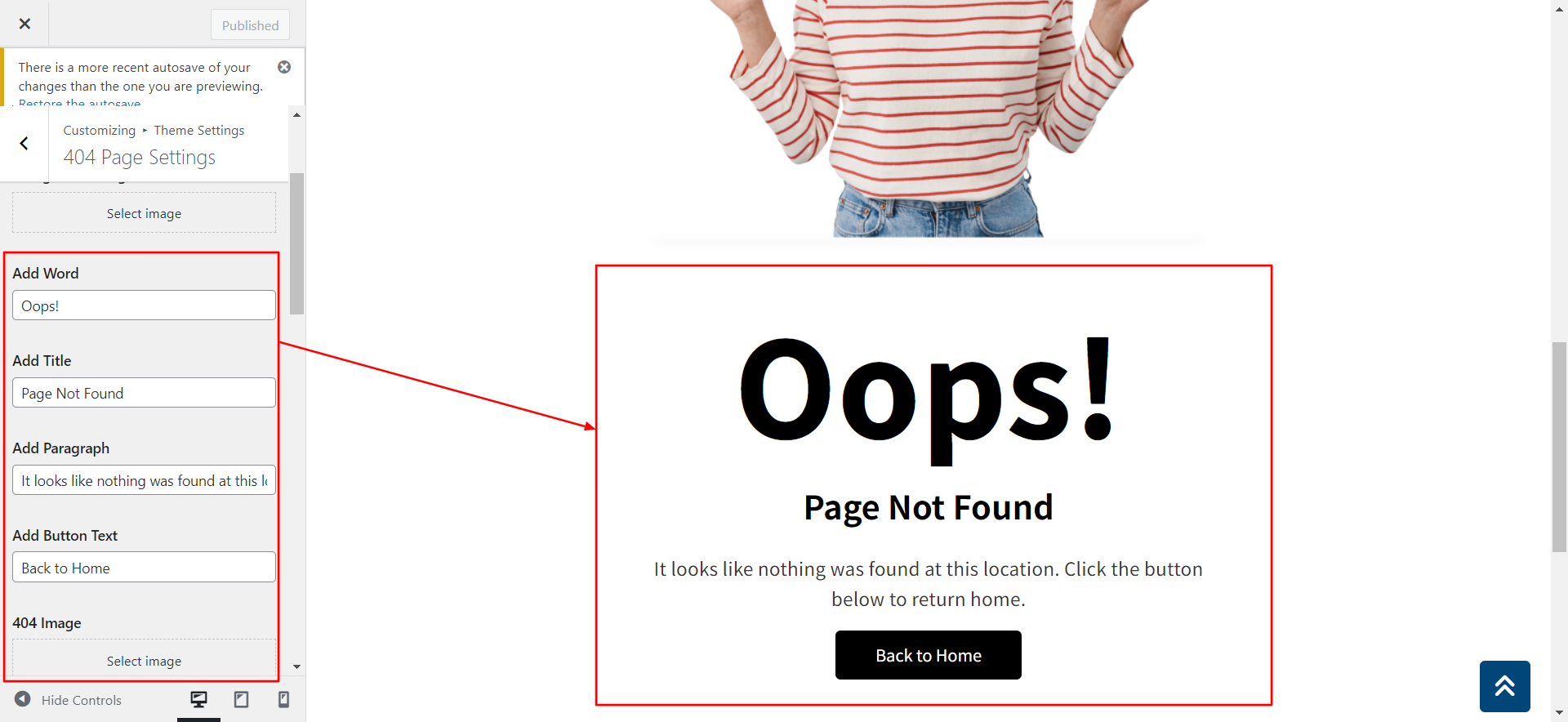
2) Final Image of 404 page Section.
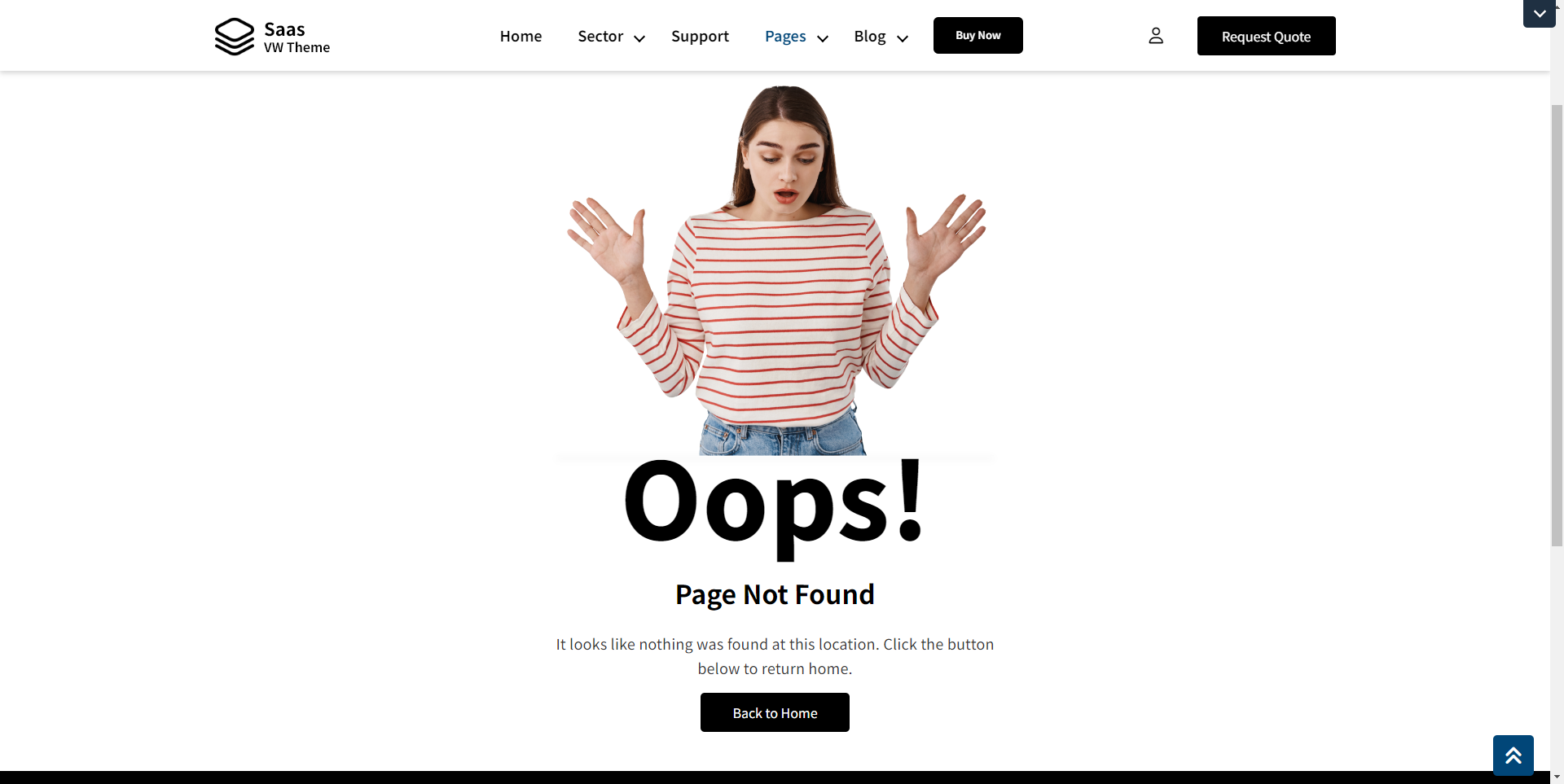
19. Setup Blog page
1) Go to Appearance >> Customize >> Theme Settings >> Resource & News Section
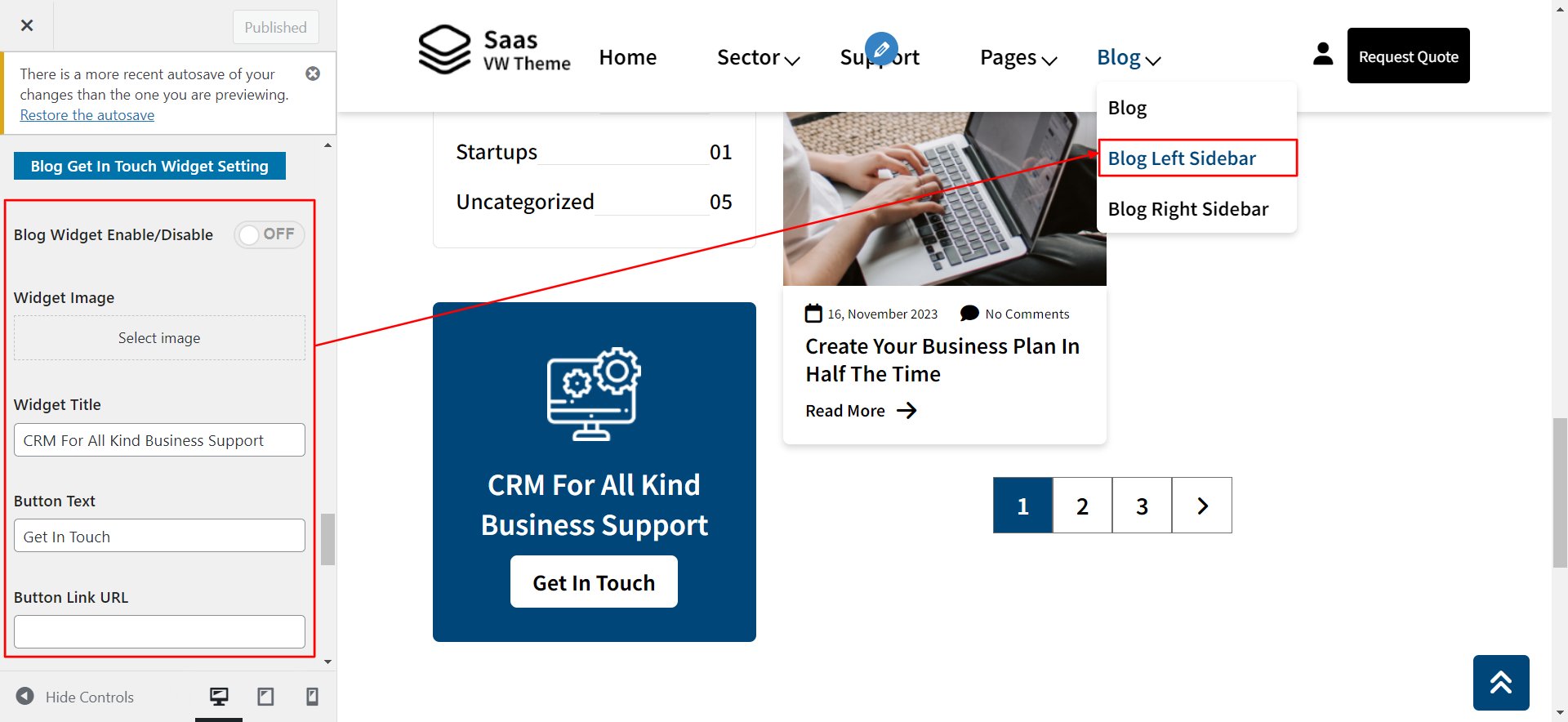
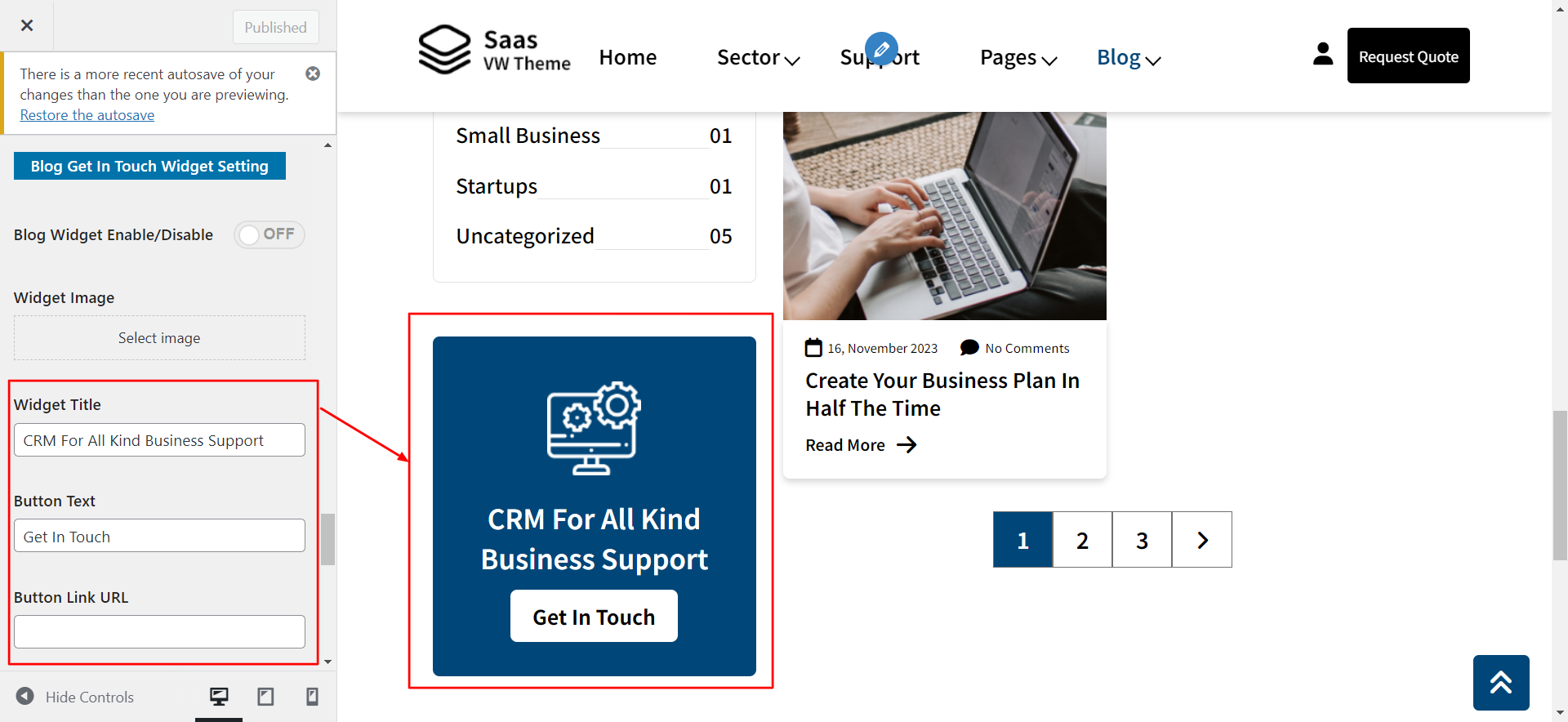
2) Final Image of Blog page Section.
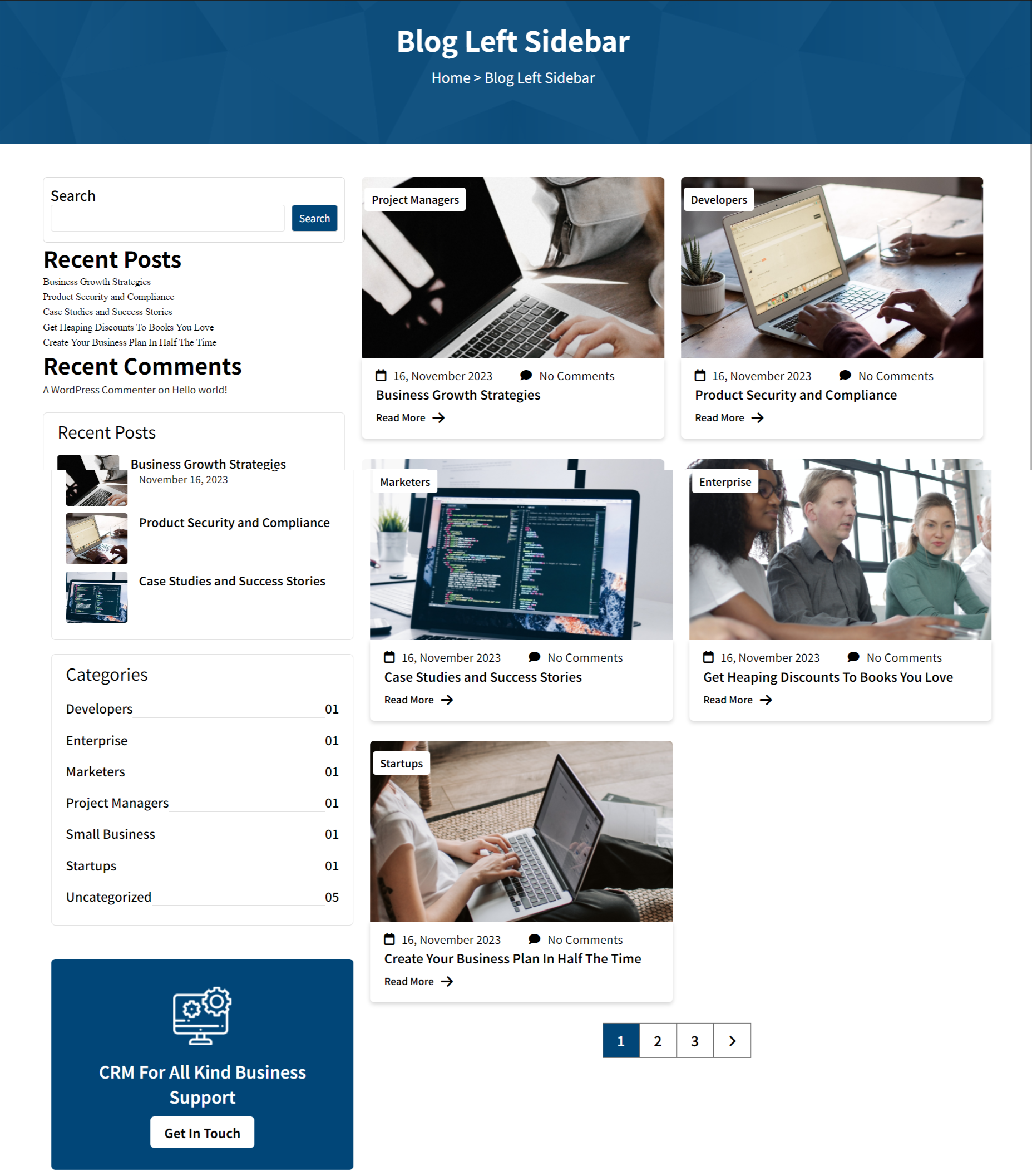
20. Setup About Us page
1) Go to Appearance >> Customize >> Theme Settings >> About us page
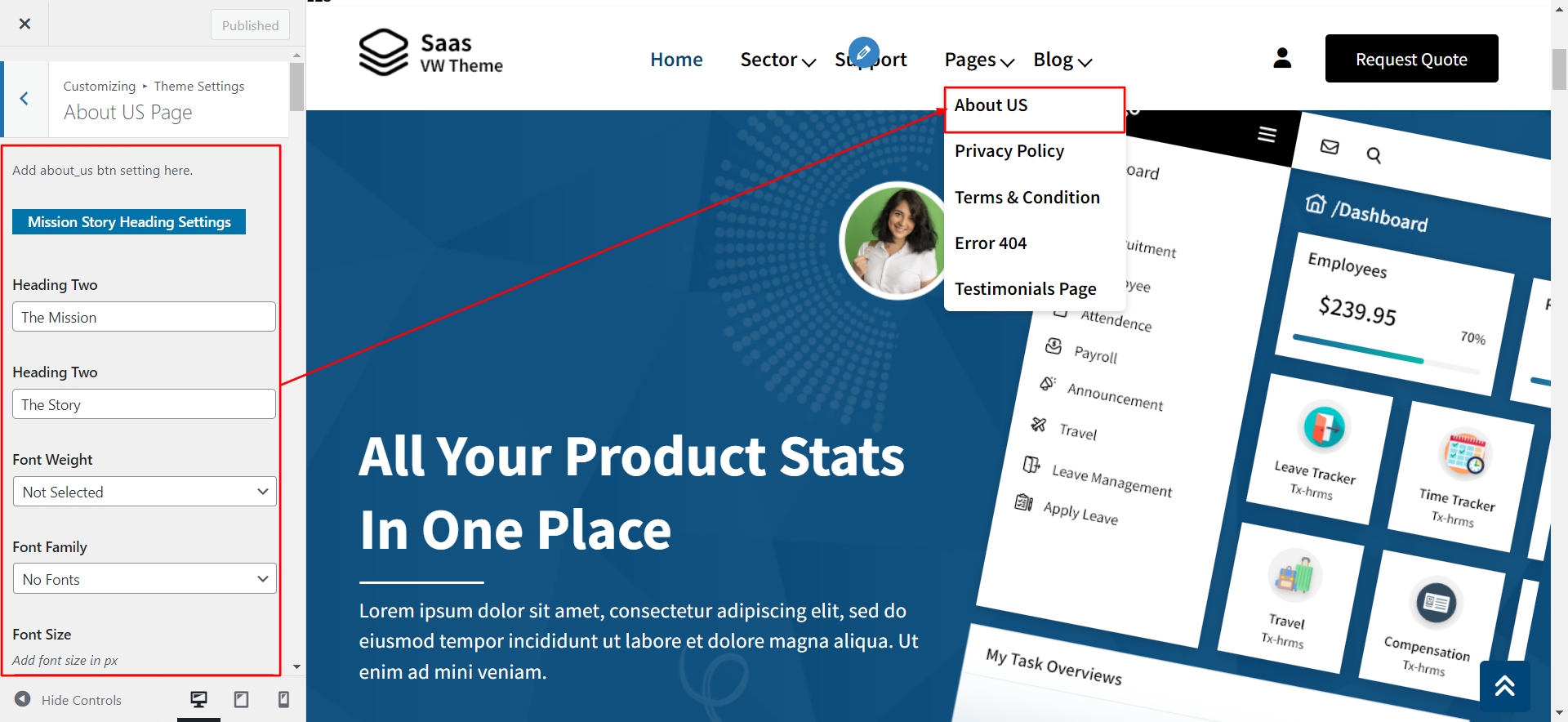
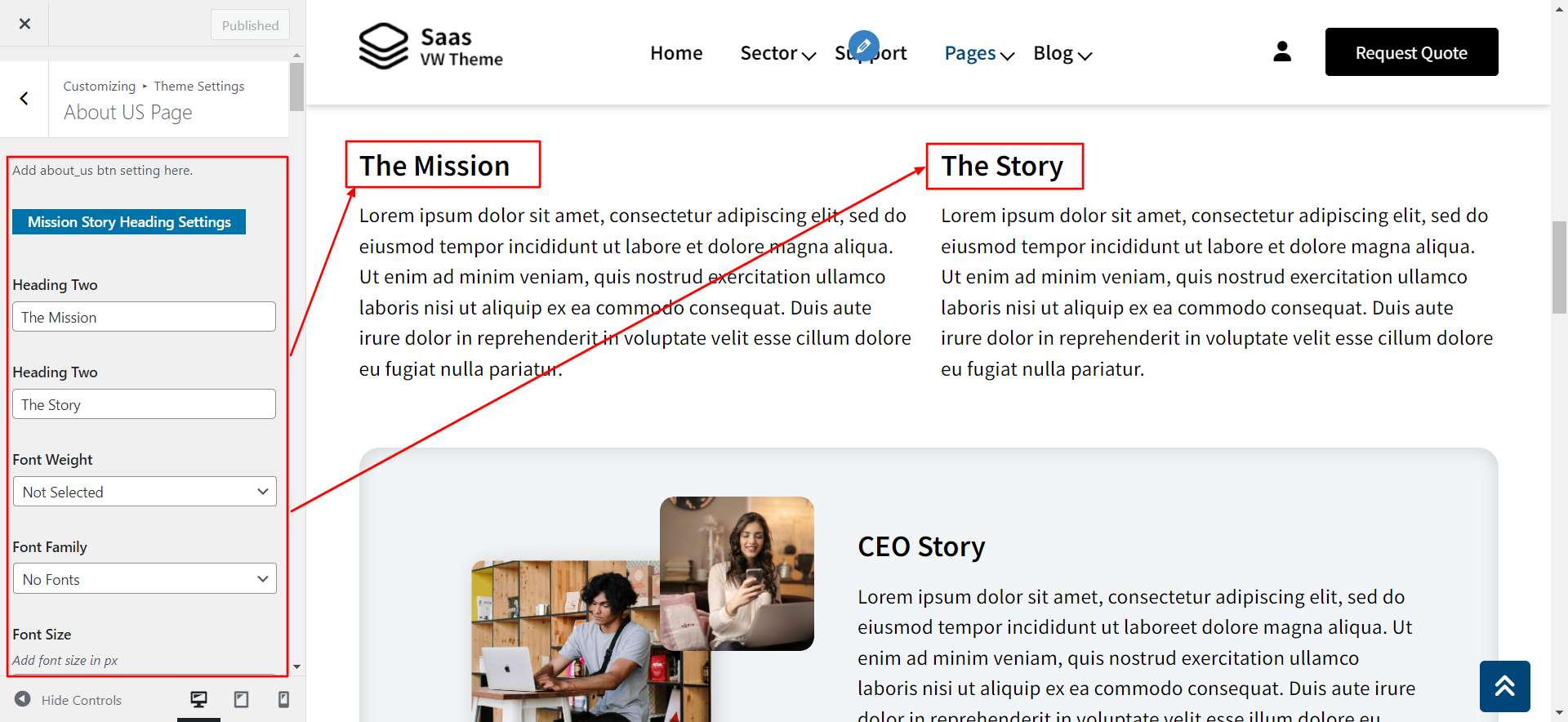
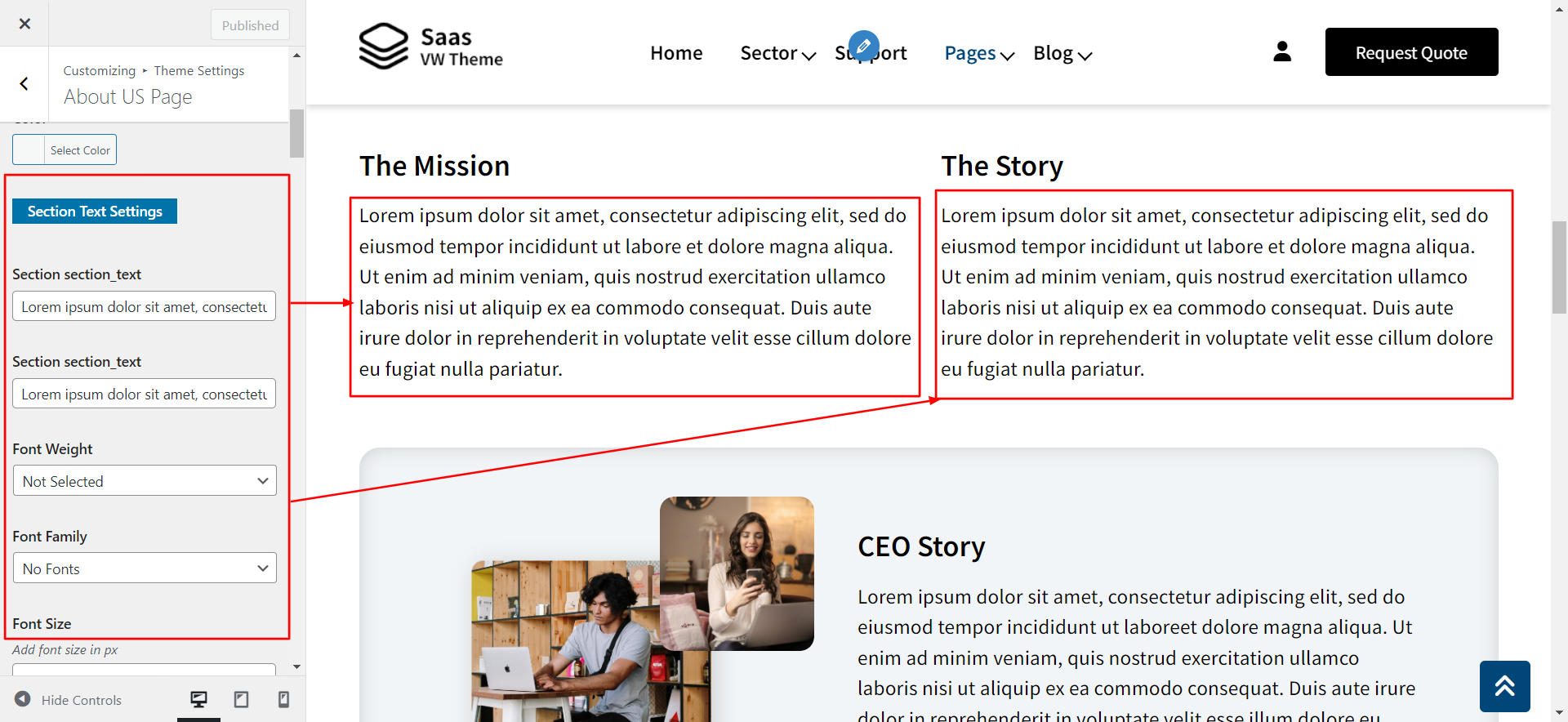
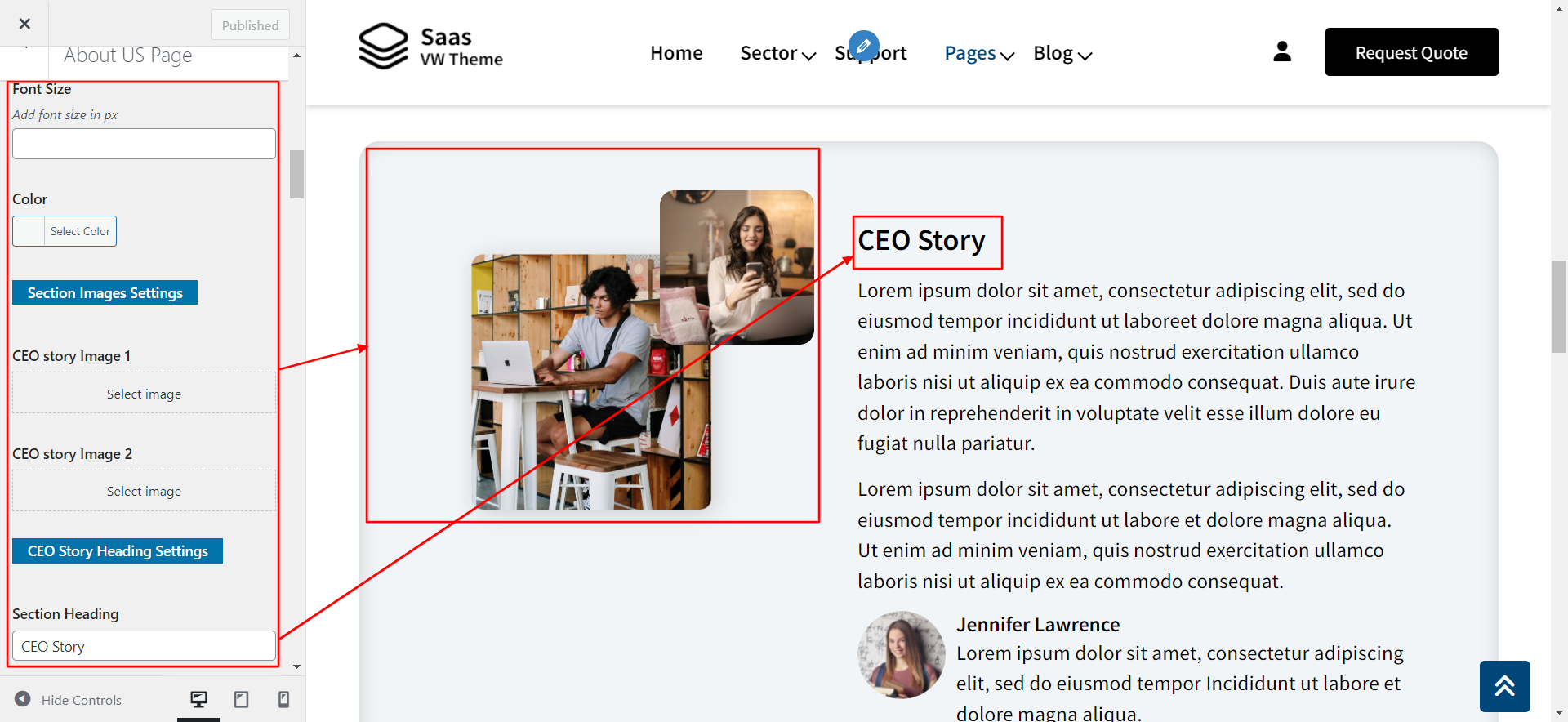
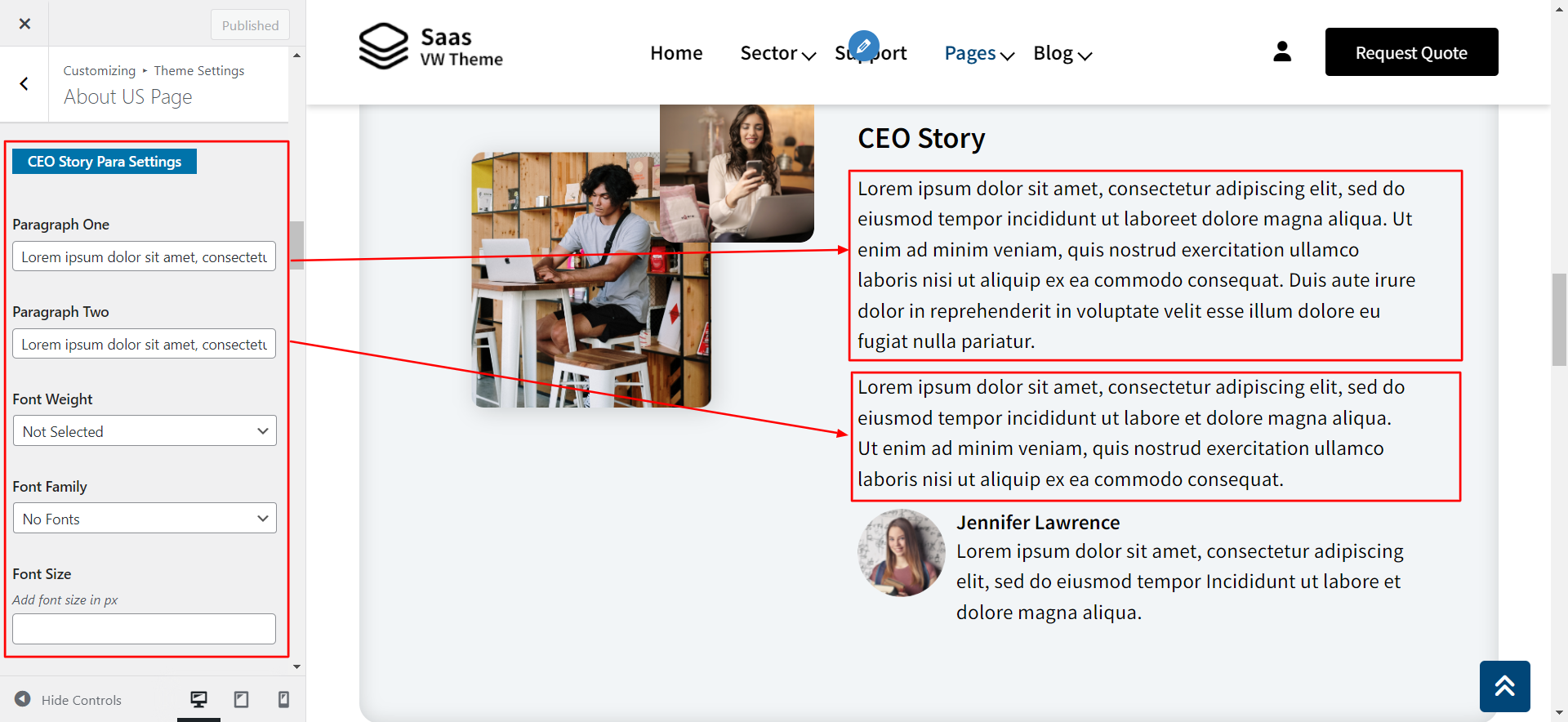
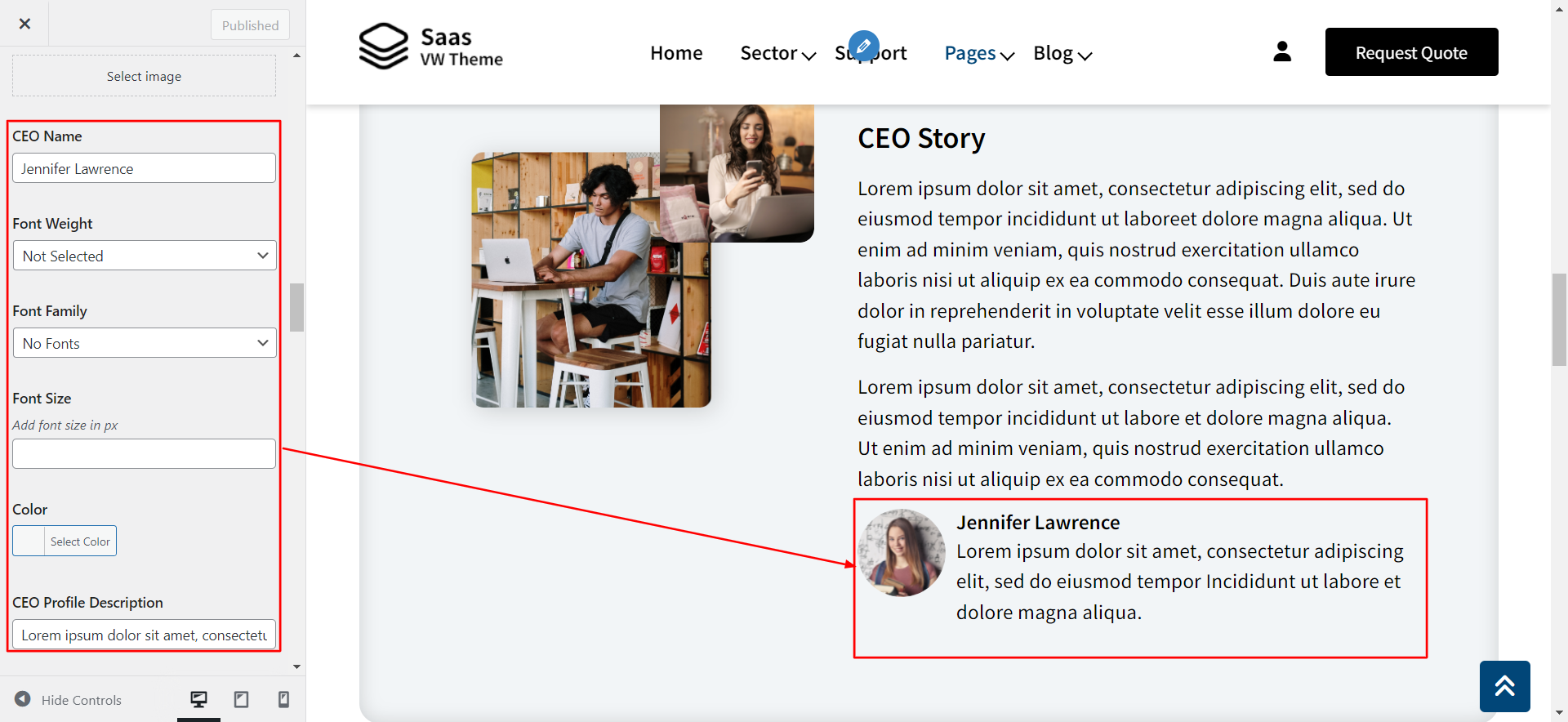
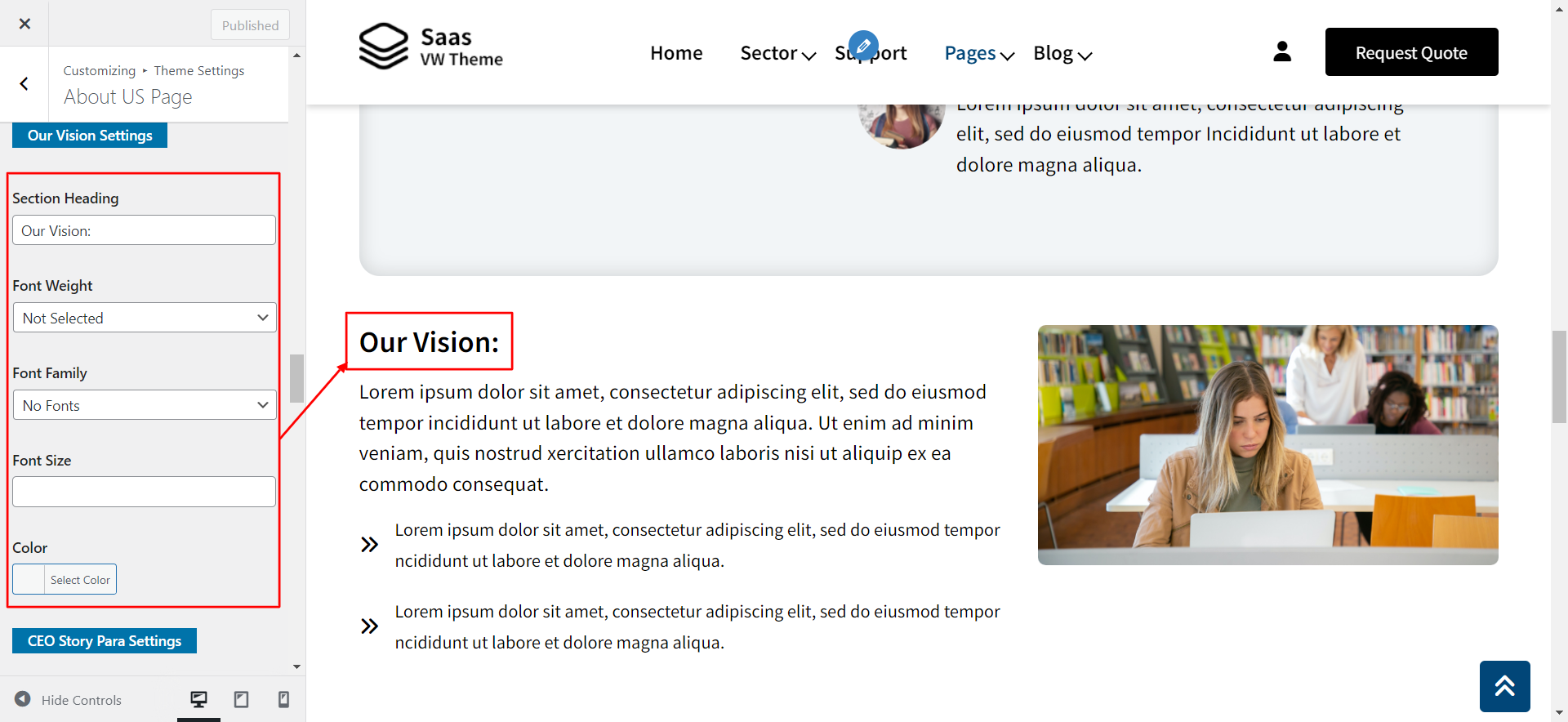
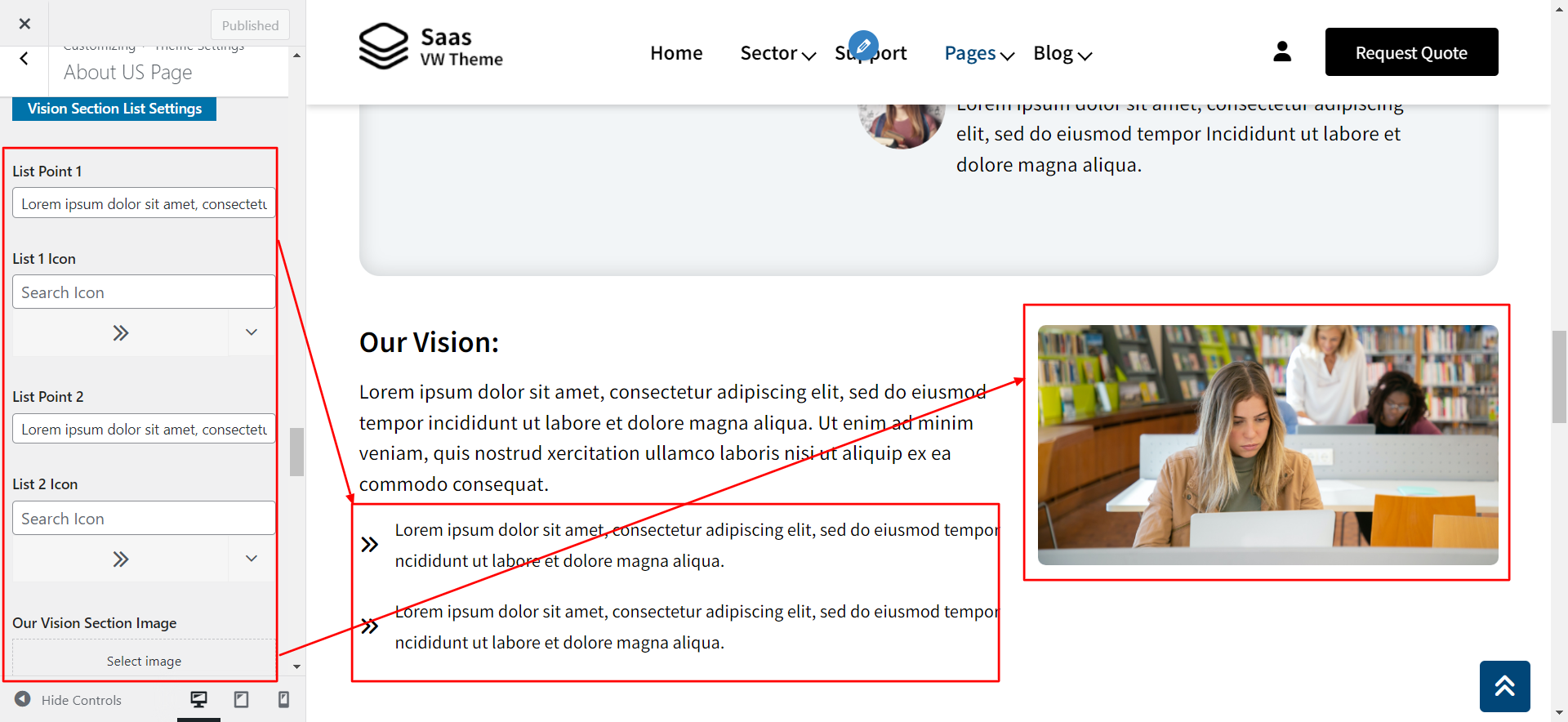
2) Final Image of About Us page.
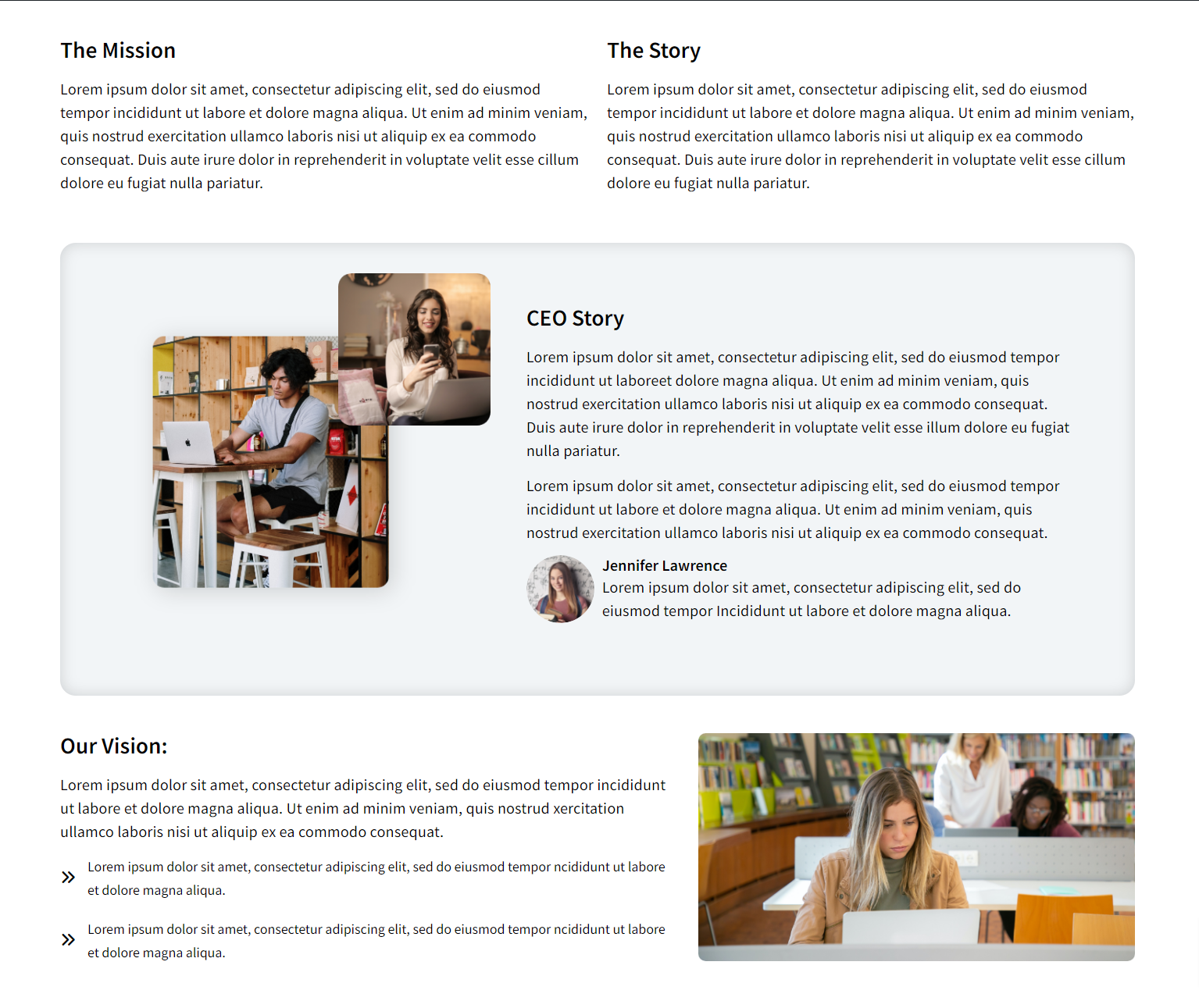
21.Support Page Settings
To Setup Contact page
1) Go to Dashboard >> Contact >> Edit
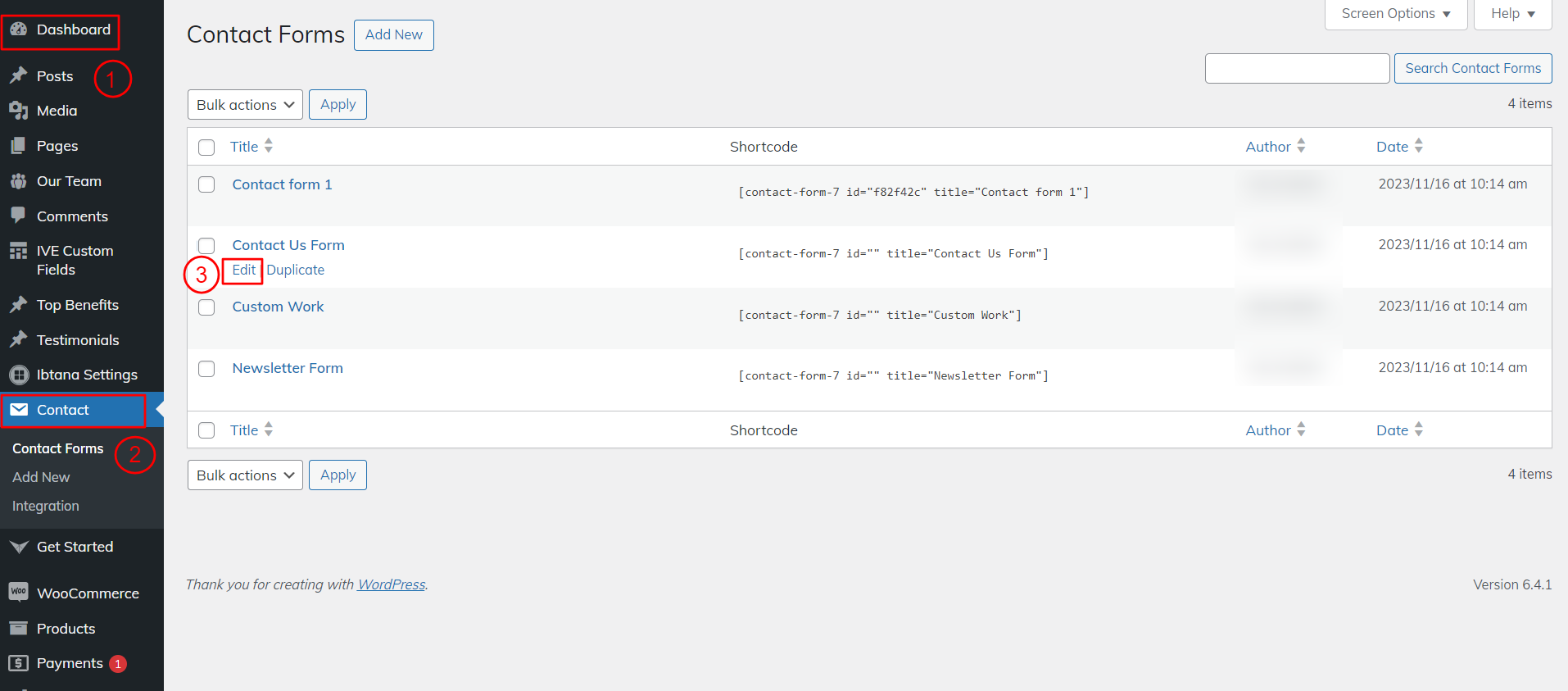
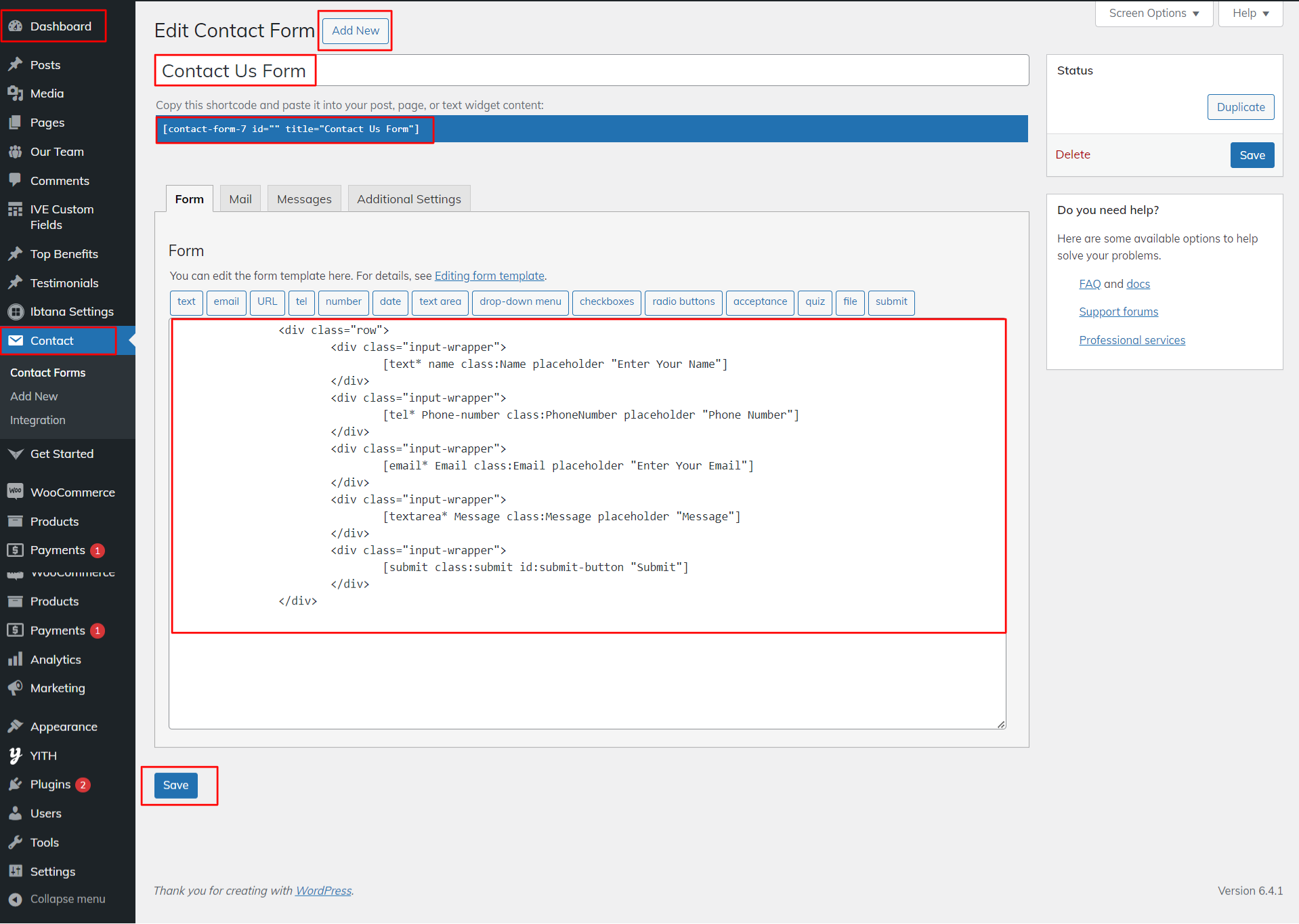
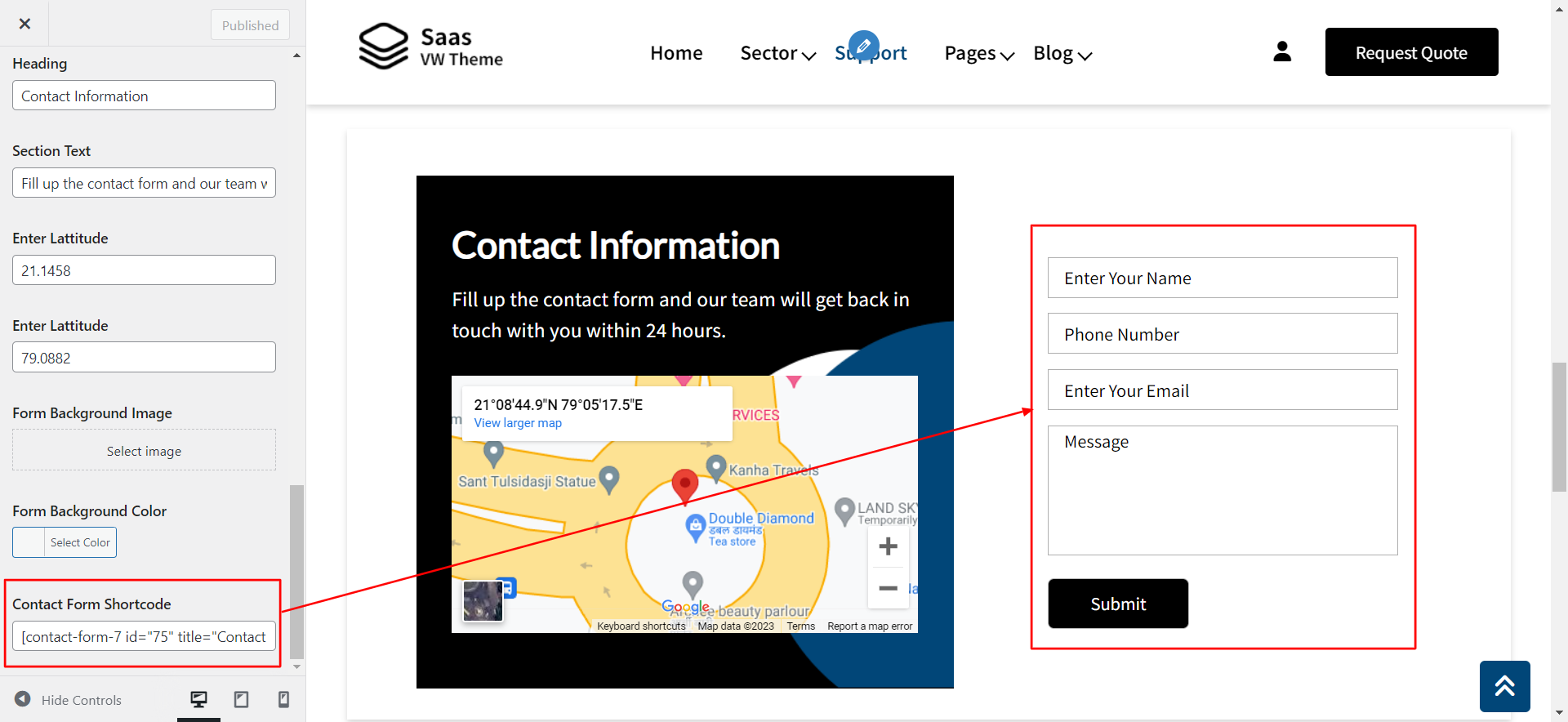
2) Go to Appearance >> Customize >> Theme Settings >> Support Page Settings
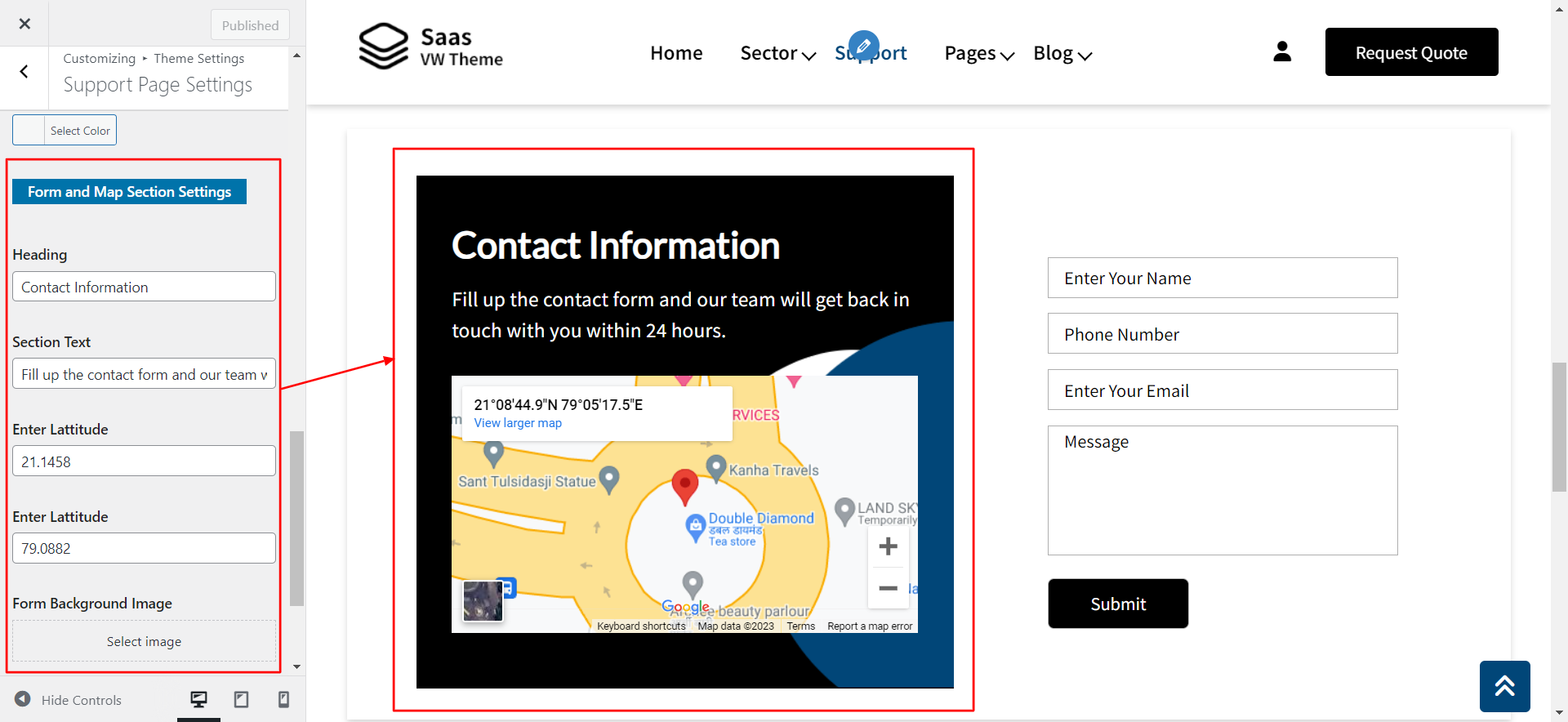
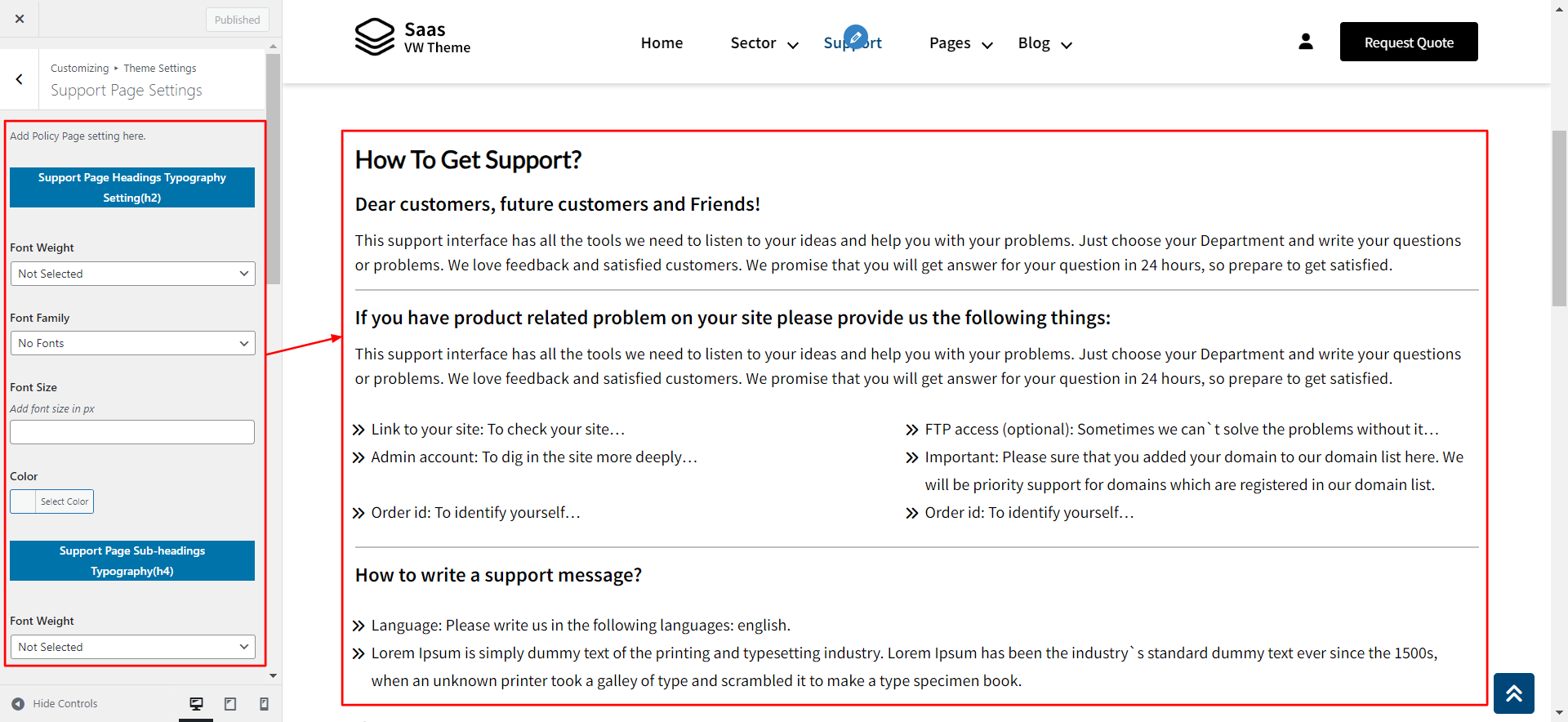
3) Final Image of Support Page Settings.
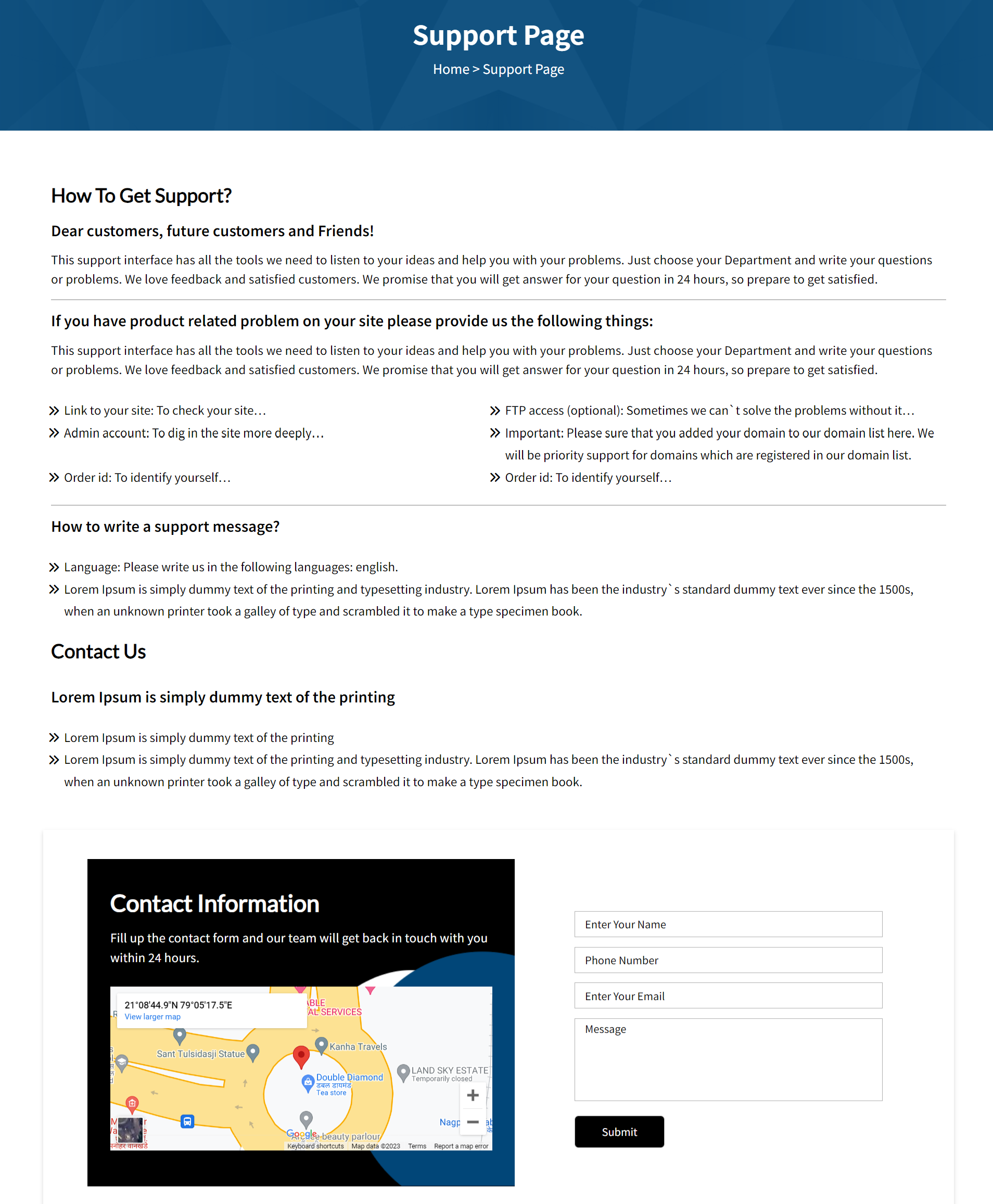
Refer video for installation of Contact form 7 Plugin:
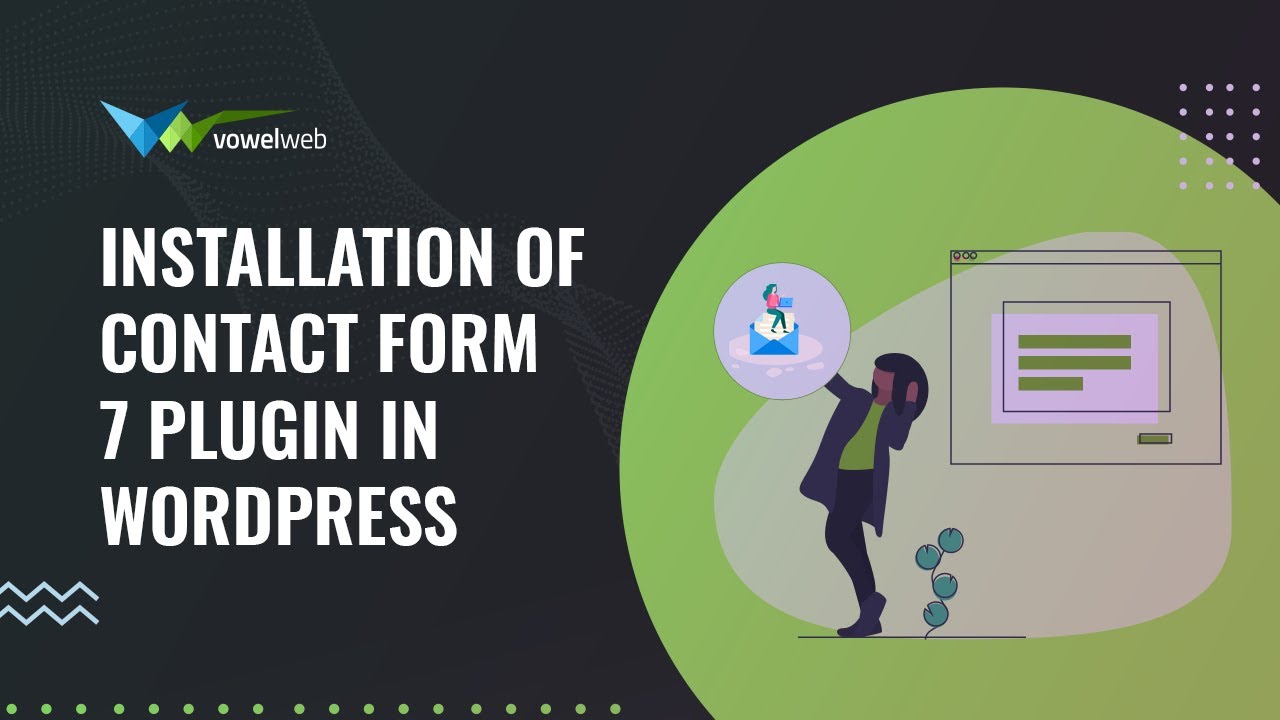
Refer video for Setup Social Icons:
Refer video for plugin activation:

Refer video for Setup Navigation Menu:
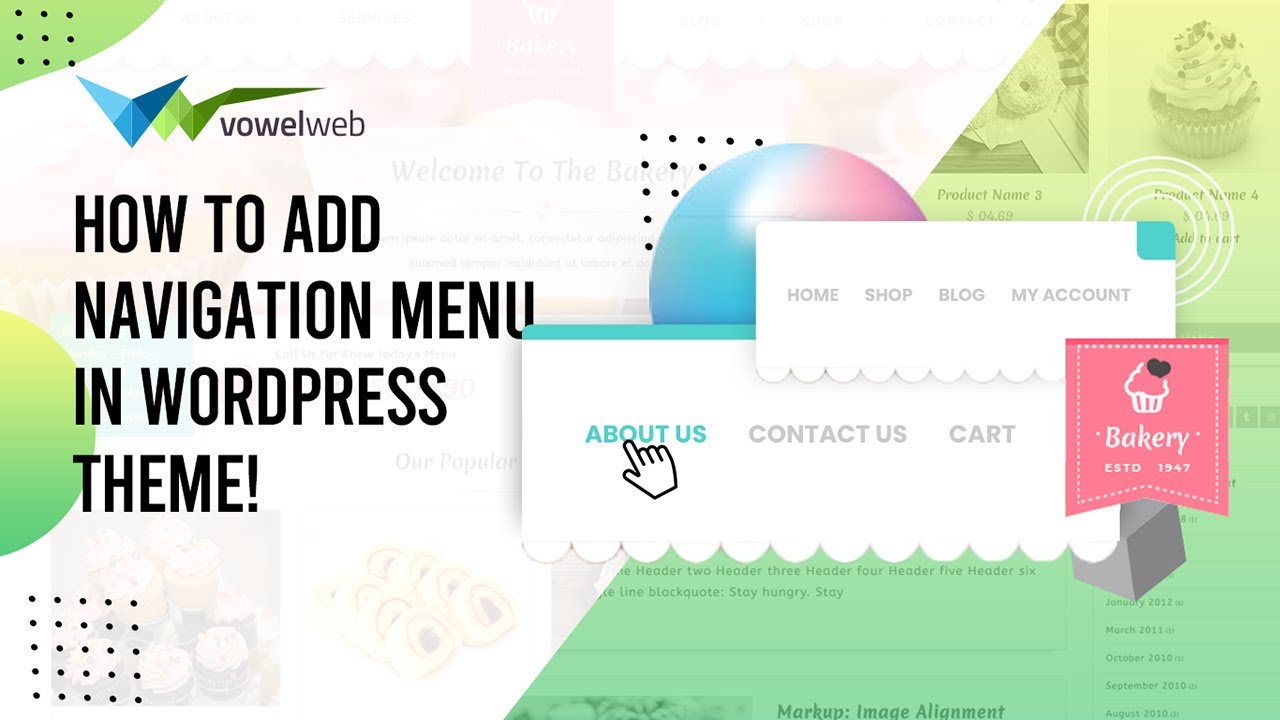
Page Templates and sidebars
Page Templates
- Default Template (the default page template with a right sidebar position)
- Blog with Full Width (a blog templates with one column without sidebar)
- Blog with Left Sidebar (a blog templates with left sidebar position)
- Blog with Right Sidebar (a blog template with right sidebar position)
- Contact (the default Contact template with no sidebar position)
- Home Page (Template to show home page content)
- Page with Left Sidebar (a page templates with left sidebar position)
- Page with Right Sidebar (a page template with right sidebar position)
Post, Categories and Post Formats
Adding category
Review the following article for more information on adding categories: http://codex.wordpress.org/Manage_Categories_SubPanel

- Log into your WordPress Administration Panel (Dashboard).
- Click the Posts tab.
- With that done, click Categories for blog posts.
- Type in the name of your new category.
- After that, click the Add New Category button.
Creating a Blog post

- Log into your WordPress Administration Panel (Dashboard).
- Click the Posts tab.
- Click the Add New tab.
- Type in your post content. For more information on adding posts, please check the following link http://codex.wordpress.org/Posts_Add_New_SubPanel.
Shortcodes
A shortcode is a powerful content building tool http://codex.wordpress.org/Shortcode. Shortcodes are easy to use. First of all, make sure that the editing mode is set to Visual.
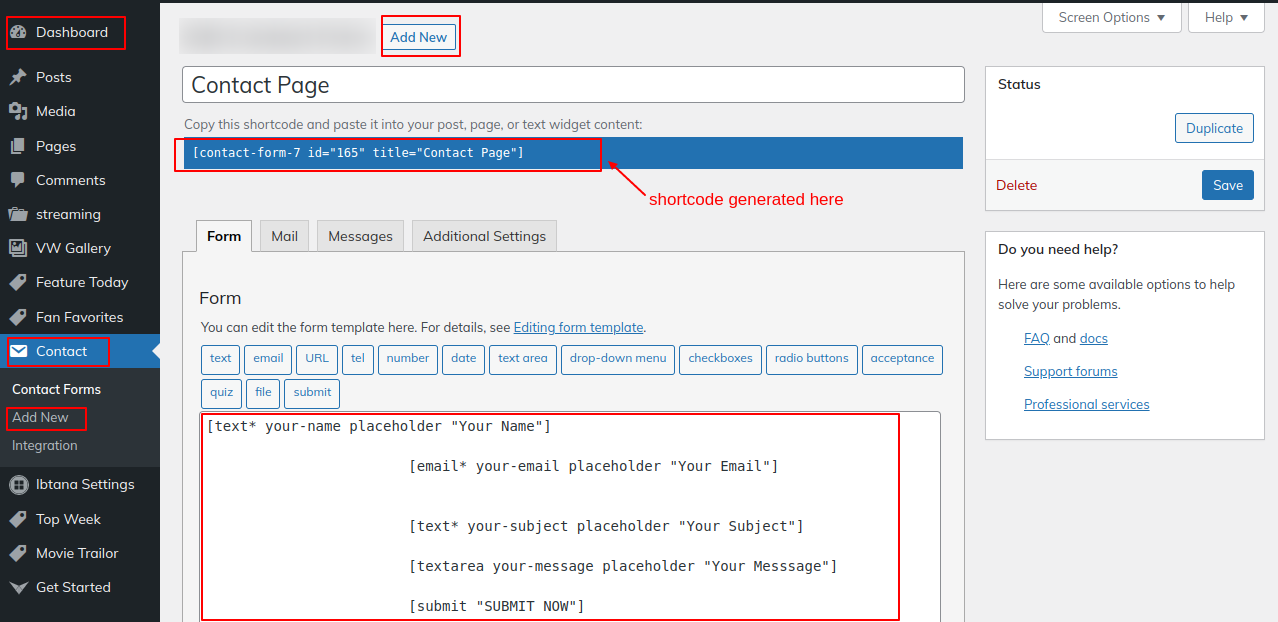
Refer video for Create Pages Using Shortcode:
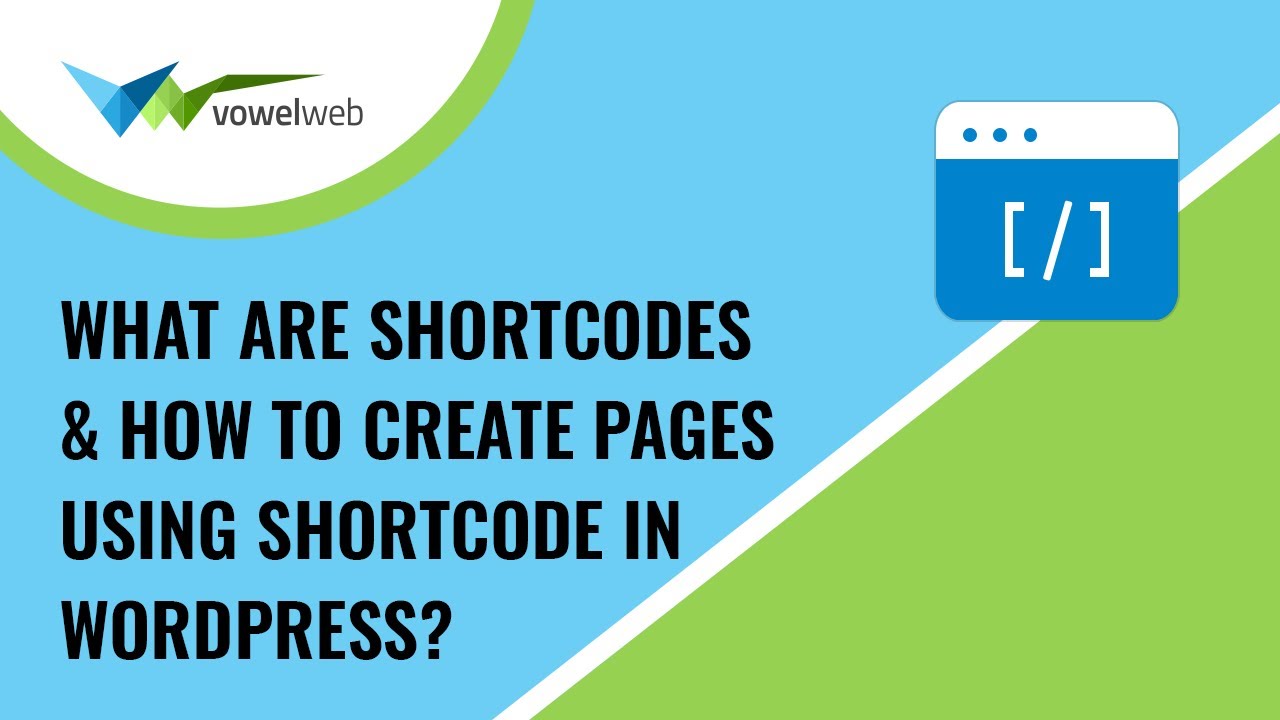
Custom Widgets
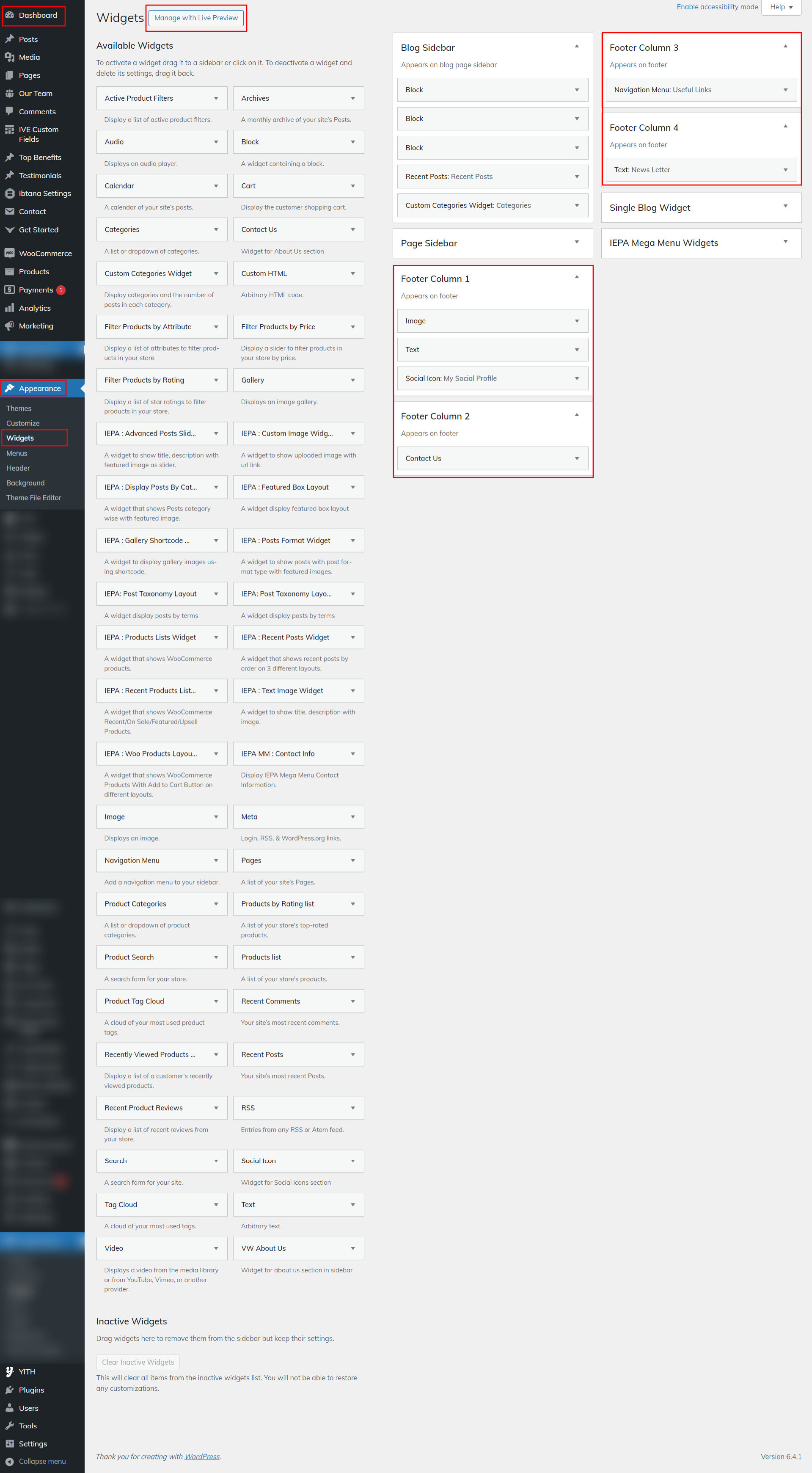
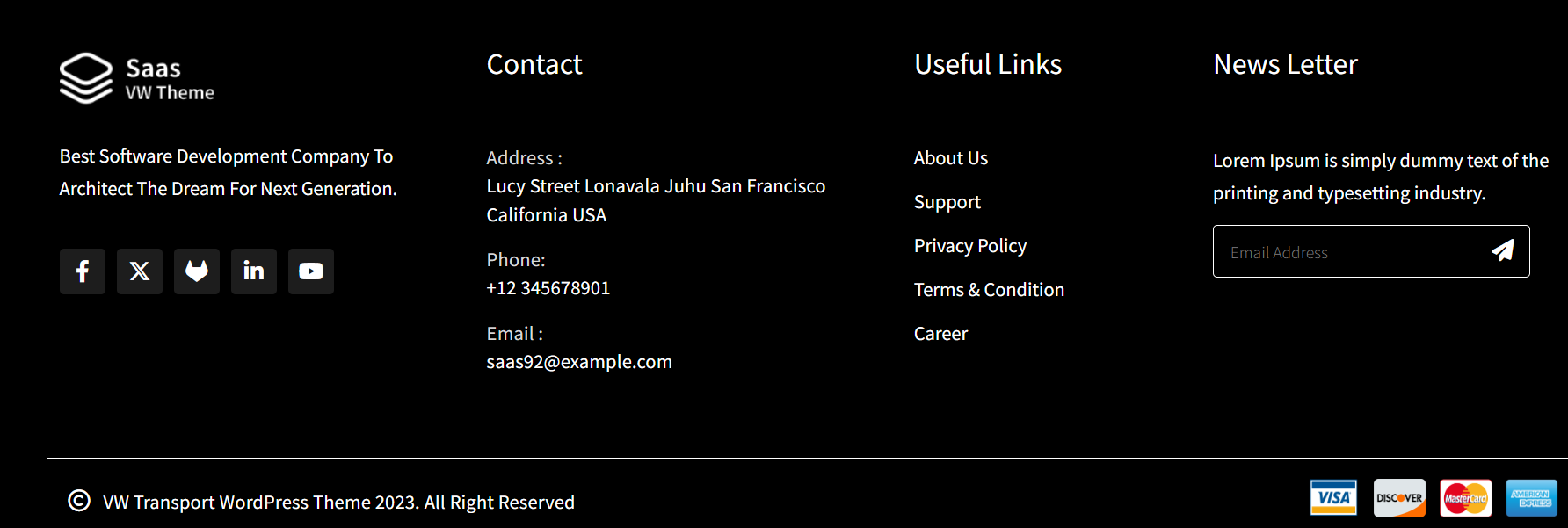
Refer video for Setup Footer:



